Series: Westerners in India.
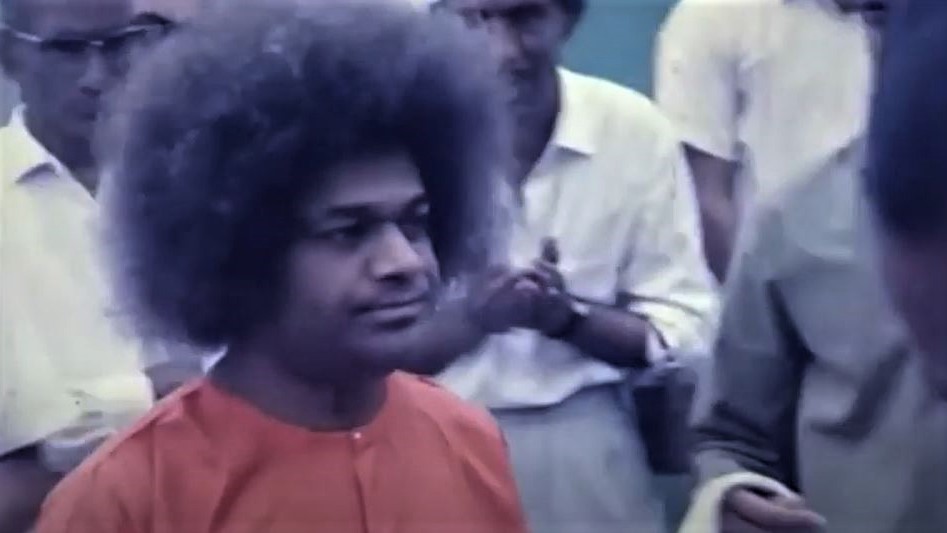

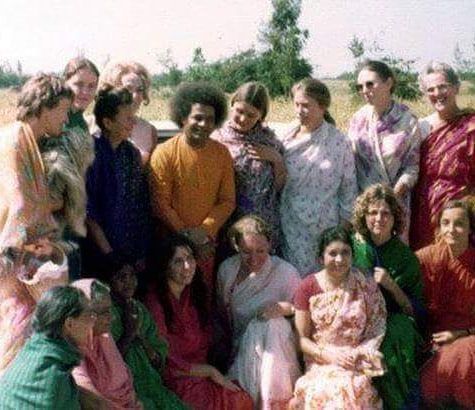
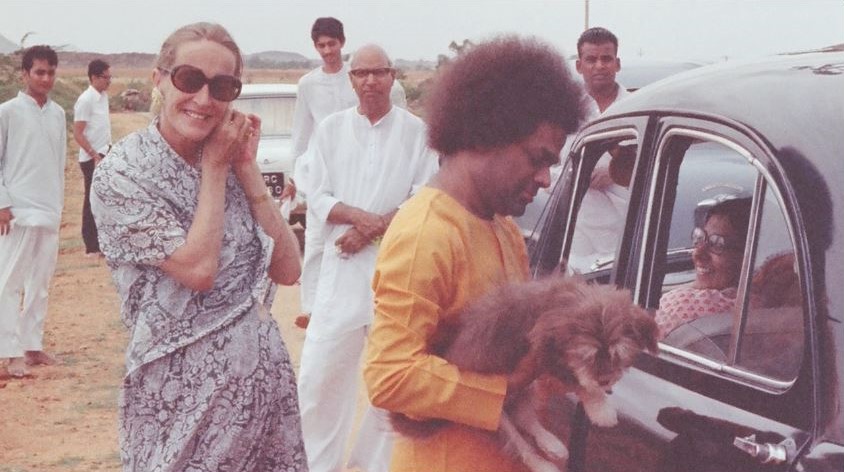
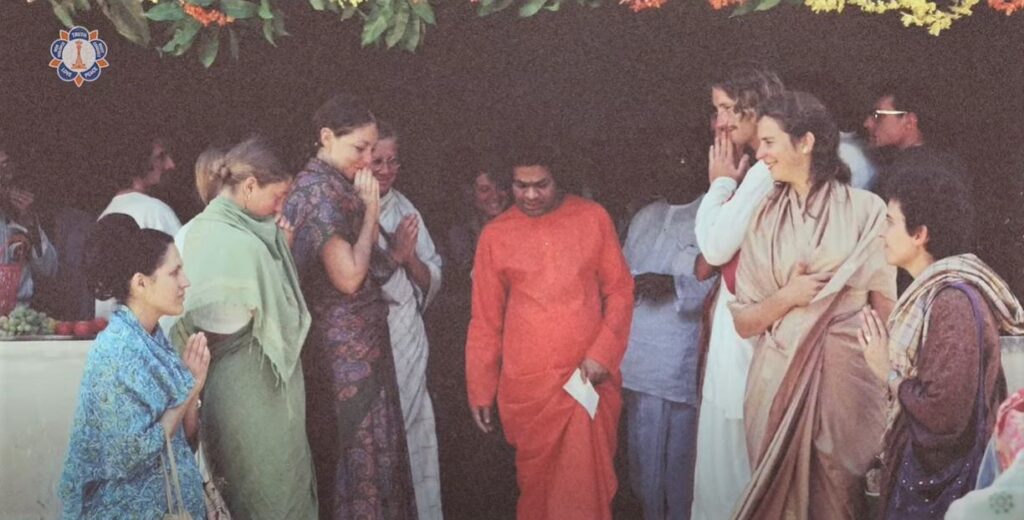
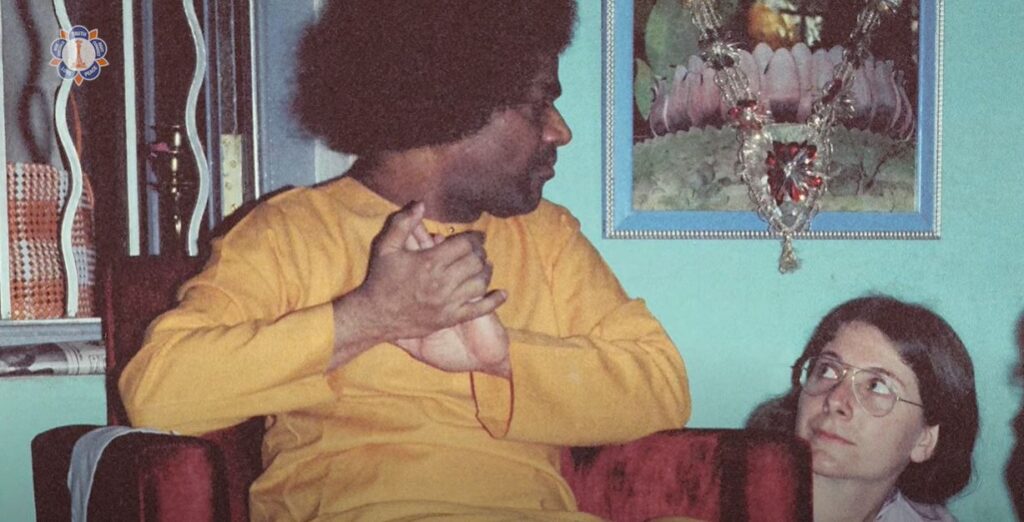
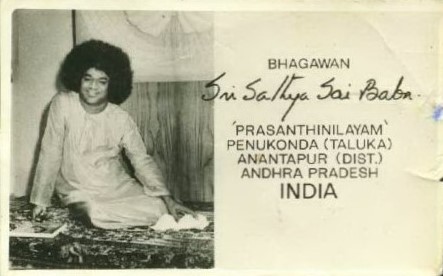
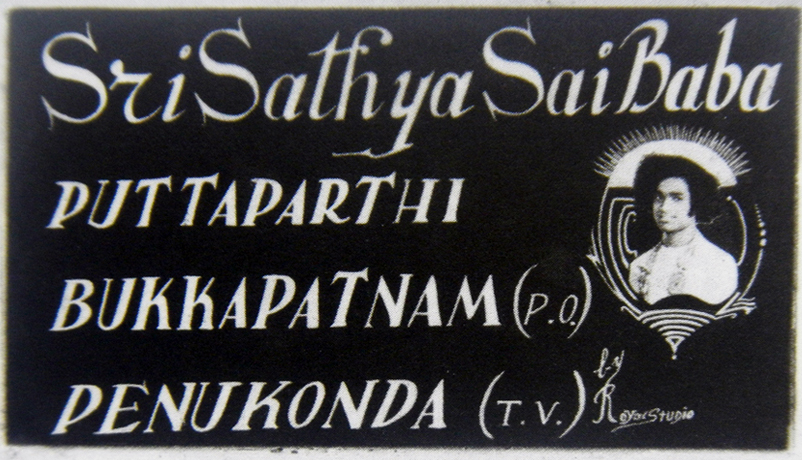
Sri Sathya Sai Baba’s (1926 – 2011) early Western devotees and visitors to the ashram from the 1930s onwards…
From The Hagiographer and the Avatar (2021) by Antonio Rigopoulos
“Foreign interest in the guru of Puttaparthi grew rapidly, especially during the period 1965-1975. Through their testimony and books, a few select Westerners, primarily from the United States, came to be co‑helpers in Biographer N. Kasturi’s endeavor of expanding the guru’s fame, paving the way to the ever‑growing “Western invasion” of Prasanthi Nilayam that would characterize the 1970s and even more so the 1980s. By the end of the 1960s, the first Sathya Sai Baba centres were established outside India, primarily in America but also in Europe and other parts of the world, and the year 1971 saw the publication of the first books about Sathya Sai Baba, written by Arnold Schulman and Howard Murphet. The 1970s witnessed a general growth in the number of foreign devotees and the Americans were no doubt the driving force of the guru’s movement.”
In the forward to New Lives 54 (Interviews with Westerners on their search for spiritual fulfilment in India), compiler Malcolm Tillis writes – “During the eleven years I lived in India, from 1973 to 1984 as an initiate of Sant Kirpal Singh, I was often lent or sent books about other Westerners who had also come to spend extended time in India. But they were often about Westerners who had been drawn onto the guru-trail in search of an evolved being but who stumbled onto one that leads innocent victims into the hungry jaws of a white-bearded, impressively-robed monster who leaves them more spiritually – and often more materially – bankrupt than before. These accounts would often be amusing, sometimes they had reason to be bitter, but were made all the more readable by being slanted, prejudiced or misinformed. They made me wonder why hardly any serious in-depth studies had appeared dealing with the many Westerners who have taken the plunge, left the bright lights of home and are now living fulfilled lives in this vast, fascinating country. There is no shortage of books on India’s host of saints, seers and gurus, but what about their Western disciples? Why has so little appeared by them, or about their achievements? They may have taken to the simple life, but surely they are not all under vows of silence?….”
The experiences with Sathya Sai Baba are not always pleasant for the recipient. All genuine gurus do the unexpected, to shock and transform people: Neem Kaloli Baba, Nityananda… Even the ‘gentle’ sage of Arunachala, Ramana Maharshi, set up ashram builder Annamalai Swami to be in conflict with the ashram administrative head and told him not to say that he, Ramana, had told him to go ahead with a building project against the official administration’s plan.
American John Moffitt
American Anne Green (known as Janni, who later changed her name to Om) 1970
American Tal Brooke February 1970 Prasanthi Nilayam
Richard Bock’s fiancé Janet attends Shivaratri celebrations at Prasanthi Nilayam in 1970
John Lennon and Yoko Ono visited the Dharmakshetra Ashram in Bombay in 1970?, Prasanthi Nilayam in late 1970 and again sometime in late 1974
American Michele Malvin (married in 1977 Kaplowitz) arrives for Shivaratri, 1st March 1970 Prasanthi Nilayam
Hans arrived for Shivatratri 1970
Americans VJ Supera (Marsha) and sister India Supera arrived for Shivaratri, 6th March 1970
German Beno Wiesner arrived for Shivaratri 1970 and stayed for 2 years.
American Bruce Bradbury April 1970
American Robert Conger (Hanuman) April 1970 Whitefield
American artist Wendel Field 1970
British Martin Stamp 1970
American Dave Walker 1970 stayed for one year
American Gil Locks 1970
Zolt and Sandy 1970
Peter 1970
Jai Devi 1970
Tony Milo 1970 ?
Canadians Kerry and Janet McLuhan 1970 ?
Englishman Anthony from Malta 1970 ?
American Howard Levin 5th June 1970 Whitefield
American John Grimes 1971 Prasanthi Nilayam
American Margaret Garland 1971 Whitefield
American Heidi King January 1971 Whitefield
Americans Gale Molloy and her sister Nora Oswald and husband David Oswald September 1971 Prasanthi Nilayam
American Marc Schles 1971
Americans Sharon and Gary Purcell April 1971
From Honolulu, American architect Steve W.G. Au and his wife Irene Botelho Au 1971 Whitefield
American Psychologist Phil Gosselin April 1971 Whitefield (Gosselin’s sister and her husband would follow later on, and his best friend arrived in January 1972)
Richard Alpert (Ram Dass) 1971 Whitefield
American music group Lightstorm (Johnima and Kalassu Wintergate, Silver and Sui-San) 1971 Whitefield
American Jermain Duncan with her husband early December 1971
Americans Cathy and Richard Bayer at a private residence in Madras, Christmas 1971
German Joachim Peters 1972
American Andrea Schles 1972 for 4 months, 1973 second trip
American Psychiatrist Samuel Sandweiss at a devotees apartment on the outskirts of Bombay in May 1972. His Wife Sharon and four daughters would follow in the later years
American Della Meridith June 1972 Prasanthi Nilayam
American Michael J. Hollander August 1972 Prasanthi Nilayam
Venezuelan Arlette Meyer 1972
Mexicans Dr Luis Muniz and his wife Gail 1972
American Lila Youngs 1972 Prasanthi Nilayam
Scot Bill Aitken at his partner’s (The Maharani Prithwi Bir Kaur of Jind – The Phulkian Dynasty) Delhi house in 1972
American Peter Mt. Shasta Indian Fall 1972 Prasanthi Nilayam
Keith and Muriel Moore, John-Roger, Phillip Anthony, Wesley, Michael Sun, Bob Tackney, Beverly Terrell, Muriel J. Engle (1968, Prasanthi Nilayam), Mark Holmes, Tom Johnson, Jeri and Bob Silver October 1972
American Roy Eugene Davis 1972 Whitefield
New Zealander Mary Garden 1973 Whitefield
Americans Sidney and Phyllis Krystal January 1973 Whitefield
American Swami Kriyananda January 1973 Whitefield
American Leslie Bouche 1973
American Camille Svensson 1973
Americans Elaine and David Gries June 1973 Whitefield
American businessman Isaac Tigrett 1973 Whitefield
German Jew Al Drucker 1973 Prasanthi Nilayam
American Don Heath 1973
Icelandic academic, psychologist and psi researcher Erlandur Haraldsson and Latvian born Dr Karlis Osis 1973 Prasanthi Nilayam
Americans Franklin Albert Jones (Adi Da) and Gerald Sheinfeld 1973
Australian surfer Peter Rae Whitefield 1973
American Elda Hartley Nava Bharat Gurukulam, Rajahmundry December 1973/January 1974
Americans Bob and Barbara Bozzani February 1974 Prasanthi Nilayam
American Esther Howarth February 1974 Prasanthi Nilayam
American Wilma Bronkey February 1974 Prasanthi Nilayam
American Larry Smith 1974?
Bolivian Romero Sotello Murillo 1974
Author Paul William Roberts September 1974 Prasanthi Nilayam
American brothers Michael and Brian Steely arrive for Dasara 1974 Prasanthi Nilayam
American Rita Daniele 1974
Raja Yoga teacher Helene Vreeland was among the first Westerners to travel to India to meet Sathya Sai Baba 1970s
American Creta Schiermann 1970s
American Lee Hewlett 1975
Americans Dr Michael and Gloria Goldstein 1975
American John Moore January 1975
American Kitty February 1975
American Artesia August 1975
New Zealanders May, Dick and Verity 16th October, 1975 Prasanthi Nilayam
German Adi von Harder 6th November 1975 Prasanthi Nilayam
American Rosie 1976 Whitefield
American Leni Matlin January 1976 Whitefield
American Jack Lenchiner April 1976 Whitefield
American Gary Yoder May 1976 Dharmakshetra for a week and then on to Ootacamund
Hungarian born Suzie Parvati Reeves 1st September 1976 Prasanthi Nilayam
American Robert Daniele 1976
Italians Antonio and Sylvie Craxi 1976 Whitefield
American Patricia Kelly 1976
Ravi Shankar and George Harrison December 1976 at the Dharmakshetra Ashram in Bombay
Ida Marion St. John from California and Gita Orescan from Germany
American Donald Schnell Indian Summer 1978
English musician Dana Gillespie 1978
American Patricia Wing 1978
American Dr Dennis Gersten 1978
American Dr Allen (Al) Levy 1978
American attorney Robert Baskin mid February 1978 and stayed until the end of 1979
Canadian musician Walter Maynard Ferguson and his American wife Floralu (Flo) Ferguson (Farmer) April/May 1978 Whitefield
American Professor Frank Baranowski July 1978 Whitefield
American Jack Hawley 1978 Whitefield and stayed for a month
American Susan Salguero 1978
American Homer Youngs 1978
American Lila Taylor 1978 Prasanthi Nilayam
Danes Hagen and Tata Hasselbalch, Preben Plum December 1978 Prasanthi Nilayam
American Sylvia Alden 19th December 1978 Prasanthi Nilayam
Art and Gloria Clokey January 1979 Whitefield
Americans Johnathan and Rose Roof January 1979
Americans Robert and Rita Bruce Easter 1979 Prasanthi Nilayam
American Dixie Cooper August 1979 Whitefield
American Bruce Bouche 1979 Prasanthi Nilayam and stayed for 6 months on this first trip
Argentines Ananda Giri, Monica Zocolosky, Marta Basan, and group 1979 Prasanthi Nilayam
American Richard A. Nelson 1979
American yoga teacher Larry Payne 1979/1980
British Peggy Mason and Ron Laing 1980
American Artist Joan Brown and Michael Hebel June 1980 Whitefield
American Tom and Kay Scoville and family 1981
Lucas and Jean Ralli January 1981 Whitefield
Dane Dr Thorbjørn Meyer February 1981 Prasanthi Nilayam and then with wife Marianne Meyer and 14 other Danes in December 1981
Argentinian Leonardo Gutter 1981 in the Madras ashram, Sundaram
Italian Catholic Priest Don Mario Mazzoleni August 1981 Prasanthi Nilayam
Dane Birgitte Rodriguez 1981 Prasanthi Nilayam. She lived on the Sri Aurobindo Ashram for nine years before meeting Baba.
Americans Raye and Joy Thomas December 1981 Prasanthi Nilayam
Argentine Mr Hugo Baldi and family 1981
American Yaani Drucker 1982
Americans Connie Shaw and fiancé Jim Wright 18th March 1982 Prasanthi Nilayam
German healer Kai Kroeger Christmas 1982 Prasanthi Nilayam
Swiss Victor Tognola 1983
Israeli Barbara Hill 1983
American Judy Warner January 1985 Prasanthi Nilayam
Italian author Antonio Rigopoulos November 1985
German author Jack Shemesh December 1987
Americans Charlene Leslie-Chaden and Syd Chaden December 1987
Italian Silvia Spinozzi January 1989
American Dr Steven Angel October 1989
Americans Dr Vernon Martin Sylvest and Anne Crawford Sylvest 1989
American John Prendergast
American John Moffitt (1908 – 1987)
John Moffitt (for a time, Swami Atmaghanananda), disciple to Swami Nikhilananda. American novelist J.
D. Salinger, who sought spiritual guidance from Swami Nikhilananda and was a friend to Swami Atmaghanananda, inscribed one of his books to Moffitt thus: “To Swami Atmaghanananda. Old pilgrim and true friend. How
much his friendship means to me!”
From Sathyam Sivam Sundaram – Part III by N. Kasturi
John Moffitt from New York (a member of the Ramakrishna Monastic Order for over twenty years) sought out Baba at Prasanthi Nilayam. After meeting Baba, he wrote to me from Bangalore, ‘I can never forget that talk – infinitely profound, infinitely playful, infinitely simple. I was reminded of what it must have been like to sit at Sri Ramakrishna’s Feet… I just drank in His sweet, loving, playful Self. When I asked for His Blessings so that I could come there again, He said spiritedly, “Why here? There’s no need. I am always with you. I will be in your heart.” If ever there was proof that Christ is working outside Christianity, it is in Babaji, and, before Him, Sri Ramakrishna. My mind is clear now; my doubts are resolved; I want to do His Will.
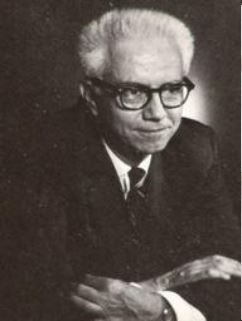
American Anne Green (known as Janni, who later changed her name to Om) 1970
Baba had two names for Anne, Ahjanni (away from knowledge) and Hysteria.
Anne Green (known as Janni, who later changed her name to Om) was the daughter of professor parents who taught in Ivy league colleges in the USA. She spoke with a cultured American accent. She had obviously, at one time enjoyed a very intellectual lifestyle and was a literati. No one is really sure how and why she came to visit Sathya Sai Baba. Her story is an interesting one and yet hardly a word has been written about her. Om enjoyed the casual ashram in Whitefield in the 1970s, where she had many close experiences with Sathya Sai Baba. Sometime afterwards she was made persona non grata, and prohibited from entering all of the Sai Baba ashrams. A fellow devotee recalls her saying that Sai Baba had told her at darshan one day, that although she was a graduate, and clever, he was going to change all that. He did. Banned from the ashrams, she was devastated. Sai Baba had obviously done an egodectomy on her, and was left wondering what to next. She visited Ramana’s Maharshi’s ashram for a time to think it over. Being quite ill, she did not function well and was thought to be a little odd being there by Ramana devotees.
After reflecting her position, she made the decision to stay in India to become a Sannyasin. She threw away her passport, clothes and all other possessions and took to wearing a simple orange robe. She later returned to Puttaparthi where Sai Baba’s main ashram is, and began a life of total austerity. It became apparent to others that her dismissal had not soured her in the least, she was full of love for Sai Baba.
Her eyes, great orbs of blue, appeared innocent and childlike. She lived from day to day on very little. Several years ago another devotee had a long talk about her life in Puttaparthi, she said that she lived in one small room without a fan that was in the summer, burning hot. By this time she had suffered many tropical illnesses, had troubles with her legs and feet, and was walking with crutches. Her once rich blondish hair was shaved. When asked why she stayed on she replied “Oh, I stay because that is my karma. I love Swami. I have given my life to him. I do not regret one single day here, despite the hardships.” She always appeared positive and despite her illnesses, managed to look after herself pretty well.
The local authorities recognise Om as being a Sannyasin and she had a certificate to say that she was a sadhu. She is allowed to live in Puttaparthi without either passport or visa, perhaps was the only Westerner was allowed to.
She became ill with dementia around the time Sathya Sai Baba died, and had little or no help as she was considered difficult to look after. There were some efforts, but was largely left alone as she was a Westerner.
Source: sathyasaimemories.wordpress.com
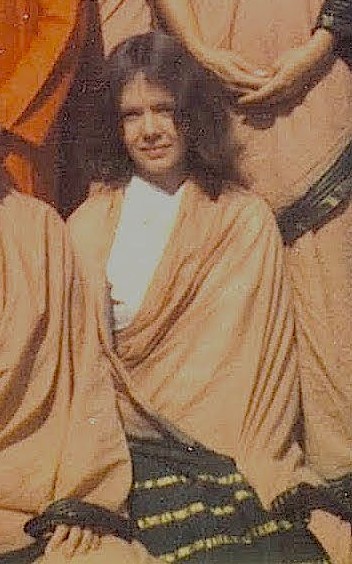
American Tal Brooke February 1970 Prasanthi Nilayam
Man and God; two ideas from the Bible and the Upanishads
Extract from Riders of the Cosmic Circuit by Tal Brooke (1986) – Surrender often required indomitable zeal and devotion to weather the storms. This same rule has applied to most ashrams, and the chronicles of the yogis report unending trials and testings at the feet of the guru, who is a law unto himself. The ancient surgery of self-annihilation remains superhumanly tough. And for Westerners without this tradition, it has been truly alien terrain. Failure in the devotee has been interpreted in the standard way as personal inadequacy – the ego creating webs of self-protection for survival. The ego is that which has caused the grand illusion of maya, the breaking away from the Godhead, that false sense of things-as-separate and as such it remains the ultimate enemy to God-consciousness. The deeper reality is the oneness that the ego refuses to acknowledge. If the blasphemy in the Genesis story of man’s fall was the self aspiring to become God, the blasphemy in the Upanishads was the self denying its oneness with God and insisting on separate creaturehood. The mustard seed metaphor held – Tat Tvam Asi – ‘This Thou Art.’ But returning to the Source was not easy.
Tal Brooke was the first person to make lurid accusations against Sathya Sai Baba in his book, Lord of the Air. He published his first Anti-Sai Baba book in 1976 under the title Lord of the Air under his legal name, Robert Taliaferro Brooke (Lion Publishing). It was republished in 1979 as Sai Baba, Lord of the Air. It was renamed Avatar of Night in 1982 with a reprint in 1984. It was renamed Lord of the Air: Tales of a Modern Antichrist in 1990 and reprinted again as Avatar of Night in 1999 (Harvest House Publishers, a Christian owned publishing company).
Richard Bock’s fiancé Janet attends Shivaratri celebrations at Prasanthi Nilayam in 1970 and stays for a month
Taken from an article Janet Bock Bicker wrote;
I was born in Los Angeles, California. My father, Erik Albert Westin, was from a timber-producing region of Northern Sweden, where he was a founding member of a men’s choir. I developed an ear for foreign sounds that helped me learn to sing bhajans in Telugu and Sanskrit. My mother, Edit Gunhild Saud, was also an immigrant, whose family farmed in Nebraska.
At the Vedanta Temple bookstore, I became absorbed in Ramakrishna and the writings of Swami Vivekananda. While working at Liberty Records, I met Richard Bock who was producing records of Pandit Ravi Shankar (Sitar maestro). Our common interest in things Indian led us to a lecture given by Indra Devi where she told of her experiences and showed black and white newsreel films of Bhagawan Sri Sathya Sai Baba. I had one photo and a few borrowed books from Markell and Bob Raymer, who had just returned from travels in Africa as part of Baba’s party. Richard joined Indra Devi in India for Baba’s forty-third birthday in November 1968, and returned with eight millimetre film and the recordings of Baba which became the LP entitled, Sathya Sai Baba Chants the Bhajans. We joined with Indra Devi to start the SAI Foundation in 1969 and opened the Sathya Sai Baba Centre of Hollywood in October that year.
My desire for Baba’s darshan intensified until I chose to stop waiting for others and go on my own. After I returned, Richard and I married and went on to make extended trips and more films about Baba, such as, His Life is His Message, Celebration, Aura of Divinity, The Universal Teacher (Part 1, Part 2 & Part 3), The Endless Stream, until Richard passed away in 1988. The Shivaratri account I wrote was later published in The Jesus Mystery, Of Lost Years and Unknown Travels, which Bhagawan inspired and blessed, about the years in Jesus’ life between the ages of twelve and thirty, which are not spoken of in the Bible.
I married Dennis Bicker in 1989.
Baba has continued to guide my life, through graduate school for a Master’s Degree in psychology, and through my twenty-five year marriage to Dennis Bicker, my partner in the creation of the SAI Foundation film, audio and photographic archive which now resides at Prasanthi Nilayam.
My final physical darshan of Bhagawan occurred when Dennis and I made our ‘gratitude pilgrimage’ in Nov. of 2010, just months before his Mahasamadhi. The power of His glance was as strong and life-enhancing in 2010 as it was the first time in 1970.
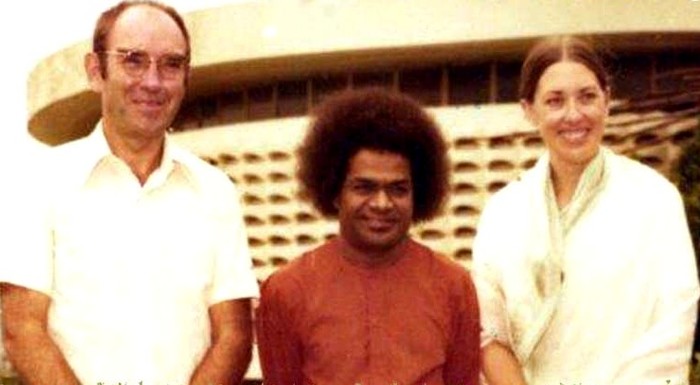
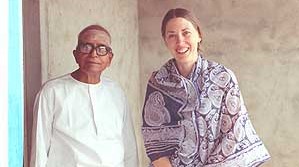
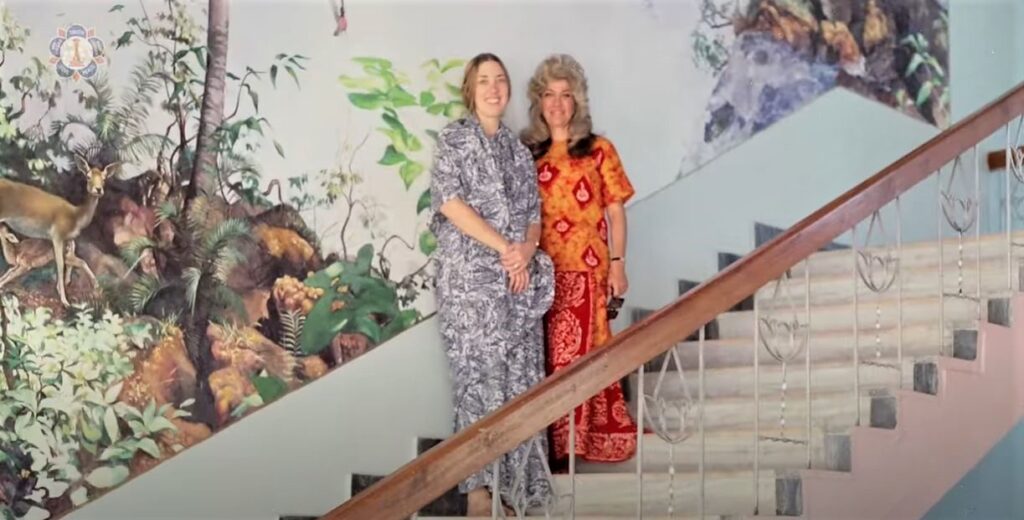
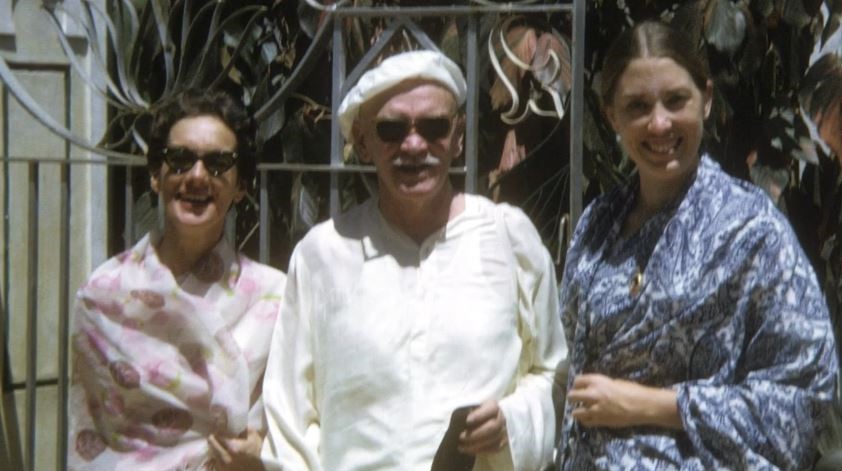
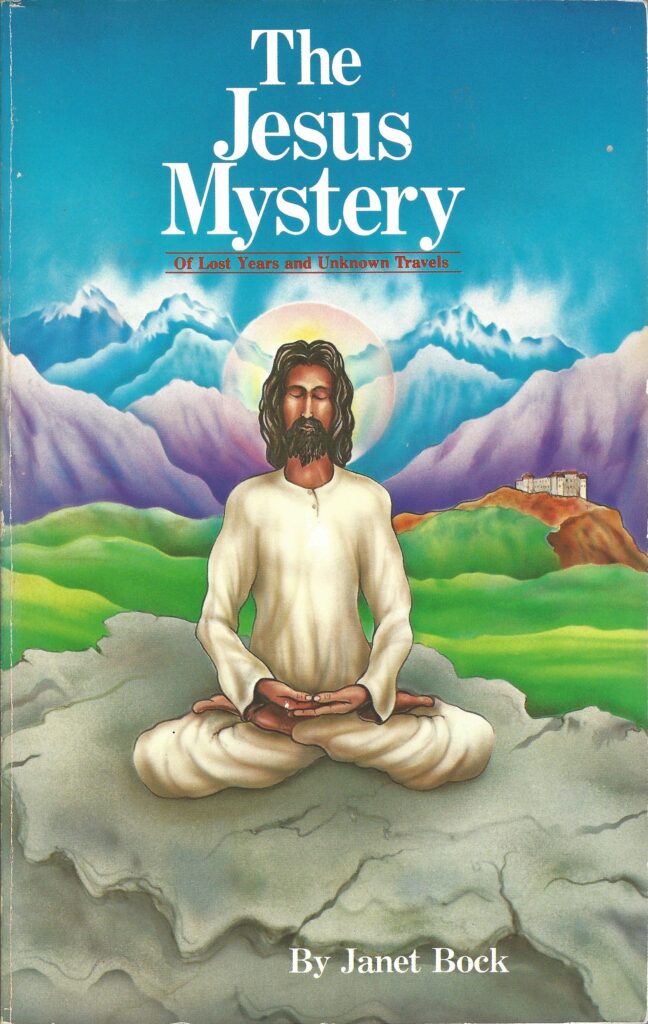
Dick and Janet Bock, whose painstaking research bore fruit in a film, The Lost Years (1977), and a book, The Jesus Mystery (1980). “It gradually dawned on us that those years were missing because someone had taken them out of the records, out of the Bible. We could not imagine Jesus would have appeared in Galilee at the age of 30 and hidden the major part of his life from his disciples whom he loved and asked to follow him.”
“In examining historical records of the early Christian Church, it became evident that early Church councils, especially the First Council of Nicaea in 325 AD, changed many points of doctrine.”
It is common scholar knowledge that the gospels were assembled by committee in 325 AD, who chose which histories would – and would not – go in.
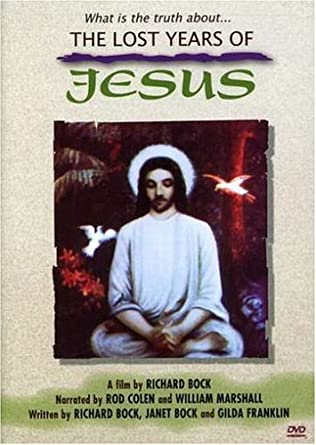
John Lennon and Yoko Ono visited the Dharmakshetra Ashram in Bombay in 1970?, Prasanthi Nilayam in late 1970 and again sometime in late 1974
In 1970, John Lennon and Yoko Ono visited the ashram, Indra Devi was given the job of chaperoning them while there. Devi says “I remember introducing John Lennon to Sathya Sai Baba and called him ‘Lemmon’ by mistake. I confused him with a movie star. That shows you how much I know about these things.”
Yoko Ono said that she and Lennon had visited the ashram during their visit to India.
“We had been in Bombay for a couple of nights and gone on all the way to the mountains to the camp of Sai Baba. it was an incredible experience…. We felt it was important to sit in his lecture and John insisted that we sit together despite women and men not being permitted to sit together.”
Her first trip to India in the late Sixties, ended early. “The four boys (The Beatles) had so much fun during an earlier trip that John thought it would be a good idea to come back. We went up to the (Sathya) Sai Baba camp near Mumbai, but they wouldn’t let the men and women sit together. I like to be honest about everything. Perhaps, it was rude, but John and I insisted on being together, and he couldn’t keep his hands off me. In the end, they asked us to leave and we went back.”
Author Paul Robert Williams recounts in his book Empire of the Soul that during his stay in Prasanthi Nilayam in 1974 – “One day John Lennon and Yoko Ono were sitting in the sand with the rest of us, next day it was the president of India, a producer of the James Bond films, the photographer David Bailey, or some high-ranking Italian politician. Yet there was only one star in that small world, and he seemed unimpressed by those who walked tall in the world beyond, often paying more attention to some ragged group of peasants who had walked miles for his blessing than to those who had arrived in air-conditioned limousines. Ignored, John and Yoko left in a huff.”
From Avatar of Night by Tal Brooke – Or was it only the Indian elite who had to humble themselves in the presence of Baba. While Anthony ate a masala dasa, he told us how John Lennon and Yoko Ono had quietly arrived for Baba’s birthday festival on 23 November (not sure what year this is. ed.). A delightful sense of destiny filled us as it became clear that neither of the two illustrious pop stars even remotely influenced Baba to seek them out or deviate from his usual course. In fact he had shown far less interest in them than he had in us. They sat and sat in the multitudes, just like everybody else, Baba smiled at them, but that was not enough, Lennon expected an interview. Gill was about the only foreigner there at the time, so John and Yoko seized upon him. Gill patiently shared what he could with aloof authority, undoubtedly blowing their minds because almost nobody came on to them, John Lennon and Yoko Ono, with that sort of indifference. They treated Gill like an equal; his manner remained unchanged. They may have even become somewhat disarmed by then, and sullenly curious about the authenticity of the place. It they didn’t count, it might even be real. But if the ashram had that kind of integrity, where was their bartering power? They were like rich kids in the Olympics where dad could no longer buy them first place. Lennon felt slighted. And this outweighed his curiosity in Baba’s miraculous powers.
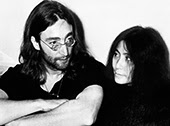
American Michele Malvin (married in 1977 Kaplowitz) arrives for Shivaratri, 1st March 1970 Prasanthi Nilayam
Michele’s high school friend Lyn Rubenstein (Leela) writes to her in 1969 to say that she should come to India to meet God. Leela had recently arrived on the ashram of Sathya Sai Baba after having first going to India in 1967.
Before Michele was about to embark upon her journey to India, she received a call from Jimmy Hendrix’s manager while she was working at the film company Leacock-Pennebaker, to ask if they would be interested in filming Hendrix’s proposed visit to Sathya Sai Baba. Hendrix died months afterwards in September 1970.
The young 25-year-old Michelle arrived after receiving three telegrams from Baba in response to her request to come to the ashram. Baba gave permission to come with two others for a minimum period of six months for ‘spiritual solace and sadhana training.’
Michele’s Mother, Libby, arrived the following year in 1971. Michele’s father and her sister, Dr Ronne Marantz (author of The Power of Love: A Teacher’s Life with Sathya Sai Baba) with her two children arrive in 1979.
Baba sent her back to the US in 1973, but returned every six months for brief visits.
After she, Heidi King and VJ Supera where sent home by Baba in 1973, they decided to go and visit Neem Karoli Baba (1900, Akbarpur and died 11 September 1973, Vrindavan) before leaving India.
Before their departure, Baba had asked her how many bhajans she knew, to which she replied that it was perhaps 50 or 60. Baba then corrected her by saying it was 200. After her arrival, Neem Karoli Baba asked Michele for some of Sai Baba’s vibhuti and told her that she knew 200 bhajans!
Afterwards, she visited the ashrams Muktananda and his guru Nityananda before leaving India.
In 1976, Baba interviews her five times and suggests she should get married. In July 1977 Michele and Richard were married by Baba on the Brindavan ashram in Whitefield, and they remained in India for the next three and a half years.
They returned to Prasanthi Nilayam in 1985 with their family and they lived there for another ten years, raising their two daughters Sumana and Sujana before returning to the States.
Husband, Richard Kaplowitz first went to the ashram in September 1973.
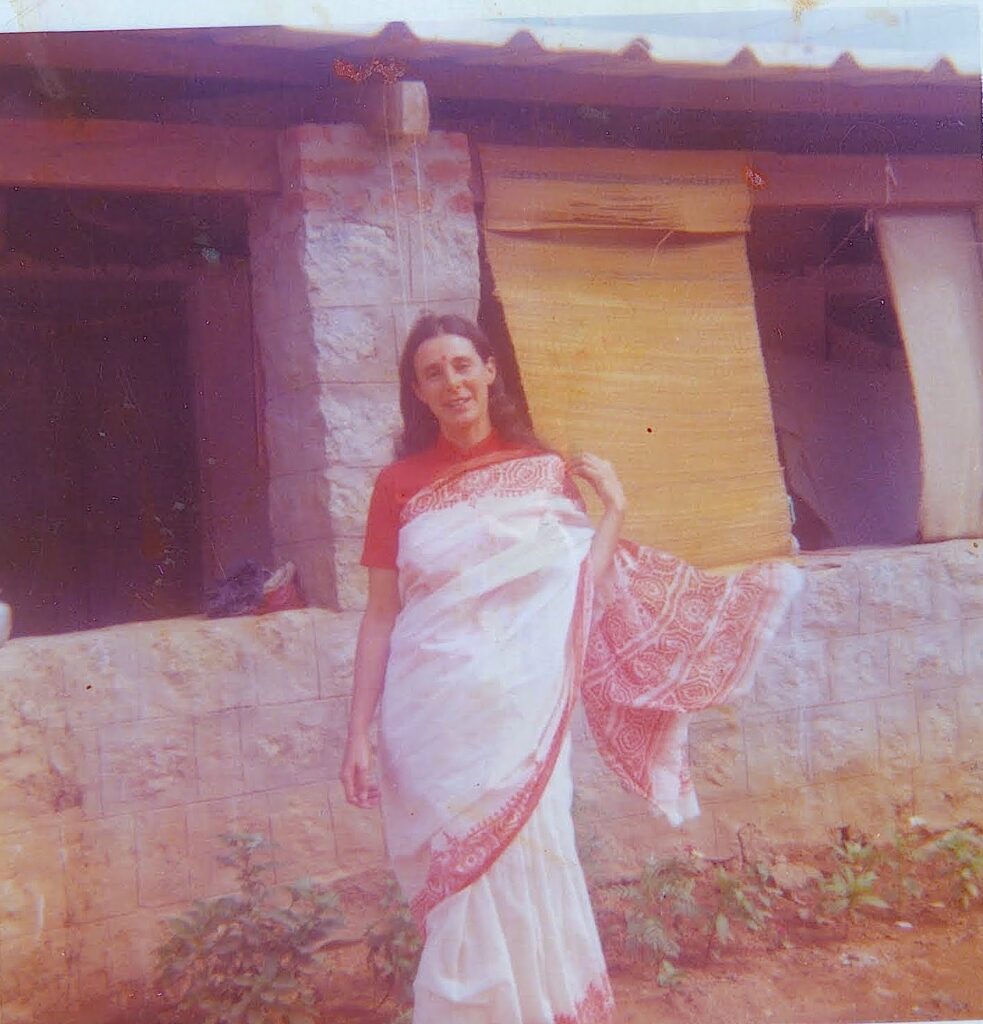
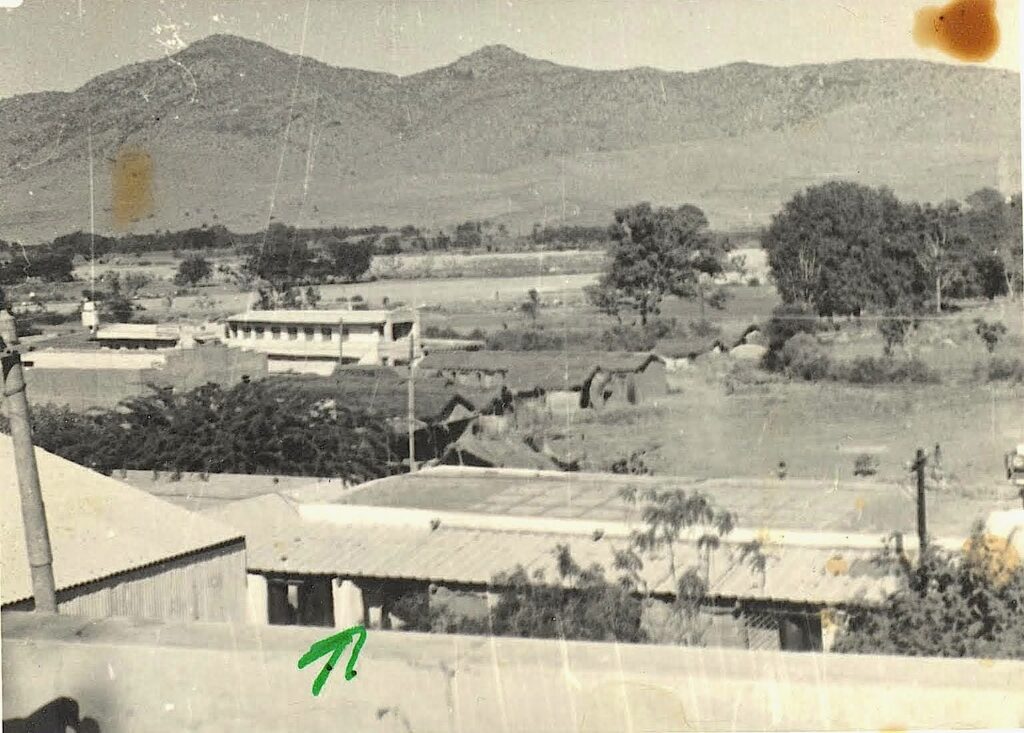
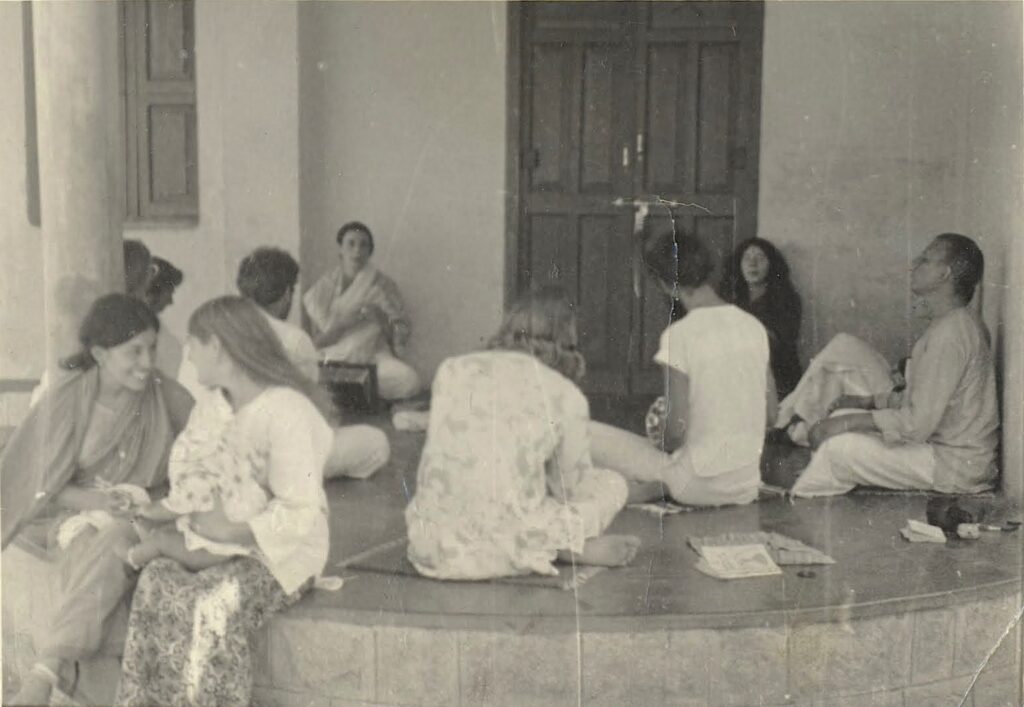
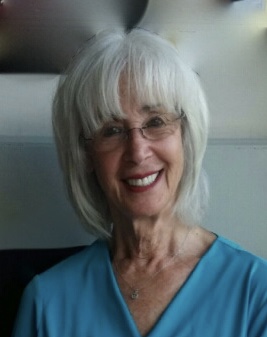
Hans arrived for Shivatratri 1970
Americans VJ Supera (Marsha) and sister India Supera arrived for Shivaratri, 6th March 1970
VJ undertook a few journeys while in India, with her younger sister India (1946 – 2019) they visited different ashrams. VJ and Michele Malvin travelled at one time to Puri together, and throughout the years that VJ lived at Sathya Sai Baba’s ashram (1970 – 1973) many of the Western devotees did visit Varanasi at different times.
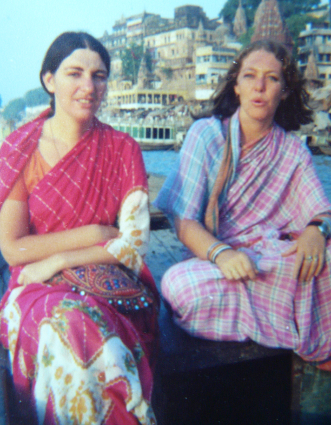
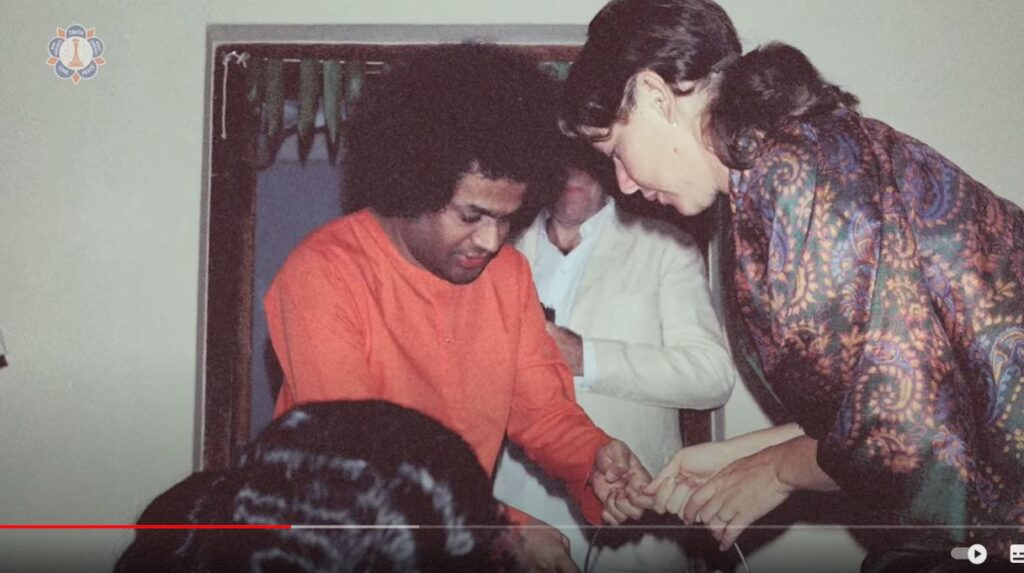
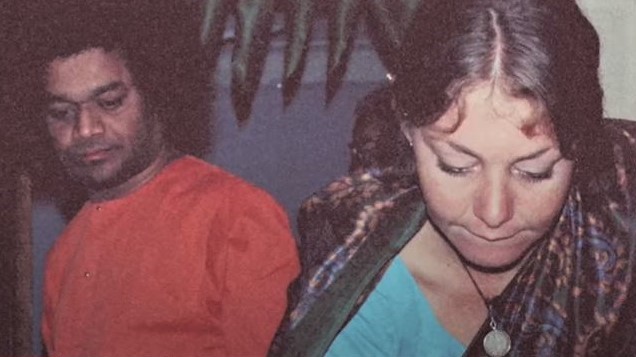
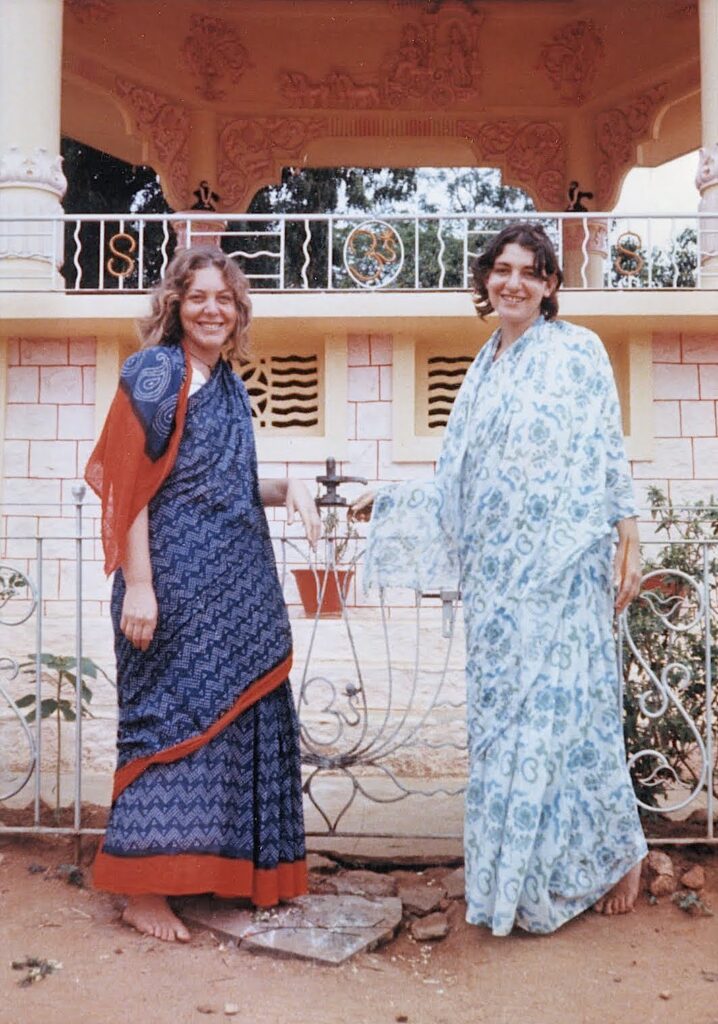
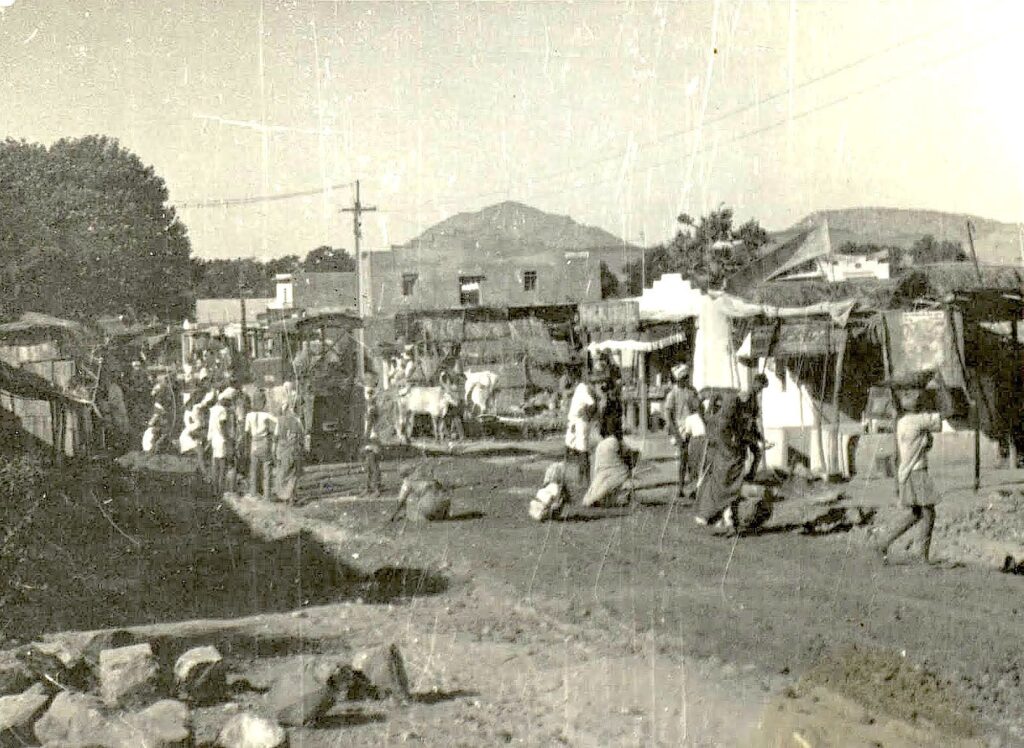
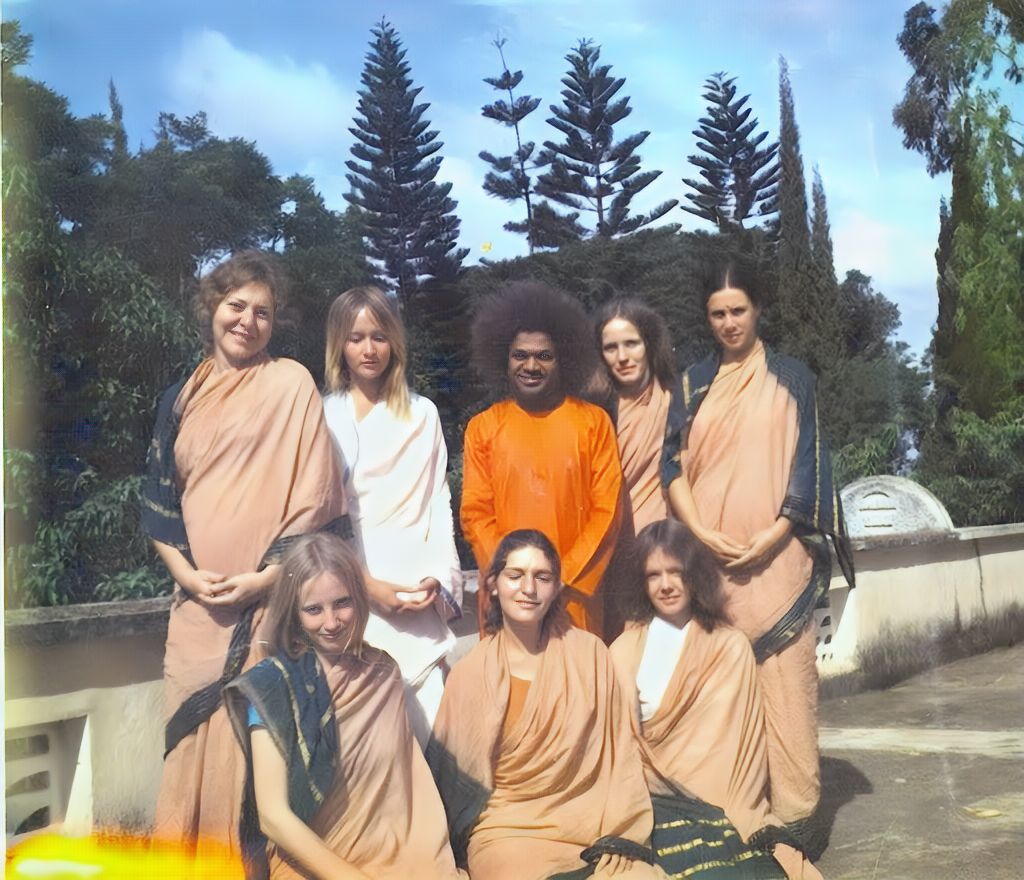
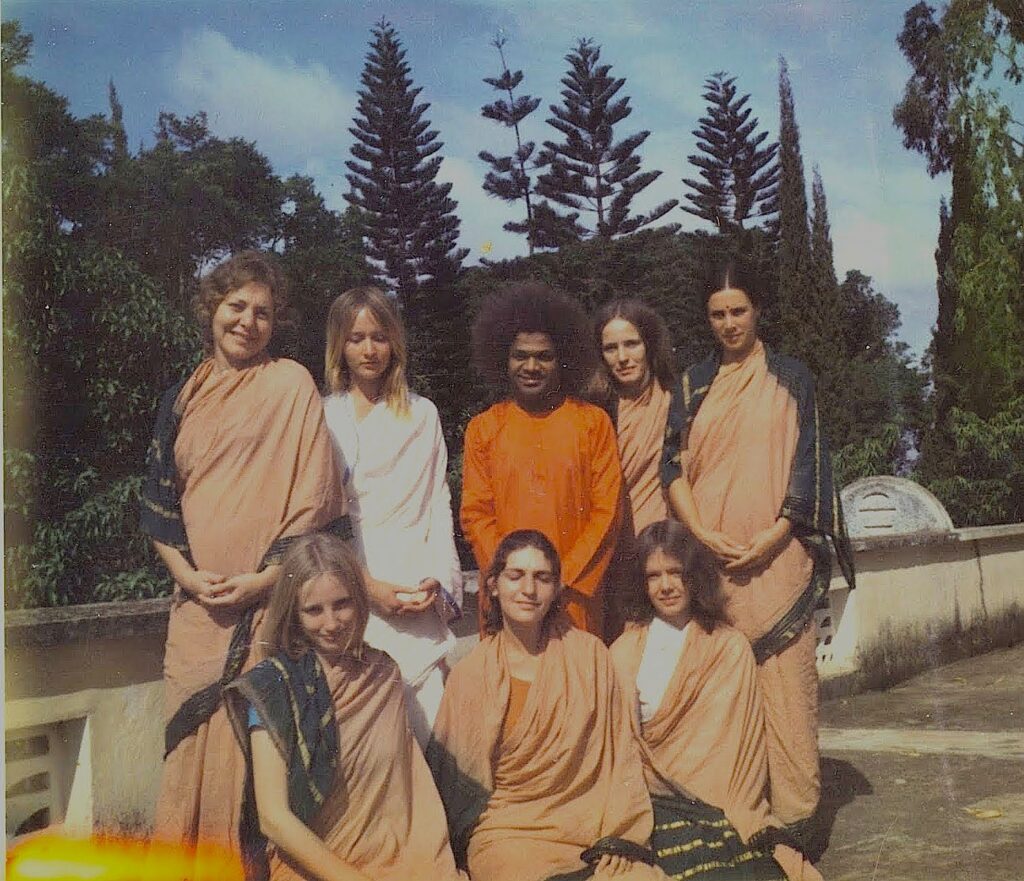
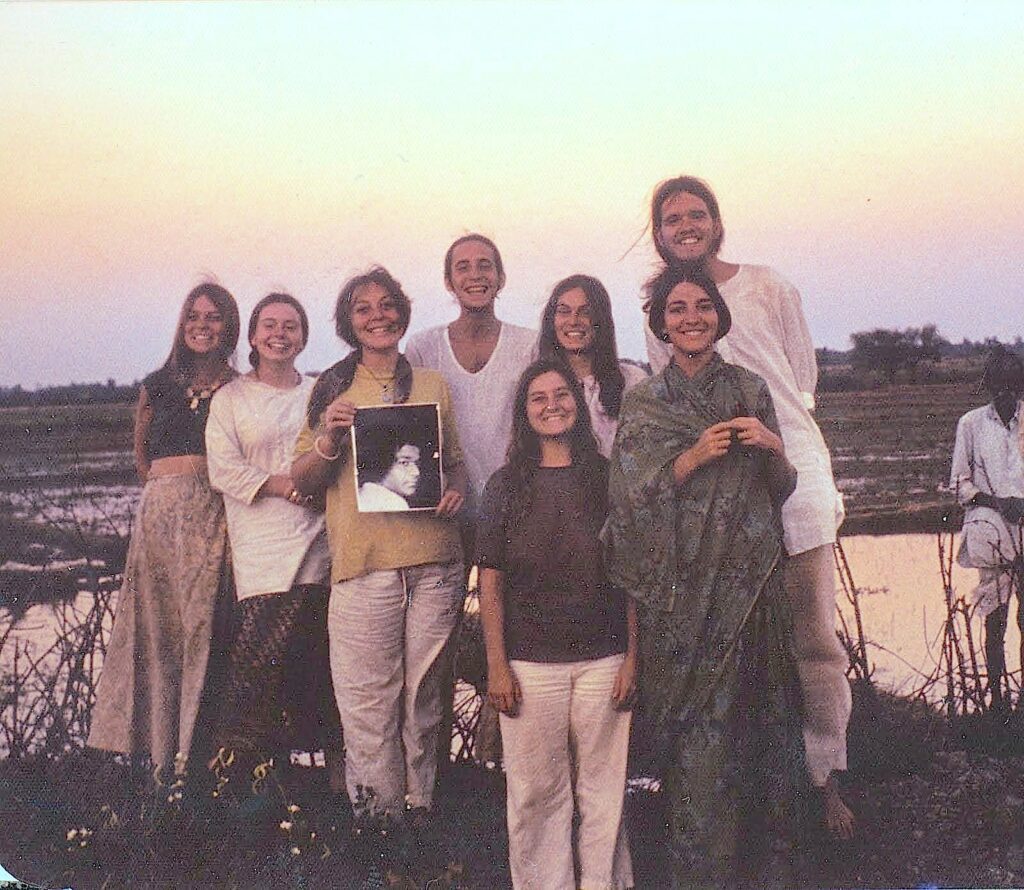
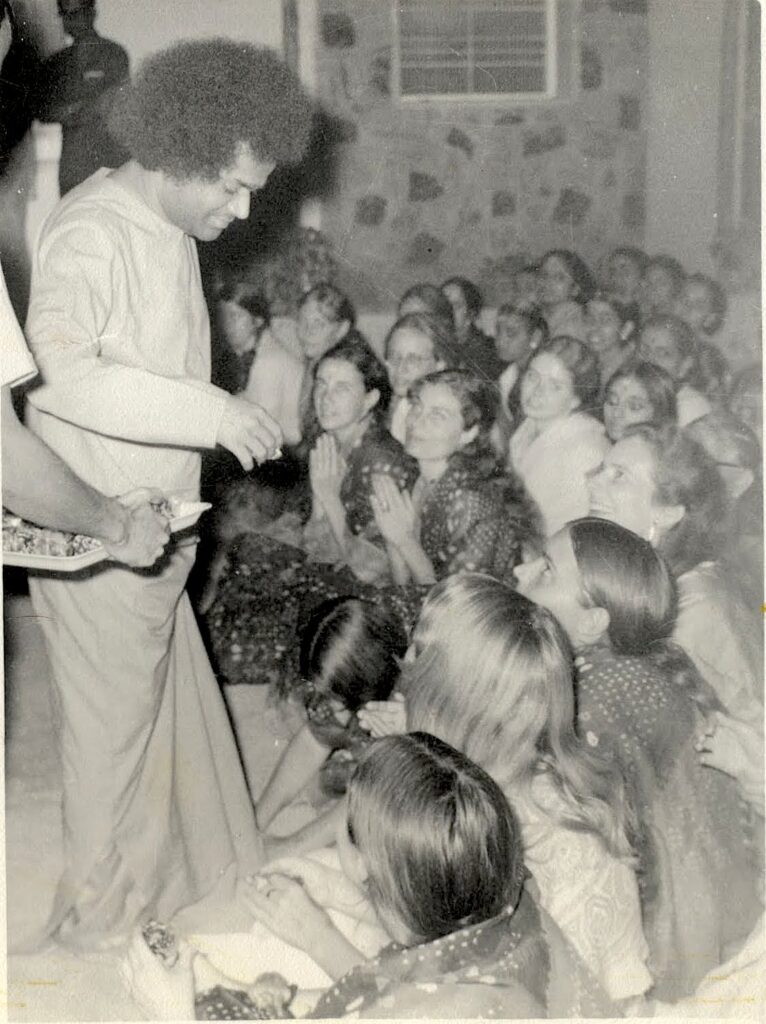
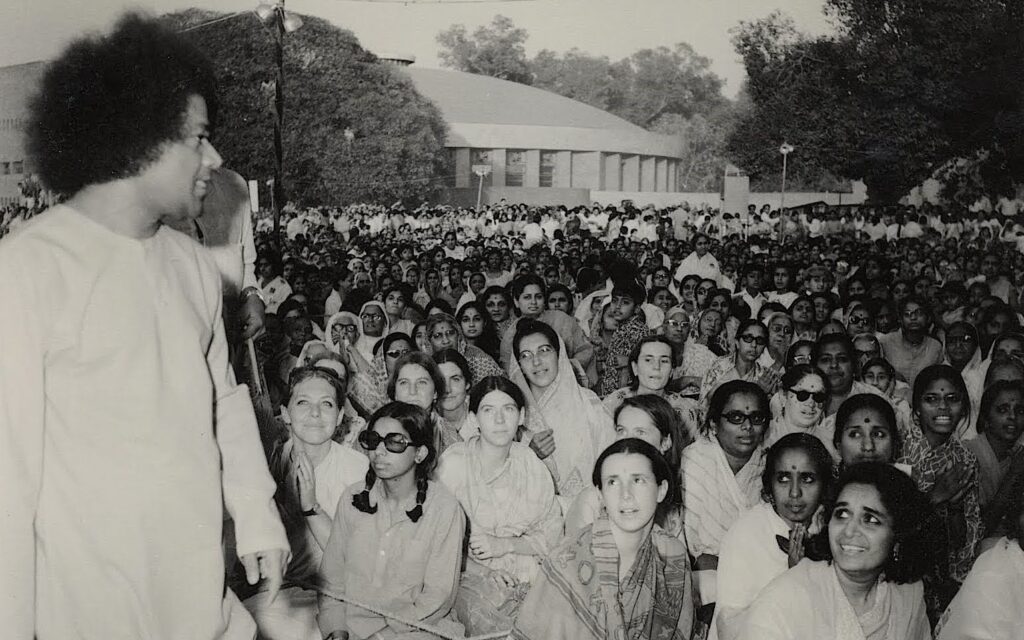
India Supera (Laurie Beth Supera was nicknamed India as a young child, 1946 – 2019) writes – during the Nixon years I decided that living in America might bring about bad karma, and I could not cope with the ramifications of an event like Vietnam. So I decided to travel and find a spiritual teacher, to retreat to a cave someplace like in the Himalayas, and pray until the world changed (possibly a long wait).
I began my journey in 1965. I travelled the world, ending up in India in 1968. Finding a teacher or guru was no easy task. I had already been sick and near death for almost a year in Pakistan and had walked another year and a half around India looking for a guru. I was ready to give up and return to the USA, get a job at the phone company and settle into oblivion. But fate decided differently.
A good friend sent me to to Satya Sai Baba’s place. He turned out to be a perfect teacher for me. I stayed there happily for over two years thinking I would stay forever, become enlightened and perhaps save the world. (There is a saying I heard once: If you want to make God laugh, tell Her/Him your plans.)
About this time, my teeth started bothering me to the extent that I would pass out from the pain. I had gone to dentists, etc., to no avail, and Baba suggested I return to the States to have them fixed. I had no idea what I would do as I had no money or work training. Sai Baba said not to worry, that he would take care of me and that he had trained me for the work.
Meanwhile, a close friend from the ashram called and invited me to Montana, where she had bought a ranch to create a healing center. This friend, Jermain Duncan, was a healer and studied with Olga and Ambrose Worrall before coming to see Sai Baba. After having been in Montana for three months and with my teeth fixed, I planned to return to India. But my plans changed when Jerry (as we called her) was diagnosed with cancer and asked me to stay on as her nurse. I thought this would be a good way to even up my karmic debt to her. She had paid for my ticket to the U.S.A. and my dental repairs.
The unfortunate part of the story is that at age 39, Jerry passed on, giving me my first experience with conscious death. She willed me the Feathered Pipe Ranch to carry on her vision.
When I returned to Sai Baba to offer the ranch as a Sai Baba centre, he told me to make an educational centre to create world leaders. He said there are too many followers in the world. I thought that I would always be living a simple life in India, instead I was to start an educational centre in Montana!
Of course, I could not have done this alone. Jerry’s mother, Millie Duncan, helped me through the first years financially and gave me plenty of moral support. Also, a community of people began to grow around the ranch vision and worked beyond human capacity to make the ranch support itself and all of us. This was a nearly impossible task, as none of us had any financial backing nor any business skills beyond common sense (which was frequently ignored because it didn’t fit our vision). The vision itself kept changing as new people added to it, and things got confusing. But we persevered.
By 1979, I was ready to give up the ranch and go back to a peaceful life in India. All the community members were fighting, and I was becoming more and more confused. We were hundreds of thousands of dollars in debt, and things seemed to be getting worse by the day. I decided to go back to Sai Baba and ask him what to do. To my amazement, he said to keep going, that it would work.
I came back from India with new energy. As it happened almost all of the original 13 people had decided that the Feathered Pipe Ranch could not support them and had gone on to seek other employment, leaving the craziest of us to pursue the vision.
Fortunately, there are such things as miracles, crazy wisdom, and the greatness that comes from not realizing you are trying to do the impossible. And of course, we were never alone. The power and beauty of this land have inspired the aspirations and self-sacrifice of many hundreds of people who have contributed to the Feathered Pipe Ranch.
By the grace of God, for more than 40 years, we are happily continuing to offer health, wellness and yoga retreats at the Feathered Pipe Ranch. We are the leading educational centre in the sense that we are taking people who, for the most part, have already “grown up” and “succeeded” and are looking for something higher and better in life.
To you, we offer the beauty and serenity of Nature and food for the mind, body, and soul.
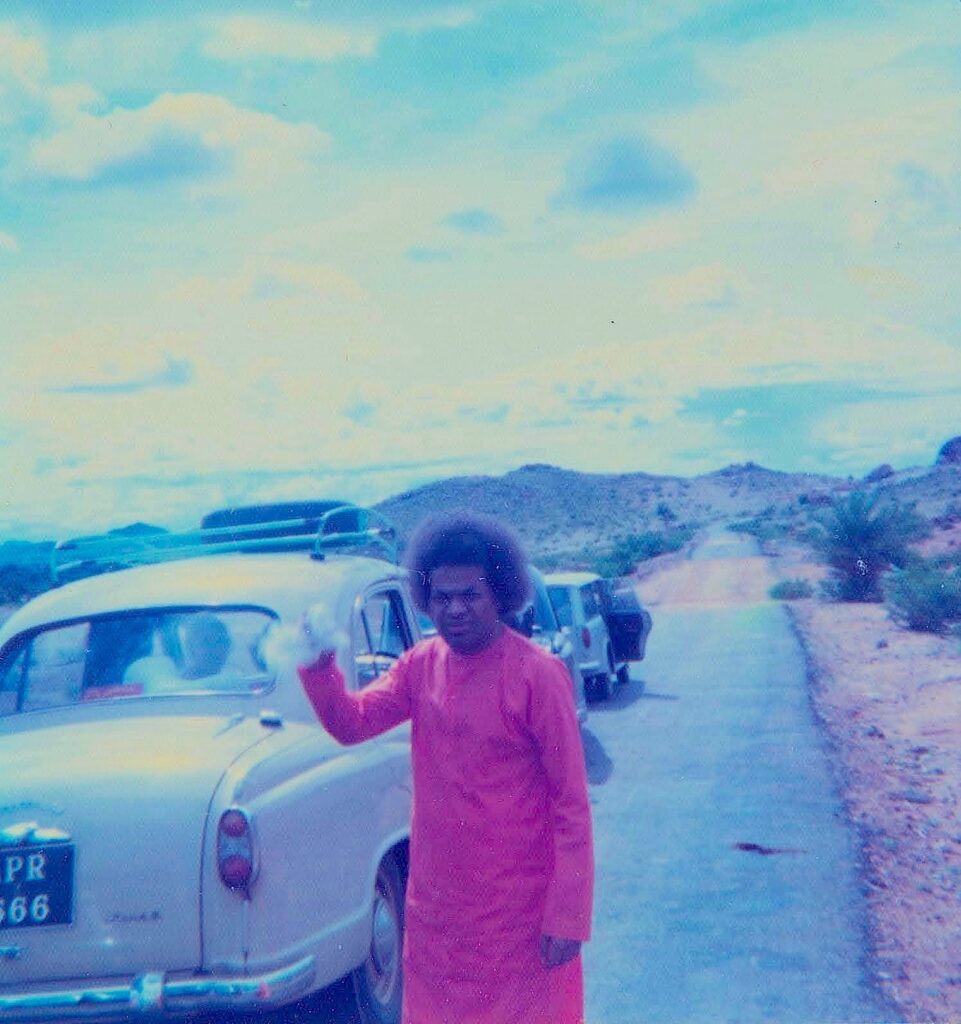
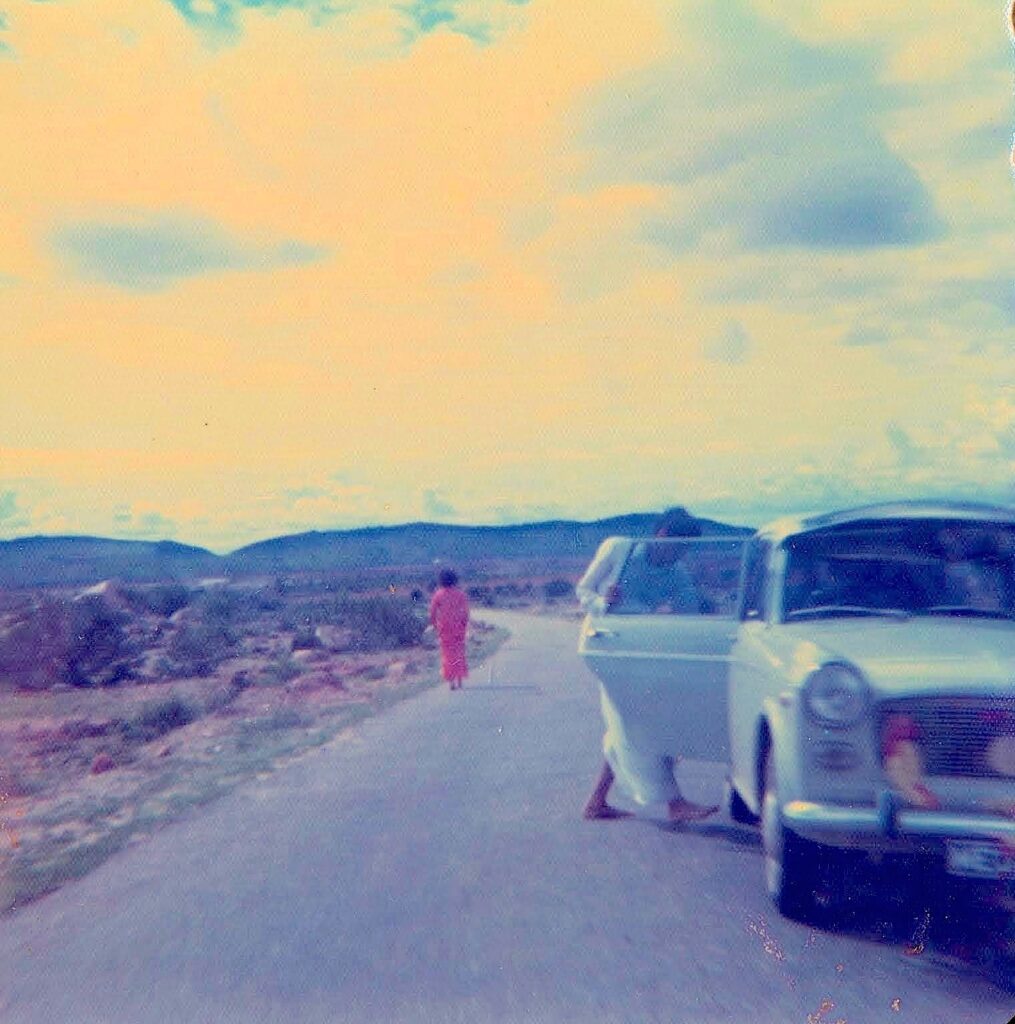
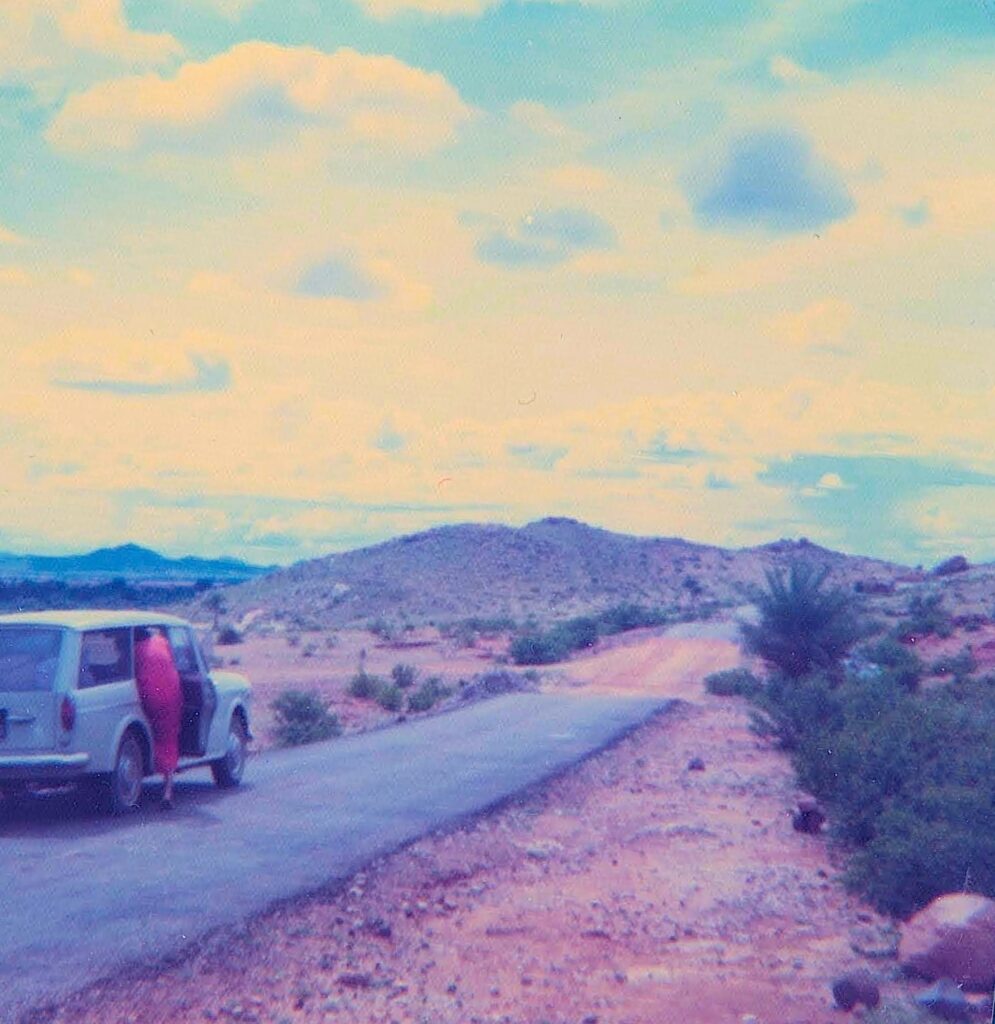
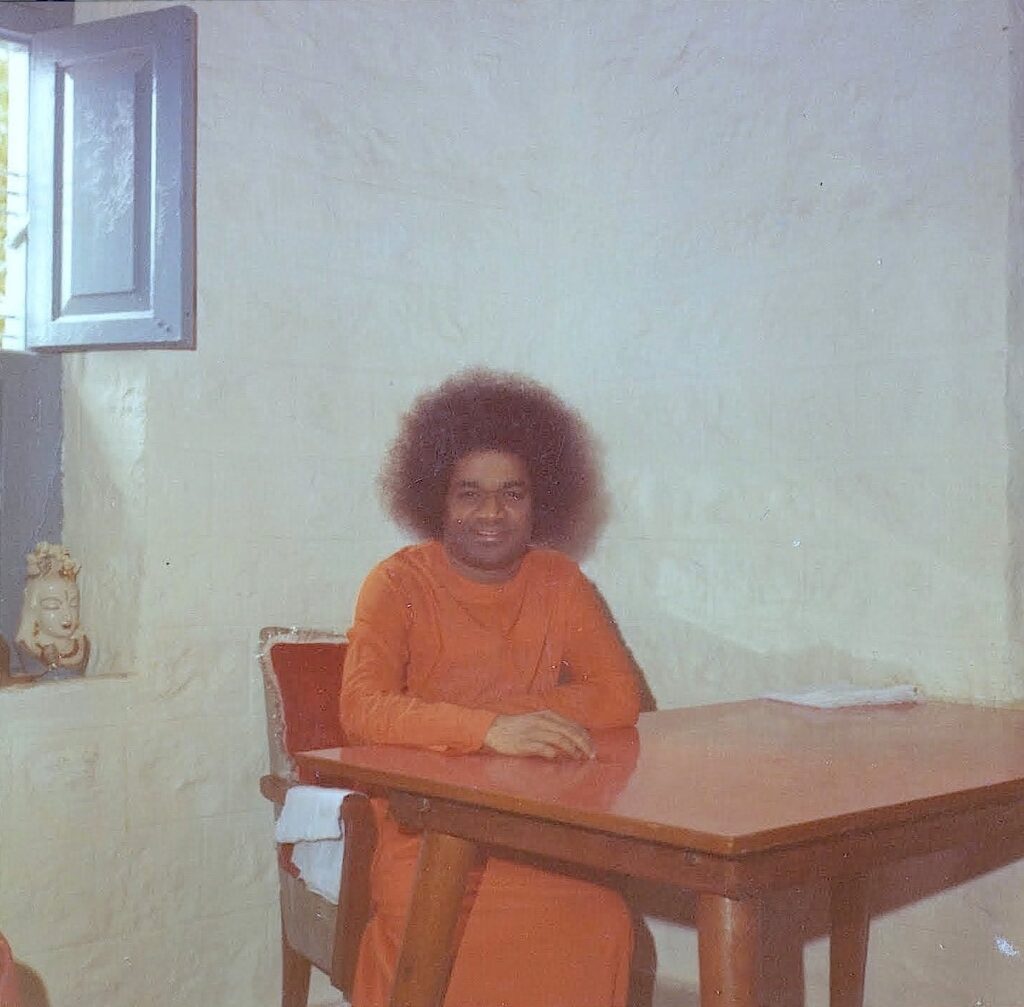
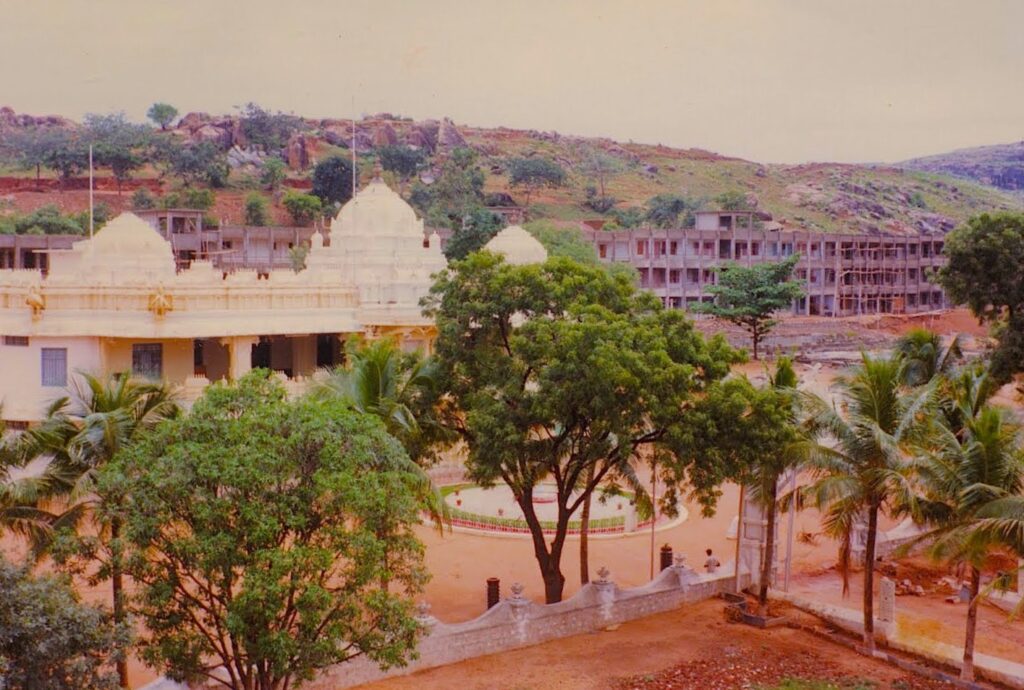
German Beno Wiesner arrived for Shivaratri 1970 and stayed for 2 years
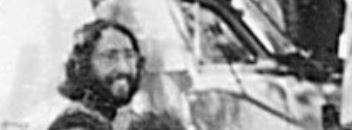
American Bruce Bradbury April 1970
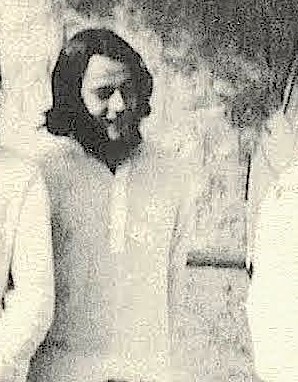
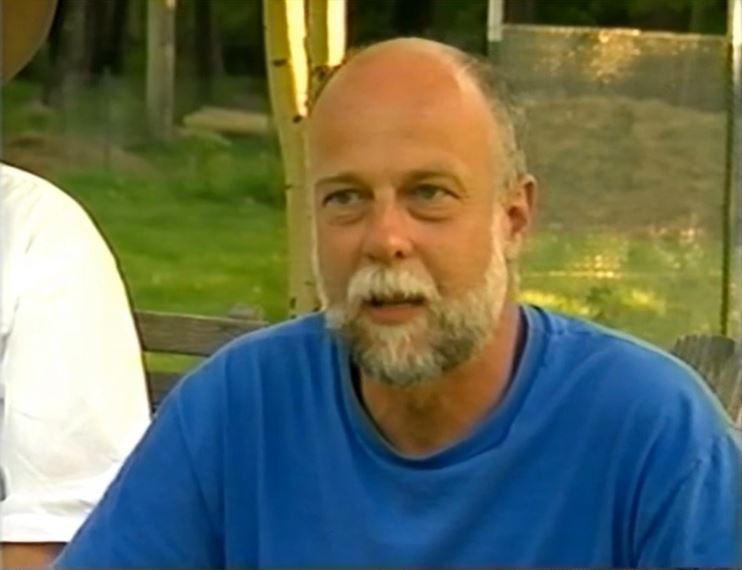
American Robert Conger (Hanuman) April 1970 Whitefield
Robert Conger speaks of Ahimsa during a reunion of early devotees in June 1996. (L to R) Martin Stamp, Robert Conger, Howard Levin, Wendel Field, Bruce Bradbury.
American artist Wendel Field 1970
Abul Kalam Azad writes in 2014 – Today, I would like to present Wendel Field, an American painter who has spent almost 15 years in India. Wendel Field is born in Indiana, United States. Wendel’s mother was an artist and his cousin was an art historian… the inherited art legacy was palpable in Wendel at a very young age, and he started painting when he was just 4 years old. Wendel didn’t opt for a formal art education until he was in his late 20’s and studied art in Indiana University. Meantime his passion for art grew exponentially and he says with a chuckle, “I can’t stop (painting)”. In 1970, Wendel visited India for the first time. He says, “Making a very long story short, one day, somebody came to my home and said, here is the money… Go to India … I came to Pondy and then heard of Sri Ramana and came to Tiruvannamalai. I stayed almost 9 months and didn’t return until 1990s. Since then I visited Tiruvannamalai every year. In 2012, I moved to Tiruvannamalai.”
During his first visit to India, Yogi Ramsuratkumar became Wendel’s best friend. They used to hang out every night. Those times Yogi Ramsuratkumar was living in the streets. Most often he hangs out near the temple. Almost everyday Wendel used to meet Yogi Ramsuratkumar and often travel with him to nearby villages. He fondly recollects, “Yogi never used to talk about spirituality. He was very funny, innocent like a child. He has the best laugh I have ever seen and heard…. Whenever people ask questions about spirituality rather than giving a straight response, he used to poke them. People often miss the pun.” When asked about Yogi’s interest in art, Wendel said, “He used to see and enjoy my paintings. I remember one of his comments. Once I was doing a painting of spiritual images of different religions.. he looked at it and said, ‘actually you should make those tits bigger.’ Although I had a hearty laugh, it did make sense to me, as the full image of that woman goddess would look much better with his suggestion.” Wendel’s experience with Yogi along with one of his painting has been featured in a chronological book on Yogi done by a community in Arizona. The first four chapters discuss Wendel’s memoir of the Yogi. https://ekalokamtrustforphotography.wordpress.com/tag/wendel-field/

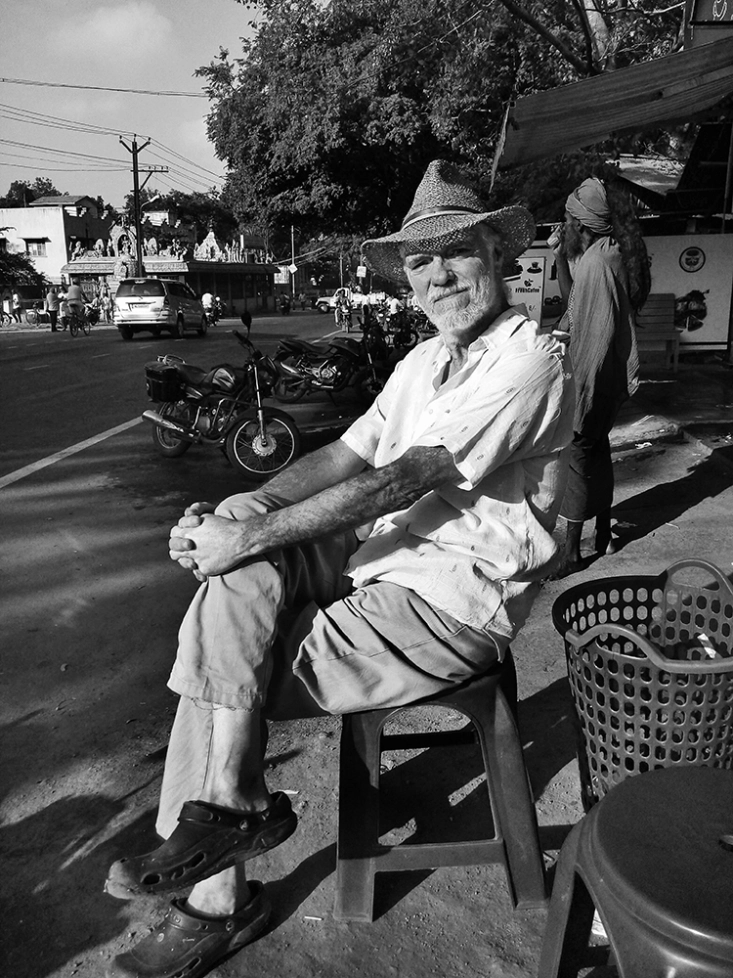
British Martin Stamp 1970
American Dave Walker 1970 stayed for one year
American Gil Locks 1970
According to some of Gil’s friends, he became ‘enlightened’ by his Guru, Sathya Sai Baba while in India. He had asked Baba to make him free, and he did. Baba changed his name to Freedom.
A.J. Jacobs writes in his 2007 book The Year of Living Biblically – Gil married my aunt and divorced her a few years later, but he remains the most controversial member of our family. If the rest of my relatives are ultra secular, Gil makes up for it by being, quite possibly, the most religious man in the world. He’s a spiritual omnivore. He started his life as a Jew, became a Hindu, appointed himself a guru, sat for eight months on a Manhattan park bench without speaking, founded a hippie cult in upstate New York, turned into a born-again Christian, and, in his latest incarnation, is an ultra-Orthodox Jew in Jerusalem.
From Gil Lock’s 2004 autobiography Coming Back to Earth: The Central Park Guru Becomes an Old City Jew –
I read an article in a health food magazine announcing the opening of a new organic gardening ashram in Mexico. “That could be it!” I thought, “Organic vegetables.” This could be my purpose for being on the planet. After all, what could be better than to bring uncontaminated, organic food into the world? What is more basic and more important than food? I pictured myself hoeing in a garden, wearing just a bathing suit. It seemed to me to be a most natural, unpolluted lifestyle.
I hitchhiked down to Mexico and found the ashram. The little old lady running the ashram was a famous yogi who was highly respected even in the “secular” world. She was known as the “yoga teacher of the movie stars.” She took a liking to me and made me her driver.
One day she said, “Come, I want to show you a movie of my guru in India.” I saw the most amazing movie, showing this guru in South India. Back then, he had five million devotees; today he claims over sixty million! What made him so popular were his special powers. For instance, he might say to you, “Do you like diamonds?” and if you said “Yes,” he would wave his hand in a few quick circles, and a diamond would pop out of nowhere into his hand! “Oh, you like books,” he would ask, and then he waved his hand, and into his hand would pop a book, right before your eyes! And then he’d give these things to his devotees!
“That’s pretty interesting,” I thought, “but really what’s the big deal? I can do the same thing. You want a diamond? Here, I’ll write you a check and you can go buy a diamond. You want a book? Here, take $10 and go buy a book. Who needs these material things? I was running away from materialism, and here was a guy making even more of it. Not only that, but the stuff he “materialised” was lusted after even more than the rest of the stuff already in the world. To have him materialise something for you was considered a great blessing. His materialised diamonds were worth much more than the regular ones you could buy in a store.
So I really wasn’t impressed, but I made a huge mistake. And that mistake cost me eight years of extremely hard labour! I mistakenly believed that since this guru had the power to spiritually control the physical universe, he must also be able to direct me in the spiritual universe, and that’s what I was seeking. I was wrong.
That night I went to sleep crashing in the desert outside Tecate, Mexico. I had a vision. A real vision. In this vision I saw this guru’s eyes looking into mine. Not his face, just his eyes. And then in the vision, I started to spin in circles. I spun and spun and then, as I was still spinning, I started to go up. I went higher and higher, watching the ground move farther and farther away. The earth became a small ball hanging in the vast black space. I kept floating up until the moon went sailing by. Then the sun went by. Then it started to go real fast. The stars were zooming past me on all sides as I was going farther and farther out into the endless, unknown, empty space, beyond all things.
I freaked out and came back down shaken. “Wow!” I thought, “If this is what happens from seeing just a movie of this guy, can you imagine what would happen if I looked into his real eyes? I know what I’ll do. I’ll get up in the morning and I’ll go to India. I’ll be there for just one day. I’ll look into his eyes. He is so powerful, he will blow me away and there will be nothing left. Just sparkles. No more ups and downs. I will be free at last. The movie will be over.”
Reaching for the Heavens
In the morning I arranged for my trip. I didn’t know where my passport was, so I applied for a new one, claiming that my old one was lost. In a few days I was on a plane, off to the guru’s ashram deep in central South India. I landed in Calcutta.
Calcutta is a mind-blower. It makes Tokyo seem like Disneyland. The night I rode through the streets from the airport to the train station, 70 percent of the people in the city were sleeping on the sidewalks. It was a major holiday, so the streets swelled with the villagers who had arrived for the festivals. Many people had certain spots, a few square feet, where they would return every night to lay out a long thin piece of cloth. They would lie on half of it and cover themselves with the other half. There were some third-generation families camping out on the same little spot in the railway station that the grandparents had reserved.
I was a few hours early for the train, so I was close to the front of the line. I was fortunate to be able to grab 18 inches of a luggage rack, which I shared with a goat and two chickens. The ride seemed to take forever, because the train backed up at least 25 percent of the time. The smells and colours on the third-class coach made up a new palette: brightly coloured saris wound around dark brown skin, vibrantly coloured ribbons tying young girls’ very long braids together, dark men in simple white pyjamas, all smelling from strong new scents …
“What is your native place?” the curious passengers would shout out at me, speaking in British, Colonial English. “What is your mission here?”
The old, narrow-gauge train must have been a local, because it seemed to stop or go backwards more than it went forward. People were stuffed in all over the place. They could squat on their haunches for hours. The floor of the train was crammed with women, all with nursing babies, and weathered, skinny, dark-skinned farmers with burlap sacks filled with a few pots and pans or maybe some grain.
The old train made a clacking noise as it went on slowly for three long days and nights. The terrain is flat, desert dry. Villages and small towns popped up and went sliding on by. The train stopped at every other one of them and people squeezed, streaming in and out. At each stop vendors screamed through the windows, holding plates made of large green leaves woven together with small pieces of straw. On them were chunks of greasy, fried vegetables bathed in a spicy green sauce. Those with the small aluminium coins quickly grabbed them up.
Three days later, I was standing in Bangalore, looking for the central bus station. The outdoor bus station is a scene that should be made into a movie. People screaming, throwing meagre possessions on top of the bus as they try to be one of the 80 or 90 chosen ones who manage to grab a spot on the 40-passenger bus. Then there’s the hardy group who sit perched on top of the mountain of burlap sacks tied to the roof, holding on for their lives. The all-day-and-overnight bus goes through village after village. Not like you might think. In one tiny village the houses were built right up to the road, which was exactly the width of the bus. You had to pull your fingers inside for fear of scraping them on the one-story mud brick rooms huddled together. From the bus you could see right inside. “How could people live like this?” I wondered.
The next day the bus ended its route at the guru’s ashram, which was smack in the middle of nowhere. Actually, it was quite beautiful. It was clean and well kept, which certainly was a change from the India that I had seen so far. In the middle of the ashram was a small, two- or three-story white building with a cleared space in front of it. Off to the side were a few rows of small, one-room, single-story, whitewashed mud-brick dwellings. Sitting on the ground in front of the main building were some 5,000 Indians. (Apparently when you give away diamonds in India you are very popular.) There were many long rows of men who were sitting close together on one side of the open space, and the women were sitting on the other. I went up to knock on the guru’s door. Immediately two young boy Volunteers came running up to me. They said that the guru was a very important person, and if I wanted to talk to him, I had to take my place, sit in line, and wait for him to come out to choose the people who were to be privileged with the all-important “interview.”
I said, “Fine.” After all, I knew he would pick me first. Didn’t I come all the way from California, while they only came from New Delhi? And didn’t I come for spiritual things, while they came for merely physical things? Certainly he would pick me first.
I sat down in the long line on the men’s side and waited. I waited and I waited. This was something you learned very quickly in India. Finally a hush fell over the crowd. They were all sitting neatly in rows, quietly praying that the guru would invite them in. If the guru would just listen to their problems everything would be solved. Some hopeful devotees smoothed the sand in front of them, trying to make it more inviting for the pampered bare feet of the guru.
Suddenly everyone became quiet. The guru stepped out of his door onto the porch, which was filled with his “ooo-ing” closest devotees. His devotees around the world are divided into many Chapters. The Chapter leaders, who were making their annual pilgrimage to see the form of the deity they had learned to love, were sitting closest to his door. The guru leaned on the side of the door and stroked his huge afro haircut. He was short and black-skinned, and wore a crimson-coloured dress. In his hand was a white handkerchief, which he used to wipe the red-coloured saliva that came from the betel nut he chewed. The betel nut dyed his lips red. Upon seeing his old devotees, he raised his hand in approval. The devotees were in love with this man. Mostly his form, but also his deeds. They loved the fact that they had such visible proof of his spiritual greatness. After all, who else could materialise objects?
The guru was a Hindu Telegu Indian who had demonstrated unusual powers from an early age. He used to cherish the dramas the children put on at festivals, and enjoyed taking the roles of the deities, particularly the female deities. This way, they taught, he was especially able to empathize with both his male and female devotees. Although he was a Hindu, he took the name of a Moslem teacher from the north of India who had died some years before he was born. He added the name “Truth” in front of it, and was called the “god incarnate,” the “avatar of the age.” Most people called him “Baba.” He slid more than he walked, as his dress dragged in the sand along the line of idolizing devotees. When he briefly pointed to a particular devotee, the lucky person would dash for the main building and be directed by the young boy Volunteers where to sit on the floor inside the interview room.
And just as I had predicted, he came right up to me. I knew I was right. He walked right up to me, and then walked right by! He didn’t even look at me. “Wow!” I thought, “I came all the way from California for one day to see this guy, and he didn’t even look at me! Oh well, he must be busy. He’ll get me when he comes out in the afternoon.” So I waited. And I waited. And I waited until finally, late in the afternoon, again the hush and the hopes, and again he walked right up to me, and again he walked right by without even looking at me.
“What am I going to do? I came all the way from California! I have no choice. I’ll wait one more day.” The next day the same thing happened. And then the next day, then another day, and then another day. Each day it was the same thing. Day after day, twice a day, the guru would walk right by and not even look at me.
In the long hours of waiting for the guru to come out, I started reading his teachings. There were plenty of inexpensive paperback books around that explained the general teachings of Hinduism, and emphasized this guru’s teachings. The books taught that “you must come to the guru to gain the ‘knowledge of God.’” Then, when you gain this “discernment” that you must receive from the guru, “you become a God-realised being. You will have the experiences of God-realisation, and you will see that you are, in fact, God yourself, that you are immortal, and you will not die.” Coupled with these teachings were those about the “serpent power” that the guru will activate inside of you, and how this energy will bring you to this lofty realisation.
Had I only read and understood the first book of the Torah, it would have saved me eight years of wasted searching. In the chapter on the Garden of Eden, there is a discussion between the “serpent” and “Eve,” the first woman. The serpent was convincing the woman that by eating from the “tree of the knowledge of right and wrong” (discernment) she would become as God herself. She would not die, but would live forever. The serpent in the Bible teaches exactly what they teach in India, only in India, they make it sound like the serpent is the good guy.
You might ask how anyone could be so stupid as to leave his home and family to go searching around the world in the first place. To go to the far ends of the earth and put up with tremendous discomforts, to live like the poorest people of the world. I agree. And if I had it to do over again I certainly would do it differently, but in those times it was not so unusual. It was the ‘60s. The leaders of that generation were the Buddhas and the gurus and such; almost all of whom had forsaken their homes and families and, at least for a while, turned their backs on the world to go searching for the Eternal. None of the major religious leaders were married. None of them had a home. Celibacy was definitely the highest path.
But one thing is for sure, whatever you do comes back to you, as you will see as this story unfolds.
One afternoon, after waiting two extremely long weeks for the guru to choose me for my interview, all of a sudden there was total chaos. I looked up from the ground where I was sitting and saw 5,000 Indians start running in all directions. They were screaming hysterically, grabbing up their babies, jerking them off the ground by an arm and scrambling away. I had no idea what was going on because they were yelling in Telegu or Hindi. I just sat there trying to figure out what was happening, until the crowd cleared somewhat, and I could see what they were screaming about.
The guru had a pet elephant named Gita, and that day the elephant broke away from its trainer and went wild, charging straight into the middle of the crowd! Dust flying, people panicking, crazy elephant charging! “My God,” I thought, “someone’s going to get killed here!” I jumped up and ran out in front of the charging elephant. I threw my hand up into the air toward the raging elephant’s face and screamed out as loud as I could, “STOP!”
The elephant stopped. I was amazed. I remember thinking, “What do you do with a stopped elephant?” I was really stuck. I felt if I lowered my hand, the elephant would start up again. With its huge foot, it could squash me like a bug, aside from what it could do with its powerful trunk and tusks.
Just then, the guru came out onto his balcony to see what all the commotion was. He saw me stop his crazy elephant and thought I was an interesting person, so he invited me into his house. I pushed past the crowd and went up to his open door. He was standing inside by the doorway pushing up his sleeve. He was going to materialise something for me. He looked at me and asked, “What do you want?”
I quickly said, “Freedom.”
He said, “Come, you will move into my house.”
The guru had two main camps. The one we were in was his winter home, which was next to the village where he was born. When the summer heat became unbearable, he moved to his summer ashram outside Bangalore. It was there that he brought me to stay, first on his roof, and later in an empty classroom that I shared with some other American devotees.
I sat on his roof waiting all day; nothing happened. I sat there all night long; nothing happened. Early the next morning I was sitting with my back against the wall and my legs stretched out in front of me when the guru came up to me and said loudly, “We don’t sit like that here. You must fold your legs.”
“Oh, I’m sorry. I didn’t know.” I tried to fold my legs like he said. He said, “Not once. Twice. You have to bring your foot over your leg one more time, so you will be sitting like a lotus.” He walked away, leaving me with cramps and charley horses, trying to figure out how to get my legs to look like a lotus. Having nothing else to do, I worked on it for most of the day and into the night. When he came by the next morning, I happened to be practicing, so when he walked up to me, I was sitting in the lotus position. In truth, I never felt like a lotus. It seemed more like a pretzel to me.
“Ah, that is very good,” he said. “But your arms have to be like this. And he showed me how to stretch out my arms, resting the backs of my hands on my knees. And he walked away.
“Now I’ve got it figured out what you’re supposed to do here,” I thought. The next day when he came by I was prepared for him. I was sitting there like a lotus with my arms stretched out in front of me.
“Very good,” he complimented, “but your fingers have to be like this,” and he showed me how to touch my thumbs to my forefingers, and he walked away. This went on for months. Every time he would go by he would show me another technique, until I was sitting there meditating, breathing up one side of my nose and down the other side for three hours at a time. I became totally immersed in the various practices I was learning. My days were filled with one form of yoga or another.
India is a land of extremes. I tried not to pay attention. After all, I wasn’t there as a tourist. I didn’t come to see the country. I was trying to accomplish the most important thing in my life: to be free. I believed what the gurus were teaching was possible: that you could attain a state of mind called freedom moksha – a place you didn’t have to come down from. A place of equanimity where things in the world just didn’t affect you anymore. Or even better, to keep on going up until you would be out of the world completely, and never have to come back to life again.
The meditative practices made me so mind-centred that I became cranky if someone talked near me when I was trying to meditate. Sounds became exaggerated. Food became a reluctant necessity. Sex wasn’t even a question.
India is a huge country, but it is extremely crowded. Wherever you are lucky enough to find a well or river, you will find hordes of people clustering around the water. It was almost impossible to find a place to meditate without the sounds of screaming people, so I began a routine of going out into the wilderness in the quiet time of the day, way before sunrise, and meditating there for many hours at a time.
I would wrap myself up in a big piece of cloth, making it like a small tent to keep the mosquitoes away, and I’d sit there alone on a hilltop until the hot South Indian sun drove me back down into the shady ashram. Hours and hours, sitting, breathing deeply, watching my mind over and over again, without anything special seeming to happen.
One morning, after sitting and exercising for several hours, I was walking back down the hill toward the ashram. I had learned to meditate while walking and was concentrating on my exercise. I noticed a man and woman filming me, but I was indifferent since I was beginning to get my head out of this world, trying to spend all of my time watching my mind.
As I came closer, the man asked if I would speak with them. I spent a few hours explaining the little that I had learned and trying to help the young Japanese woman with her bad back. It turned out they were John Lennon and Yoko Ono, who had just come from another guru’s ashram. Because of the Beatles’ support, that guru became very famous and founded the Transcendental Meditation (TM) movement, taking the title Maharishi (“Great teacher of Hindu mysticism”). John and Yoko said they were disenchanted with him because “he couldn’t keep his hands off Mia Farrow’s butt!” Now they were looking elsewhere for the answers….
Both John and Yoko seemed genuine and even humble people, but my only interest was in spiritual “freedom.” Their wealth and fame seemed to me to be burdens that they were going to have to let go of, and I certainly was not interested in acquiring more burdens.
Hour after hour, day after day, my only problem was where to find a quiet place to sit and meditate. My meditation deepened, but it brought me no joy, just a stronger and stronger desire to finish with this meaningless, physical world and to find the Eternal.
From time to time the guru would “materialise” something for me. Once a group of us were sitting at his feet, and he wanted to refer to stalagmites and stalactites, but he didn’t know the English word for them. He said, “Here, like this,” and waved his hand, palm down, in small circles. Less than two feet from my eyes he produced a small, smooth black stone. He held the stone up in the air, again just a few inches in front of my eyes, and blew on it. I saw first the solid black surface of the stone and then, almost instantly, saw some red dust fly out of the stone. In the place where the dust came from was a hole.
This is not something that at first I did not see and then saw later, nor did the red dust block my view. I saw the hole appear. He held the stone up for those in the room to see. Inside the hole were a perfectly formed stalagmite and stalactite. He said it was a lingam, a symbol of the masculine cosmic principle and of the god of destruction, Shiva.
The guru called these wonders his “calling card,” and although he said they were petty miracles, they served to strengthen belief in his “divine” nature and caused millions of people to worship him. He gave me the stone, which I carried around with me for years. To be frank, these “wonders” were impressive, but I never felt they brought me closer to my goal. I always felt strongly that wherever my goal would be found, I would go there. I wanted to be free, not to pick up more baggage, yet here I was with a treasure that millions of people would have given their top teeth for.
Another time, in a private interview, he said to me, “Do you want power?” I didn’t answer. All I wanted was to be free. He waived his hand and produced a magic chakra. It was a thin, rectangular, copper scroll about three inches long and two inches wide, with a design scratched into it. He said, “Sit on this when you meditate and power will come.” I took the scroll out into the wilderness, far away from people, and followed his instructions. I placed it under me as I sat meditating. I was taken by complete surprise as the energy began to climb up my spine. It was very strong, and reminiscent of sexual energy, but instead of going down it was going up.
One day, after some five months of living in the guru’s house, he called me in for an important interview with some very distinguished devotees from New Delhi. In this interview he told a story about how the foreign students in his ashram had lived such bad lives before they came to him, and now they were devoting their lives to God and were meditating all day long. Well, I knew all of the foreign students in the ashram, and they certainly were not meditating all day and neither did they seem to have gone too far from their old ways. He just wanted to look good in front of these important people, and I called him on it.
“You’re lying,” I said. “That’s not true at all.” He flipped out and starting screaming at me, “Who do you think you are? I am the guru here! I have 5,000,000 devotees! I can materialise diamonds! How dare you speak to me like that!” “I don’t care what you have. If you’re going to be a liar, I can’t trust you.” And I got up and walked out. He had taken the name “Truth” as his first name, but he was a liar. There were many other times when I had heard him lie, but those incidents were simply brushed away as “tests.” His senior devotees were always quick to explain that it is the job of the “God-realised man” to test his devotees with petty matters like these, to see if they are ready to let go of their judgments and move up higher in the ladder of God-realisation. But this time what he was doing was just too obvious. He wasn’t testing anyone; he was just trying to impress his important visitors.
I left the ashram and went out into the countryside. India is a swirl of colour. Sitting on the bus, I became one of those colours, squashed between the hundreds of other colours who happened to be there screaming at each other, chewing betel nut and spitting.
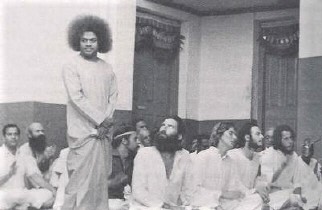
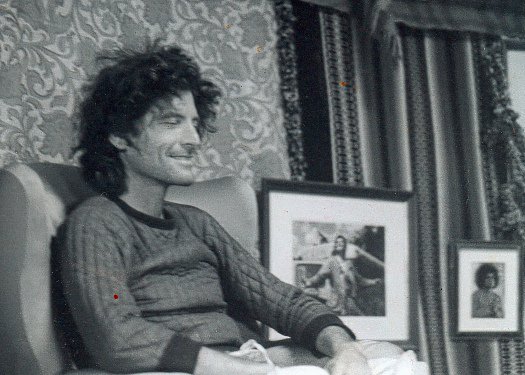
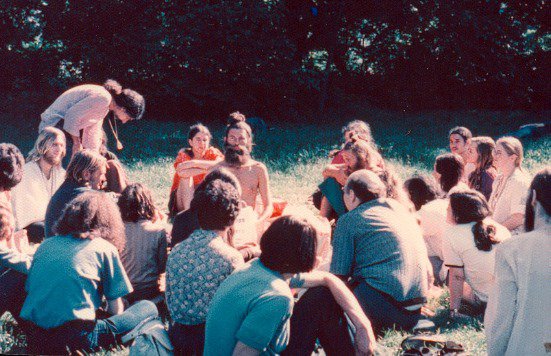
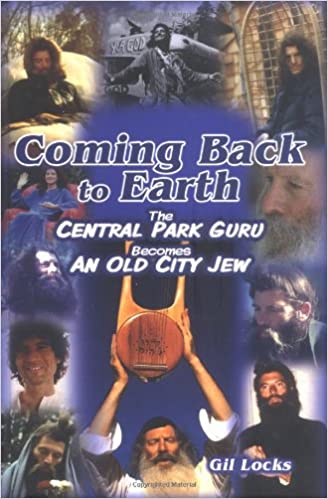
Laugh your way into heaven reading this meaningful and hilarious spiritual saga! Follow Gil around the globe, as he makes his amazing spiritual journey from corporate America to the depths of South India to the holy city of Jerusalem. Join him as he transforms himself from a successful businessman into a long-haired hippy, a mystical guru, a Christian healer, and finally an Old City Jew.
A. J. Jacobs writes in his 2007 book The Year of Living Biblically –
I’ve bought a lot of books this year, but this new Amazon delivery is a big one: the autobiography of my ex-uncle Gil. When I open the box, the first thing that strikes me is this: Gil is not opposed to graven images. The cover features no fewer than eleven photos of Gil. Gil in front of his hippie bus; Gil with his eyes shut, smelling flowers; Gil perched regally on a red armchair.
The book is called Coming Back to Earth: The Central Park Guru Becomes an Old City Jew and was published in 2004 by a small Jewish press. It was banned by some rabbis in Israel because, among other things, it contains four-letter words. I start to read, and it doesn’t disappoint. His life is crazier than I anticipated, even if you make allowances for the occasional James Frey-like fabrication.
Gil grew up in a secular Jewish family in upstate New York. He became a financial consultant in Phoenix – and a successful one, by his account. But he felt something missing. So he dropped out and reinvented himself as a hippie.
Some of his adventures are typically hippie; the things you might see in an early Dennis Hopper film: He dropped acid and passed out for three days. He ate nothing but watermelon for two weeks straight in an attempt to cleanse himself. He got high in an opium den in Pakistan. He was arrested for skinny-dipping in Virginia. His wardrobe consisted of a tablecloth.
But other escapades are outlandish even by hippie standards. Gil trekked to an ashram in northern India where he lived in a squalid yard with five thousand other devotees. The ashram’s guru – a man with a huge Afro and a crimson-coloured robe – would emerge from his house every day but never deign to speak to Gil. Gil waited for weeks.
Finally, one day, the guru’s pet elephant, Gita, went on a stampede in the ashram yard. Panic everywhere. Gil stood up, “threw my hand in the air toward the raging elephant and screamed, ‘Stop!’” The elephant stopped. From then on, Gil had a place in the guru’s inner circle. This allowed him to meet John Lennon and Yoko Ono, who were disenchanted with their own guru–the Maharishi Mahesh Yogi – because, writes Gil, “he couldn’t keep his hands off Mia Farrow’s butt.”
Gil came back to New York and opted to go into the guru business himself. He decided that God wanted him to start his sect on a bench on the corner of 86th Street and Central Park West. He sat there, gazing at the tip of his nose for eight months, amassing – by his account – dozens of followers who sat at his feet, soaking up his vibes: seekers, stockbrokers, poets, and movie stars (Sally Kirkland!).
Did I mention that he wasn’t speaking at the time? Gil had given up vocal communication, remaining silent for three years. He dispensed wisdom (for example, “smoke the best bag first”) to his followers through a sign language of his own invention.
Eventually Gil moved his “family” to Ithaca, New York. He lived in a yurt by a pond, meditating for – he says – twenty-three hours a day. All of his needs were attended to by his worshipful followers, who, by the way, had been given brilliantly sixtyish names like Rainbow, Bliss, and Banana Tree. And I do mean worshipful. They literally fell on their faces in front of him.
Gil’s Hindu phase came to an abrupt end when he read a pamphlet someone left in his bathhouse. It was about Christianity. Gil became a born-again Christian leader who, among other things, battled demons and healed a homeless man.
That phase, in turn, came to an equally abrupt end when Gil started to read the Hebrew Bible more closely. It was during this time that Gil followed the Bible literally: When he made tassels of yarn and attached them to every corner he could find on his clothes, and when he tied a wad of cash around his hand.
He eventually switched to more traditional Jewish practices. And nowadays, he spends his days in Jerusalem binding tefillin on tourists at the Western Wall and holding Shabbat dinner for young seekers. But I get the feeling that Gil is a very unorthodox Orthodox Jew. One of his theological precepts is that everything is God, sort of a Semitic pantheism. Other Hasidim say that God is everywhere – but Gil takes it to the extreme.
He writes that he was once sent to a psychiatrist who diagnosed him as a megalomaniac. Gil writes: “I had to look it up in a dictionary. It said, ‘someone who believes they are God.’ I had to agree with that. I not only thought I was God, I thought (and still think) all is God.”
Gil’s life inspired another obscure book that I figured I should read as well. Called Yea God, this 1980 biography painted a much darker picture of Guru Gil. If Gil’s was the Disney version, this was the Grimm’s.
Here we meet a Gil who was sexist (men in his cult got cushy yurts, women had to suffice with tepees) and controlling (he went so far as to instruct his followers how to go to the bathroom properly). Worse, according to this book, Gil sometimes smacked around members of the family. And here’s the crazy part: They allegedly liked it. “Thank you for loving this one enough to beat him,” it quotes one follower saying, in the odd third-person language of the family. (Gil says he was “out of his mind” during this part of his life, so he can’t remember everything, but that the allegations about his violence are overblown.)
There’s a scene about the father and mother of one of Gil’s cult members. They feel like they no longer know their daughter–who has started to refer to them as her “body family.” It’s a heart-breaking story. And it makes me understand what my grandparents must have gone through when Kate became Gil’s number-one follower.
It’s exactly what I was always most afraid of with religion. To embrace religion, you have to surrender some control. But what if it’s a slippery slope, and you lose all control, slide right past the Judeo-Christian mainstream, and end up in a yurt kneeling in front of a guy wearing a tablecloth who has renamed you Lotus Petal?
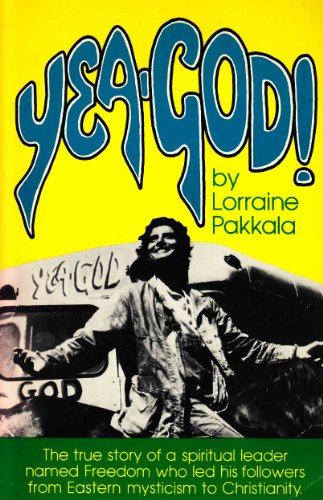
New York Times, November 6, 1972 Baba, Ex‐Insurance Salesman, Is Now a Yogi Here
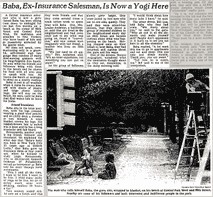
A former insurance salesman who is now a guru named Baba has been sitting from dawn to midnight for the last five months on a bench at the corner of 86th Street and Central Park West. He meditates and preaches to New Yorkers who have heard of him and to passers‐by attracted by his gentle mien.
He does not speak, communicating only in a graceful self‐created sign language that consists of many slow‐moving gestures with his long‐fingered thin hands. He eats what his friends and followers bring with them to the bench and he shares his food with all who stop to speak with him He leaves the bench at midnight to sleep on a nearby rooftop.
Baba is out in all weather when it rains he covers himself with sheets of plastic and large plastic utility bags. He will stay on the bench, he says, until he feels that God wants him to leave for India.
Friend Translates
Baba sits in the lotus position with his legs crossed wearing a plaid wool poncho and on chilly days a sweater or two beneath. A wool blanket covers his legs. His reddish‐brown hair is pulled into a knot and he has a long mustache and full beard.
Premananda, another yogi is his friend follower and translator He explained the other day that “Baba’s body was born in New York City 35 years ago as Gilbert Lochs,” that Baba gave up insurance three or four years ago when he decided to study yoga. Premananda, who is 33‐year‐old Kenneth Goldman of Philadelphia, served as interpreter as Baba told his story through hand movements.
“This I said all the time, I want to be free, I want to be free. I tried many paths of yoga to be free, let go of eating much, same with drinking, mediate 10 hours a day.”
Two women seated side by side on a bench said that they were friends and that they come several times a week before work to spend time with Baba. One, Mrs. Louise Anderson, a hairdresser, said that she lived in the neighborhood and had come once just to see what was going on, found it “marvelous,” and now comes back frequently with her friend, teacher who lives on 34th Street.
“We just need to sit quietly,” Mrs. Anderson said. “It’s an inner experience, not something you can put on paper.”
As the group of followers slowly grew larger they were joined by two men who sat to one side, quietly. They said they were school‐bus drivers that they drove a group of retarded children to the neighborhood every day on 86th Street and became curious about what was happening on the bench. Having stopped once on their break to meet Baba, they had returned still curious about the guru and his ways.
One of the drivers, Nunzio Augugliaro, wondered what the meditators thought about as they sat, motionless, in the damp morning cold.
“I would think about how many bills I have,” he said.
The other driver, Bill Liss, told Baba why they had come. “We worry about you,” he said to the guru. “Why sit out in all the elements and make yourself sick? People don’t appreciate it. It hurts us to see you out here in all the elements.”
Baba replied, “A lot want this one to go to apartments and eat and sleep. This one eats and sleeps outside. Thank you, you are sweet.”
“Tell him he is sweet, too,” Bill said to one of the interpreters.
The Guru Jew
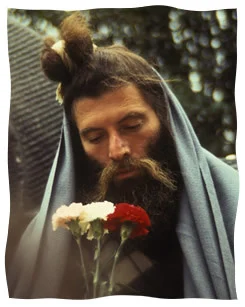
A spiritual journey from a Himalayan enclave to the Old City of Jerusalem by Miriam Karp
86th Street and Central Park West, Manhattan. Fast moving, hustling crowds, taxis blaring, high fashion struttin’ in style. It’s 1972.
In the midst of the frenetic high-paced action is a calm island of tranquility as a crowd gathers around a skinny, bearded young man wrapped in a paisley tablecloth, in lotus position, staring at his nose and radiating peace to the seekers who gravitate to his vibes. A guru, a swami, here in the Big Apple! Even hardened New Yorkers were bemused.
He gives interviews to the media, in a hand-sign language so as not to break his meditative silence, the eastern techniques he has followed with unswerving discipline to bring him to this state.
He cashed out of the business and joined the Sixties’ seekers
Swami was not raised in a Himalayan enclave, but in a typical Jewish American home. His name wasn’t exotic either, just Gil Locks, a nice Jewish boy. A stint in Japan with the U.S. Marines was the first chink in Gil’s worldview of Western materialism. He was fascinated by martial arts and the Buddhist detachment, but headed for college and the road of business success upon returning to the States.
Soon, Gil was living the American dream with a designer home, luxury car and executive status. But the emptiness gnawed at him. “When I make even more money, will I have to buy a bigger house? Is this what I’m in the world for?”
Barefoot hippies caught his eye. He cashed out of the business and joined the Sixties’ seekers for a deeper and encompassing truth. Hitchhiking through Northern California, seeking organic life in Mexico, he pushed beyond society’s conventions and expectations. Gil ran into an elderly yogi who showed him “an amazing movie of her guru in India.”
Off to find the ultimate, Gil was soon on a plane headed to the guru’s ashram in central South India. He absorbed the Hindu teachings and devoted himself with zeal to reaching the spiritual heights the path promised. Long years of deep meditation and extreme practices “brought me no joy, just a stronger and stronger desire to find the Eternal.”
Over time, he saw the guru’s discrepancies and perversions that contradicted their spiritual pretensions. He returned to America “where I spoke the language and could help someone.”
Meandering through raucous travels and adventures, Gil attracted other wandering souls. “They said they got a special feeling from me. Something radiated from me that elevated them to think about G‑d.” The free spirits followed the wind and a feeling of guidance, leading them across the country to a bench outside Central Park. Gil sat to rest, and felt magnetized to the spot. Others gravitated to the mellow energy, and the NY Times reported on the “Central Park Guru Grooving on the Grass.”
Fast forward a decade. Our intrepid idealist transformed his persona, becomng a passionate and devout Jew who now resides in the Old City of Jerusalem, a short walk from the Western Wall, How did guru morph into gefilte fish and graggers?
Guru Trip Wears Thin
“I was meditating 23 hours a day. The highs were ecstatic and the lows were painful, with lows more frequent than the highs.” Gil wondered, “Why have I been stuck all those years in my chair for the little bit of good I am doing?” He ventured into Christianity, but recognized its fallacies. He decided to “try the Jewish commandments.”
Hmmm, well, there is a commandment to put fringes on the garment corners. The Sages explain this means tzitzit, but Gil only knew the original verse in his Bible. Purchasing yarn for tassels in the local yarn shop, Gil earnestly tied one on each corner, including his shirt collar, shirtsleeve, and top of his pants. Looking like a couch cover, Gil proceeded to try more mitzvot with innocent devotion, and made his way to Jerusalem. Through the ensuing years of humorous and poignant adventures, Gil grew into the deep, grounded and true Torah spirituality.
Through the ensuing years of humorous and poignant adventures, Gil grew into the deep, grounded and true Torah spirituality
Today, Gil’s intense devotion and drive to seek Oneness has found fertile ground where it can embed its deep roots to face any wind. From his apartment in the ancient Old City, Gil goes to commune with his Creator at the sunrise minyan at the Western Wall. He shares his inspiration with students throughout the world, through his writing, mailing list and website. Innovative graphics illuminated with Chassidic teachings illustrate the aspect of G‑dliness that brings the multi-faceted creation into being. He also teaches an online course in Jewish Meditation for the Michigan Jewish Institute. After many arduous years of struggling to find unity through the multiplicity of Eastern and Christian paths, Gil is especially attuned to this deep core of Judaism.
Gil has penned five books. He compiled a book on Gematria, the numeric mystical meaning of the words of the Torah. His autobiography, “Coming Back to Earth,” is an entertaining recollection of his spiritual journey, especially informative for seekers ensconced or entranced by Eastern paths, as are his other works, “Taming the Raging Mind” and “There is One.”
Gil is well-known at the Western Wall’s Chabad Tefillin Booth. With humor, warmth and love, he helps thousands of Jews, tourists, seekers, cool Israelis, soldiers, visiting politicians, to try this mitzvah. Making the experience personal and meaningful, he asks the person to “picture everyone in your family, one at a time. Try to picture them with light on their faces and smiling. Pray for their well-being, and for everyone you love. Pray for all of us. Don’t forget our soldiers, Jews in dangerous places, and those in the hospitals hurting.”
Sharing lessons learned the hard way, Gil gives hope and direction to many. “Why did I have to go through these long and torturous steps before I came home?” he muses. Though he usually describes his days wrapped in a tablecloth with his hair tied in a knot on his head with humor, “It was not really much fun to sit there in my hut in the woods, holding my hands clenched until they cracked and bled. Nor were those many months of having demons torture me during times of great joy.” But when called in desperation by a worried young man whose Buddhist meditation started turning into voices and a wrestle with evil forces, Gil was able to guide him as only one who knows the terrain can.
Rather than walk away from his past, its unique and crazy lessons are utilized to help others. Gil’s mission now is not to “escape the movie and come to a place where the world just doesn’t affect you anymore,” but to live up to what he has found to be the highest teaching of the Torah, encapsulated in the words of the Rebbe Maharash, Rabbi Shmuel of Lubavitch: “One ought to know the route to the supernal chambers, though it is not necessary. All you need is to help your fellow with a complete heart, to take pleasure in doing another person a favour.”
The Jewish Guru – Gil Locks
From Jerusalem Life May 20, 2021
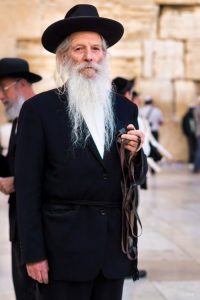
It was the 70’s. Gil Locks was a Guru.
The 60’s were a time where people searched for spirituality – sincerely following movements that seemed spiritual* on the surface. The 70’s followed the momentum of the 60s.
As a child, one of the only religious experiences that he had was speaking to the GREAT OTHER.
The sensual pleasures – like eating ice cream and going on a boat ride left him thinking, that there must be more to life than this. Could this great universe be created for just a boat ride?
Gil, did the standard fare. He went to a 4-year college and afterward started his first job. He started working as a supervisor in an organization that distributed surplus food.
Gil became a very successful businessman back in the seventies. One day he realised it was an empty lie with no true purpose, no goal except making more money and owning better things. But once you achieve your million-dollar home, the next goal is to earn a two-million-dollar home. So what’s the point? So he dropped it, and went in search of meaning. Eventually he became one of the most powerful and capable gurus in India and in the USA.
He thought to himself he wanted to something more in life. He decided to go all out to investigate life philosophies. He went to the east in search of truth. He wanted to learn from certain Gurus – that people would wait weeks just to see him. Once he waited and somehow met a particular guru. Eventually, he found out that the guru’s honesty left to be desired.
He used to sit by Central Park West and 86th Street and sit silently on the Park bench – having stopped talking as is a result of the Eastern detachment. People would join him – sitting and watching and staying silent. He communicated with motions. He had a following.
In his book – Coming Back to Earth: The Central Park Guru Becomes an Old City Jew – he mentions that this detachment and such allowed him to reach unclean powers that others did not have. At times he would see the immediate future – a Deja Vu of sorts – while awake.
Gil – who now goes by the name Gutman – In his quest – finally decided to investigate and learn about Judaism. He went to live in a bus. One of his expression of praise of Hashem that he painted on the bus was “Yea God” – teaching that “God is Love.”
Gutman is a thinker. He didn’t accept the trends, fads and social norms of society. He questioned life to get real answers. Some quotes from his book:
Quote from page 252: “No matter how small the kindness, you never know how important it can be.”
Quote: “If you take a rock and heat it up in a fire and then put it on the street, people can warm themselves from it.”
After years of searching, he found the Truth & Love he was looking for in Torah Judaism. Now he sometimes stands by the Kotel / Western Wall in Jerusalem to talk to people and discuss philosophy of Torah as opposed to the philosophies he studied and rejected in the end. Someone adamant about finding truth – with effort and earnest prayer to Hashem / God – will eventually find it – like Gutman did.
*To search for something one first must define what exactly it is. Spirituality is developing a close relationship with God / the Creator of the world. Judaism teaches spirituality through Torah. Torah is the only divinely given document that was given by God and whose giving was witnessed by millions of people. In the Torah – it teaches how to become closer to Him.
*This Post was corrected for accuracy by Gutman Locks himself. We express our thanks to him for his time and effort.
Zolt and Sandy 1970
Peter 1970
Jai Devi 1970
Tony Milo 1970 ?
Canadians Kerry and Janet McLuhan 1970 ?
Englishman Anthony from Malta 1970 ?
American Howard Levin 5 June 1970 Whitefield
Howard Levin visited India during the late 1960s and while on his travels, he heard about Sathya Sai Baba from others who had visited his ashram in South India. Howard decided to visit. He enjoyed many interviews with Sai Baba, and also experienced other phenomena that took place around the ashram. His book, Good Chances is an account from those days. Toward the end Sai Baba said to him “You must remember these days we’ve spent together. Now it is outside, next memory goes into your mind, then a permanent picture is there. When you all go back to America, if you think of these ‘good chances’ with Swami, it will be the same as meditation.
From Good Chances by Howard Levin
A taxi driver approached me and asked, “Regent Guest House, sir?”
“No, Whitefield, Sai Baba ashram.”
“Six Rupees drop!”
I had only 100 Rupees left in the world, but what did I care. I was on my way to see Sai Baba. “Sure,” I said, “Let’s go.”
Whitefield is less than 30 minutes from Bangalore Airport, but it seemed like hours as we drove through the rural countryside. The taxi finally passed through a large gate over which was a sign, BRINDAVAN. I had just entered Sai Baba’s ashram. After motioning for the driver to stop, I stepped out and stood gazing about the grounds. It wasn’t as beautiful as Manali, but almost instantly a new sensation came over me. I felt that I had truly entered a holy place. My heart began to flutter. I could actually feel something around me in the air, something I couldn’t define. I knew this was it. How and why seemed irrelevant.
An Indian lady approached me. “Please remove your chappals (sandals) sir,” she said, rather abruptly.
I took them off and carried them in my left hand.
“The Americans are there.” She pointed to a one-story building that appeared to be part of a school.
I walked along the tree-lined driveway, with red flower petals gently floating down in the breeze from the branches above. I came to the verandah of the building and looked inside a classroom. There sat a male Caucasian, meditating inside a mosquito net. he sat motionless, a frown on his face, eyes closed. Nobody else seemed to be around. Just then a tall, thin, young English-looking lady approached me.
“Hello, I’m Vicki. Did you just come?”
“Yes, I’m looking for India and her sister Marsha.”
“Oh, you must be Howard,” she said. “We are expecting you. India’s told us all about you. Come, they’re all in the kitchen.”
Vicki led me to another building which was smaller and painted dark green. Inside, in a room with a concrete floor, were about ten other Westerners preparing lunch. India was sitting cross-legged on the floor rolling chapatis (Indian bread). She didn’t look surprised when she saw me.
“Howie appa (expresses friendship) you made it, Sai Ram,” she said very lovingly. “Marsha’s here, and Beno and Hans!”
I sat down on the floor next to India and lighted one of my beedi cigarettes. India looked surprised for a moment.
“We don’t smoke here,” she said softly.
I was very embarrassed and quickly put out the cigarette. We exchanged a few words, then all of a sudden an American girl dressed in a white sari came running into the room.
“He’s leaving, He’s leaving!” she said excitedly. Everyone else in the room became very excited too and started running towards the driveway. What was going on? I could not just sit there so I hurried along with the crowd.
A white Italian Fiat, a 1960s model with orange curtains in the rear window, was driving away. All I could see was a little hand waving from a darkened glass window that was partly rolled down, and then, just for a moment I caught a glimpse of an Afro hair-do between the curtains. I stood motionless watching the car drive away, and a voice inside me was saying, “stay, stay, stay.”
“He’ll be back tomorrow,” everyone was saying. “He’s gone to Prasanthi Nilayam. The windows of the Mandir were left open and there was some damage due to rain.”
India led me back to the kitchen and explained where Sai Baba was going. She said that Prasanthi Nilayam was Sai Baba’s other ashram about 90 miles away. It was a large parcel of land with his residence (Mandir) and accommodation for visitors. It was located in the village of Puttaparthi where Sai Baba was born.
She then described Brindavan, named after the village in the north where Krishna lived as a child. Inside the walled compound was a small, all-male college named the Sri Sathya Sai Arts and Science College. As it was summer recess Sai Baba had given three spare college rooms to the foreigners; one for the ladies, one for the gents, and one for a kitchen to be shared by all. Inside a second gate at the end of the driveway was Sai Baba’s bungalow. What seemed odd to me was that there was no wall separating his bungalow garden from the college grounds, only a gate. The large area between Sai Baba’s gate and the main gate was hard bare earth. Just inside the main gate was a large banyan tree under which Sai Baba gave darshan (sight of a holy person) every day.
My arrival increased the total number of Westerners to 20. There were thirteen gents and seven ladies. Amos and Vickie, Zolt and Sandy were married couples. Amos and Vickie were very kind and made me feel right at home. Zolt and Sandy were lighter than air and seemed to be gentle as new-born deer.
Gil, an American, would meditate continually in his mosquito net. On numerous occasions when we disturbed him he would come out of his little sanctuary and tell us to shut up. Peter was warm and friendly. Robert was so-so. Jai Devi would take a whole book to describe. Bruce was unfriendly at first, but later warmed up. Beno, Hans, and Tony were old friend from my travels in India, and it was an incredible surprise to find them at Brindavan. I had met Beno and Hans in Nepal two years before, and Tony and I knew each other from Almora. Beno was one of my very dearest friends. I had spent a whole winter with him on the west coast of India. Leela and Michele were friends in New York, and it was Leela who convinced Michele to join here in her trip to Sai Baba. As it turned out, Michele became completely devoted to Sai Baba. And , Jnani, she would also require a book to describe.
Then there was Tal, another American, He frequently took one or two people aside and talked endlessly about someone named Dr Richee. I never did know where the doctor fitted in. Another important subject to Tal were the Revelations of St. John.
Howard’s sequel to Good Chances (1985) is Heart to Heart (1996).
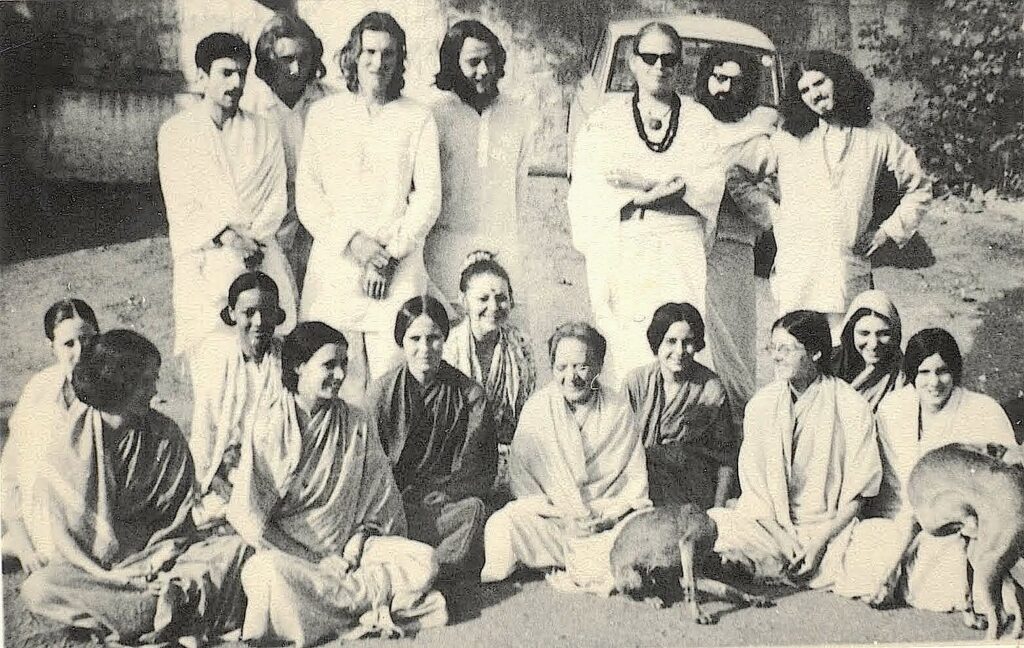
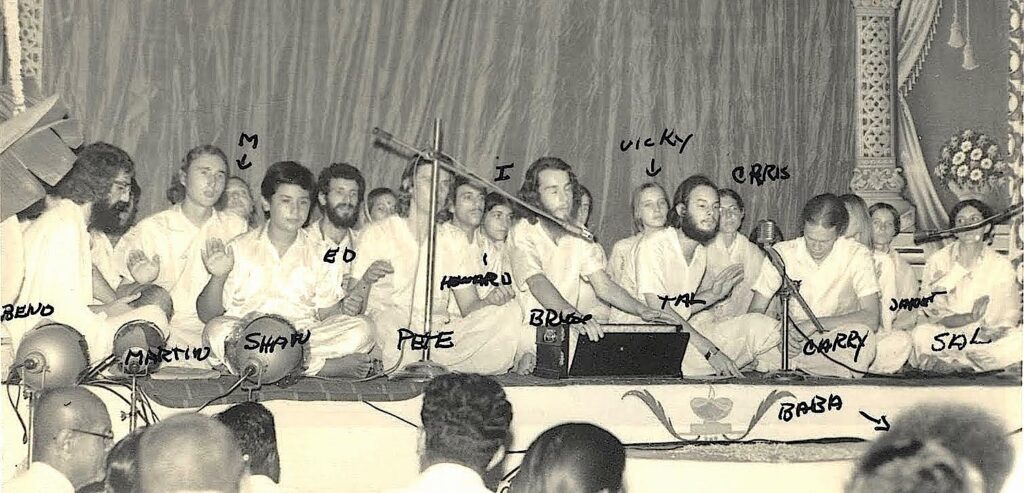
American John Grimes 1971 Prasanthi Nilayam
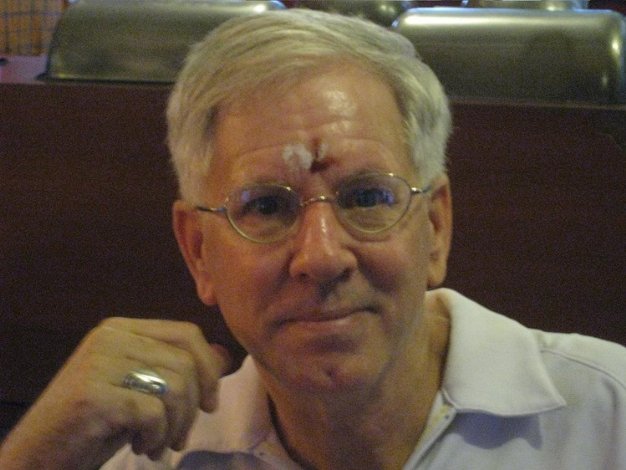
Prof. John Grimes is a world renowned author and researcher of Indian Philosophy. He received his B.A. in Religious Studies from the University of California at Santa Barbara and his M.A. and Ph.D. in Indian Philosophy from the University of Madras. He has taught at Universities in the United States, Canada, Singapore and India. His book publications include: A Song Sung in the Key of Sai; Ramana Maharshi: The Crown Jewel of Advaita; The Vivekacudamani: Sankara’s Crown Jewel of Discrimination; A Concise Dictionary of Indian Philosophy; Ganapati: Song of the Self; Problems and Perspectives in Religious Discourse: Advaita Vedanta Implications; Sapta Vidha Anupapatti: The Seven Great Untenables; Quest for Certainty; Sankara and Heidegger: Being, Truth, Freedom; Paramamrita of Mukundaraj; The Naiskarmyasiddhi of Suresvara. He currently spends his time writing and traveling between California and Chennai.
American Margaret Garland 1971 Whitefield
Margaret writes in her book Hold On… I Have God On The Line – Five weeks later I arrive at Sai Baba’s college-ashram in Whitefield, India. By plane it’s a few hours south of Bombay, and about a twenty minute drive from the Anglo-Indian town of Bangalore. As I stand outside the gate in front of Sai Baba’s gray stone-house, an old Indian woman sweeps the sandy path. Glancing up, she waves her hand to shoo me away. “Swami won’t be out for days.”
“Oh no!” I groan, dropping my knapsack to the ground. I get lost going to Brooklyn… but I got to India. Baba, please, I have to see you. Determined to connect, I beam waves of love in his direction. Hilda taught us, love is the one thing he can’t resist.
A tall slim-man, dressed in white, steps out of the stone house, drags open the heavy gate and walks briskly over to me. “Are you the American girl who just arrived?” he asks.
“Y-yes,” I stammer. “Come with me. Swami is waiting.”
“Oh no!” I groan, dropping my knapsack to the ground. I get lost going to Brooklyn… but I got to India. Baba, please, I have to see you. Determined to connect, I beam waves of love in his direction. Hilda taught us, love is the one thing he can’t resist.
A tall slim-man, dressed in white, steps out of the stone house, drags open the heavy gate and walks briskly over to me. “Are you the American girl who just arrived?” he asks.
“Y-yes,” I stammer. “Come with me. Swami is waiting.”

Margaret writes in her book Hold On… I Have God On The Line – It is 1970, a few months after Woodstock; the country is at war in Viet Nam and at home a cultural revolution is going on. I’m a bride of twenty-four, working as a job placement counsellor for Fanning Personnel on Wall Street. My goal is to have a normal life. I’d be happy just pushing a shopping cart.
My friend Maria is more adventurous. She’s an airline stewardess with Alitalia and has just returned from a visit with a distant cousin in Italy, who happens to be a living saint named Padre Pio. It’s through Maria that I, a Jewish girl, first learned of mysticism; so when I attend her welcome-home party, it’s not surprising to hear talk of another living saint who performs miracles. This saint is Indian. His name is Sri Sathya Sai Baba.
Apparently Sai Baba is a lot like Padre Pio, healing the sick and instilling spiritual faith by performing miracles for people all over the world.
The next day a dreadful task awaits me. I have to phone a client to deliver some bad news: National Distillers has turned him down for a managerial position. For nearly two months I encouraged him to hold out and refuse other offers, so now I’m feeling pretty guilty.
I think of the Indian saint, who supposedly works miracles. Sai Baba, if you really have cosmic consciousness and can hear my prayer, please have National Distillers change their mind and hire Andrew White today.
Before noon I receive a call from the head of Human Resources at National Distillers. They have a problem with the man they hired and want to know if Andrew White is still available. By four o’clock White is hired, and Sai Baba is named god of placements in the data-processing department of Fanning Personnel.
Each day we write our wish list and tape it to the window for Sai Baba to read. We are half joking, half serious, but the scary thing is it really works, and we start placing people like crazy. They come in and say, “Hey, I hear you’ve got a god of placements.”
Then Fanning’s vice-president comes down to sniff around. “There’s a recession going on out there, people getting laid-off left and right. How come your department’s making more placements than ever. What’s going on?”
“We’ve got this god of placements,” someone says. “A what?” “Speak to Maggie. She’ll fill you in.”
It’s an embarrassing moment. Sure, Sai Baba is our little office joke; but whoever he is, he sure delivers, and I’m not about to jinx my life with ungrateful mockery. So with all the dignity I can muster, I present the facts.
“Doggonit,” he shouts. “If it works, do it.” He suggests I march over to the secretarial placement division and share with them. But The Exorcist has just come out, and they think I’m into black magic.
Three months later my life derails. It happens so quickly I hardly know what hit me. My husband, Peter, admits to having an affair with an older woman, a Polish movie star no less.
The pain is swift and cutting, bringing me to my knees. Something splits; major ego crash. My lifeline now is Sai Baba. The more I call his name the better I feel. In fact, I find myself strangely intoxicated. I wonder if I’ve flipped out.
I need to learn more about Sai Baba. I call Maria. She refers me to Hilda Charlton, a yogini who lived on Sai Baba’s ashram in India for many years. Hilda has the voice of an angel, but when she invites me to her meditation class I decline, thinking it too much of a “hippie thing.”
Within days a series of inexplicable coincidences occur. I think of someone and they suddenly appear, first a college friend from Chicago, then Peter on a midtown Manhattan street. He had just moved his things out of our Queens apartment. He is so shocked to see me, he nearly drops his bag of groceries.
How the magic of divine intervention befuddles the logical workings of the brain. Through the inexplicable comes surrender to a Higher Intelligence. In the moment of shock, we recognise ourselves as actors in a vaster play, and suddenly the mood of acceptance and forgiveness becomes the theme.
He invites me to see the small apartment he shares with a friend, and as if in a dream, I follow him up three flights of stairs. Inside I see her photograph. The other woman. Aletzia is her name.
She has a hard sophisticated look; dark hair pulled tightly back, a mole above her upper-lip and long manicured nails. I accept the reality; it gives me closure. But when I get home I feel sick. Am I to let go so easily, or should I fight to get him back? I drag out the Hoover and start vacuuming the wall-to-wall carpeting in the living-room to clear my mind.
Suddenly weak, I go to the bedroom and lie down. I don’t wake up until the next morning. My mind is clear as I recall I dreamt Sai Baba came into my apartment. As I enter the living-room, I see a book lying on the carpet. Certain I hadn’t left it there, I’m struck with fear. I run to check the front door. I find it locked. Who came into the house while I was asleep?
Picking up the book, I notice two blank pieces of paper on the floor, folded in a cross. Spanish dictionary…cross. Mexican Divorce… Could this be a message from Sai Baba?
I call Hilda and tell her what happened. Now I’m asking to come to her class. I need to move closer to this guiding power, to understand the spiritual intervention in my life. I am exhilarated, but the part of me still clinging to a normal life feels frightened.
Hilda lives on West End Avenue, on Manhattan’s upper-westside. It’s a majestic old building with a grand marble entrance, and I have a feeling of wonderment as the elevator operator brings me to the eleventh floor. The scent of incense draws me down the hall where Hilda stands in the doorway. A stately older woman, she is dressed in a blue silk sari. Her deep-set pale blue eyes are striking. To look into them is like diving into the universe.
We talk in the foyer, where I see Sai Baba’s picture for the first time. I am so shocked by his unusual image: his vivid orange robe against dark skin and a huge halo of Afro-styled hair, that I raise my palms and cry, “Eeewww.”
Hilda leads me into the living-room, where I join the group sitting cross-legged on the floor. She settles into an arm-chair, lights some incense under Sai Baba’s picture, then turns to us, like a goddess sparkling with light.
“Okay, kids,” she says, with the joyful manner of a kindergarten teacher. “Before we begin the class, I want you all to take a few deep breaths and centre yourselves. The energy feels a bit heavy tonight. So let’s raise the vibrations. If someone’s holding onto a problem, please check it at the door. You’re free to take it with you when you leave. Right now we have no room for negative energy.”
I assume she’s talking about me, so I do as she says.
Now she’s introducing me to the group, asking if I’d mind telling the story of how Sai Baba came into my life. I’m horrified. How can I share my personal drama with all these strangers? But it’s impossible to say no to Hilda.
Self-consciously, I stand up and speak about the god of placements, my break-up with Peter and all the coincidences I attribute to Sathya Sai Baba. I wonder if it sounds made-up, but their warm smiles are encouraging.
Later someone remarks, “That’s what happens when Sai Baba comes into your life. Karma speeds up. Coincidences start happening.”
I don’t know the word karma, the cosmic law of cause and effect; and I’m only vaguely aware of its corollary, reincarnation. In fact, I have no spiritual knowledge at all. Yet clearly, a Higher Force has grabbed me by the neck and is pulling me to a new awareness. Hungry for spiritual information, I devour Ram Dass’s book Be Here Now, Paramahansa Yogananda’s Autobiography of a Yogi and any book I can find on Sri Sathya Sai Baba.
Each Thursday night I return to Hilda’s class. She speaks of the teachings of Jesus and the ascended-masters of the White Brotherhood, primarily El Morya, Katoomi and Saint Germaine, enlightened beings who have renounced personal liberation to stay close to earth and guide humanity to higher spiritual awareness. It is the same work as Sai Baba, who has incarnated on earth during the Kali Yuga period to protect the innocent and save the planet from annihilation.
According to the ancient Hindu sages, the Kali Yuga is a time when human consciousness is entrenched in materialism, negating spirituality and moral values. Yet all major religions predict the emergence of a Golden Age in our lifetime, giving birth to heaven on earth.
Hilda explains that as we absorb these higher spiritual teachings and live in conscious awareness of God’s Light, others will be uplifted, forming a chain of souls in this period of transition.
Sitting at Hilda’s feet, I am thrilled by her stories of Sathya Sai Baba and the great yogis she has met in India. She makes the spiritual journey seem like a cosmic adventure, inspiring me with her own hell-bent determination to realise God. But when she starts leading the class in meditation, I am lost. Where do they go when they close their eyes! I resist going within to find my own spirit.
In spite of my reluctance to meditate, I feel deep inner peace from connecting with these powerful energies. I glide on angel-wings all week, and when Thursday rolls around I return to Hilda’s class for another spiritual fix.
I find myself opening to a Higher Order, and as I apply the teachings of the masters to my life, the more joyful I feel. But still, I find it hard to forgive enemies – especially Peter’s girlfriend, Aletzia. I stay awake imagining dreadful things: like what I’d do if I met her. Would I grab her by the throat and strangle her or just act cool and aloof?
A few months later I make the decision to file for a legal separation. Leaving the lawyers office, I feel good about moving on with my life. It is a clear brisk winter day and I’m enjoying the bustle and excitement of the city, not minding the crowded subway station, due to a taxi strike. Amidst the confusion, a Salvation Army volunteer is clanging a bell for Christmas donations. It starts me thinking about Jesus and his teachings of forgiveness.
The train pulls in the doors open, and the crowd propels me into the centre of the car, where I’m pressed against a woman wearing fur. Her dark hair is pulled back tightly in a knot and above her lips there is a small mole. I recall having seen her face before.
“Do you know the time?” I ask.
She lifts a manicured hand and checks her watch. “Vel, it’s one fifteen,” she says with a Polish accent.
I ask, “Are you Aletzia?” She flutters with confusion. “Yes. How do you know who I am?” “I’m Peter’s wife,” I say evenly.
Her jaw drops. She turns to bolt, but the crowd is packing us in. “You couldn’t have followed me. I got on at Wall Street… you got on at John…”
An expansive calmness washes over me. “But how did you know who I am?” she asks. I can’t resist saying, “I’m psychic.” The train picks up speed. Aletzia looks sick to her stomach.
“I was just thinking about Jesus,” I babble. “You know, how he said we should forgive our enemies. And look, here we are. Isn’t it amazing?”
“Jesus?” she says with disgust. “I thought you and Peter ver Jewish.” “Yes, but I believe in the teachings of Jesus.” “Vel, I’m a materialist,” she offers. I think about that for a quick moment, then reply, “I like your fur coat.”
“Oh, I just had it remodelled,” she coos.
She lives in a world very different than mine, and for whatever reason, Peter has chosen to be with her. In accepting this fact, just as it is, my pain and conflict disappear, and I’m set free to move ahead on my path.
The train comes to a sudden halt, and without a goodbye, Aletzia pushes through the crowd and out the open door.
Leaving the subway, I rush to the nearest phone booth and call my lawyer. I tell him I need to get a quick Mexican-divorce, because I’m leaving for India as soon as possible.
Five weeks later I arrive at Sai Baba’s college-ashram in Whitefield, India. By plane it’s a few hours south of Bombay, and about a twenty minute drive from the Anglo-Indian town of Bangalore. As I stand outside the gate in front of Sai Baba’s gray stone-house, an old Indian woman sweeps the sandy path. Glancing up, she waves her hand to shoo me away. “Swami won’t be out for days.”
“Oh no!” I groan, dropping my knapsack to the ground. I get lost going to Brooklyn… but I got to India. Baba, please, I have to see you. Determined to connect, I beam waves of love in his direction. Hilda taught us, love is the one thing he can’t resist.
A tall slim-man, dressed in white, steps out of the stone house, drags open the heavy gate and walks briskly over to me. “Are you the American girl who just arrived?” he asks.
“Y-yes,” I stammer. “Come with me. Swami is waiting.”
My heart thumps like a drum, as I follow him inside the house to a small room, where I’m told to be seated on the cool slate floor. I take a few deep breaths and try to centre myself.
An interior door slides open and Sai Baba appears: the striking gown of orange silk, the huge halo of frizzy black hair, the body smaller than I could have possibly imagined, stands in front of me. He seems unreal. An adorable Disney cartoon character who has popped off-screen to play in the world. He smiles, no doubt equally amused by me. Then He lifts up his hands and goes, “Eeewww.”
I get it. He’s mimicking me. “Eeewww” was my response when I first saw his photograph. The gesture, rich in meaning, suggests the intimacy of our relationship, his all encompassing range of knowing. Could there be a better way to say, Hi… it’s me, your inseparable Self, your inner-voice in form?
Baba motions for me to stand. I feel his gentleness. It opens my heart. My mind swirls into cotton candy. “Hilda says hello,” I chirp like a mindless parrot. “Hilda says hello.”
Baba turns and looks up at the tall man. “She is very spiritual, but no discipline. I helped her in industry.” He shakes his head. “Very disappointing marriage.”
Then to me he adds, “The problem with you is you think you do this and that will happen; you think you do that and this will happen. Understand, God does everything.”
“Yes,” I say.
“Sometimes mind is weak and you have doubts.” He studies my eyes, then turns again to the man in white. “Sometimes the light is too bright, and she has problem with eye.”
Baba explains the man is an eye surgeon, though it is unclear why he is in the room, as Baba doesn’t seem to need an interpreter. Nor do I get what he means about my eye, because it relates to a future ailment. “How long do you want to stay?” he asks.
“I don’t know. A year?” A lifetime? I haven’t the foggiest…
“Good. Swami gives you nice room. Tomorrow we leave for Puttaparthi. Tonight you stay with western-women in Kadugodi.”
I don’t know what he’s talking about. Maybe I can figure it out later. My mind’s dissolved; I’m not quite in my body.
“Would you like some vibhuti?” he asks sweetly, speaking of the sacred healing ash he manifests from thin air. I nod as Baba pushes up his sleeve. Waving his right hand in a flattened position, an ounce of gray ash pours into my palms.
Even more amazing is the way he takes the time to search for an envelope to hold the ash. I wonder if it would be easier to just manifest one; but a small pink envelope is found, and he patiently helps me transfer the ash into it.
Even more valuable than vibhuti, Baba has revealed the exquisite sweetness of his essence, the pure vibration of unconditional love. “I know,” he says, reading my mind. “What you really want is spiritual knowledge. That will come.”
Instinctively, I bend down to touch his feet. He laughs and tells me to go. The interview is over.
I leave coasting on a velvety cloud, past the gate, where I see Betty and Chandra. I know them from Hilda’s meditation class.
“Look at you…. all blissed-out,” Chandra laughs as we hug. Like guardian angels, they bring me to the village of Kadugodi, where a group of western women live.
On the way we cross a wide expanse of open field. The wheels of an Ox-cart filled with hay, creek and sways over mounds of ant-hills in the distance. We pass a woman making patties out of cow dung. The smell is strong and dry. Her hands move quickly, gracefully. There are white flowers in her hair and many plastic bangles on her lean wrists. Our eyes meet. We both smile. Her teeth are red from chewing beetle-nut.
We arrive at a small stucco-house, close to a Muslim mosque, and I am introduced to the western-woman. There are seven of them. They want to hear about my interview with Baba, but I am still so lightheaded I can hardly speak.
Chandra brings me to an ancient stone-well, where she draws water with a bucket. Then in the private courtyard she shows me how to squat over the latrine, using water from a plastic-jug to cleanse myself, with the left hand only, breaking the harsh news that Indians don’t have the luxury of toilet paper.
Kneeling over a kerosene stove, they prepare a meal of white rice, shredded coconut and lentils. After dinner, eaten with the finger tips of the right hand, I am shown how to wrap a sari. I feel so feminine in the flowing cloth.
The next morning we hire cars to take us to the ashram in Puttaparthi. It is uncomfortably hot, and after a few hours I find myself annoyed by Betty’s incessant chatter. She has taken to speaking in a sing-song pigeon English, as if displaying her assimilation to the native culture.
“How many more hours do we have to go?” I ask the pyjama-clad driver.
“Very near,” he says with a wobble of his head, a mannerism I’ve noticed peculiar to South Indians. “Only five more hours.”
The desert has a stark beauty. There are huge stone boulders and dark chocolate hills rising from beige sand. Men trudge on donkeys, while women dressed in worn cotton saris carry bundles on their small dark heads. It feels so ancient. How long have we journeyed back in time!
Just as I’m thinking, I can’t sit a moment longer, we pass through a bustling bazaar and enter the gates of the ashram. A sign reads, Prasanthi Nilayam, which Chandra explains means “abode of great peace.”
Stepping out of the car, my muscles stiff from the long ride, I am struck by the exalted energy of this sacred sanctuary. I look around at the large dormitories casting long shadows in the setting sun, and it occurs to me, I’ve arrived at spiritual summer camp.
The next morning I awake before dawn to the Sanskrit chanting of Brahmin priests. The air is crisp, fragrant with a woody scent, possibly incense. Baba has assigned me a room, but I prefer sleeping on the roof, beneath the stars with the western-women. They explain Baba evicted them from their dorm-rooms a month ago, scolding “All emotion, no devotion.” So they brought their sleeping-mats to the roof, where they like it even better.
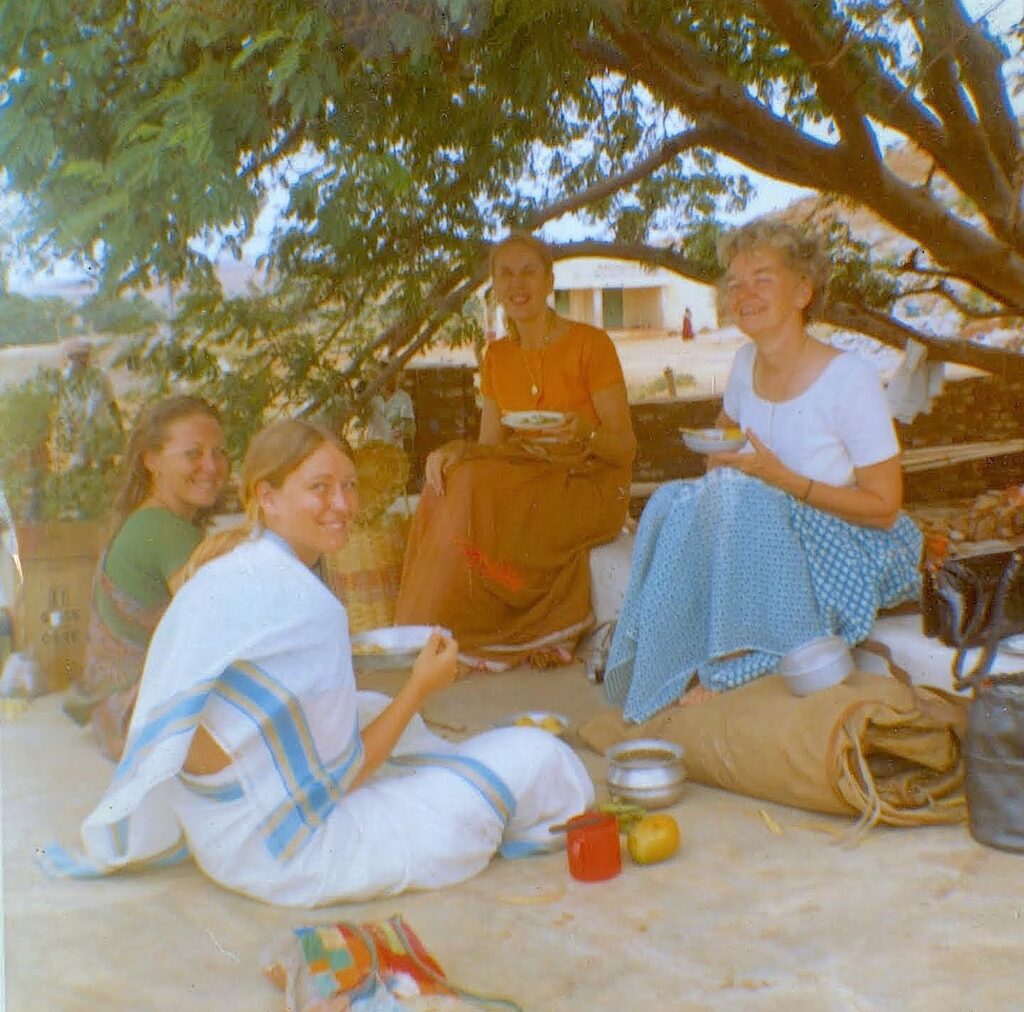
We sit together in meditation. Later we go past the front gate, through the bazaar to the bath-hut, where a penny buys a bucket of hot water. At the chai shop, down the road, we eat farina patties called iddlies and drink hot chai out of glasses.
Twice a day Baba emerges from his small room beside the large mandir prayer-hall, blessing the crowds, which is called darshan. People from all over the world have pilgrimaged to give thanks for miracles and answered prayers. They wait patiently, hoping for the chance to get close to hand a note or be chosen for an interview. No doubt, each one has an amazing story to tell.
In the evening hundreds pack into the mandir to sing devotional songs, called bhajans. The purity of their voices against the resonant sounds of the sitars is stirring; and as I sit amongst the Indian woman, I feel a delicious tingling energy rise up my spine.
I close my eyes; it is impossible not to meditate. When my eyes open again, I see Baba up front, seated on a majestic throne. Is it my imagination, or is he looking straight at me?
Then all at once, without warning, I feel heavy hearted. My pipeline to Baba is cut, and I’m aware of a strange mixture of emotional pain: a little sadness, some disappointment, a lot of self-pity. I recall Hilda saying, “Offer your emotional garbage up to Baba.” I try letting go, but it’s not easy. These negative feelings are like old friends; they’re not leaving so quickly.
Hey, I’m still new to this. I’ve been on the spiritual path for what, fifteen minutes? Yet I intuit I’m here to be washed clean. Somehow I must process out this negativity to connect back to the bliss. The inner turmoil rips me apart. Then I realise, This isn’t summer camp, it’s a friggin’ mental hospital.
I’m not alone in my emotional upheaval. The westerners call it a purification process, the burning of karma. Sitting around the chai shop, we compare notes. Hilda’s people say she’s lured us here, playing the part of a sweet ditzy old lady who wouldn’t kill a cockroach. More likely she’s the Goddess Kali, in cahoots with Lord Shiva to slay our egos. But if not for her classes, teaching us to release negative energy and hold a higher vibration, we would never endure the transformational fire of the ashram. We understand why many come, only to take-off in a few days.
On some days Baba ignores me at darshan, not even glancing my way. But I believe everything he does is a teaching, intended to release us from the bondage of desire. He has said it takes more energy to ignore someone than to give attention, so I try to stop looking for outside approval and intend my best vibration. He has eyes in the back of his head. He seems to know everything we’re thinking, and when I least expect it, he comes over and pokes at my ego.
“Go! Your husband is waiting,” Baba now tells me. I don’t reply, trying to maintain my cool. “Go!” he pokes again. “Your husband is waiting.”
Thinking of Peter, anger wells up in me. “What do you want me to do, go back to him?” I snap. I can’t believe I’m answering Baba back.
He smiles. “Acha…acha,” he says, and I wonder, Why is Baba saying good?
Was he dredging up my anger toward Peter so I could let it go and heal? Yet his words hold other subtle meanings. Sometimes he refers to God as husband, and I wonder if “Go! You’re husband is waiting.” means I should find union with God. No doubt both interpretations are correct, though I sense emotional healing must come first.
Like layers of onion skin, my negative emotions are peeled away. The process is painful, because I tend to cling. But once the dark night of the soul has passed, the integration of spirit is exquisite, and I treasure the bliss. I know it must be guarded, so I stay in my heart, though my mind questions: How long before my ego-self finds something new to cling to? Will desire and attachment lure me away? No, I must keep a vigilant watch to renounce negativity and stay close to God.
A few days later, the westerners are being photographed with Baba. Nearly two dozen are jockeying for position up front. I catch myself, then let go of the desire to stand close to him. Finally, when everyone is in place ready to say cheese, Baba walks to the last row and stands next to me. Okay, I get it. Thank you for the teaching on renunciation.
There is more to learn about renunciation when Shanti, a beautiful African-American woman, shaves her head and dresses in the orange robes of a renunciate. Baba gathers the western-women together. “This is outward show,” he says, wagging a finger at Shanti. “Renunciation must be of the heart. Give up jealousy, give up greed, give up anger and hatred. Dress nicely.” He tilts his head and says sweetly, “Always ask, Where’s my Lord, where’s my Lord?” For a moment his dark-eyes pierce mine. “Not good, renunciate one day, worldly the next. Much better to take middle path.”
My possessions are few, and I have a sense of freedom knowing I can pack them all into a knapsack. I have no fear of losing anything of value, because my passport and traveller’s checks are in a safety deposit box I rent at a local bank. My days are spent meditating, reading spiritual books and thinking about God. I am well pleased with myself. I have come to India. I have renounced a worldly life.
These are my thoughts on the way to darshan line, as I clip a safety pin to the waist of my sari, securing a small cotton purse, called a pisa bag. It is comprised of three smaller pockets: one holds the Vibhuti Baba made for me, one holds the key to my safety deposit box, and one holds a hundred rupees, equivalent to ten American dollars. This money will last a long time in India, as Baba does not charge to stay at the ashram.
I lock the safety-pin, when suddenly the pisa bag disappears from my hand. My heart sinks. Where has it gone? I look around, but see nothing on the ground. Baba has taken it! I’ve heard stories of how he’s done this to others. They say when he takes something away, it’s an energy exchange, and he returns more than ten-fold. But why my pisa bag? I need these things. He has to give them back to me. I plan to speak to him on darshan line.
At darshan, Baba appears as brilliant as the morning sun. The crowd is huge; thousands are arriving for the Shivaratri festival a few days away. This high holy day is to honour Lord Shiva, the destroyer aspect of the Hindu godhead. It is held late February, early March, when the moon is furthest from earth and human desire is weakest. But right now my pisa bag is all important. Baba approaches. With his fingers on his lips, he goes, “Shhhh,” then walks off.
Yes, Baba. Obviously this is a test, but I can’t detach.
Days pass. Where’s my bliss? Was it all in that stupid pisa bag? I’m disgusted with myself, yet I can’t let go.
I plunk myself down under a tree and try to surrender these worldly attachments that are making me so miserable. But nothing is moving, I’m stuck in mud. I close my eyes and start praying for mercy, until my dark cloud begins to break, and I see how easily I got lost. Filled with gratitude for this exquisite teaching of detachment, I realise Baba went to a lot of trouble for me to get it.
I open my eyes to find him standing over me. He flashes a discerning look, then walks off, calling softly over his shoulder, “Three bags full.”
One night I am jolted from my sleep. A small furry animal is cuddled up to me. Yuk! A wild dog! I push it away. “Get out of here, you mangy thing.” As I try to fall back to sleep, I think, How can I feel this way on Baba’s ashram, where there’s only the vibration of divine love?
The next day Baba gathers the westerners for a group interview. He tells us that we are sustained in this world by our mother’s love. “My love for you is greater than a thousand mothers,” he says. “But not every child can be given candy. It is more loving to give a sick child medicine.”
Someone asks about the nature of God, and Baba turns to study me for a quick moment, as if checking out my aura. “God is in every thing,” he says, “even the mangy dog.”
I think of Shirdi Sai Baba, the holy man who lived near Bombay in the early 1900s. They say the fakir just appeared one day, dressed in rags, sitting on a rock. For many years he performed miracles and blessed spiritual seekers who travelled far and wide for his blessings.
One day a woman devotee brought Shirdi a cooked meal she had worked all day to prepare, stopping only to chase away a hungry dog barking at her door. That evening she proudly presented the meal to Shirdi Baba, but to her surprise he refused her offering. “I came to you this morning as a hungry dog,” he told her. “But your heart was closed and you sent me away.”
I meet an old woman living at the ashram in Puttaparthi named Shirdi Ma, who knew the fakir as a young woman. She glows with an inner beauty, as she explains, “When Shirdi Baba was ready to leave his body, he told me to go find him in Puttaparthi, that he would be reborn as Sathya Sai Baba.”
Reincarnation is still a new concept to me. To comprehend it, one must consider death, which I prefer not to think about; but soon after the Shivaratri festival, we return to Whitefield and I receive word that my Aunt Pauline has passed away. That evening Baba gathers the westerners in one of the classrooms. Everyone is singing bhajans that is, everyone but me. I have sunk into a deep depression. Baba, if you know what’s going on, please give me a sign that there is life after death.
At that moment, Baba gets out of his chair and walks over to me. His hands on his hips, he leans over and asks, “Don’t you know a song?”
The fact is, I can’t carry a tune to save my life, and I rarely sing bhajans. But I have managed to learn one: “Sri Krishna, Chaitanya, Prabhu Nityananda, Hari Ram, Hari Krishna, Radee Govinda,” I recite to Baba, who repeats the words in a mimicking tone. Then He motions for me to join in, as he sings “Sri Krishna, Chaitanya, Prabhu Nityananda…” faster and faster, until my mind has stopped and I’ve come to a place somewhere out of time. It is as if my psyche has been opened and operated on. Later I am exhausted, but my inner pain is gone.
Baba gives the westerners frequent interviews. Sometimes he tells us fables of the ancient Hindu gods; sometimes he inspires us with stories from The Bhagavad Gita; sometimes he passes out treats, like rock candy manifested from his own hand.
One day Ram Dass (f.k.a. Richard Alpert) appears on darshan line. The westerners are excited. To many he is a cultural hero, an important spiritual teacher who has led many on the path. Once a professor of psychology at Harvard, he and Timothy Leary experimented with LSD, leading the movement in consciousness expansion. Millions followed, believing it a path to God. But when Ram Dass found LSD had limitations, the guru Paramahansa Neem Karoli Baba showed up in his life, and Ram Dass pointed his followers in a new direction.
Sai Baba now greets Ram Dass and calls him for an interview, along with the westerners.
“What is your name?” Sai Baba asks the former Harvard professor, who sits respectfully at his feet.
With his long curly-beard, balding head and bright toothy smile, he looks like a lovable garden gnome. “My name is Ram Dass,” he replies.
“Such funny names you westerners have,” Baba jokes. “And what is your work?”
“I’m a teacher.” “A teacher of what?” Baba asks. “I teach atma.” Baba looks curious. “And what do you know about atma?”
I don’t catch Ram Dass’s answer, but it seems pleasing to Baba, who manifests a gold necklace for him.
Near the end of my stay with Baba, he tells me to live with my parents when I return to America.
I’m horrified. It would be humiliating to move home after being a married woman. Besides, my parents and I are from different planets. As much as I love them, there has always been tension between us, and now after a year in India, it is hard to imagine our speaking the same language.
But okay, if I’m to work on family karma, I will write home immediately.
Before I even post my letter, my parents write to tell me they’ll be meeting me in London.
It’s not easy to leave Baba, and on the flight to London I grieve for this closed chapter in my life. It requires me to turn inward, to find the courage to face the unknown. I tell myself to have faith. God, Sai Baba. the masters; they are all with you.
My parents meet me at Heathrow Airport. A joyous reunion, I feel appreciated and loved. I’m wearing a green silk sari and think I look fabulous, but apparently my father is not so impressed. He suggests we go straight to Harrod’s and find something appropriate for me to wear.
This image control is unreal, but nevertheless I enjoy the make-over, and I’m soon wearing a tartan-plaid kilt, a pink cashmere sweater, a Burberry trench-coat, red leather loafers and Givenchy perfume.
The week in London is fabulous: a civilized decompression chamber with hot baths, proper toilets, a real bed, sightseeing, fine restaurants, more shopping, theatre, museums, and then the flight home.
Arriving at JFK airport I’m struck by the frenzied energy of New York. I have the distinct feeling I don’t belong here. I assume it’s culture shock; but why was it easier to adapt to India than the United States?
The large suburban house seems a pretentious shrine to upward mobility, and I immediately set up an altar in my bedroom, with pictures of Baba and the other holy people I collected in India. I light candles and burn incense, but my father is not happy. He thinks it’s a sign of depression, and he doesn’t want me depressed.
I say, “I’m not depressed, I’m meditating.” But he is certain I went to India because I had a nervous breakdown due to Peter, who he never liked very much in the first place. I resist arguing; if I have something to prove it is only ego. But soon my skin breaks out in hives, and I have to see a dermatologist, which proves he was right, I must be depressed.
My father suggests I go on a singles-weekend in the Catskills. “You’re twenty-five,” he points out. “Not quite over the hill, but you should start thinking about finding another husband.”
“How ‘bout Nantucket?” I wouldn’t mind communing with the sea. “Why Nantucket?” he asks. “Isn’t that where Bob and Elaine met?’
In 1955 my father told my Uncle Bob, then a bachelor of thirty, “I think you’ll get married soon. Her name is Elaine, she’ll look like Audrey Hepburn, and you’ll meet her in Nantucket.”
A year later Bob brought a pert young woman to a family gathering and introduced her as Elaine. Everyone laughed, knowing Bob’s keen wit. But Elaine really was her name, and she did look a lot like Audrey Hepburn. Since then, my father owns the title of family wizard, instilling respect, if not fear, in many of us.
So off I go to Nantucket, where I stay at The Mad Hatter Inn and get a great tan bicycling and swimming all week. One evening I stroll through the cobblestone streets and pass a crowd coming out of a church, where a Charlie Chaplin film is playing. In the sea of faces notice a bearded fellow about my age, and I have a strange compelling feeling to tell him about Sai Baba. Stranger still is that no part of my brain is censoring the impulse. But how am I to go about this?
He stops to talk to another fellow, and as I approach he glances my way.
“Do I know you?” I ask. “No, but you might like to,” he responds. I smile. “Really.” “Hey, we’re going for coffee. Wanna join us?”
His name is Jeff and he teaches Phys Ed at a high school in Harlem. He thinks it’s groovy that I went to India. He heard of Ram Dass, but not Sai Baba.
“I have a book on Sai Baba, if you’d like to read it,” I say, and he walks me back to the rooming house. On the way he starts hooting and hollering, with an uncontrollable energy. I think, I’ve made a mistake. Why am I getting involved with this jerk? Then I hear, You’re not getting involved. Just give him the book and be done with it.
The next morning I find Jeff waiting in the lobby. He wants to see me again, but I brush him off, saying he can keep the book.
When I get back from Nantucket, my father asks, “So now what are you going to do with your life…besides meditating?”
“I can get a job as a placement counsellor.”
“I’ve been thinking,” he says. “…you should finish college. In this world you’re only half a person without a degree.”
Now I understood why Sai Baba suggested I move home. Nobody busts egos like my father. But deep down, I also know he’s my best friend.
I register for the fall semester at Queens College. I want to major in English; but the classes are full, so without recognizing the hand of fate, I wind up in the philosophy department, where I meet Harvey Burstein, an associate professor who teaches Plato. He doesn’t just teach it, he lives and breathes it. Plato is his spiritual master, and he draws his students close to him and his family, with a strong sense of community.
I begin to feel a sense of order in my life, a sort of mission: to study western-thought and find the point where it meets the east.
I want everything tied up in a neat little package, where there are no disagreements. But it will be years before I understand there are two separate realities: the world of spirit and the world of material, even if they exist simultaneously.
The material world is everything out there, with a logical chronological order, and a sense of separateness from Spirit. The world of Spirit, on the other hand, is unmanifested Source Energy, which appears chaotic to the rational mind that can only glimpse its inter-connected Oneness through intuition. Matter cannot intervene in the spiritual realm, but when Spirit intervenes in the material realm, it is called a miracle. Ironically, the tension between these two worlds now plays out as a divine sitcom in my family.
My brother comes home from law school for the weekend. The phone rings. I take a message, then misplace his expensive pen. He is very upset, and as I search the house, he complains to my father, who lectures me on my disrespect for material objects. I apologise, but he rages on about my hippie values.
Wounded, angry words flow. “If you’re so attached to material things,” I say, “then eventually something valuable may be taken from you. Maybe even your silver Cadillac.”
My father smirks. “It’s a universal law,” I say. “Universal law… give me a break.”
The next morning the silver Cadillac is gone. Finally my mother says in humour, “Can’t you get the car back?”
I’m surprised she credits me with such powers. Yet I have the audacity to claim, “I will have the car back before dawn. On one condition. No more fussing over my spiritual practice.” My mother agrees, and I proceed to light candles, burn incense and chant, “Sri Ram… Jai Ram… Jai Jai…. Ram Om” for over an hour, in a voice so loud it shakes the house.
Whether I’m putting on a show, rubbing my spirituality in their faces, or I actually think I can bring back the Cadillac, I don’t really know.
Around four a.m. my mother runs into my room, dressed in her fluffy pink robe, calling “Margaret, wake up. The police just called. They found the car. They caught the guys just as they were about to strip it for parts. They said it was a miracle. Did you hear that? A miracle!”
“Praise God!” Tell me He’s not a humourist.
I call Hilda to tell her the story. Living on Long Island, I rarely see her now.
“There’s a little gathering for Sai Baba’s birthday on November twenty-third,” she says, “and I’d love you to speak. It’s being held at the NYU Law School auditorium.”
I’m honoured to sit on stage with Hilda. Lately she introduces me as a writer. I have no idea why she does this, as she is not one to exaggerate or build false ego. I figure if anyone asks what I write, I’ll say, “letters.”
As hundreds of people file into the auditorium, I begin feeling queasy, hoping I won’t disappoint Hilda or Sai Baba.
When I step up to the podium and gaze out at the blur of faces, I forget my prepared speech and say the first thing that pops into my head. It gets such a positive response, I have to wait for the laughter to die down. Something quite joyful and uninhibited comes over me as I confess my zealot behaviour, this crazy urge I sometimes get to tell perfect strangers about Sai Baba, only to find it’s a mistake in judgment… like the time with Jeff in Nantucket.
I hear someone in the audience hooting and hollering. Ohmygosh! It’s Jeff, standing on his chair! He says Sai Baba changed his life and put him on the spiritual path. He now meditates and teaches hatha yoga to his high school students in Harlem.
My father has no interest in my Sai Baba stories. At the dinner table he likes centre-stage, often heckling me out of the limelight with a parrot-like sound, that goes: “hoc… hoc.” This is Yiddish for yakiry-yak.
The motor vehicle department has sent him a new set of license plates. “I guess Sai Baba must be having fun with me,” he says, holding up the plates that read: HOC 777. He starts carrying Sai Baba’s picture in his wallet; and when he loses his temper, he takes it out and says, “Baba help me.”
Trusting a Higher Power is guiding us, a remarkable change has come over my family. My mother even keeps a framed picture of Sai Baba in the house.
My father is now worried about the neighbours kid. Joey’s spine is to be operated on, and the wizard insists he’s in the worst hospital on Long Island. “No one comes out of there alive. If they operate, he’ll be a cripple for life.”
Fearing his prediction, I ask “What can we do about it?” He suggests I tell them about Sai Baba.
“But we hardly know them,” I squeak. “Besides, we’re Jewish and they’re Catholic. How can I tell them about a Hindu guru?”
“See what you can do,” he responds.
I sit in the backyard, looking out at the duck pond, thinking about the neighbour’s kid. I say to Sai Baba, If you want me to tell them about you, please find a way so I won’t lose my dignity. Suddenly I see movement in the side hedges. It’s Joey’s sister, Susan, walking towards me.
“Sorry to hear about your brother,” I say, and before another moment passes, I’m talking about Sai Baba with such case, it’s as if a cassette-tape is playing through me.
“So where can I get some of this vibhuti?” she asks.
The next day I travel into Manhattan to pick up a packet of the holy ash from Hilda. “Funny how I never put much importance in Baba’s vibhuti.” I tell her. “I just know Baba’s in my heart and he comes when I call him.”
“Sometimes people need something physical to connect with,” Hilda explains. “Because the vibhuti comes from Baba, it has his very high vibration.”
I bring Susan the packet of ash, along with a picture of Sai Baba, and she says she will deliver them to Joey. I try to let go of my attachment to results, but I am disappointed when a week passes and I don’t hear from her.
A few days later my father and I get into a heated argument. I’ve lowered my guard, and now he’s screaming, “Is this the way Sai Baba taught you to speak to your father? Is this the way…?” he goes on, pressing my emotional buttons. I run to my room and fall onto my bed. Crying into my pillow, I call to Baba for help.
My mother knocks at the door and tells me Susan is downstairs. With puffy red eyes I fly down the staircase and find the pretty teen ager looking sullen. As her frail body falls into my arms, I have the sinking feeling Joey died. Now I’m crying again, babbling about how sorry I am, when she pulls back and says, “Joey’s fine.”
“Really?”
“They were about to operate when a doctor came into the room. They said he was very short with a huge Afro and an Indian accent. He told the doctors they didn’t need to operate on the spine and explained a different procedure. The doctors did what he said and Joey’s doing great.”
“Is there a doctor at the hospital who fits that description?”
“That’s just it. They’ve never seen him before and he never showed up again. It had to be Sai Baba.”
We say good-night and I run upstairs to tell my parents. My father is silent, but my mother and I are crying like babies, until the dog comes in to check on us, and we all start laughing.
I begin having an unusual spiritual experience. A beautiful energy will come over me and I feel compelled to put pen to paper, as poetry and philosophical thoughts stream forth. The words are always signed, “Pericles.”
I bring the writings to Hilda, and she explains the spirit of Pericles often visited her when she was a dancer in Hollywood. In the 1930s she had been something of an Isadora Duncan, performing spiritual dances with her own company. That was before she fell backwards into a swimming pool, while auditioning for a movie producer. A back injury ended her career and sent her to India to pursue her spiritual development.
“Pericles was my teacher for a while, then suddenly he was gone and a new master appeared,” she said, making it sound perfectly normal.
“I’m not use to having a spirit around,” I say, still somewhat spooked by the idea of a ghost in my house, even if he was the leader of ancient Greece.
She smiles patiently. “Enjoy it while it lasts. By the way, you must meet Joya. She’s an incredible teacher. You will love her.”
“Is she a spirit?”
“No, she’s quite human,” Hilda chuckles. “But I won’t tell you more. Come to her class on Monday night and see for yourself.”
“As soon as graduation is over,” I promise.
The first time I see Joya she is surrounded by a room-full of people in Hilda’s apartment. She is strikingly beautiful, with thick black hair cascading to her waist. She has a small nose, full expressive lips, and large brown eyes accented by thick black eyeliner and mascara. She is wearing tight jeans and a clinging top that reveals her buxom figure.
If God’s intention is to rid me of spiritual stereotyping, then Joya’s get-up works; for at first glance she looks more like the girls at high school we called “tramps” than a holy person. Yer she sits like a yogini with her back straight, her legs crossed in full-lotus position. Many gold bracelets jangle on her wrists, as she speaks in a broad Brooklyn accent. Her words are poetic, though sometimes profane, and she seems to be looking into other worlds, far more heavenly than the one known to mortals.
She’s bizarre. Who is she, where did she come from, and what is she doing in Hilda’s Victorian living room?
Someone whispers, “I hear she’s married to the mob. Lives in Brooklyn. She was doing hatha yoga at the Jack LaLane Health Club, of all places, when she had a kundalini awakening and went into samadhi. She had visions of Jesus and Nityananda. She started getting all this shakti energy streaming through her body and didn’t know what to do. Somehow she got guided to Hilda and now she’s our teacher. Hilda says the Goddess Kali speaks through her.”
Joya calls me to sit near her. I do as she says and look into her eyes. They seem very wise. Then suddenly, the beautiful face turns into a wrinkled old woman. I’m startled. I know I am seeing Kali. I feel her power. It’s intense. Very humbling.
Then Joya’s persona returns, her face brightening with a delicious smile. “Did you see her?” she asks, like a delighted child.
“Yes,” I say. “Are you afraid of Kali?” I say, “No. I don’t believe I am.” “You should be. Kali will destroy your illusions.” “Isn’t that a good thing?” “Yes, of course,” she says. “It is a very good thing.”
Meeting Joya is an experience, but I am not in a rush to return. Perhaps I think she has nothing to teach me, or that her style is too brash. Maybe I’m afraid to get close to Kali. So when Hilda invites me to join the class, I say, “I can’t make it on Mondays.”
“Then come Wednesdays,” she suggests, and entices my spiritual ego by adding, “It’s only for Ram Dass and a few others.”
Joya’s classes are electrifying. Her shakti cuts through desires like a laser beam. She vibrates on such a powerful frequency that we are pulled into the vortex of her energy. But the process seems unnatural, even dangerous, in the way a rose forced open too soon can bare damaged petals. Out of balance with the denser energies of the physical plane, I refuse to stop going to her classes, believing it the fast-lane to enlightenment.
Sometimes Joya recites spiritual parables or ecstatic poetry, which she hears on the inner-plane; sometimes she shouts obscenities. One day she speaks of a flying yogi, who once flew through the skies on his own power, but now having lost his yogi powers must buy an airplane. Her words are prophetic, and I will soon meet up with this flying yogi.
Out of balance with the world, I lose interest in anything but meditation, which I do for long hours. It is as if a powerful magnet is pulling my energies up into my forehead, where they are stuck, unable to break through to Spirit.
I’m desperate to get back to India to see Sai Baba, but I don’t have the money. Not to worry. I will find a way. I go to Air India and ask, “If I have a tour-group going to India, how many do I need to get a free ticket?” The answer is fifteen.
I get a job at a travel agency in Manhattan and the owner helps me package the tour: ten days in Puttaparthi with Baba, two in Delhi, one in Agra to see the Taj Mahal, and a few days on a houseboat in Kashmir. Mercury Travel in New Delhi will provide local guides.
I print up flyers and pass them out at Hilda’s class, which is now so large it meets at Saint Luke’s Church in the West Village. Within a few weeks I have fourteen people signed-up to meet Sai Baba and see the beauty of India. But the fifteenth person is nowhere to be found, and I wonder if I’ll ever get the tour off the ground.
I go to Air India and explain the problem, suggesting Indira Gandhi’s political emergency may be an influencing factor. “It seems unfair that fourteen people will be deprived of a great spiritual experience because of Indian politics,” I say, and Air India agrees to lower the quota and provide me with a free ticket.
We arrive in Bombay, where we tour the ancient Ajanta caves and stay at the posh Taj Mahal Hotel. We fly to Bangalore, where we shop for ashram attire, bed rolls and mosquito-netting, before hiring cars to make the seven hour journey to Puttaparthi. One of our drivers is a Sai Baba devotee who has never seen him in person, and at the speed he is driving, we could make it to the ashram in six hours. As soon as I see the dark hills of Puttaparthi, my heart starts pounding and I wonder how I ever stayed away so long.
We pass the bazaar and finally drive through the entrance of Prasanthi Nilayam, where we are met by an ashram official who arranges for our rooms. Hearing Baba is about to give darshan, we drop our luggage and run like rabbits toward the mandir.
My spirit is exalted. It’s as if I never left the ashram. Though perhaps it is perfect that I had; for the absence has heightened my appreciation. And isn’t that why the Creator sent us forth into the separateness of the material world, to return to Spirit with greater love and wonderment?
Baba emerges from his small room beside the mandir and stands poised, stirring the air with his right hand. Then lifting the hem of his silk robe, he steps forward in a graceful glide to the far end of the darshan line, where he stops to bless our driver. Then he turns, receiving notes, stopping to make vibhuti, and speak to people along the line.
As he moves towards me, I can’t believe how this little dark form in an orange silk gown is so totally captivating. He moves closer and closer, until suddenly I feel myself expanding, like a helium-balloon ten feet above my body. I am Spirit, observing Baba in his tiny body, understanding I don’t have to be with him to be with him. He is as much with me in New York as he is here right now in India.
Baba speaks to the person on my left. Then turning, he seems to look right through me, perfectly silent. Later my group, along with a few other Indian people, is called into the small interview room, where Baba answers questions. I hand over a letter from Hilda, and he takes a moment to read it.
“Do you know Nityananda?” he asks me, and I wonder if he is referring to Hilda’s teacher, Paramahansa Nityananda, or Nityananda, the Sanskrit word for eternal life. “You mean Sri Krishna, Chaitanya, Prabhu Nityananda?” I ask, and the next thing I know, Baba and I are singing together, the way we did four years ago.
When the bhajan is over, Baba moves gracefully into the next moment, focused on the business at hand, while I am still bouncing off the walls, amazed he remembered our duet. Certainly I was different then, lacking the spontaneity I now have, and I realise the transformation that may have taken place at the very core of my being.
In the days that follow, I observe positive energy-shifts in the members of the group. Each one is uniquely touched by Baba’s presence.
Before leaving the ashram, I write Baba a note, thanking him for his kindness and generosity. I also make a request, indicative of my spiritual immaturity, boldly asking that my karma be destroyed. “Make me a clear flute, that I may play Krishna’s song with all my heart.”
At the time it seems a noble request, but it may well be a fool-hardy act, propelled by impatience, which I will soon look back upon with regret.
American Heidi King January 1971 Whitefield
American artist Heidi King was introduced to Sathya Sai Baba by Indira Devi during 1969/1970. She went to visit Baba in Whitefield in January 1971, and stayed on with Baba in India until October 1973. She has made two more trips in 1979 and 2003. Her parents visited in January 1973.
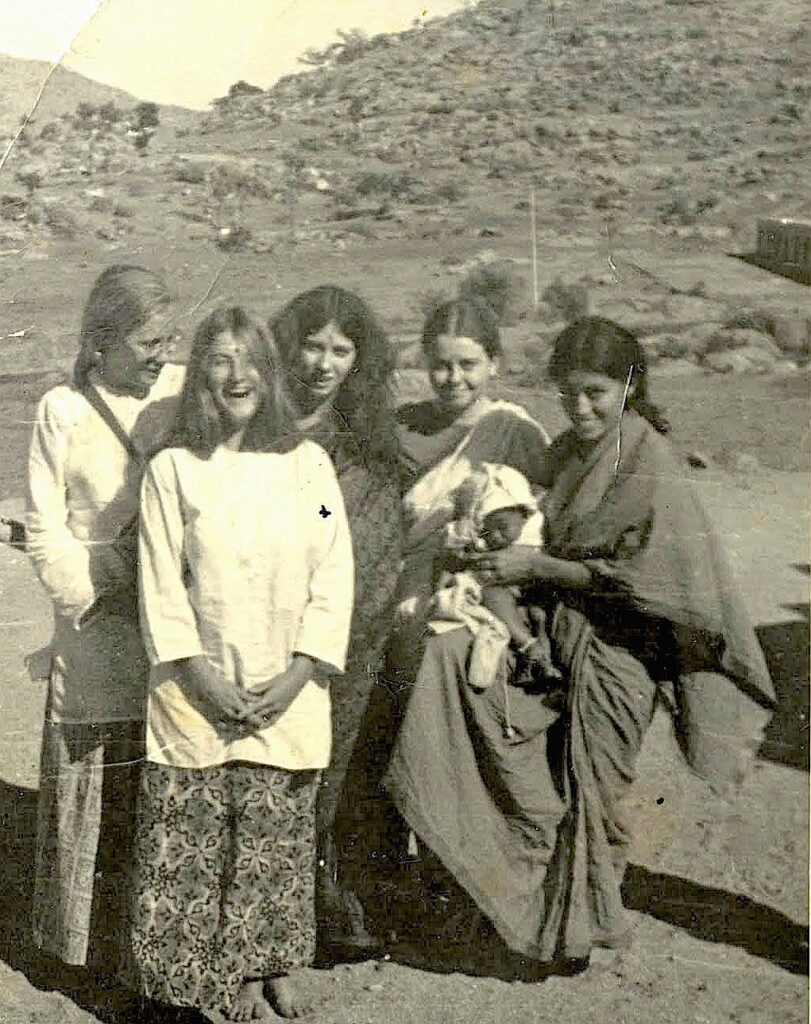
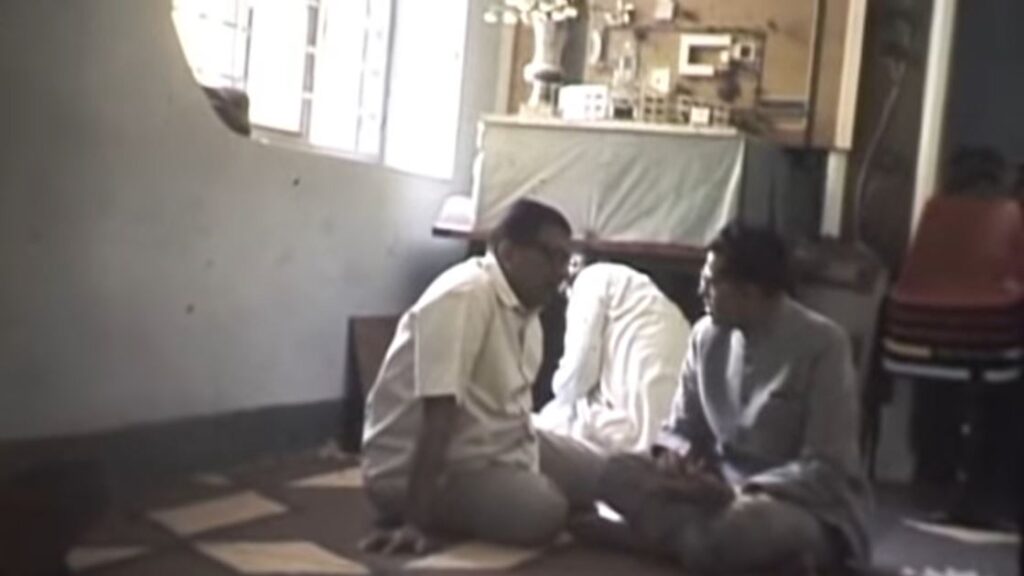
Americans Gale Molloy and her sister Nora Oswald and husband David Oswald September 1971 Prasanthi Nilayam
Gale arrives with Nora and David after a six journey overland from Germany in van that they had purchased there along with fellow traveller Robby Levin. Robby was enroute to Nepal to sell the van at the time of their arrival in the ashram.
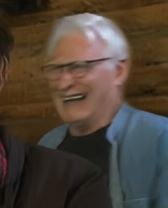
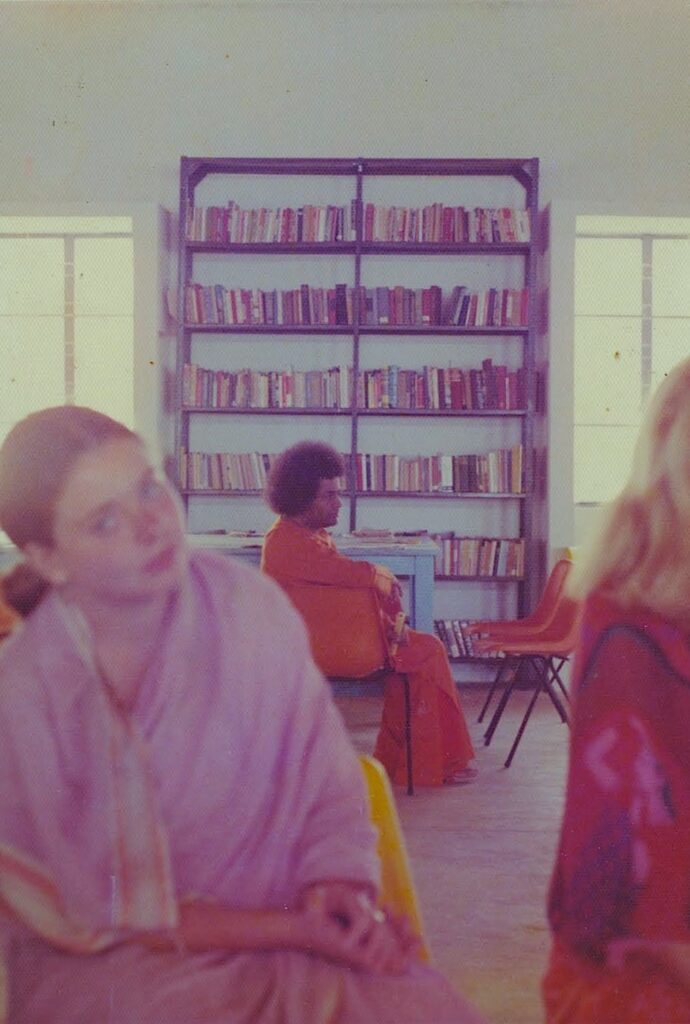
American Marc Schles 1971 Whitefield
Marc Schles (1946 – 2021) was a seeker of spiritual truth and became part of the vibrant spiritual scene in New York City around Hilda Charlton in the late 60s. She eventually sent him to India to see Bhagavan Sri Sathya Sai Baba in 1971. Sai Baba and his teachings became the guiding spiritual force of Marc’s life. Between trips to India Marc attended Sai Baba centers in Nassau County, NY and eventually the Flushing Sai Baba Center in Queens, NY.
During another trip to India in 1974 he met his future wife Andrea, another young Westerner staying at Baba’s ashram. They married in 1981.
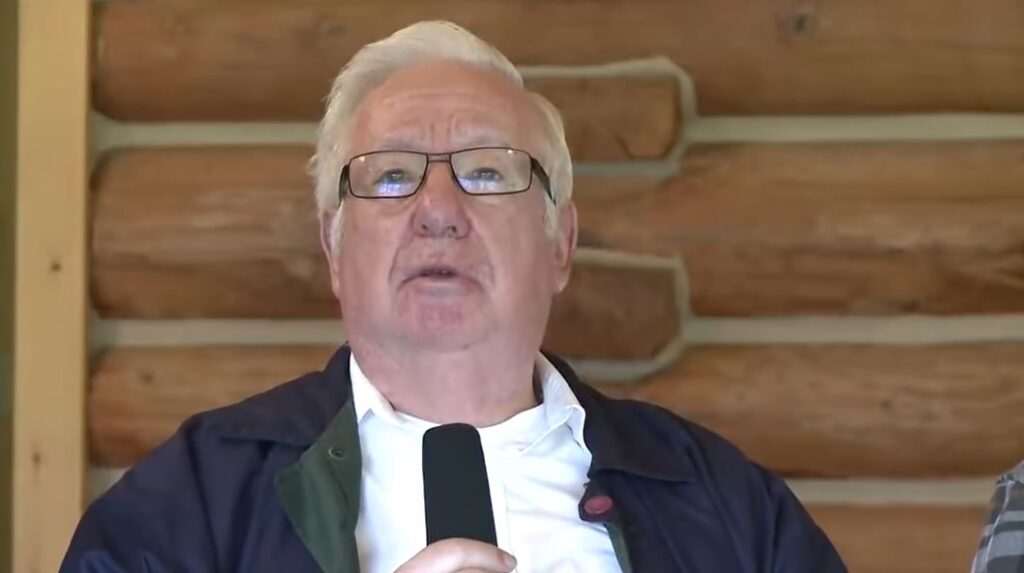
Americans Sharon and Gary Purcell April 1971
From Honolulu, American architect Steve W. G. Au and his wife Irene Botelho Au 1971 Whitefield
From Sanathana Sarathi magazine 1975
He at the Helm – It was exactly one year ago that the sequence of events became even remotely perceivable. Swami Paramahamsa Muktananda of Ganeshpuri was scheduled to arrive in Hawaii, on the return portion of his American tour. With the multitude of hotel accommodation available and the innumerable homes that abound the slopes of Honolulu, it was a little surprising when Baba Muktananda accepted the invitation to stay in the `shell’ of our new home, still very much under construction!

The invitation had been extended significantly, seemingly on impulse, partially based on Irene’s steadfast devotion to Baba Muktananda as her Guru (even though she had never met him) and partly on my reluctance to have any one, including the illustrious personage of a Holy Man, to intrude into my life and the small flat we were than renting.
All doubts and hesitations associated with meeting a ‘realised being’ for the first time welled up. How should I act? Will he see through me? The expectation of his arrival in itself was fraught with discomfort. But, from the instant of his arrival, Swami warmed our hearts. With affectionate smiles and embraces, he melted away the walls of resistance; with his discourses, he removed doubts and with firm mandates, he instilled discipline. The darshans he held and the Shakti of his presence permeated the atmosphere with Prema and Shanti.
Physically, it has changed the ‘outcome’ of the house itself! Aspects of finish-design were obviated and the building took on an air of simplicity and informality quite unintended initially. More importantly, the visit initiated a change in our lives, which at that moment, we could little comprehend.
In quick sequence, other Swamis travelling through Hawaii further graced the home with bhajans and discourses. Swami Satchidananda of the Integral Yoga Society accepted an invitation, again seemingly offered on impulse and added his grace and his lessons to the house. The ‘net’ was closing in on us; but, we had yet to understand its basic implications!
Then Indra Devi, beloved Mataji, on a brief stop-over from India to Tecate (Mexico) delivered, to a small gathering at the “Church of the Cross-Roads,” a testament in words, and a film of her love for her Bhagavan, Sri Sathya Sai Baba. We had decided to attend the lecture, simply because the name ‘Sai Baba’ denoted yet another Guru. The culmination of that evening left us with a sense of amazement at what we had seen and heard, but, with a knowledge that this Baba was something quite different from all that we had previously encountered or read about. This was an Avatar; of this, we were sure!
The following day, Mataji arrived at the house quite unexpectedly and with more words of reverence for Sai Baba, she related the Leelas of Baba and the supreme love he bore towards his devotees. Books followed Mataji; we were inundated with tapes of bhajans recorded at Prasanthi Nilayam, and more printed material. The waves of Sai Baba rolled over us and washed us, until it was all that we could to contain within us, the need to travel to India; but, this was yet to be.
Numerous attempts were made, all meeting with obstructions. Some seven months later, all conditions jelled – visas, passports, finance – and, we journeyed via Australia to India! Though all this took place, it must be said, that the impetus of Baba’s calling us, and all that had transpired during the past year, still remained vague in our minds…
We arrived in Madras, and after a three-hour lay-over, boarded a DC-3 for Bangalore arriving at 10.00 in the evening. The next morning, a call was placed to our only contact in India, Mr. K. Bhirumal, a devotee of Baba. He recommended that we journey immediately to Whitefield.
Another taxi; and, then, the pure delight of watching Baba grace the rows of ‘royal poincianas,’ lined thick with devotees.
Upon reminiscing on our impressions later, we were struck with the feeling of complete familiarity that Baba imparts, to even those seeing him for the first time! The figure, replete with silken dress, the gentle smile, and, of course, the halo of hair were exactly as we had known it would be. We handed over a letter that Mataji had given us, somewhat awkwardly and in full awe. Baba commented, “Mexico! Indra Devi!” and passed on. Word came soon after, that we were to follow him! Baba had blessed us, with an interview; the total time that had elapsed since our arrival in India was 18 hours!
The little Interview Room was crowded and Baba launched into a general discourse with specific comments directed towards some, but, seemingly applicable to all. Then… the Individual Session, in which he quickly cut into the secret depths of one’s own being, the problems, of health, the previous meetings (!) where he had contacted (!) Irene via a dream, and the specifics of that dream and another (!), the difficulties of individual Sadhana, the particular desire of each of us and our internal turmoil’s. Vibhuti, sacred ash, was manifested. All this… quickly, naturally and spontaneously delivered and conferred, with a love and understanding which rendered new meaning to those old words.
Here was a CONFIDANTE, GUIDE, DOCTOR, FRIEND, FATHER, MOTHER and GOD, rolled into ONE! Here was the culmination of those past events within this lifetime and all the previous ones, Manifest, All Knowing, before us!
It would be naïve to say that either one of us can, even in a small measure, understand the Divine nature of Baba’s Calling, much less understand Baba Himself. It is readily perceptible, however, that the culmination of events leading to our arrival in Puttaparthi is in reality a point of conscious embarkation, (in essence, a New Birth), knowing that Baba is at the helm.
Ours, of course, is hardly a unique story. There were no spectacular occurrences; there were no manifest Leelas. Yet, all this is, in reality, his Leela. Each one called to Prasanthi Nilayam comes on a wave of `seeming circumstance.’ Names, times, places and events vary from person to person; but, the story remains ever the same – the directional moment towards Baba is unmistakable and constant. As has been stated to us, the subtleties of man’s ascent towards God pale and wane, when compared to the subtleties of God’s descent to man. Bhagavan’s Call is the subtlest of subtleties; but, come, we must, when call beckons! There are no accidents, no circumstantial happenings. But, how it is all integrated how it is all fits together, is best understood by Baba Himself.
Once touched by Baba, once the bond is established, we can only venerate Him, prostrate before His Loving Grace and tireless generosity, and pray that he will continue to bestow his multitudinous Blessings and unerring control over all aspects of our existence and sadhana. By His Grace and His Grace alone, we are here. Jay Bhagavan Sri Sathya Sai Baba. Sai Ram Sai Ram Sai Ram. Steve W. G. Au, Honolulu; Hawaii.
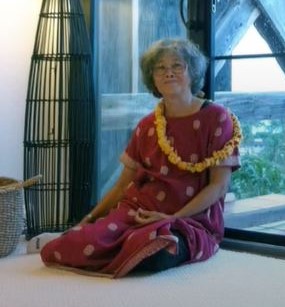
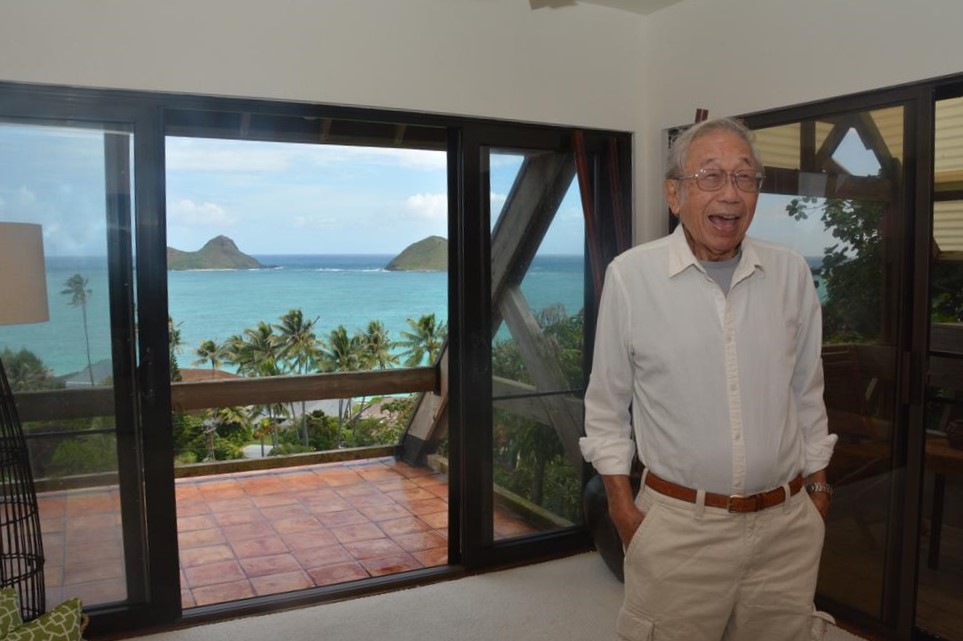
American Psychologist Phil Gosselin April 1971 Whitefield (Gosselin’s sister and her husband would follow later on, and his best friend arrived in January 1972)
Phil Gosselin spent two years in Sathya Sai Baba’s ashram in the early 1970s. Once a yoga practicing backpacker who has had the good fortune to live in the ashram from 1971 to 1972 and again in from 1974 to 1975.
Dr Phil Gosselin worked on Wall Street for a number of years, before switching his profession to Clinical Psychology. Currently he lives in Amherst, Massachusetts, USA. An account of his professional life on Wall Street is described in the 1995 book The Dharmic Challenge: Putting Sathya Sai Baba’s Teachings into Practice by compiled and edited by Judy Warner.
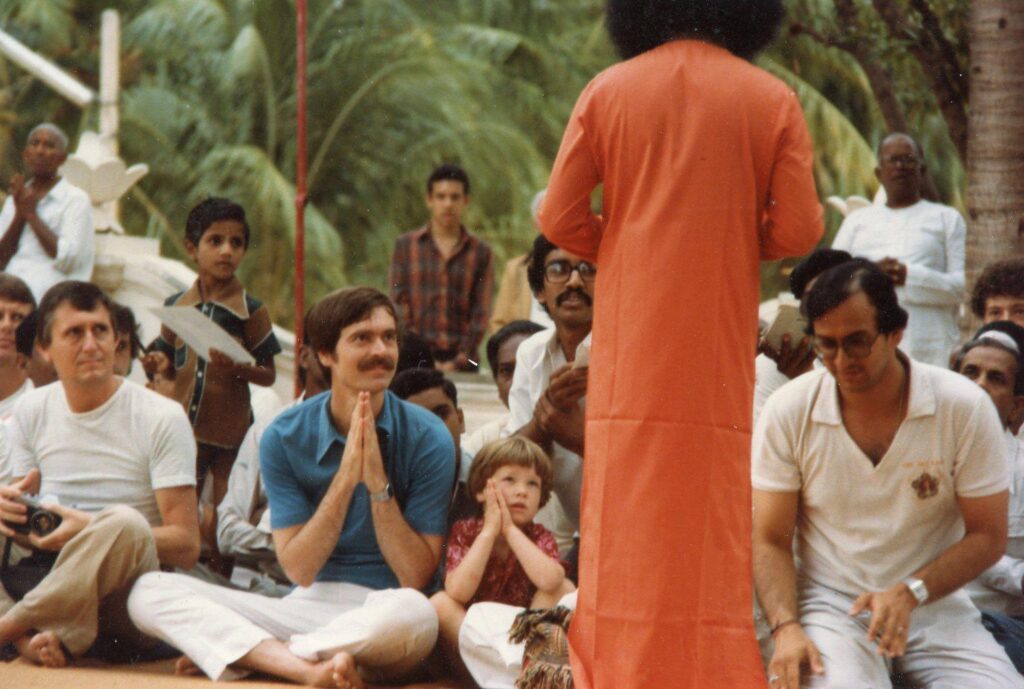
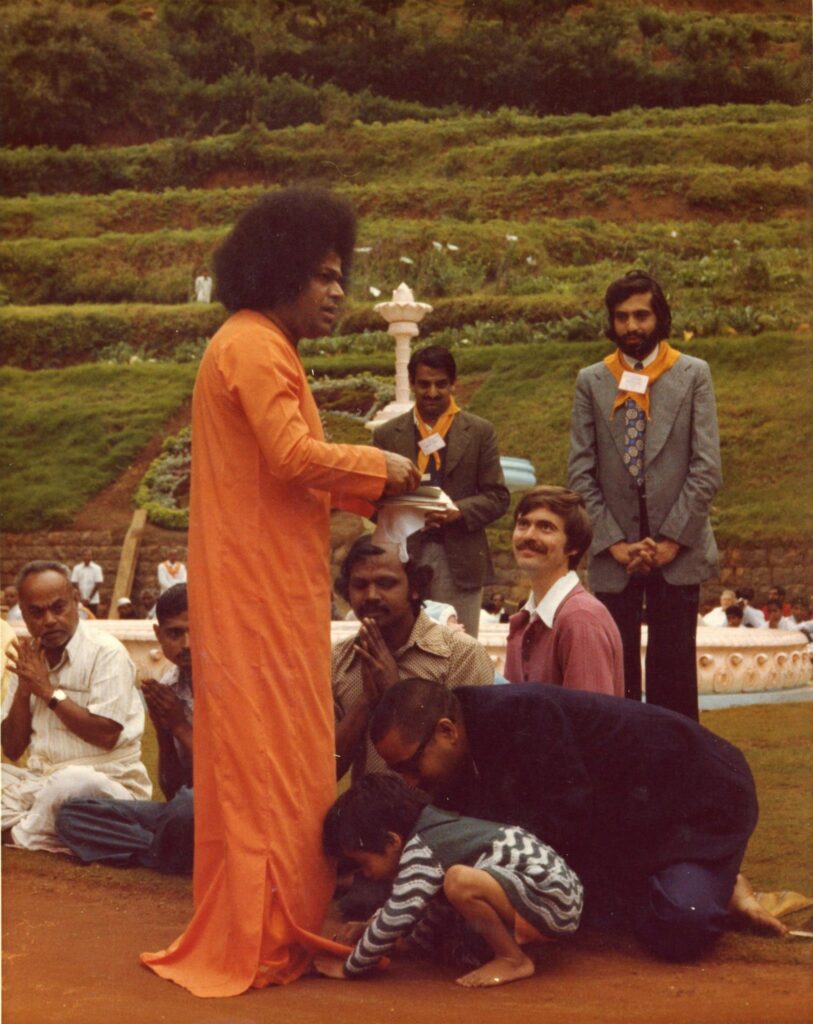
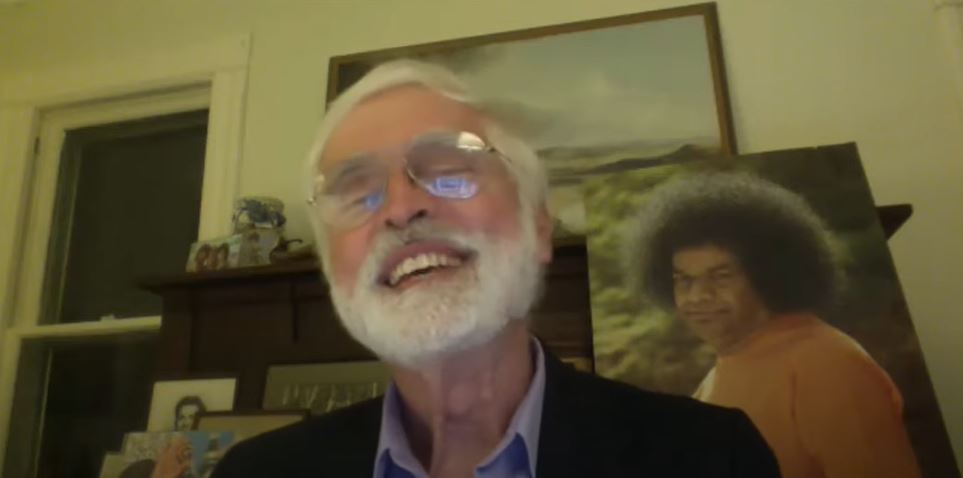
Richard Alpert (Ram Dass) 1971 Whitefield
From Good Chances by Howard Levin
Ram Dass showed up, and with him came his entourage. It bothered me when I saw the group for I felt they brought drugs with them, and a too-free life style. But it was none of my business, for Swami is here to correct. So we invited Ram Dass and his group in for the evening bhajans. That evening Swami came early and sat in his chair.
Ram Dass was leaning against the wall to Swami’s left, and to our right. He asked Ram Dass “Who are you?”
“I’m Ram Dass” was his reply.
“No, no, who are you?”
“I’m a psychologist from Harvard University.”
“No, no,” Swami went on; Ram Dass looked flustered. “You are not the body. You are not the mind. You are not the intellect. You are not the brain. You are Atma, you are God!” Sai Baba spoke about the nature of the Atma and the spiritual path. He concluded by telling Ram Dass not to teach before he is ready. “Don’t gather disciples too soon. First do your own sadhana. Realise the goal, then show others the way.”
Swami materialised a locket; it was a five-pointed star set in a circle, with Swami’s picture in the middle. “See, there are the five senses. In the centre is Baba. Keep Baba in your heart and always love will radiate through your five senses.” He gave the locket to Ram Dass with a loving smile.
Ram Dass spoke, “Swami, Swami Muktananda is in Bangalore. May I bring him here to see you tomorrow?”
“Oh yes,” was Sai Baba’s exuberant reply.
The next morning I was sitting next to Tal in the darshan line. Swami came near us. Tal spoke, “Swami Paramahansa Muktananda is coming today.”
Baba looked quizzically, “Who?”
“Paramahansa Muktananda is coming today,” Tal replied.
“Who told Paramahansa? Ramakrishna was a Paramahansa! Muktananda’s not special. Ordinary man.”
Considering the reputation of Muktananda, we were surprised to hear this from Sai Baba. What did he mean by ordinary man?
That evening as Baba was finishing darshan, stopping now and then to speak or glance at a longing heart, Swami Muktananda arrived in a big blur Mercedes. He was accompanied by three or four carloads of American devotees. Muktananda, along with his Western followers, walked straight up the driveway with no regard for any of us who were sitting and waiting. Some of the men walked through the seated ladies, and the women pushed through the gents. Then Muktananda walked up to Sai Baba and caught him up in a big bear hug. Sai Baba, smiling, gently pushed him away, turned and finished his darshan. Then he went through the gates which closed behind him. A lot of confusion followed.
Many of us saluted Muktananda as the volunteers tried to show him over to the gent’s side. Others wondered who he was, clad in his orange silk.
Tal grew anxious. He went to Sai Baba’s residence to get instructions as to what to do with Muktananda. Finally a message came… Let him wait in the classrooms, Swami will come.
All of us followed Muktananda into the classroom, where we milled around wondering what to do. Muktananda was speaking through a translator to Eddie when finally, Swami came in. He went directly to Muktananda’s disciples, materialising vibhuti for one of them while speaking to others. He was definitely ignoring Muktananda’s presence. It was very strange.
Finally, after several minutes of Muktananda speaking to Sai Baba’s devotees and Sai Baba speaking to Muktananda’s people, they met in the middle of the room. Muktananda took Baba’s hand and sang something in Sanskrit. Then a few words were exchanged in Hindi, and Swami left the hall. Muktananda slowly made his way back to his car, distributing sweets to all from a basket as he made his way through the group. With a big smile and a lot of waving, he left.
To me it seemed like a game, a dream staged to play with the American minds. I did not realise then how disturbed some of the Westerners were over the incident with swami Muktananda.
From Hold On… I Have God On The Line by Margaret Garland
One day Ram Dass (f.k.a. Richard Alpert) appears on darshan line. The westerners are excited. To many he is a cultural hero, an important spiritual teacher who has led many on the path. Once a professor of psychology at Harvard, he and Timothy Leary experimented with LSD, leading the movement in consciousness expansion. Millions followed, believing it a path to God. But when Ram Dass found LSD had limitations, the guru Paramahansa Neem Karoli Baba showed up in his life, and Ram Dass pointed his followers in a new direction.
Sai Baba now greets Ram Dass and calls him for an interview, along with the westerners.
“What is your name?” Sai Baba asks the former Harvard professor, who sits respectfully at his feet.
With his long curly-beard, balding head and bright toothy smile, he looks like a lovable garden gnome. “My name is Ram Dass,” he replies.
“Such funny names you westerners have,” Baba jokes. “And what is your work?”
“I’m a teacher.” “A teacher of what?” Baba asks. “I teach atma.” Baba looks curious. “And what do you know about atma?”
I don’t catch Ram Dass’s answer, but it seems pleasing to Baba, who manifests a gold necklace for him.
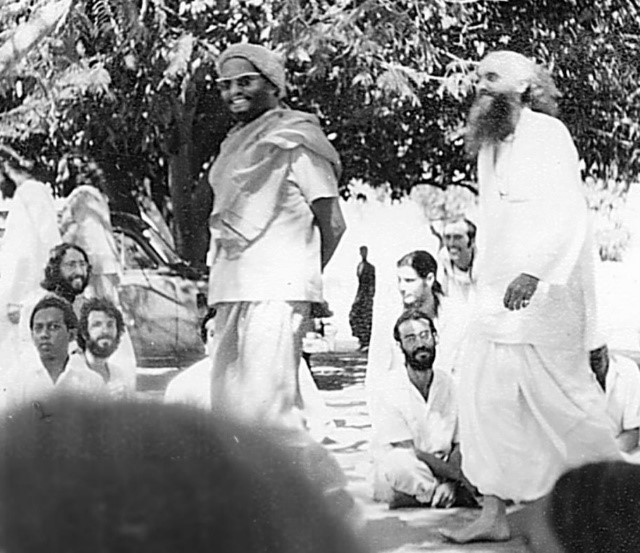
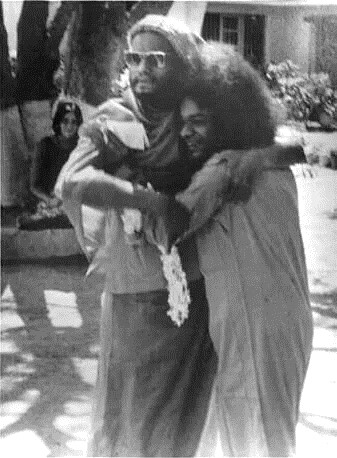
According to author and ashram resident and Baba devotee at the time, Tal Brook, the meeting took place as an expression of ‘cosmic politics.’ Ram Dass had arranged this meeting as an encounter between the world’s two greatest ‘siddha-yogis.’ The meeting is described in the book Lord of the Air. The meeting, which was repeatedly on the point of collapse, apparently ended in a sort of working alliance similar to the outcome of another meeting between Muktananda and Maharishi Mahesh Yogi which took place in 1976.
During an interview, Sai Baba’s chair suddenly turned away from the women’s half of the room and faced directly head-on towards Ram Dass and Tal Brook who were sitting side by side. Baba materialised a very large pendant with a pentagram in the centre and gave it to a stunned Ram Dass. Baba then agreed to meet Muktananda the next day.
The next day, Muktananda had was waiting in the outer court for Baba. To ensure the meeting would take place, Brooke, violating all protocol, entered Baba’s inner chamber where he was conducting an interview with devotees. Baba then left the interview and walked with him to the large group surrounding Muktananda. He seemed to do it in part to satisfy Brooke’s desperation, which had been added to by Ram Dass’ own desperation and embarrassment. The next day’s meeting between Baba and Muktananda resembled a bizarre scorpion dance between the two as Muktananda forced Baba into a bear hug. Sai Baba, smiling, gently pushed him away, turned and resumed that evenings darshan.
Before Muktananda left the ashram there was a follow up meeting, where Sai Baba spoke directly to Muktananda’s devotees and Muktananda spoke to Baba’s devotees. The two then talked to one another on a level that no one could follow, not even the oldest Indian devotees who knew all the languages. Tal Brooke writes in Riders of the Cosmic Circuit, “It was even baffling for the Indian inner-circle translators, as they tried to disentangle abstruse and ancient poetry that resembled the playful stanzas of the gods to one another in some bygone time (Muktananda sang a cryptic song to Sai Baba about one who fell in love with his own reflection – an Indian Narcissus). There was a moment when the two gurus complimented each other on their respective disciples. Ram Dass was singled out. Baba was finally given a standing invitation to grace Muktananda’s ashram.”
Ram Dass himself writes in an article A Flicker of Faith https://www.ramdass.org/flicker-of-faith/
In India there was a very beautiful saint, Sathya Sai Baba, where you could go twice a day everyday and stand in his courtyard. He was a very high spiritual being. He would come out beautifully, just flowing and he would look at someone and say, “You have very bad dysentery.” Then he put out his hand, someone else holding out a piece of paper, and about a foot above his hand dust comes out of the air, vibhuti or sacred ash. It comes right out of the air and falls onto the piece of paper. He folds it up and gives it to the person saying, “Here, put a little of this in your mouth everyday, and you will get rid of your dysentery.”
When I was there, as I was sitting at his feet and he was sitting on a chair, he said to me, ‘“Here Ram Dass, I’ll give you something.” and I said, ‘No Babaji, I don’t want anything.’ “No, no, let me give you something.” He held out his hand, and I knew he did things like this, manifest small things like bracelets, watches, small things like that. As a social scientist, responsible to the West, my eyes were going to watch his hand closely, I wasn’t going to blink. As I watched, a bluish light formed on the top of his hand, a flickering light, and it became more and more solid, and then it became a little medallion. It was a little circle a star on it with a little gold image of himself, Sathya Sai Baba. He gave it to me, it was definitely man-made, it did not have an astral quality to it at all. Later I asked a Swami there, “How does he do that?” And he said, “Well, he doesn’t make those; he just moves them from his warehouse with his mind.” And you can just imagine his warehouse, full of these little medallions, and if you were in the warehouse, they’d be disappearing from the shelves, literally.”
Here is a being who is far beyond all of this physical stuff, and it is very interesting what miracles do for most people who are ready to see them. They give a flicker of faith in the possibility that things aren’t the way that you thought they were.
This makes you open to the Spirit. For those who are not ready, it just makes them worship the person performing the miracle, because miracles are not the thing itself. Miracles have the power to give you faith through your rational mind and senses because your rational mind and senses can’t do the miracle, so it gives you faith that there’s some other reality. It opens you to it.
From his autobiography Being Ram Dass (2021) ~ One morning, in a small temple town, Muktananda woke me up at 4 a.m. It was just him. He led me down an alley, then up a long flight of stairs. We entered a small room above a temple, where he had me sit on the floor across from him. He gave me a mantra, which I went on repeating. Afterward, I must have fallen asleep. When I woke up, I was alone. It was about 9 a.m.
Someone came from the group and said, “Baba wants to see you.” I followed the messenger to Muktananda, who was sitting in a big room with other people. He motioned me over. “What was that mantra about?” I asked.
“It will give you great wealth and powers.”
“Unless it gives me compassion,” I replied, “I don’t want power. I don’t want power without compassion.”
Muktananda looked at me disdainfully and walked away. That moment illuminated the contrast between Maharaj-ji’s path of the heart and Muktananda’s predilection for power and wealth. Of course, both those qualities resonated in me, which was why I was attracted to Muktananda in the first place. I realized at that moment that my focus had shifted, from my head to my heart.
Later in the trip, Muktananda sent me to the ashram of Sathya Sai Baba, at Whitefield near Bangalore. He wanted me to arrange a meeting with Sai Baba, who was a well-known guru with many followers. Muktananda thought Sai Baba was a fake.
When I got to the ashram, I stood in the men’s line for an audience. “Ah, Ram Dass!” said Sai Baba when he saw me. He took me to a small room, where he materialized a medal out of thin air and gave it to me. It was a silver coin with a gold-colored rim. I was impressed, although it didn’t look like real gold. When I left the darshan hall, I showed it to an old sadhu outside. “That’s not a siddhi,” he said. “He has a ghost who transfers these things from a warehouse.
Maharaj-ji subsequently said something similar about Sai Baba, “He
brings Dharma [Truth] down to the level of magic.”
This was all spiritual politics. And I was in the middle. The next day, when our group arrived at the ashram, devotees were lined up on both sides of a driveway where Sai Baba was greeting people. Muktananda had his driver go straight up the middle of the driveway. When Sai Baba ignored the car, Muktananda got out and grabbed Sai Baba from behind in a kind of bear hug, supposedly to suppress his powers. (Later, Muktananda told me that Sai Baba had no power.) Then Muktananda got back in the car
Sai Baba went inside, and a devotee told us we could wait in the darshan hall. There was a throne at one end and a stack of folding chairs at the other. Muktananda got himself a folding chair and sat down to wait. Sai Baba didn’t show for a long while. I went to his devotee and said, “You better get your man here.” He said, “He’s giving an interview for the newspaper.” I said, “You can’t let Muktananda wait.” Leaving Muktananda cooling his heels was not what I’d arranged. Their meeting was a kind of interguru Olympics of yogic powers, a clash between two spiritual lineages. Muktananda was a Shaivite from the line of Nityananda, a great avadhoot, beyond everything. Sai Baba was said to be an incarnation of an earlier saint, Shirdi Sai Baba. When Sai Baba entered the room, the two met in the middle. Muktananda recited to him the story of Narcissus, the Greek myth about the supremely vain character who looks into a pool to admire his own beauty. I felt like was with two adolescents. I was disappointed in both of them.
American music group Lightstorm (Johnima and Kalassu Wintergate, Silver and Sui-San) 1971 Whitefield
The story of Lightstorm’s meeting with Sathya Sai Baba can be read in their 1992 book Ten Steps To Kesava, which is a free PDF download from their website;
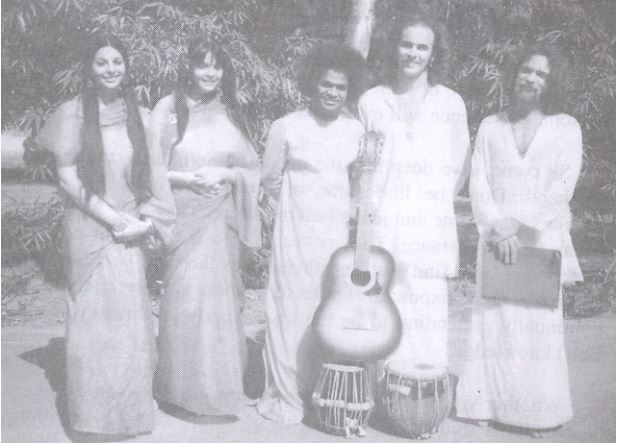
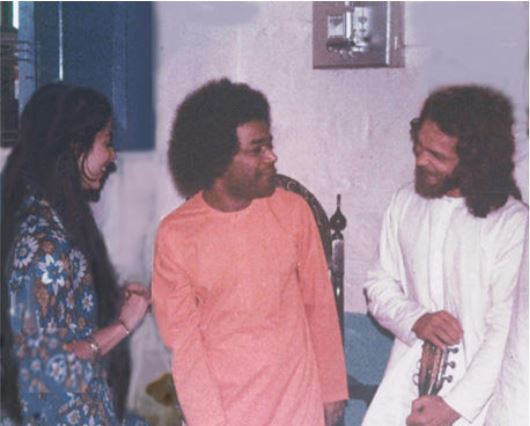
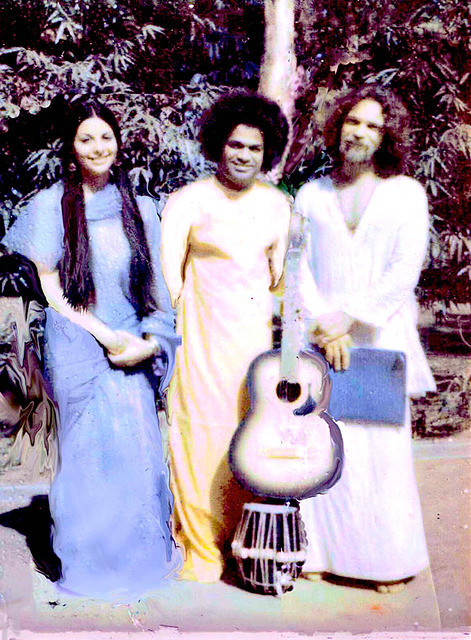

American Jermain Duncan with her husband early December 1971
Jeemain (Jerri) was 37 years old when she arrived in Baba’s ashram. She passed away in 1973 and bequeathed the Feathered Pipe Ranch to fellow devotee India Supera. At the time was hesitant to keep it, as she was only 24 years old and had not completed her global quest for enlightenment. She returned to the ashram in India where she had spent the previous four years, and asked guru, Sathya Sai Baba, what she should do with the land. “He told me, ‘There are too many followers in this world. Go back and make this a place for leaders,’” she recalls. And so she did. “Montana is the perfect place for yoga because it connects heaven and earth,” her sister Supera says. “The sky is bigger than almost anywhere else in the United States, we have an abundance of wildlife and untouched wilderness, natural springs as our water source and incredibly clean air.”
Americans Cathy and Richard Bayer at a private residence in Madras, Christmas 1971
Cathy and Richard arrive at friends house in Madras, who they had met in Rome and had lent some money to. The neighbour, who was a devotee of Sathya Sai Baba, invited them over. Baba then made a visit to the house. They later followed Baba to Whitefield by taking the Brindavan Express to Bangalore, along with other devotees. The train made a stop at Whitefield where the devotees got off. They then stayed in Kadugodi for six months, where the Brindavan Ashram is, near Whitefield.
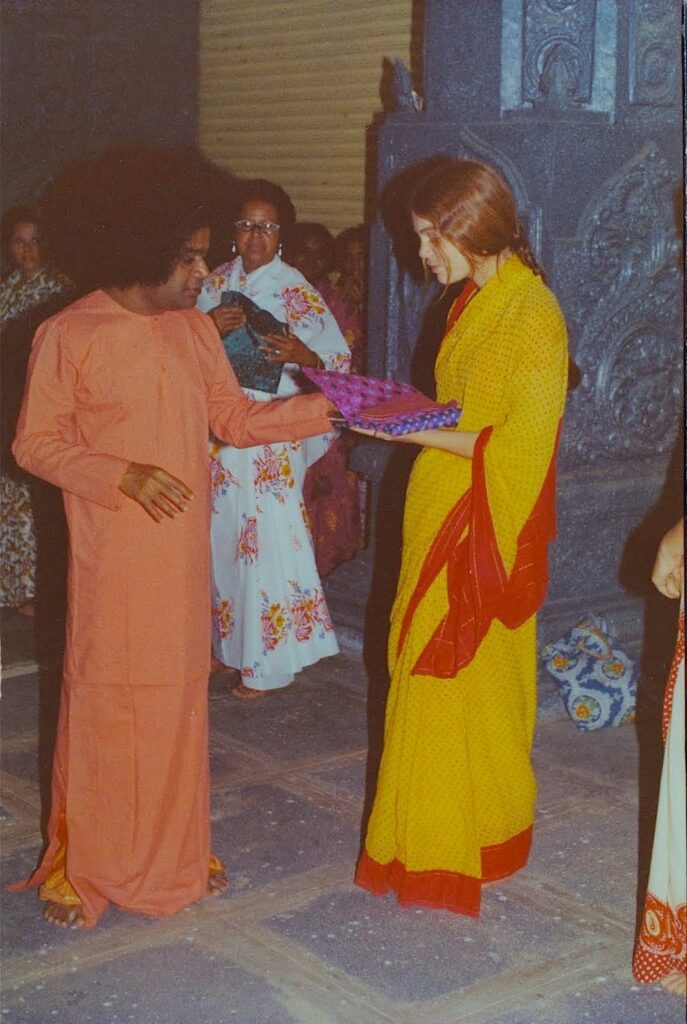
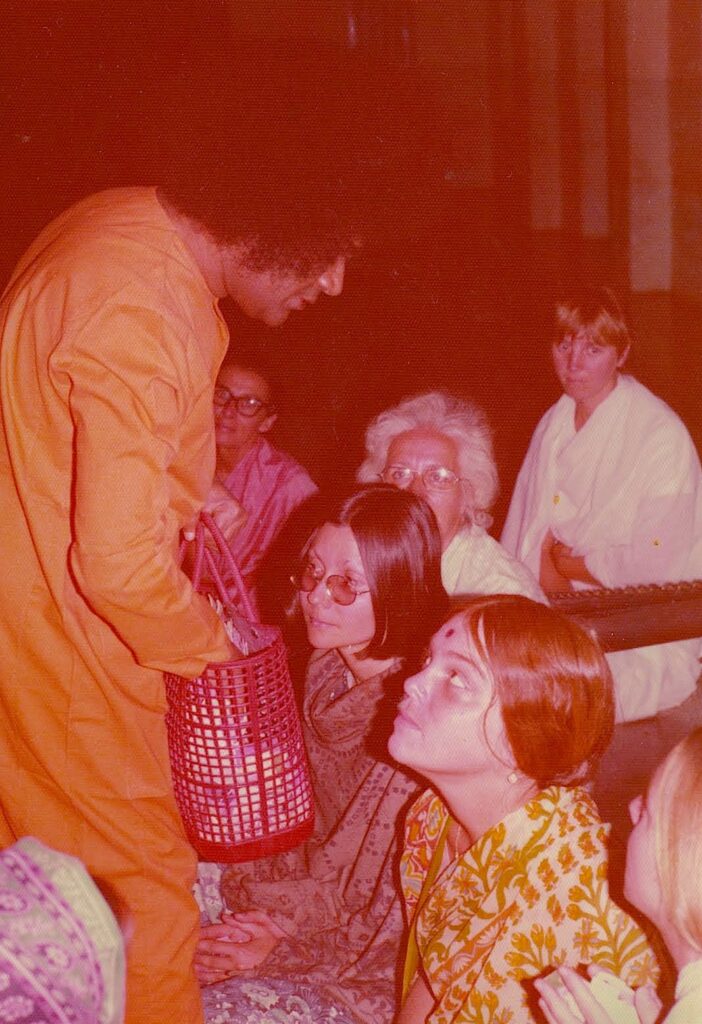
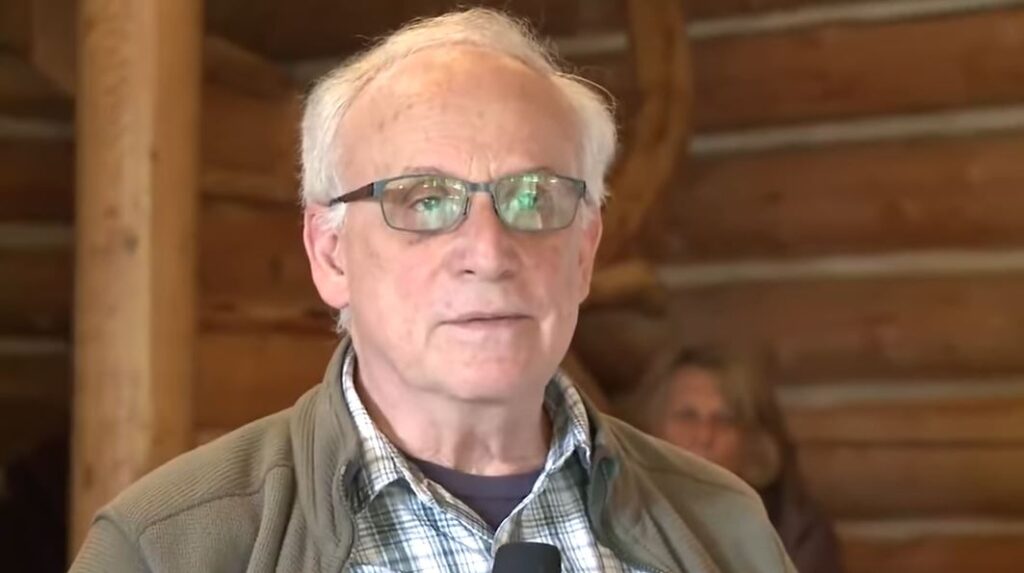
German Joachim Peters 1972
From New Lives compiled by Malcolm Tillis
Interview with Joachim Peters and Uli Steckenreuter at Prasanthi Nilayam, 5th February, 1981.
As you both wish to give the Interview together, let’s start with Joachim as you are older, right?
JOACHIM: Uli is like my son. We are both from Germany. I am 52 years old, but when I was 24 I had a strange spiritual experience – it suddenly happened although I didn’t know about these things. I fell down unconscious one afternoon and was in an ocean of light. In this light slowly a figure appeared and I knew it as a divine being; first I saw it from the backside, turning; the face was brown and the eyes made me afraid. I thought it was Jesus but couldn’t understand why he had a dark complexion. From then I knew there were other levels of consciousness, and I started reading much about spiritual things. That went for some years together with my professional life.
Can you say what it was?
I was an actor. In 1972 I decided to stop the reading and go to India for a guru, a divine incarnation. I came to Sai Baba almost immediately and I had the feeling: I have found my guru. So quick! After a few nights I had a dream – I didn’t know then that when one dreams about Baba, Baba really appears; he says nobody can dream about him if he doesn’t want it. In this dream I sat on a prayer mat, Baba stood beside me and gave me something to drink – it was tasteless – then we both went up to the sky like two flames merging in a cloud of bliss and love and incredible joy. In the morning I was told that the day before was a special day, and in former years Baba distributed amrit but this year he didn’t. I didn’t grasp the dream properly nor the meaning of the drink although I was told it was the nectar of immortality.
A week later I had my first Interview with Sai Baba – it was with a group. He materialised things and was all love; he asked if I had any questions, so I said: Yes, one. He said: You want to talk? Come. And he took me behind a curtain, and there he turned completely into the Divine Mother full of sweetness. I didn’t have to narrate my dream, he knew – he said: No birth again! I couldn’t grasp it still. He repeated: No birth again – moksha, liberation. I was so happy I started weeping. I felt Baba had taken loads of karma off my shoulders. I was a changed being.
Did you have to go back to Germany?
I went after a few weeks. But Baba was with me. I wasn’t able to get work but was in a blissful state. Then every year for eight years he brought me back, coming, changing, changing my character. Sometimes he gave me some “treatments” – he never looked at me for half a year, but the very moment I was back in Germany I was brim-full of bliss so that I would know the Baba in the body was part of the Baba in the heart; and he filled me completely. Now this last year Baba has told me not to go back, to stay permanently. I hope I will become less and less and merge in him like those two flames in the dream.
When you said your character changed what did you mean?
I was a chain smoker, drinking alcohol, with many love stories, and I was eating meat.
Can you now give an account of Sai Baba’s teachings?
He says in the end there is nothing but God. He puts stress on thinking good, seeing good, speaking good, doing good. He says we should do sadhana and sadhana and sadhana, but I have the feeling it is Baba who does the sadhana for us – he is working from day to night on us. He changes and shapes us inside by dreams and so on.
He pays your karmic debts?
He destroys them. Once we were all singing bhajans on Maha Shivaratri; at sunrise he came into the hall, delivered his discourse, but this single sentence remains in my mind: “This night I have taken sins from you.” He washes away much dirt. Many people here get diseases and we are never bothered about it as we see it as a form of purification. Should he wish it he can take it all away. I used to think I knew Baba – now I know nothing – yes, I know he is love incarnate. He is always caring for us. When I had to look for a place to stay here last year I was walking in a street and a man on a motorcycle asked me: Do you want a flat? I saw it was a newly built house so I rented it immediately. Just like that.
How do you spend your time? Do you do any seva?
No. I used to read like a rat; this habit has stopped. Baba makes one think of him 24 hours a day – I am always busy with Baba, busy being quiet, listening to the heart, to the peace, to the bliss. That’s the occupation one can see from the outside. Oh, I should tell you that the vision I had when I was 24 – when I lost consciousness – was Baba: he himself told me so.
Now should we hear what Uli has to tell us?
ULI: I am 27 now. After school I didn’t know what to do so I ended up in the police force in Germany. After two years I was sick of the discipline and having read Herman Hesse, I said: Enough! Let me go to India – just like that. I was 18 and didn’t know about saints but after five days in India I ended up with a saint – the teacher of Ram Dass, Neem Karoli Baba. I stayed with him for two months; I didn’t do any sadhana but he changed my whole life. I didn’t even have any devotion for him. I just went because I had met someone who said: Let’s go there, he is nice and we can eat free. I had an incredible experience there. I never spoke to him – rather he never spoke to me except after six weeks.
He said: What’s your name?
I said: Uli.
He said: Cooli? Ah, work!
That was the only conversation I had with him. But he was working on me on subtle levels. He understood what was in my mind, what I wanted – there was some communication there. But at that time I didn’t know who he was. Through my cultural background I was very narrowed in. He just opened me up. I then spent time in America, sort of free life, but I met some Sai Baba devotees whom I liked.
When I came back to Germany I met more Baba devotees, and as Neem Karoli Baba had died, I decided I should come to India again. But first I saw other saints, then came to see Baba. At the first meeting he just looked into my eyes and I knew he was the highest being I had met. (I had been with about ten saints.) But he never talked to me, like Neem Karoli Baba. He manifested lockets for others but ignored me.
Eventually, he asked my name, and when I told him, he said: Cooli? Ah, work!
I stayed with him four months and that was the only conversation I had with him. No, I remember I did have one other – the summer course was going on and everybody had to have a badge to get in. There were a few without badges – I was one – so we couldn’t get in; we were sitting outside waiting for Baba to arrive and help us.
He came, looked at us, told someone: Give him a badge, him, him, and so on – but again he ignored me. He was so godlike, I was so shy, I could never approach him, but he lingered as if to let me know that if I wanted to speak, speak! All I could say was: Summer course! He said: Achha? As if to say – oh, you can talk, but also at the same time it was like an embrace.
You mean he never gave you a badge?
No! I had to stay outside. You just can’t get in without one. Anyway, I had to go back to Germany, but after three months I was back again. Again he completely ignored me. Then I started thinking: I need another guru, I need a guru who talks to me, I need a guru I can relate to – this is nothing! I even remember once he was driving by in his car; to the person left of me, to the person right of me he smiled and waved, and he didn’t even see me. What’s wrong with me, what’s wrong with me?
Then I was very sick, stomach trouble and depressed, and about to leave and look for another saint. I was sitting at darshan really down physically and mentally: Baba came out but I thought: Well, you are God – I can’t go to a doctor because you can cure me if you want to in an instant.
He looked at me – in the area of my stomach – and said: Go in! and he gave me an Interview.
From then on for a year he gave me so much attention, talked to me, made me feel I was close to him. He made me this locket I wear – even the chain, at that first Interview, and said:
You have pain – I’ll take it away – you want to talk to me this evening?
I was so happy, but all day long I was also confused by this sudden love. In the evening he said: How are you now?
I said: A little confused. Confused?
He said, if you are confused I won’t talk to you.
He started to walk away.
I yelled out: It’s much better now, so he came back saying:
Don’t be confused, be happy!
From then on he has given me many Interviews and made me this special ring.
JOACHIM: You should tell how he wanted to get you married.
ULI: Baba was marrying an American couple, blessed them, made them rings and showered them with rice – brown rice – coming out of his fingers. After he had given them a talk on what marriage means, he turned to me saying: Now you are going to get married. I cried: Baba, no, no! I don’t want to get married – I really don’t want to. He said: I am going to marry you to God!
You must have many other illustrations of Baba’s sense of humour.
JOACHIM: There was a thread ceremony; on the platform three or four pandits were reciting mantras, but Baba was walking up and down spraying from his finger tips flower petals and such things. The pandits became excited and called out: Shiva, Shiva! And Baba turned round and asked: Yes?
Baba has been wearing his special curly hair-style, and some people get a shock when they see it for the first time. Two Westerners were talking about it saying you have to be careful with such a style not to get lice. Some days later they had an Interview with Baba, who said as he bent his head: You have to be careful with such hair – it’s so easy to get lice. And there they could see innumerable small snakes.
ULI: Oh, do you remember when two brothers were talking about Baba actually wearing a wig? That evening at darshan, as he passed them he tugged at his hair and then went on. And when on another occasion he took out a white handkerchief as he passed someone, rubbed it very hard against his lips and showed it to the person without any mark on it. That man told me later that he had actually been telling his friend that Baba uses lipstick. He does these funny things but they always have significance.
JOACHIM: Once Baba said that Krishna wore his hair like he does, but with a cloth round it. He put a towel on his head like a turban to show us, then he waved his hand and produced a huge emerald – about the size of a small egg – saying: This stone belonged to Krishna’s grandmother. He placed it on the turban and then handed it around so that we could all see it. Then taking it back he said: I have to send it back, it is part of the crown Jewels and the guard will get in trouble if someone notices that it is missing. It disappeared from his hand, just like that.
Have any of these objects been verified?
JOACHIM: There is a good example in Howard Murphet’s book about Baba. A New York gentleman was over here and Baba materialised an expensive piece of jewellery which had a shop label and price tag on it. He gave it to the man who on his return to New York immediately went to the shop on Fifth Avenue. He showed the piece of jewellery and asked if the record of sale could be shown to him. Surely enough it could be traced, and the assistant said: I can never forget the man who bought it – he had his hair sticking out in all directions and was wearing a red robe and he paid cash. The date of sale was the same as the day Baba had given the piece to him.
I suppose Baba manifests objects to teach you something.
ULI: Ach, all the time. Baba made a ring appear. He showed it to someone and asked: What kind of ring is this?
He said: It is gold with an emerald. This was confirmed by other people there.
Then Baba took it back, blew on it – phuur! Showed it to everyone, and they all said:
Oh, it’s now silver with a diamond!
He did this several times – blowing and showing – and the ring had changed every time.
Then Baba said: See, Baba can change any material in the universe into another, but to change one of you Westerners is very hard.
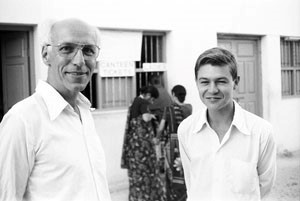
American Andrea Schles 1972 for 4 months, 1973 second trip
Andrea meets Marc, another young Westerner staying at Baba’s ashram during another trip to India in 1974. They married in 1981.
American Psychiatrist Samuel Sandweiss at a devotees apartment on the outskirts of Bombay in May 1972. His Wife Sharon and four daughters would follow in the later years
In 1975 Samuel Sandweiss publishes The Holy Man And The Psychiatrist that tells the story of an American psychiatrist in the 1970s who suddenly realises that he doesn’t have all the answers for his patients, or himself. This leads him on a journey of discovery at the feet of Sathya Sai Baba. Dr Sandweiss writes in an easy-to-read personal style about his initial resistance to the idea of divinity in human form, and his transformation after meeting Swami. The author’s moving and compelling description of his spiritual awakening as he comes closer to Swami, as well as his ability to relate it with devotion and humor, account for the book’s worldwide success.
In 1985, Spirit And The Mind is published. This book is about Sai Baba and the relevance of his life and message to Western psychology. It is comprised of personal experiences with Sai Baba, and a serious inquiry into how the integration of spiritual insight into Western psychology would broaden the view of this young science and give it soul. An in-depth case study showing how Baba’s message affects Western treatment approaches, and an interview with a prominent psychoanalyst, which shows the roots of Western psychologists’ resistance to spirituality and to considering man as immortal.
Sandweiss’s third book is With Love Man Is God published in 2005. The author covers personal experiences in the company of Sri Sathya Sai Baba and how Baba’s teachings are put into practice in daily life.
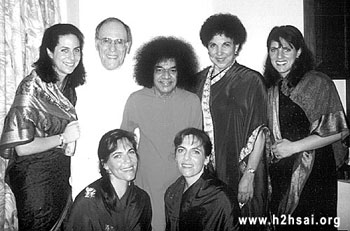
American Della Meridith June 1972 Prasanthi Nilayam
Della arrived in India with her friends and then proceeded to Bangalore. There they met an Indian woman who was going to Puttaparthi to see Sai Baba. So, they all shared a taxi and soon arrived at the ashram. The next morning they were eager to join the lines of devotees waiting for darshan. When Della was about to sit on the ground to wait, she seemed to lose control of her legs. Her knees would not bend. Her friends were eventually able to get her seated. Again she cried out inwardly to Baba for help not wanting to think she was being a burden to her friends who had paid for her trip. For a while she sat with eyes closed aware of the pain in her legs. Suddenly she felt a cool breeze surrounding her. She opened her eyes to see Sai Baba smiling warmly at her. With a wave of his hand he materialised Vibhuti into her hand. She sat there motionless with tears flowing down her face, holding the precious gift, trying hard to control her joyful tears. Then he came back and with a look of infinite tenderness showed the Vibhuti in her hand and told her: “Eat – for your health.” As she ate the Vibhuti, she felt her body filling with renewed energy. It was a divine healing of love and mercy. On the last day of their stay they got their greatest blessing of all. Sai Baba invited them to spend the rest of the day with him and some Indian devotees. They had lunch together, then each of them recieved a private interview. In her interview with him, Della Meredith cannot forget his parting words to her: “Do what your heart tells you to do, and remember, I am always in your heart wherever you are, whatever you do.”
American Michael Hollander August 1972 Prasanthi Nilayam
Michael J. Hollander has written three books about Sathya Sai Baba; Advent I (1999), Advent II, Advent III (2005). Advent III gives a brief biographical sketch and talks of Hollander’s early years with Sathya Sai Baba, starting in the summer of 1972. The author shares some of his experiences with Sai Baba and His universal teachings that relate to all, regardless of one’s religion or cultural background.
Venezuelan Arlette Meyer 1972
Arlette Meyer along with Mrs Elizabeth Palmer (who had previously visited in 1968 and 1970) and her family visited Sathya Sai Baba in 1972.
Because of her prior visits, Mrs. Palmer was given a flat in the ashram in which everyone somehow managed to fit in. There was no western toilet, but such inconveniences were part of the game of adapting to a culture far different from the West.
Arlette had only read one issue of Sanathana Sarathi and still did not know much about Sai Baba, but when she saw him giving darshan from the balcony after the evening arathi in the temple, she felt a wave of energy pass through her and began to cry.
The following day, December 24th, 1972, Baba gave his famous discourse in which he declared that he was the one of whom Jesus said, “The one who sent me will come again.” The next evening, a foreigner came to the flat and asked if the translator was there. Arlette said she was a translator by profession.
The person said, “Good, then you can translate Swami’s books.” He suggested Sai Baba: Man of Miracles. The idea began to take form, but she thought she should ask Baba’s permission first.
During an interview, Baba asked her, “What is your name?” When she answered, “Arlette,” Swami joked, “Arlette, not omelet,” which made everyone laugh. She asked Baba if she could translate the book into Spanish, and He said, “Yes, do it, it is your duty.”
Ten months later, Arlette was back in Prasanthi Nilayam with Sai Baba: Man of Miracles translated into Spanish, but without knowing how to publish it. She ran into Gail and Luis Muniz from Mexico, who were there to ask permission to translate and publish some of Baba’s books into Spanish. She handed Luis a photocopy of her translation and told him, “Here’s the first one.” In 1974, during an interview, Sai Baba blessed the first published Spanish translation about him and told Arlette to continue translating the Sathya Sai Speaks series.
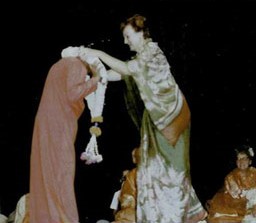
the 50th Birthday Celebrations in 1975.
Mexicans Dr Luis Muniz and his wife Gail 1972
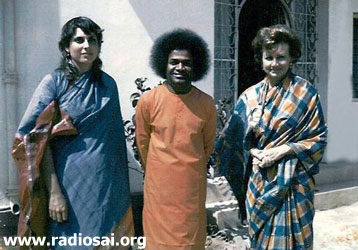
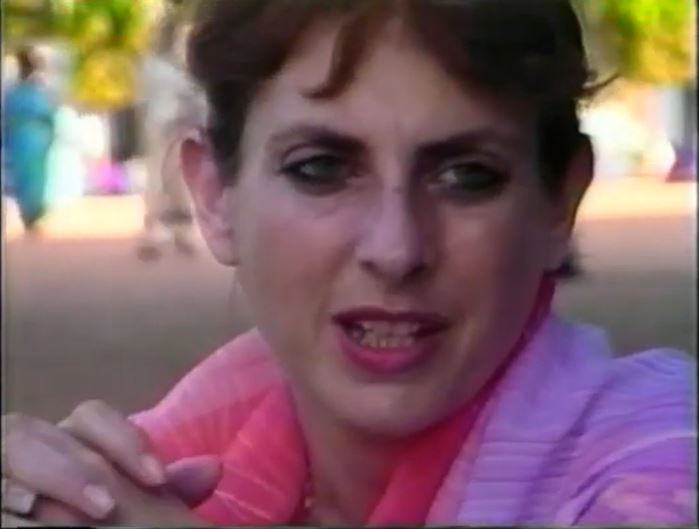
American Lila Youngs 1972 Prasanthi Nilayam
Lila Youngs from La Jolla, California first visited Sathya Sai Baba in 1972.
From Living Divinty (1983) by Shakuntala Balu
“It is not science. It is a miracle by Baba,” say Lila and Homer Youngs of La Jolla, California. It happened in 1972 when Lila went to India to see Sri Sathya Sai Baba with a group of devotees led by Indra Devi. Homer had remained in the U.S.A. Lila had the great good luck of meeting Sri Sathya Sai Baba in group and private interviews.
When she returned home, her husband told her that he had a surprise for her. He had asked EROS (Earth Resources Orbiting Sensor), an American satellite orbiting the globe, to take a photograph of Puttaparthi while Lila was there. He had learnt that the satellite organisation would willingly photograph any part of the world if provided with its exact longitude and latitude.
Homer could not find a map of India showing Puttaparthi, but in expecting to see the ashram, the mandir, the apartment blocks but saw nothing but a barren landscape, pitted and scarred like a moonscape. She asked Homer how much they had cost him and he replied sixty dollars. She was furious: “You spent sixty dollars on these stupid photographs when you know that we need every single cent for our own needs! Anyway, what is Baba going to do with these pits and holes? If he is God, he knows what the Earth looks like and if he isn’t God, these photographs won’t help him.” Silently, Homer gathered the photographs and put them away in his office.
The years flew by. The Young’s finances improved, but they were still not rich. Lila, impetuous as ever, asked Sri Sathya Sai Baba about their financial situation the next time she saw him. He laughed and said, “You have not too much, not too little, just enough money. Is that not so?” Lila gasped, for this was exactly their situation, which earlier when they had less, she had asked for in prayer. Gradually she had begun to feel Sri Sathya Sai Baba’s presence everywhere, even in her thoughts. She wondered whether the finances would improve. Sri Sathya Sai Baba assured her, “Everything will be alright… these things take time.” It surprised Lila to think that even divinity needs time and cannot make all things happen in the twinkling of an eye.
Lila still could not forgive Homer for wasting sixty dollars on the useless satellite photographs. They still sat in Homer’s office.
A few years later, guests on their way to Tecate, Baja, California for the wedding of Indra Devi’s daughter stopped at the Youngs’ home. The Youngs’ ran a Sai book centre and also had a fair selection of Sai photographs. The guests pored over the photographs, commenting and appreciating and acclaiming the beauty of some of them, as is the way of eager devotees.
Suddenly, Homer said, “I want to show you the satellite photographs,” and dashed off to get them, while Lila protested in vain. The guests looked at them politely, and remained silent. “What else can you except when people are shown a lot of holes and pits like on the moon?” thought the embarrassed Lila.
One of the guests who had been turning a photograph this way and that suddenly shouted, “There is Sai Baba!” Every one looked. There he was, his profile clearly visible with his halo of hair and even the mole on the left cheek. Homer peered incredulously. Where had this picture been hiding? It had not been there before, surely. Perhaps he had not looked at them from every side. That must be it, how else was it possible that all four now bore Homer, however, wanted to check further to see if the profile was a reality or a miracle. He contacted the satellite organisation and asked for more copies of the photographs. Normally, it is easy to obtain any number of copies through the computer system. But, in this instance, Homer was told that these particular pictures were not available any more and were officially classified lost. This effectively meant that the only photographs were the four that Homer had and that no more copies were available from any source.
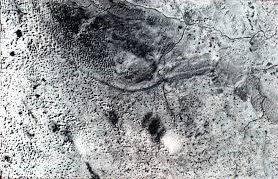
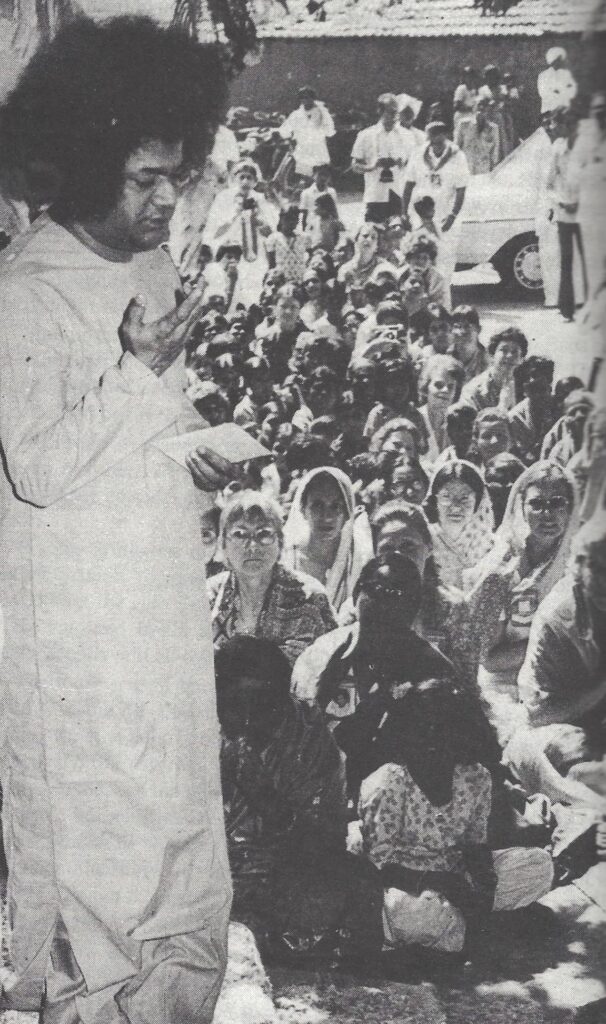
Scot Bill Aitken at his partner’s (The Maharani Prithwi Bir Kaur of Jind – The Phulkian Dynasty) Delhi house in 1972
“I’m a traveller who writes not a writer who travels.” – Bill Aitken.
Author and travel writer Bill Aitken (William McKay Aitken) spent seven ascetic years at the Mirtola Ashram, founded by Sri Yashoda Ma, a housewife turned ascetic in 1929. At the ashram, he met and fell in love with the Maharani Prithwi Bir Kaur of Jind. The Mirtola teaching was, “Love is the guide” and this love brought an end to his restlessness and wanderlust. Aitken found a home in Oakless, her private residence in Mussoorie’s Bala Hissar neighbourhood. Their guru Sri Krishna Prem told Aitken that Prithwi could teach him more than he could. The Maharani was also a devotee of Sri Sathya Sai Baba. In 1982, Sai Baba spent two nights as her guest in Oakless. The Maharani eventually became Aitken’s guru. The most extraordinary thing about their 38-year relationship was how quickly the time passed. He was able to take her to the ‘off the beaten track’ places where royals were unaccustomed, they trekked to all the holy sites of Uttarakhand twice and on separate trips twice to Sri Hemkund Sahib and to the Valley of the Flowers. The Maharani died in 2010. Aitken is also the author of Sri Sathya Sai Baba. A Life (2004).
The Scottish-born Bill Aitken was drawn from Britain to India over many years ago, at first to research for his MA degree on Gandhi, and subsequently to settle for life and become naturalised. His future partner’s husband, the Maharaja of Jind, died the day Bill Aitken entered India on September 7, 1959. Fate and destiny were already working in the peculiar ways that bring the unlikeliest of individuals together. A spiritual lady, educated in London, she had walked out of her estate because of property feuds in 1960 and came to the ashram in 1968. “That was when I met her for the first time. It was a meeting of the East and West,” says Aitken. He experienced twelve years of the rigours of real ashram life before abandoning that path and settling down as the partner of the Maharani, a devotee of Sathya Sai Baba. He is the highly considered author of a dozen books on travel and spirituality in India.
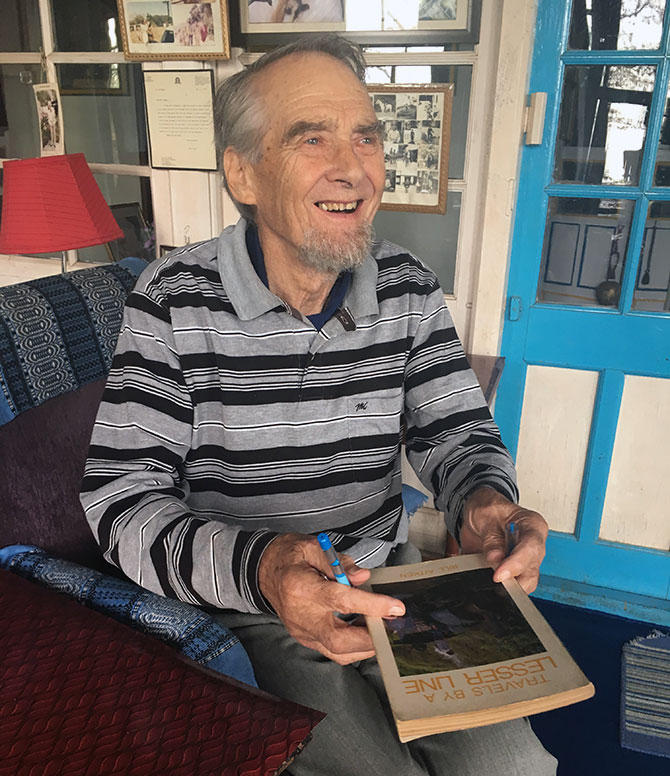
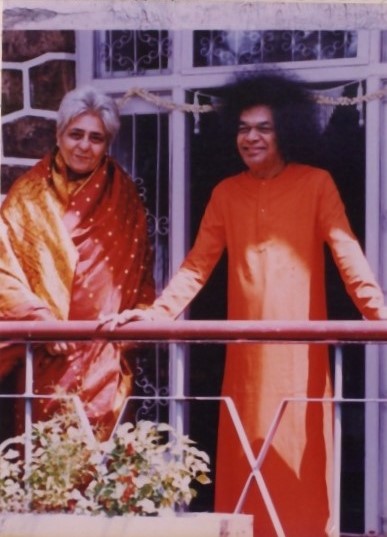
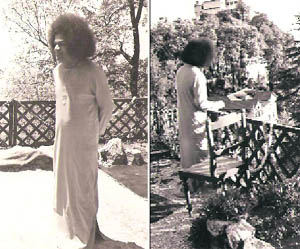
The Tribune, DEHRADUN PLUS, Tuesday April 26 2011, Chandigarh, India. Mussoorie mourns for Sathya Sai Baba
Our Correspondent Mussoorie, April 25.
The residents of Mussoorie joined thousands of devotees in India and abroad in expressing grief at the death of spiritual leader Sathya Sai Baba on Sunday. The Mussoorie Municipal Council president, OP Uniyal, said in his condolence message that it was sad to hear of the demise of a pious saint, Sathya Sai Baba.
He was an enlightened soul and inspiration to many. Mussoorie MLA Jot Singh Gunsola, in his message, said that he had the honour of seeking Sathya Sai Baba’s blessings and meeting him during his visit to Mussoorie. He would be remembered for his noble deeds forever, added Jot Singh Gunsola.
A local historian, Gopal Bhardwaj, reminisced about the visit of Sathya Sai Baba to Mussoorie in 1984. He recalled that Sathya Sai Baba had come to Mussoorie on an invitation from an ardent devotee, Prithvi Bir Kaur, the widowed former Maharani of the erstwhile Sikh princely state of Jind, who used to reside at a house called “Antlers” near Wynberg Allen School. Bhardwaj further said that devotees from far and wide came for a glimpse of their revered spiritual guru and Mussoorie turned into a holy town. Maharani of Jind turned into an ardent devotee after her mother who was a cancer patient was miraculously cured after she sought Baba’s blessing in 1966. Bill Aitken, the Scottish-born naturalised Indian and long-time companion of the Maharani of Jind, introduced him to Baba at Mussoorie. Aitken went on to write a book on Baba titled “Shri Satya Sai Baba: A life”. Bhardwaj is of the view that Sathya Sai Baba’s death has left a vaccum but his teachings will continue to enlighten the devotees and fill the void created after his death.
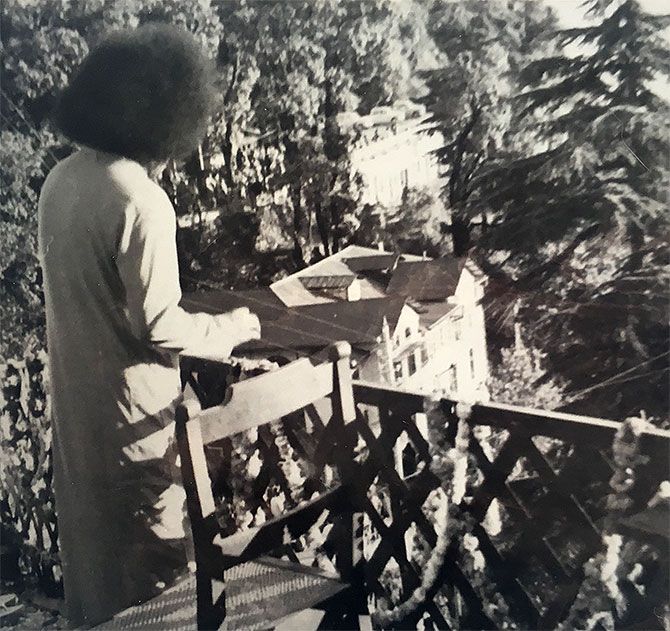
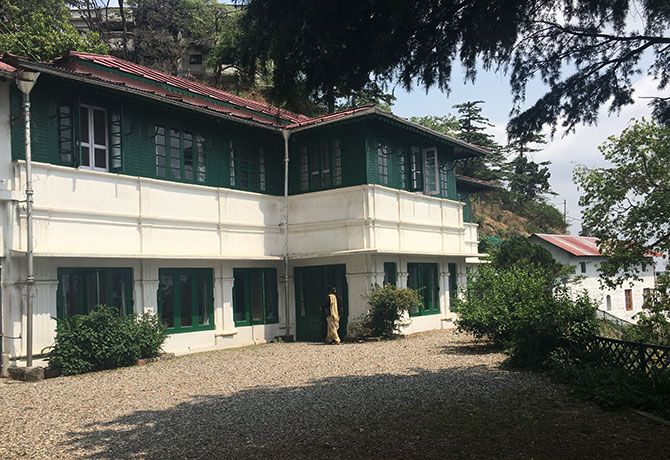

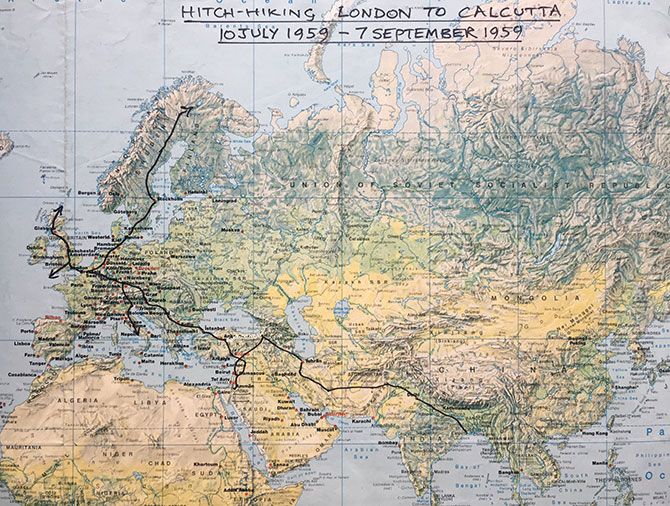
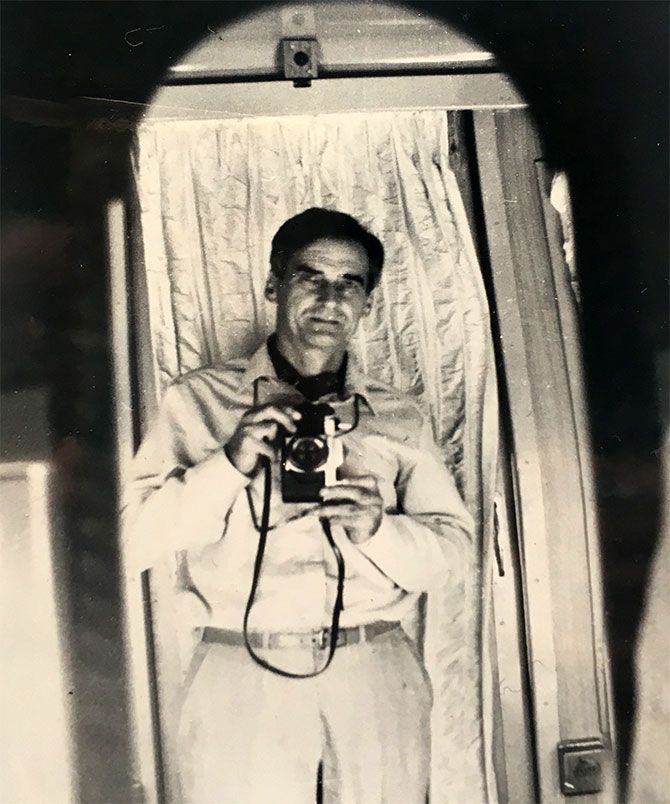
Truth be told, this is one of those interviews where I got more answers than I expected. As usual I learned a lot and am even more in awe of my guest William McKay Aitken (better known as Bill Aitken). He is a dear friend and hillside neighbor who I have long admired for his sense of adventure, his travel writing, his wit, and take on life. Bill was born in Scotland, hitchhiked to India across Europe in the 1950s and stayed onto become a naturalized Indian citizen. Drawn by his love for Himalayan mountains and rivers and plateaus of India bill written extensively about them. He has authored over a dozen books including The Nanda Devi Affair and Seven Sacred Rivers.
The Scotsman who knows India better than many of us By Archana Masih (2017).
“Men of the calibre of Shri Ramana Maharishi, Satya Sai Baba, Shri Aurobindo — you don’t get that level of excellence in the West.”
“The quality of Indian saints is unmatched.”
Bill Aitken came to India nearly 60 years ago. He never returned.
An Indian citizen since 1972, he speaks to Rediff.com’s Archana Masih about finding a religion, a country and discovering India on steam engines and motorbikes.
At 25, he set out over land, from England to India with 50 pounds (around Rs 1,000 in today’s time). Six weeks later, on September 7, 1959, he arrived in India, crossing over from Pakistan through Wagah after hitching a ride for Rs 2 with a group of British tourists he had met in the Kwality restaurant in Lahore.
“The funny thing was I happened to be born a vegetarian. At Christmas dinner, I would have a boiled egg!” says Bill Aitken, 83, with a generous laugh and a youthful, age-defying manner of speaking.
He gave up his British passport and became an Indian citizen in 1972. The procedure included placing an advertisement in Hindi in the local newspaper Almora Shakti.
“I had always gravitated towards Hindustani values. I studied the world’s living religions at the University of Leeds and had planned to go around the world to see Buddhism, Hinduism… I was young, I was free… I thought it is now or never.”
He is sitting in a chair under an assortment of framed pictures on the wall, recuperating from knee surgery. It is comfortably warm in the 100-year-old cottage in Mussoorie where every article seems of vintage.
Among the photographs is a picture of his companion of 40 years, the late former Maharani of Jind and another one of his guru Shri Krishna Prem. A World War I fighter pilot, Shri Krishna Prem, an Englishman, had a degree in philosophy from Cambridge. He came to teach at Lucknow university in the 1920s, became a sadhu and lived his life in an ashram in the Himalayas.
The easy, riveting conversation of journeys, gurus, people and life in an India of a different time is only broken by the hourly chimes of the cuckoo clock and honks of cars on the winding road outside.
Listening to him, if there is one thought that succinctly describes his experiences, it is this — ‘Wow, what a life this man has lived!’
Long before the days of Google, Aitken’s only source of information to plan the overland passage to India were a few books.
Luckily, conflict and strife had not made geographical borders and certain countries as inaccessible as they are today. Yet when has there ever been a time when the world has been at peace?
En-route he wanted to stop in Israel to see the Holy Land, but the battle for the supremacy over the Suez Canal had made it impossible to travel through the Arab countries. “You could only sail to Jaffa through Syria or Jordan, but because of the Suez war the British government said you can’t get a visa to Syria.” A friend who had already done the trip to Israel told him to ignore the advisory. “He told me to just apply for a Syrian visa when I got to Turkey. ‘If you have the cash, you will get the visa’, he said and that was enough to set me off visa-less for Ankara,” he says in a conversation liberally sprinkled with chuckles as he digs out gem after another. He finally did get the visa.
Among the cluster of photographs in the room where Aitken, a master raconteur, is recounting his adventure, is a scrapbook with a map showing the route of the journey, highlighted in black. England-Belgium-Luxemburg-Germany-Austria-Croatia-Serbia-Macedonia-Greece-Turkey-Syria –Lebanon-Jordan-Israel-sail back to Turkey-Iran-Pakistan-India. He rattles off the countries with ease, its thrill still undimmed by the distance of memory. “I journeyed by road/train… in anything that got me further. When I got to Yugoslavia the cars and roads ran out. Student volunteers were building roads under Marshal Tito and there were huge posters on the highways, saying, ‘Marshal Tito loves you, please build his roads.’”
“Wonderful people, the Yugoslavs.” But the highlight of the journey came in Iran — when he was booted out of the mosque in Qom. “I had travelled with pilgrims on a bus and went in along with them, but I was physically thrown out. The Shah of Iran was still ruling then and it was used by the Ayatollah (Khomeini) as a seminary. He wasn’t there at that time,” he laughs heartily again, sipping a glass of warm water. It was a different world then — Yugoslavia had not broken up, the Shah had not lost his throne and Pakistan was under martial law.
“I made it to India, god knows how,” he chuckles, remembering that Wagah was a quiet crossing at that time without the masculine theatre that is played out between Indian and Pakistan every evening. He caught a train to Amritsar to visit the Golden Temple and then onward to Delhi where he stayed at the Birla Mandir, which was inaugurated by Mahatma Gandhi with the condition that it should be open to people of all castes. But by then he was broke. “50 pounds khatam ho gaya, even though I had survived on grapes and bread to make it last,” he laughs.
A friend in Calcutta then got him a teaching job for Marwari kids at the Hindi High School for Rs 400 a month — and Aitken set off by train to Bengal for another life-changing journey. He taught for one-and-a-half years and lived at the Salvation Army hostel for Rs 1 a day. “The only Christians that I’ve found, who actually practice what Christ was all about!” he says in good humoured jest. “if I had any money I would leave it to them. They are simple and sincere.”
Last year an old student from the school, now a CEO of a large company, sought him out and invited him for lunch.
He loved Calcutta and the people. They were so themselves — so at home in their own culture, he felt. “They gave a hoot about anyone else. Most people when they saw an angrez, they appeared polite and helpful, Bengalis just laughed at you,” he says with a laugh himself. “It was so refreshing that I was a figure of fun.”
With an MA in comparative religion, Aitken’s plan was to experience the religions of the world and return to England to teach — but the Hindi High School changed it all for him. “What turned me, having grown up in the Western education Scottish Calvinist faith, was this wonderful image of Saraswati at the entrance.” “It was mind blowing. I stayed on because of Goddess Saraswati. That really decided that India complements my thinking. The psychic — this more than the body dimension — was totally lacking in the West.” As he says this, he points to a statue of Saraswati, the Goddess of Learning, placed in a shelf opposite the chair he is sitting in. It seems to be thoughtfully placed, to be in front of his eyes at most times.
Bill Aitken has been a student of Hinduism since 1953. His scholarship has been honed by half a century’s experience of witnessing and encountering the spiritual and the divine in India. He spent 11 years in two ashrams in Uttarakhand in the 1960s, working as a gardener and labourer. An almost fatal bout of typhoid nearly took his life there, but he came out of it semi enlightened, he says. “We are not born with religion, we are born to find our religion,” says the man who has visited all the dhams (religious destinations) and harbours an innate sensitivity towards India’s mountains, forests and rivers.
He has written over a dozen books travelling through the country on his motorbike and trains. For twelve years, every winter, he set out of Delhi on his motorbike to the Deccan and says the most beautiful mandir he has ever seen is the 13th century Ramappa temple in Telangana. “Those living, vibrant statues… I never tire of the Deccan — the temples, the legacy of the Maratha empire, the brilliant architecture of medieval Muslim sultanates in Bidar, Bijapur — fantastic!”
Historian Ramchandra Guha once said in an interview that Aitken’s book Seven Sacred Rivers is a gem of a portrait of India.
“As a child I was very dissatisfied about the nature of the divine god,” says Aitken. “Whenever I questioned my elders, the answer always was — ‘eat your bun’,” he laughs. “Only as a student, after I read these various world scriptures, immediately, the Upanishads made sense.” “India finds worship as a natural thing to do. In Shakespeare’s England there was still a psychic dimension, but with the Age of Reason in the 17th-18th century, the psychic reality — like the credence to dreams and premonition — was cut out. It all became cerebral.” “Men of the calibre of Shri Ramana Maharishi, Satya Sai Baba, Shri Aurobindo — you don’t get that level of excellence in the West. The quality of Indian saints is unmatched.”
Aitken once wore a kilt. His native village has a monument to Scottish hero William ‘Braveheart’ Wallace, the iconic martyr of Scottish independence.
His painstakingly made scrapbook — which has photographs, travel memorabilia like the first -ever tourist permit to Arunachal — has a section devoted to Tullibody, his village in the Forth Valley. It has photographs of his family, a picture of an old Scottish steam engine and his beautiful village — but Aitken has left Scotland far behind. He last visited his sisters in 1997 and does not think he will make another trip.
When he took Indian citizenship, he wrote to the British high commissioner renouncing his British citizenship — and the reply he got was — ‘you can’t!’ “I was informed that because you are born in Britain of British parents you remain British whether you like it or not,” he laughs. “So I’m Hindustani and Vilayati.” “I love India. Britain has no appeal, I like the people, but it is a strange place. I feel it is an unenlightened well meaning nation. They gave me a good education and I can never thank them enough.” Fired by that education’s encouragement to question beliefs and ideas ultimately led Aitken to India. In England, his external examiner for the MA thesis happened to be a Bengali. The professor told him that if he ever happened to visit India, he should meet Shri Krishna Prem, the English sadhu in Mirtola ashram in Almora. In the strange ways fate sometimes goes on to craft people’s lives, it was a stroke of chance that the teacher from whom Aitken was taking Sanskrit lessons in Calcutta, also knew Shri Krishna Prem. But he warned him that the guru did not like visitors and gave him a letter of introduction.
Aitken would only meet the guru a few years later, but like most of his journeys, his move from Calcutta to the Himalayas was yet another fascinating discovery of India, her people and of himself. You have to separate the concept of India as a nation State which is very young and the Upanishadic wisdom which is timeless.’
In the second part of his conversation at his home in Mussoorie, Bill Aitken speaks about spending over a decade in ashrams in the Himalayas, learning Hindi, the regard for a guru and love for a maharani — and glorious journeys that changed his life forever.
“Let’s go to Badrinath.” A teacher friend at the Hindi High School in Kolkata, where he taught, dangled the tantalising idea to Bill Aitken one day. Aitken was already looking to moving on from the school and took up the offer of his friend, a lovable eccentric. The friend was no less of a unique traveller himself — whenever an Indian state created a new district, he would go and visit it! The duo planned the trip, but as a foreigner Aitken had to write to the Government of India requesting a permit to travel to the upper reaches of the then Uttar Pradesh state. Very innocent of India of those times and unknowing that rarely anything happened without influence, he asked the babus to kindly send the permit to the Shivananda ashram in Rishikesh where they were going to stay for a few nights. With the tenuous hope of that permission letter, he set off yet again. The permit never arrived.
His Bengali friend was not one to be deterred. He said they would carry on regardless and see how far they could go before being turned back. They managed to get to Rudraprayag by waving cholera certificates to the authorities. In those days there were no motorable roads beyond that and people had to cross a single suspension bridge to get to the other side. “Jim Corbett’s man eating leopard of Rudraprayag used to case this bit,” laughs Aitken, “As we were walking, a policeman asked tum kahan se aaya hai? (Where have you come from?) I didn’t know Hindi and I was turned back.”
Aitken tells these life stories — so rich and vivid in detail — that they play out as film, but he makes it out be just a chain of ordinary events that built his life.
“Earlier, at the Kumbh Mela in Allahabad I had met some missionaries who said you would never learn anything about Hinduism unless you learn Hindi. They said the best place to learn Hindi was at the Language School in Landour.” So Aitken came straight to Landour and enrolled for a month at the school, which still remains the first port of call for foreigners wanting to learn Hindi. “I learned Devnagari and thoda bahut Hindi. At least I could read the bus signs then,” says Aitken who speaks Hindi fluently now.
A missionary at the school invited Aitken to Nainital, and he realised that this could be the opportunity to see this English guru he had heard so much about. Sri Krishna Prem’s ashram in Almora wasn’t too far and the meeting was to change his life forever. The guru, however, had some other plans. Seeing Aitken’s interest in Gandhian values, he advised him to visit Sarla Devi, a Gandhian in Kausani.
Considered one of Gandhi’s English disciples like Miraben, Sarla Devi was born in London and her original name was Catherine Mary Heilman. She did pioneering work in conserving the Himalayan forests and in the evolution of the Chipko Movement. The ashram she set up continues till today. “I liked the simple life, health, fresh air. Her ashram was in front of the Goddess Nanda Devi. I became a maali (gardener). My expenses were Rs 2 a month for postage, sabun (soap) etc.” He spent four years there, almost died of typhoid and was cured by Sarla Devi’s nature cure treatment. During his illness, he says he had an out of body experience that made him approach another level of reality. “The scales from my eyes fell off.” “From that moment I suddenly saw how life is one huge joke. We are all guaranteed to be well meaning idiots because no one questions what is told. It has nothing to do with ideologies. Most ideologies are mostly mental crap.” “The world is not yesterday or tomorrow, but only now. Every person has the capacity to find within the reason why s/he was born and the reason of life.”
After recovering from typhoid, on Sarla Devi’s advice, Aitken went to consult Krishna Prem and stayed in his ashram for the next seven years. It was a tough life. He worked the farm from 5 in the morning to 10 at night. “It was all to get you beyond the physical concept of oneself. If you died, it was fine — way to go,” laughs Aitken.
A few years into ashram life, Bill Aitken met the former Maharani of Jind. The royal would alter the course of his life. Mahrani Prithwi Kaur’s husband, the maharaja of Jind, died the day Bill Aitken entered India on September 7, 1959. Fate and destiny were already working in the peculiar ways that bring the unlikeliest of individuals together. A spiritual lady, educated in London, she had walked out of her estate because of property feuds in 1960 and came to the ashram in 1968. “That was when I met her for the first time. It was a meeting of the East and West,” says Aitken, referring to her as “Maharani” whenever he mentions her in our conversation.
The house was her private property and is stamped with her presence. Framed pictures of her rest on a piano that she once played. There are artefacts and other photographs — of her as a school girl in England, and one of Sathya Sai Baba, who stayed in the cottage for two nights in 1982. A stone memorial quietly rests in the garden. On the ground floor are hunting trophies. The cottage houses a trust for mountaineering studies which was the maharani’s desire.
Jind is divided between the present day Sangrur and Jind districts. At its height, the estate extended from Jind, Haryana to the border of Patiala in Punjab, says Aitken. It was famous for its kennels and had 300 hunting dogs.
Maharani Prithwi was married at 13 and had her first child the same year. She lost her husband; both her only sons died young and her stepson became maharaja. She was a huge devotee of several gurus all her life.
“Shri Krishna Prem was guru to both of us. He told me I could use my talent better as a private secretary to her rather than wasting it trying to become a monk,” says Aitken. He came to Delhi in 1972, where Prithwi Kaur had a house. “All her friends, the golfing set were in Delhi. She was very outgoing,” says Aitken.
He travelled every winter and they spent summers in Mussoorie. “I became a travel writer and got a slot in The Statesman, wrote a few books. Becoming a published author gave me some status in Delhi rather than being a hippy,” he says downplaying his personal achievements with a dismissive laugh.
It is time for lunch and Bill Aitken leads the way to the dining table by the window. A thali with katoris is set with dal, bhaat, bhindi, roti and dahi. Papaya, peda, gur are the dessert options.
Whenever he returned from his long journeys, he would seek dal and bhaat, he says, as Rampyari, the cook and a member of the maharani’s staff, serves him a spoonful of hot dal.
After lunch, he shows his scrapbook which is a tribute to many fabulous journeys. He has lovingly put it together, the description of photographs, clippings, tickets, permits — written by hand. It also includes a clipping of the notice in the newspaper of his application for Indian citizenship in 1972 and the first tourist permit ever given for travel to Arunachal. He speaks about his bike rides to Lahaul and Spiti in Himachal, Gangtok-Ladakh, Arunachal Pradesh, Naxalbari-Nepal, source of the Kaveri in Coorg. He is the only person to cover the length and breadth of the country by choti line trains drawn by steam engines.
In his nearly six decades in India, Bill Aitken has experienced, lived and learnt about his adopted country with the hunger of a seeker. “You have to separate the concept of India as a nation State which is very young and the Upanishadic wisdom which is timeless,” he says, “You can’t kill ideas, faith or devotion.” He came to India twelve years after it gained freedom and has seen the nation come into its own. When he arrived, life expectancy was 27, now it is 67, which is a huge achievement and the Congress — much maligned these days — can take credit for it, he says. “You can’t write them off, these people gave us freedom. India had a giant in Nehru at that time.”
For a scholar and practitioner of Hindu philosophy, I am curious to know what he thinks about the current zeal for gau raksha and aggressive nationalism. “Cow regard is very beautiful, but it is not the means to realisation. It is kindness to the whole creation. To give it priority suggests you don’t mean much about the higher levels of Hindu philosophy,” he explains. “There has been a colonial transposing of university culture, but India has its own ancient gurukul tradition. By all means fly a flag on national occasions, but don’t demean knowledge by assuming it is confined to one nation which is what a national flag connotes.” “If you want to have a flag, then have a flag to the goddess of learning (Saraswati).” India, he says, has a much superior civilisation and a brilliant religious tradition. But it must be cautious. “India has slipped 3 places in freedom of expression. It is now on the level of Zimbabwe, Pakistan — so there ought to be some reason for soul searching.”
Disregard for the environment is another thing that bothers him and he gets up to point to a tree that has dried up in front of the window. “Human beings are the planet’s greatest pests. It is people who kill trees.” Outside is a Deodar tree planted by his friend Ruskin Bond. As he walks us out, taking an afternoon walk, we pass the tree and Bill Aitken narrates another of those interesting gems from his life. This one is hilarious. “I was once invited to speak at a university. The vice chancellor gave a short speech about my writings and introduced me as Bill Clinton!” He laughs aloud.
It is an afternoon dominated by laughter, stories, journeys and India. Listening to him, I think if there is a treasure one must have it should be a scrapbook of memories like his.
American Peter Mt. Shasta Indian Fall 1972 Prasanthi Nilayam
Peter Mt Shasta journeyed to India in 1970 and spent time with Ram Dass and his guru, Neem Karoli Baba, eventually traveling to the Himalayan foothills to live briefly with Gangotri Baba, a disciple of Babaji. He also had transcendent experiences with Anandamayi Ma and other saints. Later he traveled to Tibet and Egypt but did not find his true path until Sathya Sai Baba instructed him to meditate on the I AM – which leads to the True Self.
Returning from the East, the Ascended Master Saint Germain materialised before him in Muir Woods near San Francisco and told him to go to Mount Shasta, where he would meet the teacher who would prepare him to work with the Masters in their quest to help humanity. This teacher was Pearl Dorris, a former assistant to Godfre Ray King, author of Unveiled Mysteries. Vowing to accomplish the training that was offered, he went through years of instruction, initiation, and adventures at the hands of the Masters, who occasionally appeared in physical form. These adventures are described in his best-selling book Apprentice to the Masters: Adventures of a Western Mystic, Book II.
He is working now under the direction of Saint Germain to bring the ancient teachings of Tibetan Buddhism on the nature of mind into the I AM Teachings of mastery. His book Search for the Guru: Adventures of a Western Mystic, Part I, describes his visit to Prasanthi NIlayam. His other books are, Apprentice to the Masters: Adventures of a Western Mystic, Part II, “I AM” Affirmations and the Secret of Their Effective Use, I Am the Violet Tara: Goddess of Forgiveness and Freedom, I AM the Living Christ: Teachings of Jesus, It Is What It Is: Further Adventures of a Western Mystic.
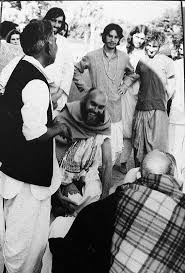
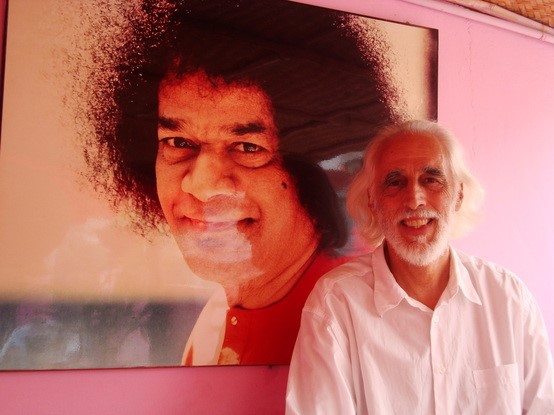
Keith and Muriel Moore, John-Roger, Phillip Anthony, Wesley, Michael Sun, Bob Tackney, Beverly Terrell, Muriel J. Engel (1968, Prasanthi Nilayam), Mark Holmes, Tom Johnson, Jeri and Bob Silver October 1972
My husband Keith and I met John-Roger in April of 1968 at a live home seminar in Somis, Ventura County in California, at the home of Lillemore and Gene Anderson. Lillemore had been at the first J-R seminar in Santa Barbara at Muriel Engel’s home. We were a small group of about 15 to 20 people.
The year before I met J-R, I had a Life Reading by Neva Dell Hunter in 1967 that I found very accurate and interesting. Neva Dell was a metaphysical teacher and practitioner who offered karmic readings, aura balancing, and who founded the Quimby Light Centre in Alamogordo, New Mexico.
In 1968, Neva Dell came back to Santa Barbara and I was given the opportunity to have a follow-up to my Life Study with a Light Study with her. I debated whether to do this because I was studying with J-R. I decided to do it and was given an address in Santa Barbara for that purpose. When I knocked on the door, who should answer it? J-R did. Boy, was I surprised! It turned out to be Muriel Engel’s home.
In October 1972 Keith and I had the good fortune to be in India with J-R, Phillip Anthony, Wesley, Michael Sun, Bob Tackney, Beverly Terrell, Muriel Engel, Mark Holmes, Tom Johnson, and Jeri and Bob Silver. Previously we had been invited by our friends, Herb and Carol Daly, to go with them while they travelled India and then were going to visit the ashram in Puttaparthi to meet Sathya Sai Baba. I had this strong desire to go on this trip when I heard that J-R would be there. Keith said he wouldn’t be going, but when he heard that I decided to go he decided to go to protect me. Thank God!
We were encouraged to go by our friends Jeri and Bob Silver who were in our home for a taped seminar. We decided to go on the part of the trip when the Daly’s would be at Sathya Sai Baba’s ashram in Bangalore and J-R would be there as well.
Speaking with Mark Holmes 42 years later, I learned that Mark had a similar experience. We decided to act “as if” it would work and be content with the results. We didn’t have passports so I took papers to Los Angeles on Thursday and the person in line ahead of me wanted to get his passport for a trip he was taking two weeks away. He was turned down. I thought well, guess this trip is not to be. When my turn came I told her we were leaving Monday night and she said OK, I could pick the passports the next day. Wow! I rushed home, found out what shots we needed, yellow fever and small pox, found a doctor who could give them to us, had our shots, found out the name of the Indian travel agent, called him and drove to Los Angeles Friday to pick up our passports, drove to the Travel Agent and paid for and picked up our tickets.
On the way to the LA airport we stopped at the store and bought 3 big jugs of water. This was before the age of carrying water bottles. Monday night we boarded a non-stop plane from Los Angeles to Paris and J-R and staff met us at the airport in Paris. We travelled the Metro with our luggage, trunk and water bottles to a small, intimate hotel called Hotel St. Marie not too far from the Louvre. We had a lovely dinner at a small restaurant in the upper room.
We left the next morning on Air France stopping at Tel Aviv, Israel; Tehran, Iran and then on to Bombay, India.
My most lasting and unique experience on our trip to India was having the feeling of being completely and totally encapsulated in layers and layers of Light. It was a feeling of Absolute and Complete Protection. I have to laugh because I had a headache on the day of our departure which quit instantly when we boarded the plane. Perfect health and wellbeing stayed with me until we again disembarked in Los Angeles three weeks later when I again picked up my headache. It seems that expansion of my consciousness had been accelerated due to our India trip.
First thoughts upon driving around in Bombay – “National Geographic – its come alive! The ox carts are moving, the people are talking, and I can smell the warm unmistakable earthy aroma that is not unpleasant, but must be only peculiar to India. It’s three dimensional. It’s all around me!”
The excitement and dread of my first night in India. Cement floors, bare bulbs, tin washtub for bathing, no screens on open windows, overhead revolving fan, canopy mosquito netting over the bed and no sheets. Covering myself with my own coat, like a security blanket because it was my own and familiar.
The heavenly taste of hot strong Indian tea mixed half and half with hot, frothy milk in a pitcher, with plenty of raw sugar. Small tree-ripened bananas, papayas, orange juice, chapati and chutney.
Much to my surprise, I felt a very real meeting ground, on a silent level, with those Indians that we came in contact with. As a whole, my impressions were those of a calmness and gentleness displayed by the people. One met the exceptions as we do in our country, but I truly felt a peace which I didn’t interpret as apathy but as acceptance and a general feeling of good will. This may in part be coloured by my feelings of being enfolded in Light, but whatever, those are my lasting impressions.
The sadness as one is greeted in Bangalore by a young boy of about twelve who is totally blind. The uncanny gentleness of his touch as he passes by, finding his way. The word spread from the taxi drivers that this little boy really needed the help. The tears that spring to my eyes when I see the sweet joy on his face as I secretly press some coins in his hand. Secretly, because we might be overwhelmed by other young beggars who are better able to fend for themselves. A shadow in my heart as I see him walk away into the dark by himself, up a lonely road, without even a stick to guide him. A “God bless you” and “I’m sending the Light to you for your Highest Good, wherever you are, whatever you are doing.”
We slept on the floor of a porch. Awakening in the ashram was a beautiful experience. Hearing the runners in one’s sleep, chanting in counterpoint to other runners in the commune. Drifting back to sleep until sun up when one went noiselessly to be blessed by Baba as the sun rose and he stood silently on the balcony. A multitude of people, but one could have heard a pin drop. A beautiful way to begin the day.
Previous to that, I went to a store that specialised in sari fabric. It was so colourful. I would point to one and the man flung it out in a sweeping gesture until there were fabrics on fabrics. A beautiful display, it was a rainbow of exotic hues. I chose one and then they measured me for the little top that is worn with it. Coming back in two hours to pick it up; sewn by a little Indian man sitting cross legged on the floor with his sewing machine. Wearing a sari for the first time, giving a questioning look to an Indian woman at her door at the ashram. Gesturing, how the heck do I put this thing on? A gracious smile and kindly hands winding, patting, and pulling in mysterious ways and finally a finished product. Feeling somewhat self-conscious when appearing before the others and hearing a gracious comment from the ever perceptive John-Roger, saying something like, “You really look very natural in that sari.” Feeling very grateful for his perceptiveness.
Baba was small, giving the appearance of being larger, graceful, gentle and impish. The most surprising thing to me was his sense of humour, and that I could respond to. The astounding moment when Baba manifested rings, necklaces, pendants, statues, candy and sacred ash. Seeing it, mostly believing it, and being equally astounded that my own innermost response is one of “That’s really interesting, but it doesn’t really matter, I like him anyway as a person.” Which is pretty nonchalant at best!
Plenty of words to express the plumbing system at the ashram. A raised platform, two pieces of wood shaped like feet on which to squat over a hole in the floor, no flush system except a pitcher of water. A real experience. As I said before, “The earthy fragrance of India.” Treating our Basics to the luxurious Hotel Ashoka after the ashram.
The naturalness of coming out of the Hotel Ashoka at any time of day and knowing that our own taxi driver would be there without ever verbally making any sort of agreement. Never asking the price of a fare, but always being treated fairly. The luxury of having him stay with us while we were shopping, following us around, taking care of our packages in the taxi. The complete trust, the satisfaction in knowing it was deserved. The little thing inside that tickled with delight finding out he was a Muslim and fasting between sunup and sunset!
I saw Princess Hermilla at the Ashoka Hotel. I had met her previously at a tea that was given for her by a friend in Ventura. She was wearing a sari and I was wearing a pants suit. When I saw her at the Ashoka Hotel in India, she was wearing the pants suit and I was wearing a sari! Buying an oil painting of turbaned Indian man eating fruit.
Being awakened by J-R ever so gently and softly as I lay sleeping on a bench in a Bombay airport. That is probably not as good as what it might be to have the memory of his coming to take you off to the Soul Realm, but it must come close. Leaving Bombay on a humorous note – when we went through customs the men went to one side and the women went through a curtain behind which there were two Indian women in their saris sitting in the lotus position on a raised platform. We had to lift our skirts and the women would then giggle. https://www.msia.org/

American Roy Eugene Davis 1972 Whitefield
From Sanathana Sarathi, May 1973 – Sri Sathya Sai Baba is a modern wonder, through whom cosmic energies flow, and genuine miracles manifest.
I first heard His name while taking part in a radio show, three years ago, in Long Beach, California. One of the panellists was Indra Devi, well-known Yoga teacher. She told me that He materialised objects with a wave of His hand, healed people with a thought or word, and even raised the dead. She was so enthusiastic that my first response was scepticism. I was to find that she did not exaggerate in the least!
His name is a combination of words—Sathya means ‘the highest truth’; Sai means ‘saint,’ and Baba means ‘revered father.’ Truly, Sathya Sai Baba embodies the meaning of His name, and has all the attributes of a Divine incarnation.
Being a disciple of Paramahansa Yogananda (an Indian Master), and having met many illumined people over the years, I know the signs of sainthood. Baba is, without a doubt, a true adept and master-teacher. Some people initially are in a state of wonder when they see Him, for He does cut a dramatic picture. He is not a large man but is very lithe and nimble; He has a certain rhythm when He moves and walks. He is ever aware and spontaneous… He is more than sharp as He knows and is aware of what is happening all the time.
As a personality, He is an incarnation of love. The emanations just flow out to take in those who are close to Him, either physically or telepathically. He is not confined to His body as He moves easily through inner spaces not only in thought, but, in His subtle body. He has been seen at the bedside of dying devotees, even while conducting services or meetings hundreds of miles away. Sai Baba is a master of time and space. This I know. And, this is what a true Master is—one who comprehends the mystery of maya (illusion), the fabric that makes up nature. When I sat with Him last November, He turned to me and said, “Every-thing is one thing. Do you agree?” The realization conveyed with this simple statement was profound… To Sai Baba, the manifest worlds are projections from the central source, and imagination makes external life possible. It is all a divine dream, and Baba lives from the position of seeing the true nature of the life process…
After landing in Bombay, I flew to Bangalore and met Baba the very next day. The first evening session with Baba and about two-dozen other visitors lasted three hours. I sat just to His left and was able to observe Him closely, and take in His consciousness. A more alive and vital person cannot be imagined. The following day, we spent over six hours with Him… I witnessed at least fifty or sixty occasions when Baba produced things for various people. Each time, it was appropriate, ‘right’ for the particular person and situation. He does this in two ways: He materialises an object by holding a mental picture of it and exerting His will; at other times, He will teleport an object. In the first instance, Baba brings available substance into concrete form; in the second instance, He dematerialises an object, wherever it is, and reproduces it in His hands. It happens in a moment. I have seen Him do it time and time again.
But, His miracles of manifestation are not the important aspect of His ministry. He has come to restore dharma, the creative law of life. He has come to encourage people to abide by moral and spiritual laws, in order to regenerate society and transform human consciousness. He does not teach any specific method to all people. He teaches according to individual need. When it is required, He encourages the guru‑disciple relationship, gives instruction in meditation or advices relative to better living or healing of a condition. Whether speaking to one person, or one hundred thousand (as He did last year at New Delhi), He always says the right thing.
During the twelve days I spent with Sai Baba, I watched Him closely and received His love… Several times, He called me in to small group interviews, where I had the opportunity to see Him work with individuals. Sometimes, He opened the sessions with a casual remark, or asked a question. At other times, He would turn to a person he had never seen before and give helpful advice. Baba has said to many people, ‘I know your past and I know your future.’ Being with Him as He worked with so many men and. women, there is not a shred of doubt in my mind that He does know…
After visiting Sathya Sai Baba, I am convinced of His greatness and of the importance of His global mission. He will surely visit the West one day, and the impact on mass consciousness will be profound.
~Roy Eugene Davis (Director of Centre for Spiritual Awareness; Author: Darshan : The Vision of Light)
Roy Eugene Davis – Biography (yoganandaharmony.com)
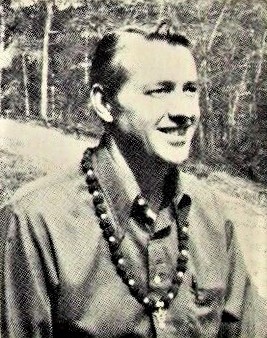
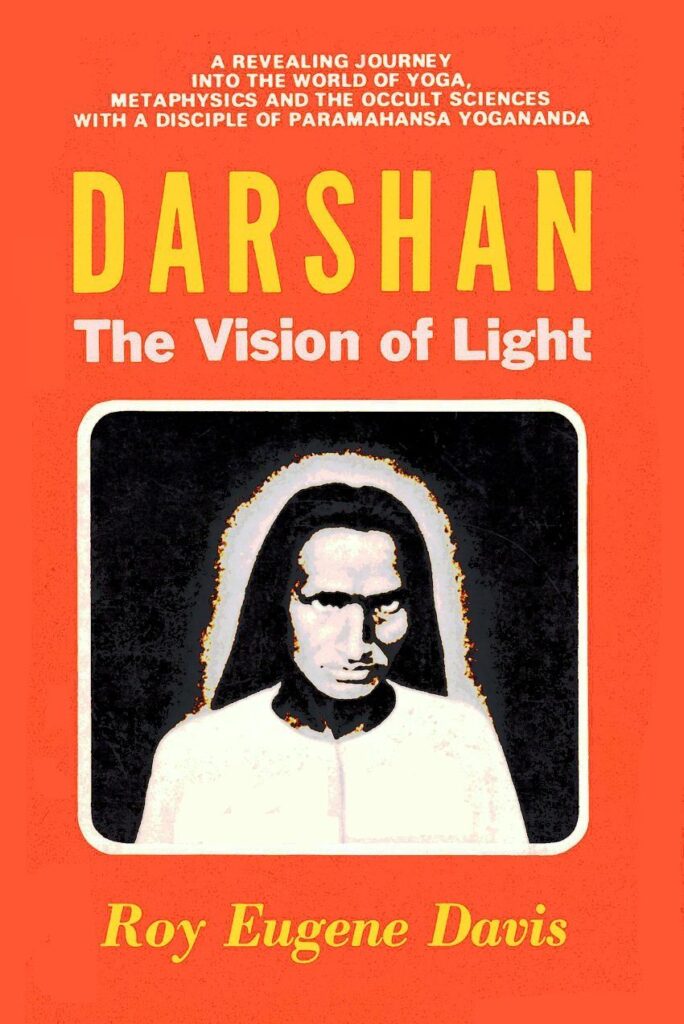
New Zealander Mary Garden 1973 Whitefield
Mary Garden’s brief visit to the Whitefield ashram is captured in her book The Serpent Rising first published in 1988 and again in 2022. The book mostly details her years spent with Balyogi Premavarni in Rishikesh, in particular the method Premvarni used for ‘raising kundalini’ in herself and other Western women.
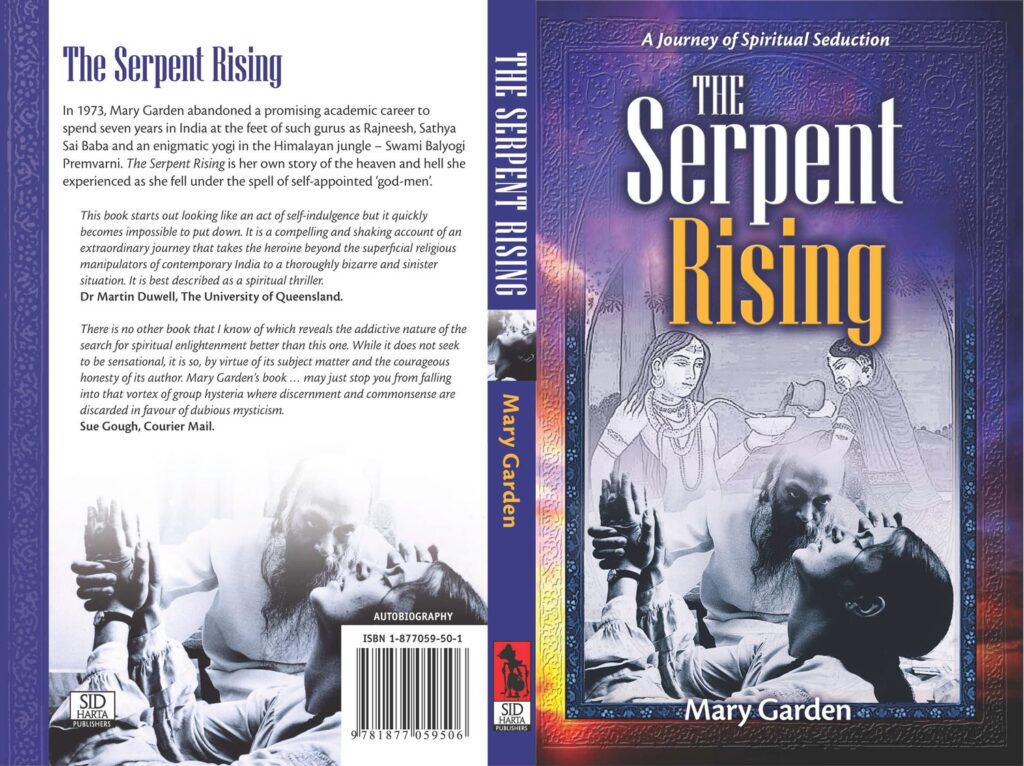
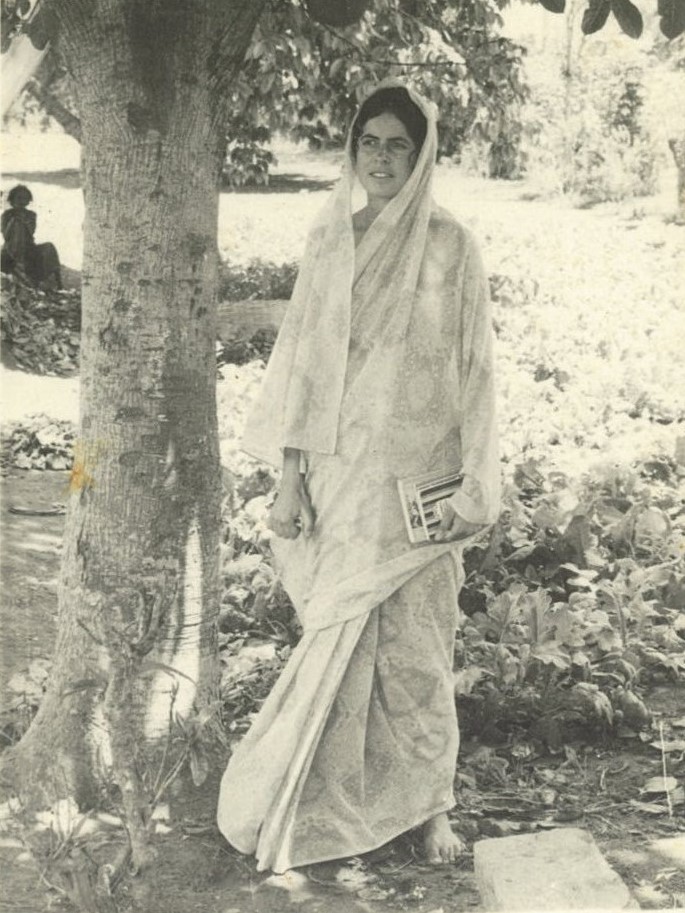
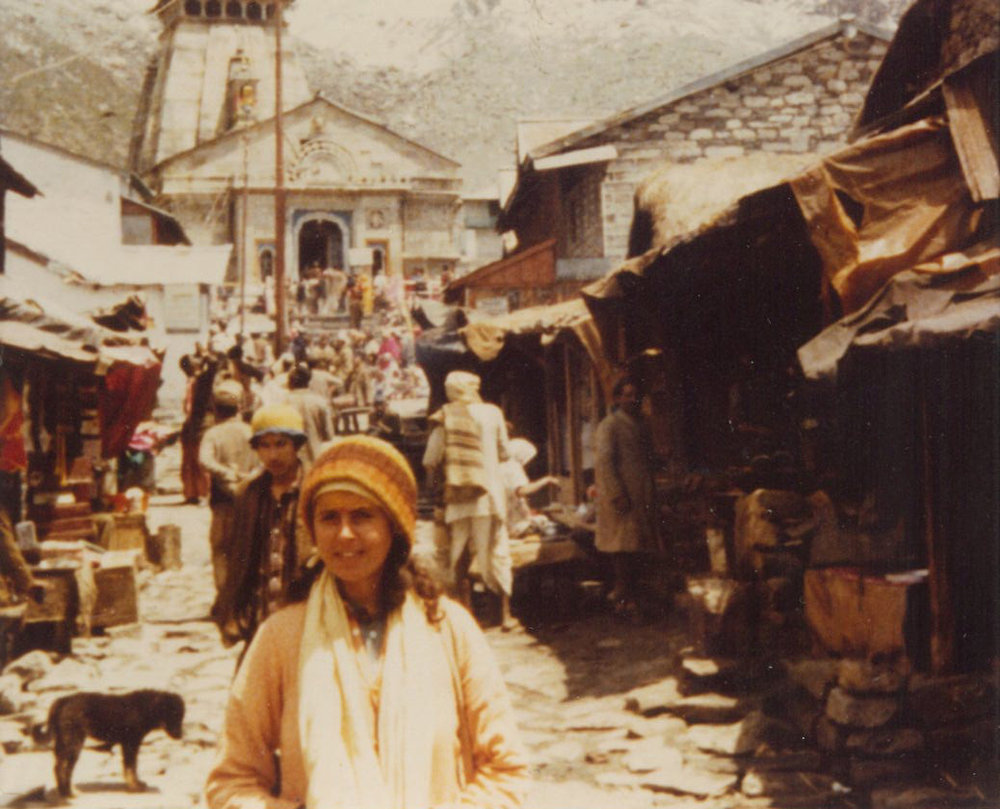
Americans Sidney and Phyllis Krystal January 1973 Whitefield
Psychotherapist Phyllis Krystal (1914 – 2016) writes – “On our first visit to Bhagavan Baba in 1973, He set the stage for the teaching He would be giving me. At our farewell interview, I asked Him when He would like us to return. Instead of directly answering my question, He said, “First, remember that you do not need to come back to see this little body,” pointing to Himself. He watched my reaction and then continued, “Find Me in your own heart. “After another pause, to determine if I had fully understood his important message, He added, “But you will come back to be re-energised.”
Phyllis Krystal’s book book Sai Baba – The Ultimate Experience (1985) describes her experiences with Sathya Sai Baba. She has also written Cutting The Ties That Bind (1982), Cutting More Ties That Bind (1990), Taming the Monkey Mind (1994), Re-Connecting the Love Energy (1995), Cutting the Ties of Karma (2001), Let’s Thank God (2003), Ceiling on Desires (2009).
The Flight of the Phoenix to Liberation (2017) is Phyllis Krystal’s last book completed at the end of her 102 years and 8 months of life. In it she describes her experience of arising from the dark night of the soul and transcending the old attachments of her egoic personality and following explicitly the demands of her Higher Self or Higher Consciousness.
Born in Highgate, London, England and graduated from Bishop Otter College, Chichester. She immigrated to the United States in 1937. She married Sidney Krystal, a prominent Los Angeles attorney.
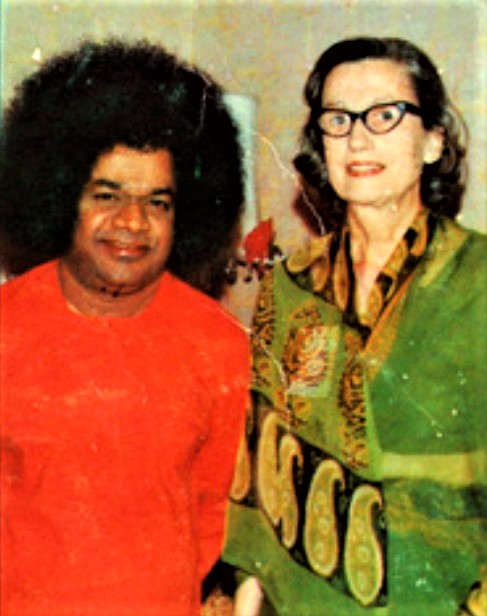
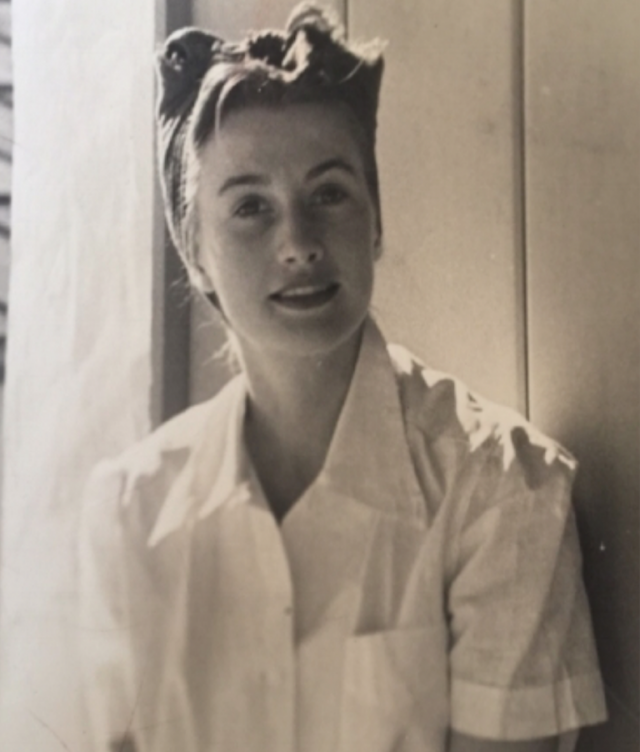
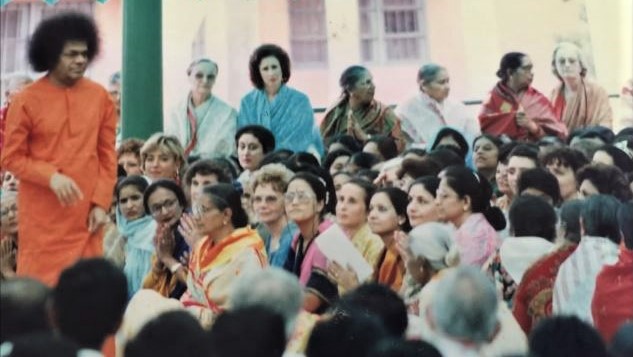
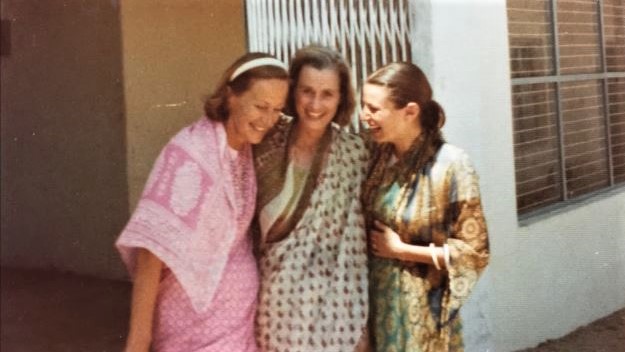
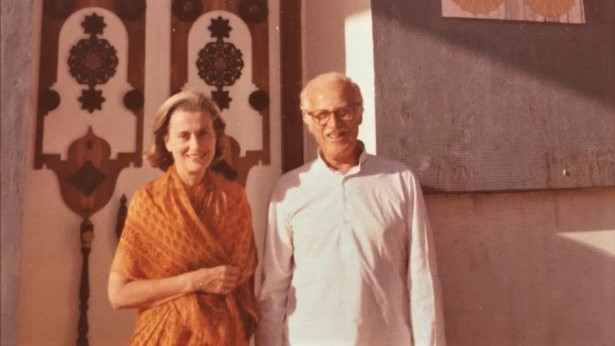
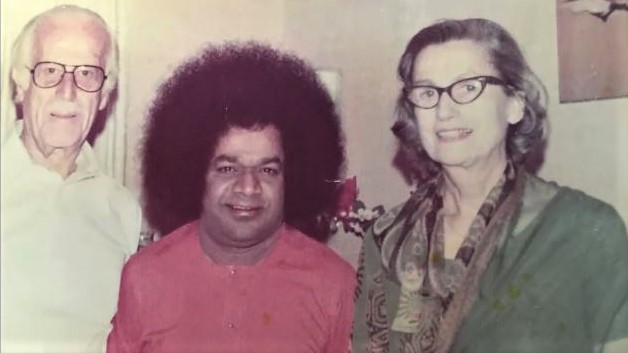
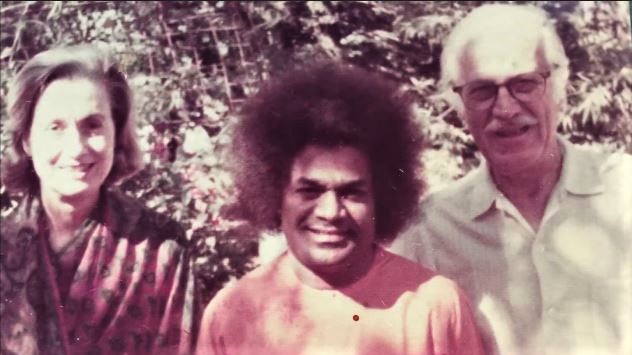
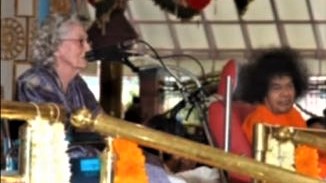
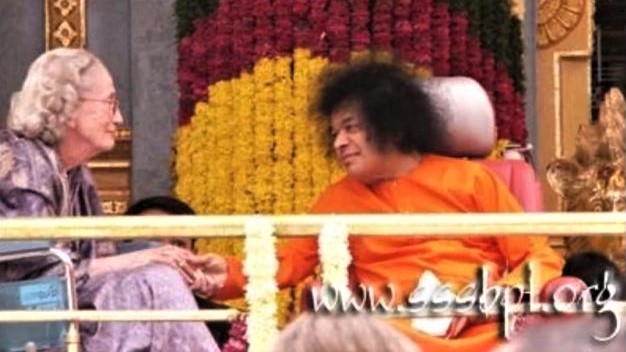
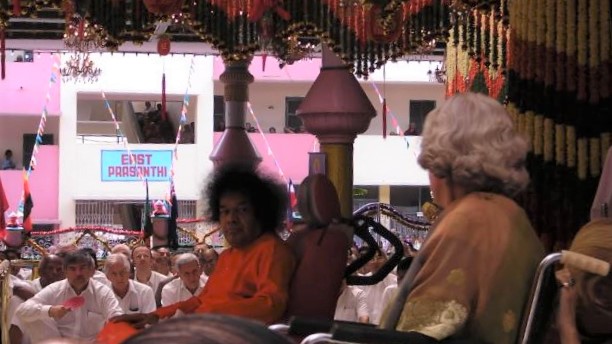
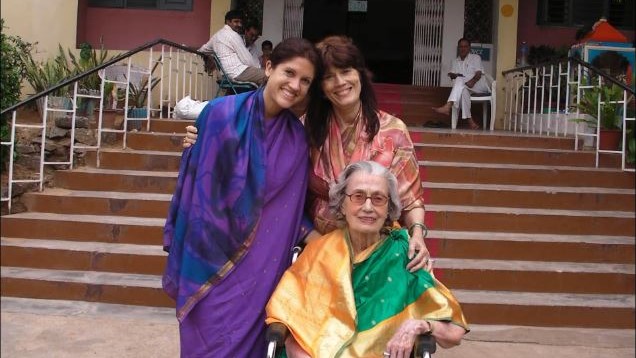
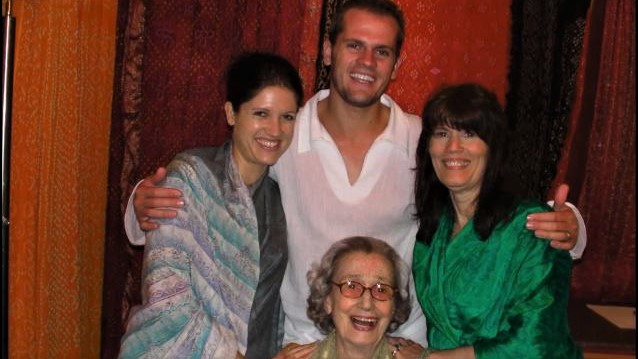
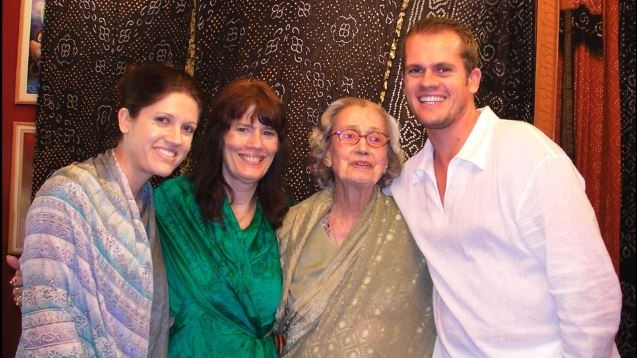
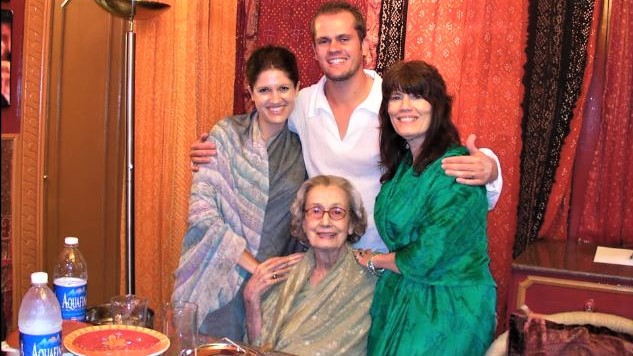
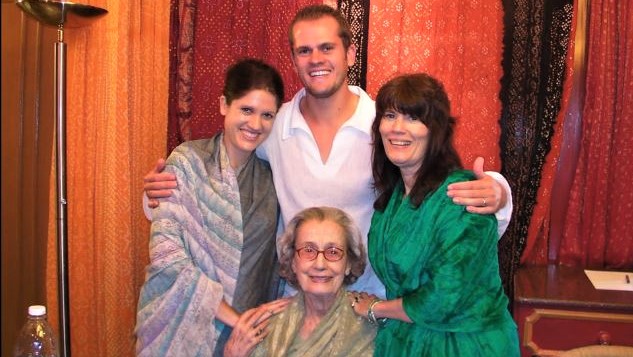
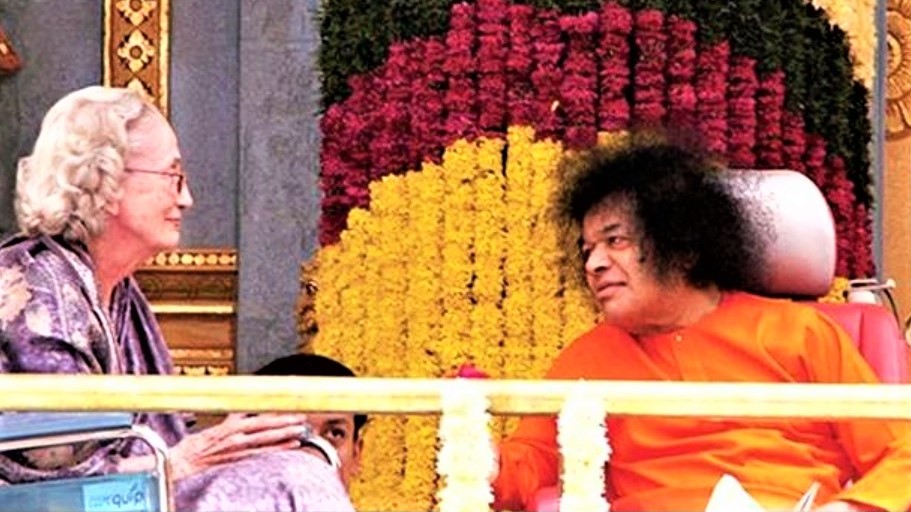
American Swami Kriyananda January 1973 Whitefield
Swami Kriyananda (James Donald Walters 1926 – 2013) was a direct disciple of Paramahansa Yogananda.
Swami Kriyananda’s sacred experiences and insights many of India’s Masters during two visits in India from 1958 to 1962 and again during the Indian winter of 1972 to 1973, are chronicled in his 1973 book Visits to Saints of India. Several of the saints featured or mentioned in the book were first introduced to Westerners through Paramahansa Yogananda’s Autobiography of a Yogi, first published in 1946.
As far as it is known, Paramahansa Yogananda never made any public comments about Sathya Sai Baba. This may be because Sai Baba’s public work had not begun when Yogananda returned to India in 1935 – a time when Sai Baba and Yogananda could have met – and there was very little public awareness of Sai Baba outside of India by the time of Yogananda’s Mahasamadhi in 1952.
From Visits to Saints of India by Swami Kriyananda.
From Bangalore. January 30, 1973. I came down here on the 26th I am the guest of Sr N. Keshava, a former member of Parliament and the first mayor of Bangalore, who took Kriya initiation from me in 1961 in Delhi. I has been so nice seeing him again.
But my visit here has turned out to be only an incident in a program of daily visits to Whitefield, a suburb of Bangalore, where Sri Sathya Sai Baba has been staying.
I wasn’t actually expecting to have much contact with Baba. Everywhere I’ve gone in India people have told me that vast throngs always surround him, and that it is almost hopeless to attract his personal attention. Crowds of a hundred thousand are quite usual. People told me of waiting weeks to talk with him, then giving up and going home, or perhaps exchanging only a couple of hurried sentences with him.
But I have been more fortunate. To begin with the crowds these days have numbered only one or two thou sand, not a hundred thousand or more
And secondly, though I couldn’t have done it myself, and in fact tried to stop him, Shri Keshava (that old political leader!) stepped boldly up to some official and asked him to tell Baba that Swami Kriyananda from America has come to see him.”
I was meditating, partly to rise above my embarrassment at having special favours asked for me. Suddenly I felt as though Baba’s mind were touching mine. After some time he came out. He saw me right away, and came over with a childlike smile.
Just a minute, please. I am coming. All right?”
He went around among the other devotees, blessing them, then returned and invited me to come into his house for more private discussions. With that he disappeared into his private grounds. A number of people went with him. When I tried to follow them, a couple of guards” tried to stop me, but Baba called out. “It’s all right. He can come in.” Shri Keshava. using me as his cover, came in also.
Sathya Sai Baba is known throughout India. Some people consider him God incarnate. Others consider him a fraud. Just about everyone I’ve met has had strong opinions either for him or against him. He isn’t the sort of person that one accepts casually.
Most of the opinions relate to his miracles, which are nothing if not spectacular. One man met at Whitefield, a physicist (Dr S. Bhagavantam), was converted when Baba poured a little sand into his hands. only to have it turn into a printed copy of the Bhagavad Gita. This isn’t the sort of thing one turns away from with a stifled yawn. One may believe in it, or one may doubt it one may say that this isn’t what religion is all about; but one will hardly respond to stories like this by saying something like. “Oh, well, easy come, easy go.
Baba’s most common feat is to produce out of thin air all sorts of objects: candy, ash for medicinal purposes, necklaces, rings. He does it all the time, there’s no way he could hold that many objects up his sleeve, or select from among them just what he wants – especially the little spoonful’s of ash that appear, unpack. aged in his palm.
As a matter of fact, such powers are not unique among yogis. Nor, for that matter, are they necessarily a sign of high spiritual attainments. Materialisations rarely serve any real spiritual purpose. But before we consider their place in Baba’s life and mission, it would be well to ask first how they might be possible in the first place.
The entire physical universe is, as physicists have discovered. a sort of ocean of energy. Material objects are only vibrations of this energy. Differences of vibration cause some vortices of energy to assume the form of a bar of steel, others to appear to our human senses as a loaf of bread. Physicists claim that it should theoretically be possible to dissolve a bar of steel into its essential energy. then re-manifest it again as a loaf of bread. If they cannot yet perform such feats, it is only because science is not yet sophisticated enough for the task.
One of the stumbling blocks of modern science is its vision of reality as an endless series of separate, static events. It hopes by mastery of all the stages in a particular operation to be able to achieve total mastery of the operation itself. But science is finding that every such stage can be further divided into sub-stages, then sub-sub-stages. In every field nowadays the greatest obstacle to integral vision is the growing emphasis on specialisation, as each segment of a whole is found to contain a virtually infinite number of sub-segments of its own, each one apparently demanding mastery before the whole can be mastered.
Baba only waves his hand, and before one’s eyes physical objects appear. If anyone wants to read accounts of these miracles, there are available in the stores in several well-known books about him.
Yet in fact, manifestations of this sort are not necessarily the result of yogic materialisation. Once one gets into such abstruse subjects as energy and magnetism, a whole universe of possibilities opens up. Yogis tell us that it is possible by various means to transport already existing material objects from afar. Rani and Indu told me of a yogi they know in Delhi who can produce medicines out of the air, but they said the medicine bottles all have labels printed in Tokyo, or New York. There are ways of transporting these objects. The most usual method (if something so uncommon can be called usual!) is through the agency of some disincarnate entity.
For the saints of all religions tell us that there exists an astral, or energy universe in which beings like ourselves live much as we do here. Human beings too go there between physical incarnations. It is a real universe, having many levels of manifestation from the lowest hells to the highest heavens. Yogis who call on the services of beings from this universe rarely get the help of highly advanced souls. Some in fact control “elementals.” as lower astral beings are sometimes called. To keep the control of such entities requires anything but a high level of consciousness. Though certain powers of concentration are necessary, not every yogi who pulls objects out of the air is a saint.
Most true saints, moreover, are not a bit interested in pulling objects out of the air. They devote their lives to awakening divine love in people’s hearts. This indeed is a much more meaningful sort of materialisation!! Usually, in fact, they belittle all public manifestation of miraculous powers as a distraction from the spiritual path, the whole purpose of which is to find God.
Yet to say that anyone who performs such miracles can’t be a saint would be to overlook the fact that many great masters have performed public miracles. Consider Jesus’ feats of turning water to wine at a wedding, and of multiplying a few loaves and fishes into thousands at a large public gathering. God works through His messengers in many. and often unexpected. ways. The real test of perfection is the motive behind one’s actions, not the actions themselves. If a saint performs miracles with no thought of personal motive – not even with the thought, I want to help so-and-so” – but only because the divine impulse in him has chosen to act in that way, he is above reproach.
On the subject of Sathya Sai Baba, India seems fairly evenly divided. Some say his miracles are a purely divine work. Others claim they are ego-motivated. In the latter group. explanations range from suggestions that Baba is a great yogi whose desire for name and fame are obstructing his further spiritual progress, to claims that he controls, and is in turn controlled by some low elemental. Many also, of course, accuse him of outright fraud.
I myself am not in India on a spiritual fact-finding mission. It is not vitally important to me whether Baba is genuine or not, or whether he is a great yogi or a fallen one. Moreover, I’m not at all sure that I’m actually qualified to judge him. Not wanting to be in volved in this controversy, in fact, I very nearly decided not to come to Bangalore at all. But Shri Keshava would have been hurt had stayed away: he has been expecting me since November. And many people, both here and in America, have begged me to give them my impressions of Baba.
I have, besides, had still another reason for coming here. Baba, who. I am told, never has any time for writing personal letters, wrote me an inspiring letter a year ago in his own hand. Even though so many people assured me he wouldn’t have time to talk with me. wanted at least a chance to express my appreciation to him. And I figured that if he truly is a saint, outward conversation would be unimportant compared to inner. soul-communion.
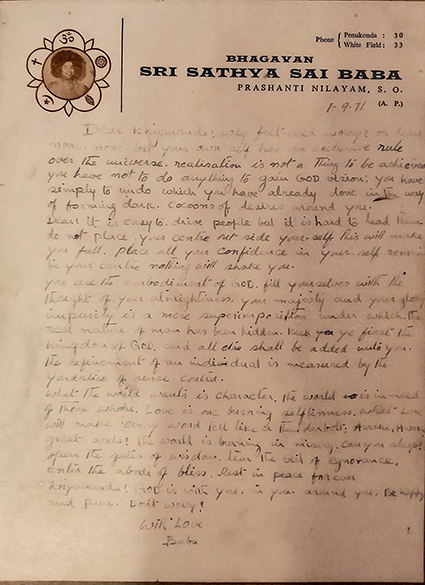
1-9-71 Dear Kriyananda: why fret and worry? O dear, none, none but your own self has an exclusive rule over the universe. Realization is not a thing to be achieved; you have not to do anything to gain God vision; you have simply to undo what you have already done in the way of forming dark cocoons of desires around you.
Dear! It is easy to drive people but it is hard to lead them. Do not place your centre outside your-self. This will make you fall. Place all your confidence in your-self; remaining in your centre nothing will shake you.
You are the embodiment of God. Fill yourselves with the thought of your almightiness, your majesty and your glory. Impurity is a mere superimposition under which the real nature of man has been hidden. Seek ye first the kingdom of God and all else shall be added unto you. The refinement of an individual is measured by the yardstick of sense control.
What the world wants is character. The world is in need of those whose Love is one burning selflessness. What love will make every word tell like a thunderbolt: Awake, Awake, great souls! The world is burning in misery. Can you sleep? Open the gates of wisdom. Tear the veil of egnorance. Enter the abode of bliss. Rest in peace forever.
Kriyananda! God is with you, in you, around you. Be happy and pure. Don’t worry!
With Love, Baba
The worst charge that I heard against Baba, before coming here, was that he materialises objects with the help of a low elemental. This could only mean that he is himself on a low level of development. But in answer to this charge I thought, He does many other things besides materialize things. There are countless reports of miracles of spiritual help and healing that could come only from a high level of Self-realisation. He has changed hundreds. perhaps thousands of lives for the better. He has saved innumerable people from tragedy. oftentimes when they only prayed mentally to him from a distance of hundreds of miles. Miracles such as these are simply not possible for someone who works with a low elemental.
Moreover, Baba’s teachings are all of divine love, service, humility, surrender to God’s will.
“But anyone can say such things was the stock answer. “Our Scriptures are full of them.”
My first impression of Baba, when I saw him, was of a person extraordinarily childlike, loving, full of joy, quite fearless, and completely indifferent to the opinions of others. A tiny man, little over five feet tall, he exuded strength and indomitable courage. Hardly the sort of person. I thought, to indulge in low psychic practices! Everything about him expressed openness, mental freedom, and not the kind of mental bondage that would follow inevitably from consorting with base spiritual associates.
There was a group of about nineteen students from a college in Simla, in the Himalayas. Baba has a special interest in education of the young. He sees in it the key to India’s upliftment. (He is also engaged in building a number of model colleges, but more of that later.) Baba called this group into his interview room, and asked me also to join them. Shri Keshava came with me. Though a native of Bangalore. this was the first time he had ever got a chance to meet Baba!)
Baba spoke partly in Hindi, which I know slightly. and partly in English, which he knows slightly. I could make out most of what he said. It was fresh, original. and wise – certainly not the mere series of frayed Scriptural quotations which his detractors had promised me. Only a keen intelligence and an interested mind can take old truths and put them in a new way.
Pleasure is only an interval between two pains. Baba said, referring to the timeless principle of dwaita (duality) on which the manifested universe rests. “Pain also is only an interval between two pleasures. Be always non-attached to all opposites if you want to be truly free.”
“Happiness lies not in doing what one likes, but in liking what one has to do.”
A student tried to touch Baba’s feet. Baba discouraged him. That’s just a waste of time,” he said with an attractive smile that implied a mixture of scolding and affection. “Devotion must be inward. It must not be an outward show.” (So much, I thought, for the claim that all he wants is adulation.)
Baba turned to the teacher who had brought the group. What time do you get up in the morning?
“About seven, seven-thirty.”
Baba wrinkled his nose. That is too late! Get up at four, four-thirty. Have more time for God.” (So much, I thought, for claims that he is not interested in people’s spiritual development.)
Baba materialised some candy for us. He did it so matter-of-factly, no one looked astonished. It was as if he had taken the sweets out of a bowl. Later, a woman who was also present complained of some physical ailment. A necklace suddenly appeared in Baba’s hand.
“Here,” he said. sympathetically. “wear this. It will help you.”
He also materialised a handful of little photographs of himself, and passed one out to each of us.
With each of these materialisations, and with every other that I’ve been a witness to since then, I’ve observed no evidence of desire on Baba’s part to impress others, no glance about him as if to say. “How do you like that, eh?” He appears only as if he were passing candy out to children. My impression is that his entire thought is cantered on giving to them, not on receiving anything – even thanks – in return. Close disciples of his have told me Baba considers his materialisations quite insignificant – almost as if to say. “Look, how easily material objects can be brought into manifestation. Why consider it worth your while to run after them?” He stresses renunciation, non-attachment – attitudes, in short, that are incompatible with an excess of joy in material objects, even in freshly materialised material objects! His own object does not appear to be to excite others with their new possessions any more than it does to impress them with his power to produce the possessions. And it isn’t only that he doesn’t seem to want anything in return; he won’t even accept anything
“Come to me empty-handed,” he tells people, that I may fill you with what I have to give you – divine love.”
To give with a pure motive is, of course, one way of emptying the heart of selfishness, but Baba probably feels that too many people approach the saints with worldly gifts in the hope of bribing them for divine favours.
Several disciples have told me that Baba’s materialisations, by themselves, would not have impressed them. Repeatedly I’ve heard the statement from them: It is his love that converted me.”
The only time during my brief stay here that I’ve seen Baba evince any interest in the impression he was making was yesterday afternoon. He had given a teacher of his local college a letter that he’d composed to the students in English. He wanted to know if his English passed muster. For one whose miracles have made him world-famous. I thought this interest in how well he expressed himself in English was rather touching.
After talking to the students awhile, he turned to me with a loving smile.
“Kriyananda, are you well? Happy? How long can you stay?”
“Only three days, Baba. I’m afraid. I wanted to come sooner, but had to go to Delhi about my visa. Now my time in India is running out.”
“Oh, too bad.” Baba frowned sadly. But then, in these three days come inside and be here the whole time. We’ll have time for private talk, too.”
“Baba, bring you love from many fellow devotees in America, and also in Rome.”
Baba smiled gently. Then his look changed to one of indignation.
Very bad!” he said. “Very, very bad! So many people have tried to hurt you. But don’t care for them. Just selfishness and jealousy! Don’t care for them. You are on the right path. And you are working selflessly! Oh, very, very bad! Even in religious work there is so much selfishness and jealousy. But you are pleasing your Guru. He is always in your heart. Just go your own way.”
I was deeply touched. I don’t suppose any constructive work is ever done without obstacles of various kinds, including a certain amount of opposition and misunderstanding. I have certainly found it so in my life, particularly in building Ananda. But it is nice sometimes to receive reassurances from people whose opinions are based on deeper-than-usual insight. And Baba has repeated his reassurances every time we’ve met during the days that I’ve spent with him.
At the end of that first interview I asked Baba if he planned to come to America.
“No. Too many have gone there in recent years to make money!”
“Then perhaps you could go and help to correct the bad impression.”
First one must put one’s own house in order.” Baba replied, referring to his present work of building colleges for the upliftment of his own country.
Baba told me he would be going out later that day, so he suggested I come again the following day. I did so. and got in on another group interview. Later. I and several others were invited to have lunch with Baba. And later that same day he granted me a private interview. The third day was pretty much the same, including another private interview, except that it ended with a movie of the opening of a new women’s college that Baba has founded.
I was most impressed by this movie. The college buildings are really lovely, and so also are the grounds. Baba is trying by means of these model colleges to influence the educational system of the country, through which he hopes to uplift the general consciousness of the people. He feels, and strongly agree that the emphasis in education has become too secular. All his teachers are devotees, not teachers only. And as proof of the all-round merit of his ideals, the students in his institutions score much higher averages than those in other colleges in the country.
I should add too, that I am impressed with the students as people – with their seriousness, with the respect they show Baba, with their good humour and poise.
This is the direction in which most of Baba’s energy seems to be going these days. He has little time left for visitors, except to see them briefly en masse every day and bless them. Even though I’ve had more time with him than most, he has spent the main part of each day in conference with teachers. Students, architects, and planners of various kinds working out the details of some new institution.
In our private interviews I didn’t actually have many questions to ask. One of my first related to an interesting incident that took place in Sacramento, California, in the spring of 1970.
After one of my yoga classes there, one of my students claimed she had seen Baba sitting with the class. I hadn’t seen him, but now I asked him if he had actually been present.
“Yes, definitely I was there,” he replied. “That was not imagination.”
I also asked him if perhaps now is the right time, with so many of my outward works finished, for greater concentration on my inner life, and for more rapid spiritual development. Baba answered:
“Definitely. Now is the time. Now is the time! That is why you have been drawn here to India, and to see Baba. Baba will flood you with blessings. Before this time you couldn’t come. Just see – for ten years you tried to return! But the time was not right. Now it is right.
He materialised a necklace for me. One moment his hand was held out, the next moment, it held the necklace. Wear it always,” he said. “It will help your body, and also your mind. It can also be used to heal others.” (I’m informed that he has told only two others that the necklaces he has given them can be used to heal others.)
I asked him to bless the members of my community. Baba replied with a sweet smile:
“Of course. That is my duty. I must bless them!” He gave me a large envelope full of sacred ash to give to everyone there.
During these three days Baba has shown much love and attention to me – more so, probably, than to anyone else. But what has impressed me most has been the inner consciousness that I’ve felt from him. And when he put this necklace on me. I at once felt blessings permeating me. I realised that the necklace itself was nothing: it was given me only as a vehicle for more Subtle blessings.
My meeting with Baba has been an inspiration. I am more than glad I came.
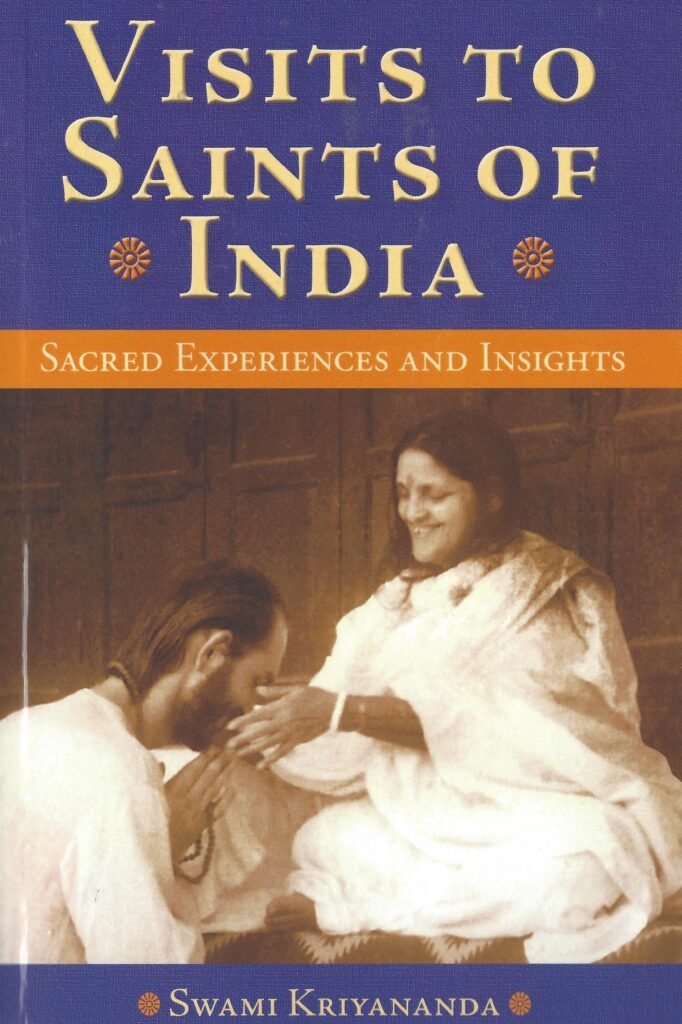
American Leslie Bouche 1973
Leslie Bouche’s first trip to India to have Baba’s Darshan was in 1973, she travelled to India many times since then. In 2003, Leslie and her then fiancé Bruce travelled to India to give thanks for bringing them together, and to their surprise, Baba called them in for an interview and married them. They have made many more trips together to the ashram, including after Baba’s Mahasamadhi in 2011.
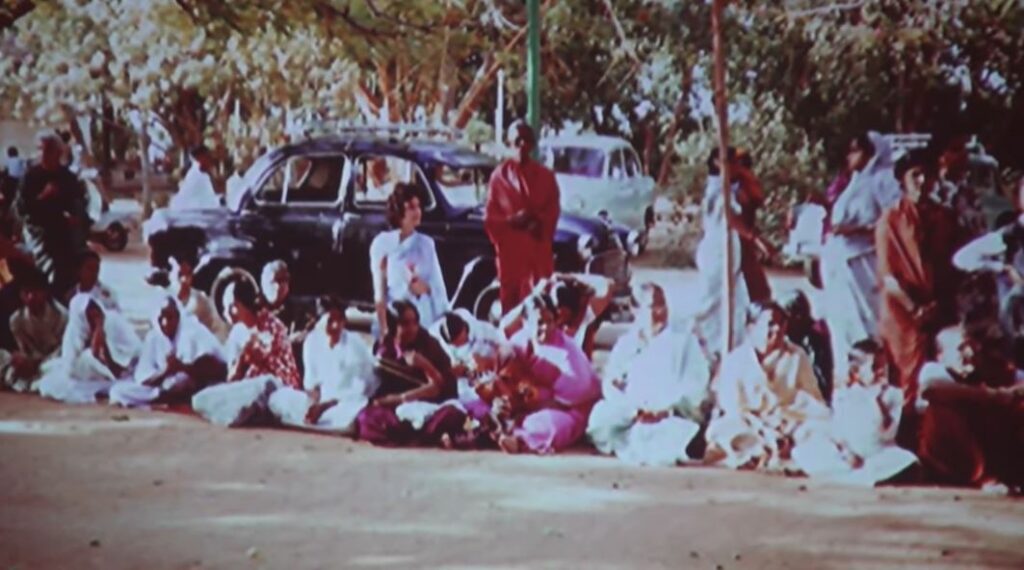
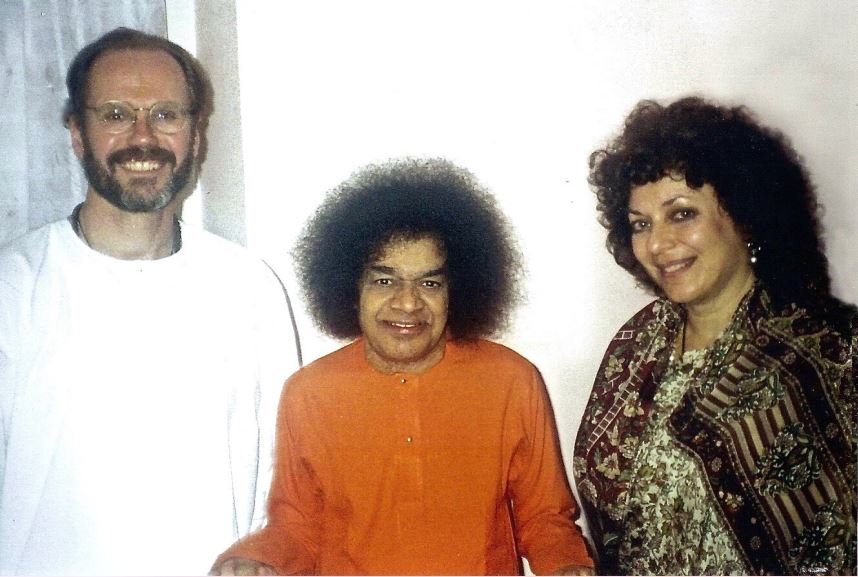
American Camille Svensson 1973
Camille Svennson said in 1985 – I think a person who has had quite a bit of contact with Baba becomes conscious that other people can feel it, are envious, and it’s hard to handle it from that point of view. But I’ve been very fortunate for Baba to give me an interview every time I’ve been there, and several times more than one. I started in 1973, and I’ve been nine times. When I went in 1973, I had studied the Advaita philosophy since 1935; so I was quite learned and I began to study all of it, and Sanskrit particularly, because I felt you couldn’t get close to it if you couldn’t read it in the language that it was written in. I was ready for all of that. So I went to him, and when I was there, I asked him about my lecturing, among other things, and he said, “It is good. You can contact your Atma. Do so before you talk and get charged.” Now that completely threw me off my balance, because the Atma I had studied and studied and studied; but there was something there so great I couldn’t dream that I could contact the Atma. I said, “Well, he tells me to do it, I’ve got to do it, I’ve got to try,” and I finally came to this conclusion — that we must realise ourselves that we are the Atma. That’s what we are. We have a body, we have a mind, but we are the Atma. The sooner that we can realise that, the better for us. I feel it’s a truth; it has to be a truth for you, before it is true for you. That is what I have tried to do, but I was quite shocked at the time that he told me that. I know that everything he tells you is true; so you have to accept it. But about envy, because of being seen (by Baba) so often when I am there, I have felt the envy of the people, and it hurts you because you don’t want it. But I do not know of anything we can do about it, and it’s a personal thing.
Her books; Five Upanishads translated by Camille Svensson. The author has translated five Upanishads – Taittiriya, Aitareya, Kena, Prashna,and Mundaka, which are part of the Vedas. It also includes comments taken from the writings of Sri Sathya Sai Baba.
Atmabodha by Camille Svensson. Adi Shankara is the original author of this treatise which covers Knowledge of the Self. Shankara was a 9th century religious sage and scholar who devoted his life to propagating the sacred Indian culture. Sankara’s treatise is a brief but thorough explanation of the classical Hindu concept of the Atma (soul, true Self) and the road that leads to its realisation. The text is technical but the interspersed explanations by Swami help to clarify each thought.
Bhagavad Gita translated by Camille Svensson. This is a translation with comments and explanations from the teachings of Sathya Sai Baba. This classic of Lord Krishna’s conversation with his devotee, Arjuna, has withstood many centuries and continues to be one of the most widely read spiritual texts. Ample selections from Sathya Sai Baba’s writings enhance the subtle teachings.
Brahma Sutras translated by Camille Svensson, this book features aphorisms on the knowledge of Brahman (attributeless, formless reality).
Brihadaranyaka Upanishad translated by Camille Svensson, this is one of the prominent Upanishads describing the knowledge of the Self revealed through the discussion of Guru and disciple.
Die Yoga Sutras des Patanjanli German edition by Camille Svensson (Author), Frank Geffers (Translator).
Americans Elaine and David Gries June 1973 Whitefield
Elaine and David first met Sathya Sai Baba while they were in Bangalore, David had been invited in 1972, by the Institute of Science to teach a three week Computer Science course. Elaine’s book Essence of Divinity was first published in 2003. Elaine majored in mathematics in college and worked as a computer programmer until the birth of her twins. She later completed Masters degrees in Sanskrit and Social Work, as well as certification as a yoga instructor. She has been an active community volunteer.
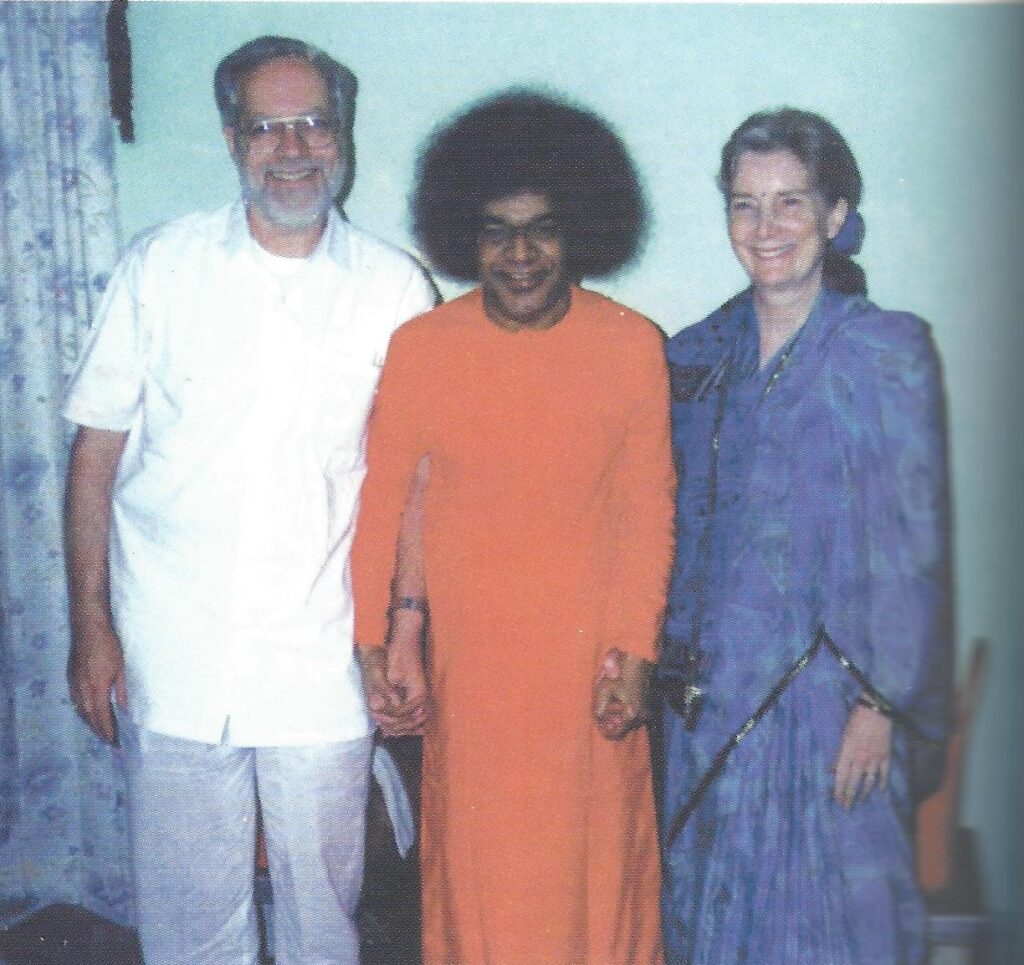
American businessman Isaac Tigrett 1973 Whitefield
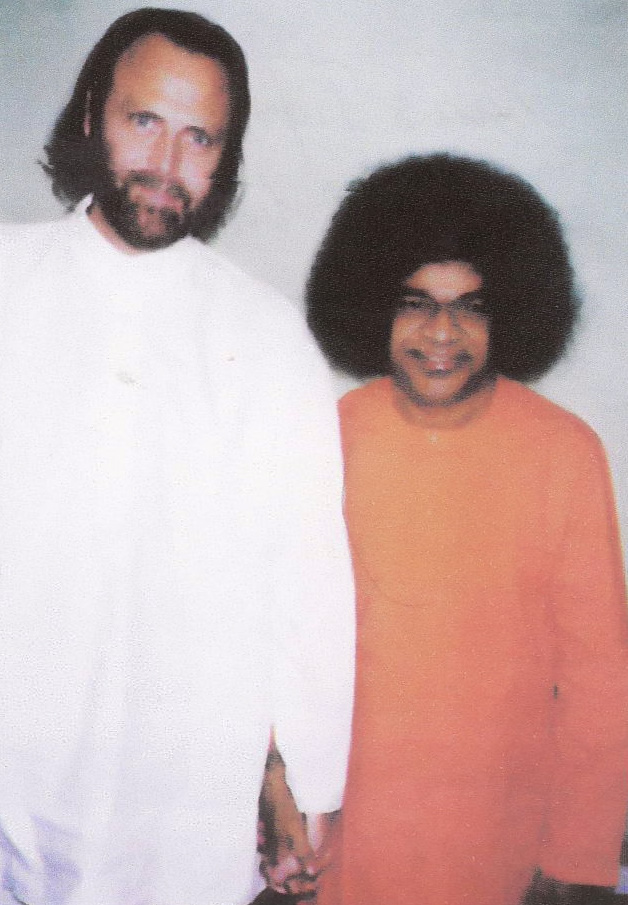
German language interview with Werner Herzog;
In dieser Sendung erzählt Werner Herzog vom Beginn und der Entwicklung des Sathya Sai Buchzentrums in Dietzenbach. Seit Oktober 1984 sind Werner und seine Frau Sylvia zuständig für das Buchzentrum der Sathya Sai Vereinigung. Zu ihren Aufgaben gehören unter anderem der Verkauf, der Versand und die schriftliche und telefonische Betreuung der Kunden. Hinzu kommt der Buchladen in der Grenzstraße 43 in Dietzenbach, dessen Bestand mittlerweile auf über 300 Artikel angewachsen ist. Werner erzählt auch von seinen Erfahrungen bei der Präsentation des Verlags der Sathya Sai Vereinigung auf der Frankfurter Buchmesse. Bis heute sind hier 180 verschiedene Bücher in deutscher Sprache erschienen.
Wir erfahren, wie alles in den 80er Jahren in einem winzigen Büro begann und sich kontinuierlich weiterentwickelt hat. Werner lebt, was für ihn die wichtigste Lehre von Swami ist: „Liebe, Liebe, Liebe, Freude, Freude, Freude, Dienen, Dienen, Dienen“.
Transcript of a speech given by Isaac Tigrett in Singapore, 2007;
German Jew Al Drucker 1973 Prasanthi Nilayam
Al Drucker compiled and edited Sai Baba Gita, published in 1993. In August and September of 1984, there were extensive riots in South India. There were shootings not far from Sai Baba’s ashram and the ashram gates were locked. Armed soldiers were patrolling outside and escorting the college students into the ashram for the evening meetings. For 34 days during the height of the tension, Sai Baba spoke in daily discourses to the students on the Gita. He spoke in Telugu, his native language. These talks form the chapters of this book. Drucker was living in Baba’s ashram at the time and teaching in his university. With Baba’s permission, he used these powerful Gita teachings over the years as the basis for his scheduled talks to visitors who came to the ashram from all over the world.
SAI BABA GITA The Way to Self-Realization and Liberation in this Age (1993) Compiled and edited by Al Drucker. Published by Atma Press http://bababooks.org/Downloads/sai-baba-gita-P1.html
Bhagavad Gita for Today: Self Knowledge and Awakening to God, Teachings by Sai Baba (1995) Edited by Al Drucker.
A 1999 interview with Al Drucker.
David: I would like to begin by asking you about your spiritual background. What were your spiritual understandings before you came into contact with Sai Baba?
Al: I was brought up in a Jewish home in pre-war Germany. As a little boy I was a very pious kid even though my family was not particularly religious. It was really an opportunity for me to get away from my family. At the time I felt overpowered by all the women in my family. They all loved me and fluttered around me so much that as a little kid I just couldn’t take it. So the only way that I could become free of all of that was to become so religiously inclined that their needs wouldn’t prevail over mine. I think that I began studying the Torah when I was only three.
David: But was there any one factor or incident in those early days that awakened your spiritual consciousness, that started you on your spiritual quest in this life?
Al: Well it seems to me that my interest in spiritual matters was always there. I have some intimations of having been a Ramakrishna sannyasin in my last life. I believe that I spent that life in France. I have some remembrances of it. I also feel that I have spent many lifetimes in India, living in caves in the Himalayas. In this life I did not pursue a spiritual path until well into my adult years. After going to university I kind of got lost in the world for a while. I joined a select group of engineers and physicists who were responsible for the technical management of the U.S. ballistic missile and nuclear weapons programmes. However I soon got an inner message that working on these weapons of mass destruction was not right for me and so, on a spiritual impulse, I quit the programme very suddenly in the late 1960’s and went to live at the Esalen Institute, a centre for growth and transformation in Big Sur on the Pacific Coast, south of San Francisco. The contrast from my previous lifestyle could not have been more dramatic. I radically changed professions, to become in succession a massage therapist, a Rolfer, an acupuncturist, a homeopath, a gestalt therapist and, finally, a teacher of alternative medicine. Now Esalen is just across the mountains from the Tassajara Zen Mountain Centre, it is about fifteen miles as the crow flies, and I used to hike across the mountains to meet a wonderful teacher, Shunryu Suzuki-roshi. He was really a great saint and it was through him that I became interested in Zen. I have also had a long time interest in Taoist teachings, having spent some time in China as a young man. So it seems to me that I have always been interested in spiritual matters, but Spirit didn’t really become the major focal point in my life until my aeroplane experience, in which Swami saved my life and thereafter led me to him in India.
David: The greatest obstacle that I had to overcome in establishing a relationship with Sai Baba was the concept of God incarnating on the Earth. To me God was always separate from His creation and never incarnated in form on the Earth. When did you accept this reality?
Al: Well, you see, even as a kid we would sing a song in Yiddish about the time when the Messiah would come on Earth and we would all be happy. I have always believed that the Messiah was just around the corner and that the Messiah was God on Earth. So I have always been waiting for him and rather than being surprised that such a thing could actually happen, I was surprised that it hadn’t happened yet. So I didn’t have that prejudice against God being in form.
David: In the talk that you gave yesterday, you related the story about meeting the SS colonel in the railway carriage, as you tried to escape from persecution in Nazi Germany. This impressive figure, dressed in the black uniform, must have absolutely taken your breath away, and yet he talked to you about the Bible and made that amazing statement, “There is no Moses to save you this time”.
Al: I was just a kid of nine and, of course, I was terrified. I was frightened out of my wits when he came into that train compartment. I lived in Cologne and I was travelling across Germany to Poland and had stopped off in Berlin. In Berlin I had some well-to-do relations and they had decided to put me into this first class compartment, but unknown to me, Jews were not permitted to be there. I had the compartment to myself until the train stopped some twenty-five miles outside of Berlin and that was when this SS colonel appeared. So I sat there, petrified, expecting to be arrested, but he was charming He loosened his jacket and took off all of his imposing paraphernalia – the cap with the skull emblem on it, the black leather belt, the gun, the dagger, the leather gloves, the monocle and the big black leather boots. He made himself comfortable and told me to sit comfortably and not to be afraid of him. So, in a sense, he became an ordinary guy for me. He talked to me about God and the Jews, quoting extensively from the Old Testament. He warned me that the Holocaust was coming and advised me to escape westwards not eastwards which, of course, is what I eventually did.
David: You said that you felt that the SS colonel was Sai Baba, that he manifested as that colonel to warn you, in fact, to save your life. Are you really sure of that?
Al: It is very clear to me now that the colonel was Swami. He simply didn’t fit the SS character at all. There was no way that man would have taken the chance in Nazi Germany at that time of saying the things that he said to me, even if he felt that way.
David: The SS colonel came out with this amazing statement “There is no Moses to save you this time. You will have to be your own Messiah.” What do you think that Swami meant when he said that? How do you view that message in the light of what eventually happened to the Jews? What would be the purpose of the Jews being subject to the Holocaust? Was it to prove to them that there is no Messiah?
Al: I wish I even had the beginning of some answers for that. I have no idea, David. But two world wars in two successive generations, which destroyed or uprooted hundreds of millions of people, and then the development of atomic and hydrogen weapons that promised to snuff out all of civilisation, and God knows what other insane weapons of death are in the offing to destroy Mankind, only proves what madness has come upon us in this Kali Yuga, and how absolutely vital it was in this time of darkness for the Avatar to come and rescue Mankind from itself. The genocide of the Jews is just an outward symptom of the genocidal feelings of hatred and mayhem inside all of us. Swami has come to correct that. As for the Messiah, I once had the chance to ask Swami whether he was the Messiah for which we had long been waiting. He answered “Not one Messiah. You are all Messiahs. You have the power to save yourself and to save others also.” In other words, he will drive the chariot, he will direct us from within, but it is our job to save ourselves and we have been given the full power of God to transform the internal enemies of greed, hatred and jealousy, etc. which are polluting our hearts into the divine love that is Swami. For me, personally, Swami gave me the chance to clear up most of my haunting memories of Nazi Germany. It relates to the first time I had to leave India very unexpectedly. Let me tell you the story.
In 1981, after I had made some fifteen or so trips to Sai Baba, he directed me to come and live at Prasanthi Nilayam. So I went back to America and gave up everything. I sold or gave away all of my possessions and I was back at the ashram within a couple of months. At his direction I was to give up my U.S. citizenship and become an Indian citizen. My life in America was to be finished! So I started the process of Indian naturalisation and I arranged that I would become an Indian citizen on my 60th birthday, because that is a particularly auspicious day. I planned to go to Bangalore that day to be sworn in and also, a few days later, to deliver a paper at a conference of the heads of all the Indian universities on the Awareness Programme, six courses unique to Swami’s University, which covered the whole range of human knowledge – the humanities, the sciences, the arts, and the spiritual and religious history of the world – which all undergraduate students were required to take. I had had a hand in formulating the programme. Now at that time Swami was in Whitefield.
So that morning I was sitting in my room, working on my presentation, when a policeman knocked on the door and informed me that I was under arrest! Well, you call imagine the shock and disbelief that I felt. It seems that they had decided that I was a CIA agent and would pose a threat to the country if I became a citizen. The policeman had orders to take me to Anantapur. I insisted that I had to go and see Swami first. Well, amazingly, I got to see him. It’s a wonderful story and I cannot tell it all now, but I got to see Swami and he told me, despite my fervent objections, that, yes, I was CIA, and it would be best if I left the country! Then he explained that CIA really meant Constant Integrated Awareness, and that I should call the headman in Anantapur. I called this officer and to my astonishment he directly answered the phone, which is most remarkable in India. When I told him that Bhagavan had advised me to leave India, he gave me eight hours in which to leave the country. Now this is the day, my 60th birthday, on which I am supposed to become an Indian citizen and give up my U.S. citizenship and, in a moment, my life was totally turned around! I didn’t have any money, I didn’t have a ticket, I didn’t have an exit visa yet, somehow, Swami miraculously arranged for all of that and I ended up by flying to Germany, of all places. That was as far as I could go at that time with the funds that I had available. I stayed with some German Sai friends that I had met at the ashram. Now the husband was in the Wehrmacht, the German army, during the war and his wife was a leader of the girls’ side of the Hitler Youth movement. We spent an intense month together discussing the war and clearing out all our old karma. It was totally finished for us and we became very close friends. We put the whole war experience to rest. In my talk yesterday I referred to the pure light that shines in the eyes of the children in Swami’s schools and I have a clear sense that many of these kids are the reincarnated souls of the beings that died in the gas ovens of Auschwitz, and that they are now with Baba and so have forgiven all that was done to them in the past! I am really clear in my own mind that even if Adolf Hitler were sitting here in front of me now I would forgive him and see only the wholeness and the completeness and the perfection of his being, and not dwell on the horror of what he, in his madness, perpetrated on the world.
David: How long did it take you to recognise Sai Baba’s divinity. My path was a very slow one, requiring many visits, with much doubting and testing. How was it for you?
Al: I loved Swami the first time that I saw him. I just loved him. As I said yesterday, the very first time that I saw Swami was in the Poornachandra Auditorium on the day of Mahashivaratri. Just before he came out, I had this very powerful deja-vu experience of being back in Nazi Germany. There were the massed flags and the swastika symbols, which of course was the symbol of Nazi Germany, the slogans and banners on the walls, similar to what the Nazis used to do, and when Swami started speaking he was saying the same things that Hitler said! Then I woke up and realised that here was the ultimate of goodness that had come into consciousness, the ultimate in the totality of the history of the world as it is known in the West. There had not been a full avatar on the Earth since Lord Krishna, over five thousand years ago. I recognised that I had experienced both the ultimate of divine goodness and the ultimate of evil in my life. They both used some of the same outer forms, they both used some of the same expressions, they both used some of the same symbols and slogans, and they both used similar mannerisms. In the talk that Swami gave that day he said that it does us no good to go around digging ten metre holes in a field in our search for water. We can dig holes all over a field and still find nothing. He said that we must dig one hole, but dig it deeply, in order to find pure clear water. If we want to know the reality of this Sai Avatar, we must come close to him and dig deeply. The intensity of that experience was so powerful that it has remained with me ever since.
David: You’ve been so close to Swami, do you think it is because of your actions in past lives or in this life?
Al: I really do not know. All I can say is that there is nothing that I am aware of in this life that would relate to that extraordinary privilege.
David: We both know of people, such as yourself, who were very close to Swami and then have suddenly fallen from grace and been banished from the ashram. I have this feeling that it is safer not to get too close to Swami. It’s almost like getting too close to the fire and getting burned. What are your feelings about this?
Al: When the devastating moment of incineration comes it is almost always totally unexpected, like the incident on my 60th birthday that I just spoke about. In some ways, it’s a lot like death. We think that death is something that happens to everybody but us! Here is another story with an unexpected result. One morning I got a message to report to the head office of the ashram. Remember that at the time I was a lecturer in the Sathya Sai Institute and, in fact. I was the only Westerner there. Swami also had told me to do study circles for the residents in the ashram and for the staff and students at the University. I also gave talks to the Westerners who visited the ashram. So there were many opportunities for me to slip up and to make a mistake, but in this particular incident even the mistake was missing. I had done nothing wrong. Anyway, I went down to the office, it was just before morning darshan, and waited for the manager of the office to arrive. He was coming straight from seeing Swami, since they have breakfast together. He walked up to me and said, “Pack up your things and leave. You have to be out of here by noon!” I said, “Out of here, what do you mean?” He replied, “You are being told to go. You’ve got to go.” Now this is after I’ve been there three years. I asked, “What is this all about?” but he replied, “I’ve been instructed not to tell you.” So I returned to my flat and said inwardly “Swami, what have I done? I don’t understand it. I have to leave and my whole life is here. This is where all my things are.” At that time I had an extensive library of over five hundred books. I began packing and choosing a few favourite books to take with me I picked up a book of Shankara’s poems, opened it and read ‘Mother, how could you be so cruel to your only son, you’re my Mother and how can you not love your son? Somehow I knew that it was no accident that I was looking at this poem. Just then a message came for me to go and see Dr Gokak, who at that time was the vice chancellor of the University, and who was also my boss. He told me that Swami was very unhappy with me and I had to leave. I said, “What is this all about, Dr Gokak?” He replied that he had been told not to tell me, but that Swami was unhappy with something that I had said at a public meeting. I returned to my flat and continued with my packing when Professor Kasturi called for me. Now Kasturi and I were like father and son. I spent much time with him. He said, “Drucker, you’ve done it.” I said, “What is it that I am supposed to have done?” He replied “Swami says that you were cracking dirty jokes in your talk to the foreigners” I said “That’s just not possible, Kasturiji, that’s totally incorrect.” Kasturi said that Swami had received a letter from a German lady who had reported this fact to him. He also said that he (Kasturi) had received a letter from the same German lady asking for an introduction to me. I have no idea who this lady is. So I went off for my last darshan and as I’m sitting there in darshan Swami comes up to me and says “You are a Surpanakha.” Now Surpanakha is the name of a demon in the Ramayana. She is the sister of Ravana and when she discovers Rama and Lakshmana she desires them so much that, in a jealous rage, she tries to kill Sita. Lakshmana intervenes and with his sword disfigures her, first cutting off her nose and then her ear. She runs back to her brother Ravana in order to raise an army of demons and so avenge herself. Ravana is amazed that she stayed around long enough to have both a nose and an ear cut off, and he asks her why she did not run away. She replies that they were both so beautiful she couldn’t take her eyes off them! So when Swami called me “Surpanakha” and jokingly said that he was going to cut off my nose, I responded by saying “0 Swami, you are so beautiful, I’ll have to stay around until you cut off my ear too!” Apparently, that was the right answer. Swami told me to take padanamaskara. I kissed his feet and that was the end of the incident. It was over, and I stayed at the ashram. But it was a warning to me that at any moment I could be thrown out, with or without good reason and, as you know, later on it did indeed happen to me. I have always recognised that God can take anything that He likes away from me. I have heard Swami talk of the three zeros, of reducing a true devotee to nothing, of taking away their wealth, their health and their name to prepare them for liberation. I am ready for that.
David: Obviously the fact that Swami did eventually throw you out of the ashram must be for your highest good, but what, do you think, was his reason for doing that? Do you think that he is preparing you for liberation?
Al: I had always believed that the meaning of the three zeros was that God can take any material thing away from me, but that He could not take God away from me. I worshipped Swami as God and here I was getting thrown out of the ashram. So I felt that even God had now been taken away from me. I felt totally devastated, without roots of any kind. I believed that there was no existence left, but then I discovered something. There is no way that God can be taken away from me. The form of God was no longer in my eyes, that was all. Now that discovery was not immediate. It took me about a year to get over the feelings that something horrible had happened to me. Nevertheless, during this period of time, I experienced many remarkable acts of grace, including being in the interview room with Swami every day for some weeks. It was a direct experience. It was not a dream. It was a state of awakened consciousness. I was sitting there and Swami would be sitting here and we were talking. It was no less real than the exchange that we are having now. I realise now that Swami will never take himself away from me.
David: Ann and I have always created a separation between the forms that we call Sai and Super Sai. We love to go and visit Sai, that is to say the physical form of Sai Baba, but we also recognise that Super Sai, that is to say the omnipresent form of God, is with us every moment of our lives and, indeed, is here right now. It is Super Sai that is for us the God in which we trust and in which we believe and with whom we have no conflict. It seems to me that conflicts such as you have experienced only arise when you get close to the form and have to relate to the form!
Al: Well, David, we have to be willing to get close to Swami and even to risk being thrown out, but even if that happens we will discover that nothing really has happened. How can anything ever come between Swami and his devotees? He is pure love and he yearns for all of us to come very close to him. One reason Swami gives us vibhuti is to remind us that ash is the only thing that survives in a fire. We have to be willing to do what it takes to be consumed in his fire and to realise the truth of who we really are, which cannot be affected by anything.
David: What has been your experience of being nine years in the wilderness, of being removed from Sai Baba for so long a time, after being so close to him?
Al: During the eight years I was at the Ashram I did indeed feel very close to Swami. In the first years Swami would speak to me every day. So I was treated like I was a very special person. But what has come to me in these years of being in the wilderness is sanity. I thought that I was special, but it is now very dear to me that I am not special, none of us is special, and I don’t want to shock your readers when I say this, but even Swami is not special. There is nothing special about anything in this world. Underneath we are all exactly the same, one unchanging divine essence; on the surface there is just the changing names and forms of maya, the veil of illusion.
David: When you say Swami, you mean the form of Swami?
Al: Yes, absolute truth does not have a form. It cannot be seen with the eyes, nevertheless, some forms can be used to point the way to the realisation of our true reality. Such is the form of Swami, but we must go beyond that stage to the direct experience of the formless divinity as the truth of our being.
David: Professor Kasturi was always having a hard time with Swami, even though he was very close to Swami. Swami sometimes did some harsh things to him, didn’t he, to crush his ego? Is this the price that you pay for being that close to him?
Al: No, I don’t think that it’s like that; I don’t think that it’s a price you have to pay for being so close to him. I think that it’s the price you have to pay for having chosen to be on the fast track to liberation. You have to pay that price if your ego is to go. The sense of individuality has to go and all that Swami is doing is to help you to realise that all forms of individuality are a mistake. So I think that this sort of thing happens to all people who have made the commitment to liberation, no matter what. There is only one interest in my life and that is the path to liberation, so anything which blocks that path has to be removed, and quickly, because I am not prepared to wait for another five lifetimes. Ann, in her talk yesterday, said that the Book of Brighu astrologer had told you that you were going to incarnate again with Prema Sai and live in his ashram for most of your next life and would die at ninety-five. This, apparently, was confirmed to you at Shivaratri when you did not see the lingam emerge. You have now accepted this as a fact.
David: Yes. That is true.
Al: I think that’s a terrible mistake. Excuse me, David, but I have to tell you that that is very foolish. Don’t accept anything like that. Your mind has the power of God and you can change destiny by changing your consciousness. You can, I know that! You have the power to do this unless you have talked yourself into wanting to be around for another one hundred and fifty years or so.
David: I have no desire to be here again, even for a life with Prema Sai.
Al: Then don’t accept it. Don’t accept it and Swami will not support that mistake. It really is a mistake. He would not support it unless that is your wish. So make that decision now and even if the three zeros and all that stuff follows, so what? This world isn’t worth anything anyway, so why invest in it?
David: May I ask you a personal question now? Was your decision to marry Yaani, the decision which directly led to you being thrown out of the ashram, made from the heart or from Swami?
Al: It was not from the heart, it was clearly from Swami, although now it has become a thing of the heart. You know, it’s an interesting fact that that was the way of most marriages until this century. Parents or preceptors usually arranged marriages, because it was in the best interest of the individuals concerned in their journey to God. The love, which was often very deep, usually came afterwards. I would say that I’m a very reluctant husband. I went through sixty years of life without ever having contemplated marriage and just at the time when I am supposed to give up everything I get married!
David: What game do you think Swami is playing with you with regard to your marriage?
Al: Well this marriage has been my principal sadhana for the past ten years and in retrospect I can say that nothing else that I can think of has been as valuable as this marriage in terms of personal growth and development. From a worldly and a cultural sense we are totally opposite! There is a constant opportunity for friction between us. We have Swami in common, as our common love. Other than that we have few other common interests. What a grand opportunity this presents for self-interest, for ego, to expose itself and to be seen and set aside! It is something of a challenge. Swami has presented us with a final challenge to enable us to finish this silly game.
David: Life is a game, as Swami says, and we must play it, but now that you are allowed back in Prasanthi Nilayam can you tell us about your more recent experiences?
Al: Well, my first impression after nine years absence is that nothing has really changed. Everyone says that the ashram has totally changed and, of course, from a physical standpoint that is true, but I didn’t pay too much attention to that. I was just aware that Swami had not changed one iota in some twenty-five years. He is the same beautiful being, he expresses the same immeasurable kindness and concern; he emits that same unfathomable unlimited love. There is that same awesomeness and magic when he comes out to give darshan. He inspires us with the same hopeful message of redemption. He coaxes us in the same way, to rise above desire and temptation, to realise our incredible divine inheritance. Swami is totally unchanged. He is still saying what he said when he gave his first discourse, namely, my life is my message. He is teaching us to follow his example of raising our thoughts to heaven above and of using our bodies to serve mankind below. Now recognise that we also haven’t really changed. We go through these histories, these life-stories, and we think that so much has happened but, in fact, we are still as we have always been, even before we came into this birth and even after the death of these bodies. We are always whole and perfect and one with Sai Baba. We are love itself, and that is why Swami has always addressed us as Premaswarupa, as embodiments of pure divine love. This is now becoming my direct experience. I can relate one experience that came up for me during the Paduka festival last year at the ashram. They brought out this golden chariot for Swami to ride in and out of nowhere all this judgement came into my mind. Good heavens, I thought, Swami, what are you doing? What have you got to do with this garish obscene thing, this huge golden chariot? Would Jesus or Saint Francis ride in something like that? I was very troubled by it, but at the same time, I was also very much the witness of my trouble. Where did all of these feelings come from? Why should I care what ever this chariot looks like? But still I cared. So I had to quiet myself down. I just had to close my eyes and shut it all out, become very silent and very quiet and, then, when I opened my eyes, Swami was sitting in the chariot and this incredible feeling of love gushed out of me. I started crying. I was just overcome. It was as if I had put on these glasses of love and everything was just pure love. Wherever I looked, at the people, at the chariot, all I saw was pure love. It was a wonderful experience.
David: The chariot was a donation of love, wasn’t it, but Swami did point out that he had no need of it and he did give it away, didn’t he?
Al: I don’t know and to tell you frankly, I’m not particularly interested in the chariot. I mentioned this incident to show how Swami takes something about which we have made some negative judgement and turns it into an experience of love. Swami tells the story of Jesus walking with his disciples on a road, when they come upon the stinking decomposed carcass of a dead dog. The disciples try to lead Jesus away from the gruesome sight, but Jesus bends down very close to the remains and says, “Look at the beautiful teeth of this dog. How much it must have been loved by its master.” So Jesus saw the one beautiful thing in that otherwise unpleasant sight. That is Swami’s message to us. Give up your judgements. Put on your love glasses and see the face of divinity, in other words, see Swami’s unbounded love in whatever you see.
David: My last question, really, is in the light of all your experience with Swami and the suffering that you had to endure, what do you think is the purpose of life?
Al: Well, it depends what you mean by life. You see, I believe that life is eternal. Life has no meaning outside of truth, outside of oneness, outside of unity, and so the purpose of these earthly lives is to awaken and to realise true life. Life on this Earth is not life. This is death. To live in these bodies and to grow old and to get sick and to suffer and to die, that is an investment in death, that has nothing at all to do with life. Life is when you are free, life is when you are the light and give that light to everyone. Life is when you become an overflowing cup of pure love, a cup that has to be constantly shared. That’s life. If there ever was a purpose for this human life, it is to drop all these insane ideas about life on Earth and to return to true life. That is Swami’s mission as I see it.
Source: Ramala Centre Newsletter, September 1999.
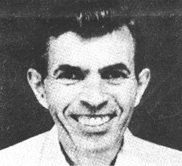
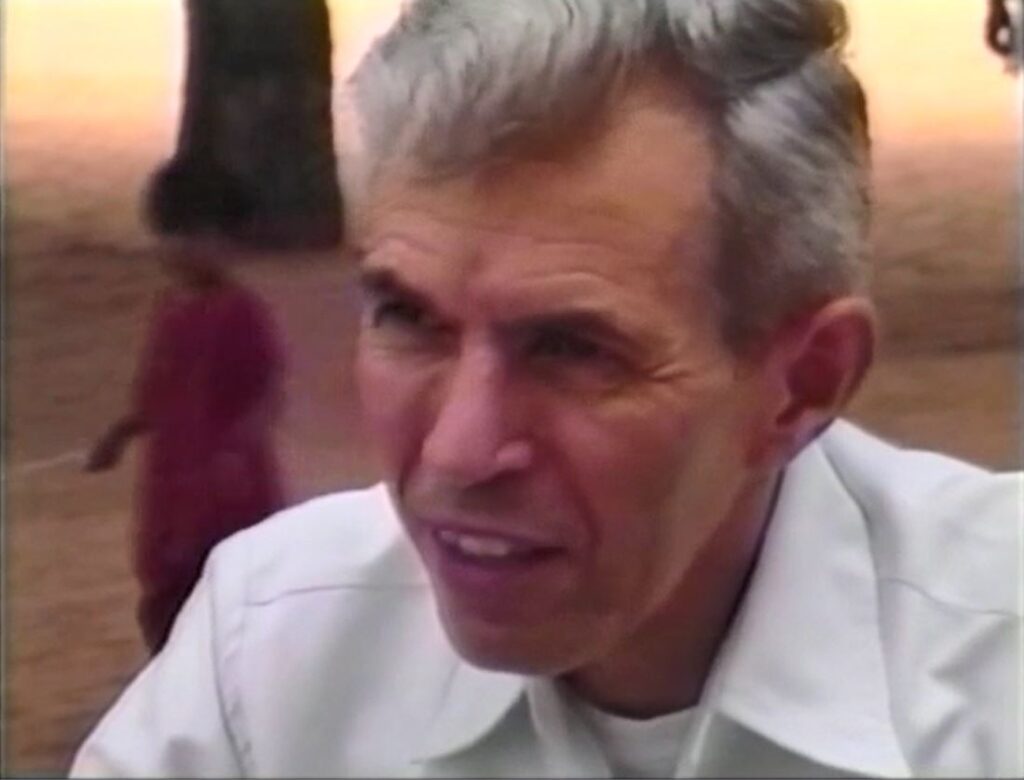
American Don Heath 1973
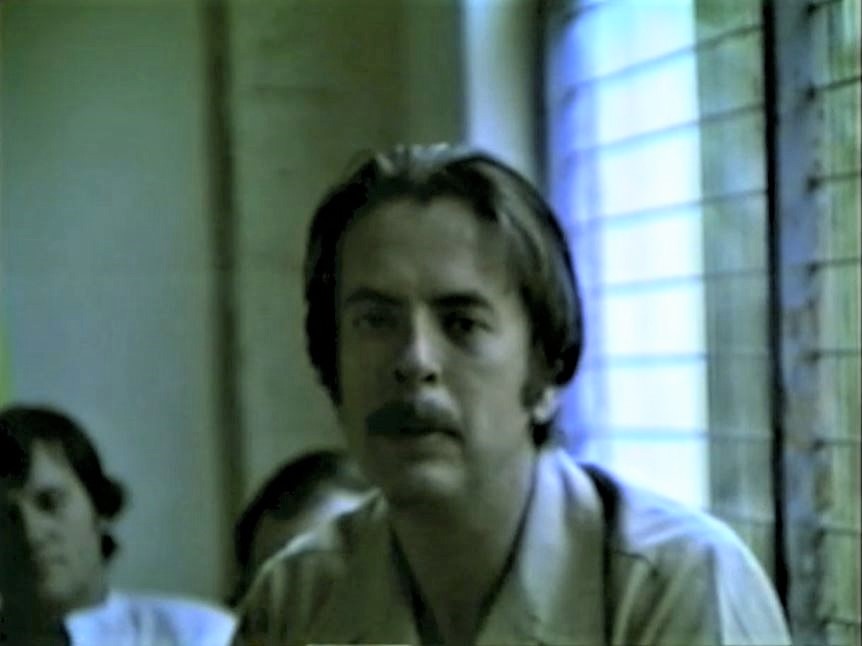
Fred Greenberg interviews scientist Suri Bhagavantam, author Howard Murphet, Larry Smith, Dr Samuel Sandweiss, and Don Heath in Prasanthi Nilayam at Christmas time in 1978. Video by Jack Lenchiner.
Icelandic academic, psychologist and psi researcher Erlandur Haraldsson and Latvian born Dr Karlis Osis 1973 Prasanthi Nilayam
While Erlendur Haraldsson (1931 – 2020 ) and Karlis Osis (1917 – 1997) were researching deathbed visions in Indian hospitals, they heard about Sathya Sai Baba, who was reputed to produce miraculous phenomena. They visited him twice in South India. Although they could not persuade him to take part in experiments, they heard of many strange events associated with him and made some puzzling observations of their own. Erlendur made a more extensive study of Sai Baba during later visits to India, leading to the book, Miracles are my Visiting Cards: An Investigative Report on Psychic Phenomena Associated with Sathya Sai Baba (Modern Miracles, in its American edition), in 1987. The book was issued in an updated edition by Hastings House in 1997 and reprinted by White Crow Books in 2013 as Modern Miracles: Sathya Sai Baba: The Story of a Modern Day Prophet.
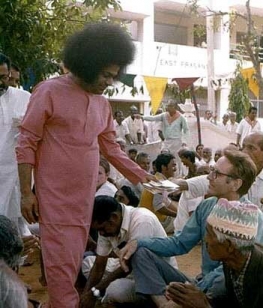
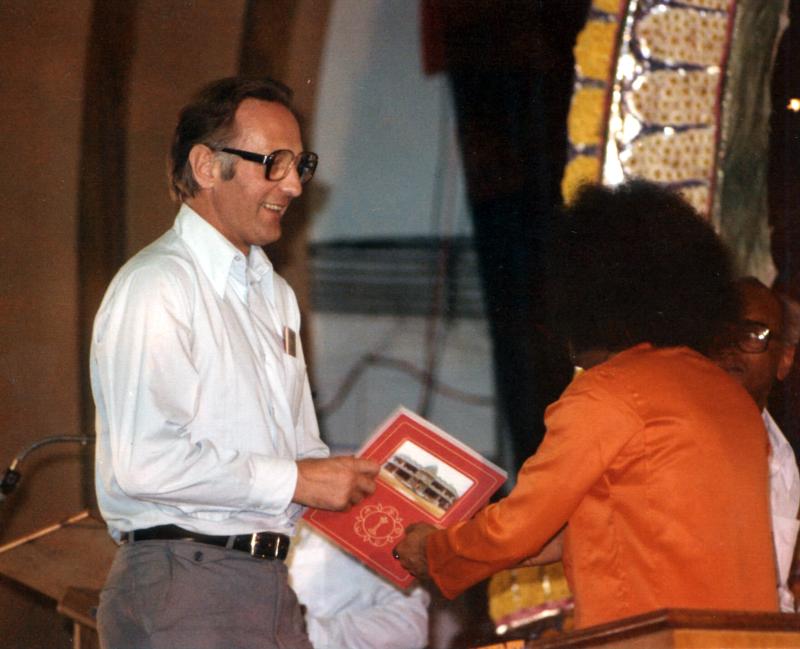
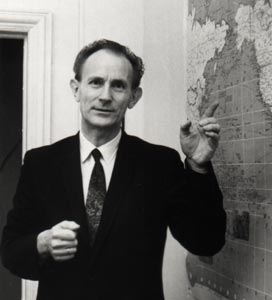
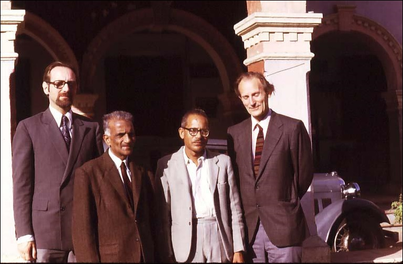
Karlis Osis, Ph.D., was born in Riga, Latvia in 1917. He is one of the first psychologists to have obtained a doctorate degree with a thesis that dealt with ESP (University of Munich, 1950). As a Research Associate of the Parapsychology Laboratory at Duke University from 1951 to 1957, Dr Osis was a colleague of Dr. J. B. Rhine. He later served as Director of Research at the Parapsychology Foundation in New York City. From 1962 to 1975, Dr Osis was the ASPR’s Research Director. He then became the Society’s senior researcher until his retirement in 1983, at which time he was made Chester F. Carlson Research Fellow Emeritus, a position he held until his death in 1997. Dr Osis has authored numerous scientific articles on his research, which have included studies of ESP in animals, the effects of space and time on psi, ESP and meditation, physiological correlates, out-of-body experiences, and apparition phenomena. He has also conducted major cross-cultural surveys on ostensibly paranormal deathbed observations by physicians and nurses, which resulted in the publication of a book he co-authored, At the Hour of Death (New York: Hastings House, 1986).
Americans Franklin Albert Jones (Adi Da) and Gerald Sheinfeld 1973
In the article Trip to India – Taxis, Temples and God Gerald Sheinfeld writes that we left Bombay for Sathya Sai Baba’s ashram. The first day there we joined about two hundred people sitting on the grass in front of his house, which is also the temple. The people formed a semi-circle and waited. (It still amazed me how Bubba (Franklin Albert Jones / Adi Da 1939 – 2008) would sit this way in front of so many limited people who call themselves guru.)
After a short time Sathya Sai Baba came out. I looked to Bubba. He was very intense and concentrating on Sathya Sai Baba. Sathya Sai Baba walked in front of the people and occasionally stopped to touch someone on the head or the third eye. Occasionally someone would give him a note. Then he did it, his big smack. He materialized vibhuti, a ceremonial sacred ash used in Hindu rituals. He moved his hand around a few times and then from his fingers there appeared a white powder. He placed a little on different people’s foreheads. I enjoyed the show and was impressed with the unusualness of it, but it had no profound effect on me at all. Sathya Sai Baba kept walking and didn’t acknowledge Bubba in any way.
We stayed there four days. Bubba enjoyed the layout of the hills surrounding the ashram, but he said, “There is no sense of God at this ashram. It is a place of fascination, a place of magic,” He said there was no true devotion or love between the disciples and Sathya Sai Baba, because their attachment was motivated by fascination. Miracles don’t create true devotion.
That night, Bubba told me that the next day when Sathya Sai Baba materialised something, I should stand up and ask him to do a baseball or a hot dog. Preferably a hot dog. Bubba said Sathya Sai Baba doesn’t actually create anything, he simply transports it from one place to another through subtle siddhis, or forces. He dressed in orange robes which were well tailored casements of silk and other fine fabrics. Bubba said he liked the way Sathya Sai Baba dressed – his tailor was good.
Another day at Sathya Sai Baba’s ashram I was trying to take a picture of a hawk in flight. As it moved, I kept resetting the camera and refocusing. Bubba was watching. After a few minutes or so with no picture taken he asked for the camera. With complete confidence he pointed it and took a picture. No hesitation. He said this wishy-washy oscillation is a waste of energy. Just do it. Bubba’s photo came out perfect, naturally.
There were a few Americans at that ashram and some of them had heard of Bubba. One of them in particular, a girl, kept asking me if she could meet Bubba. I told her that he wasn’t there to teach or meet with people, but that she could ask me what she wanted, and if I didn’t know I would ask Bubba for her. This didn’t satisfy her; she simply wanted to be near him. But Bubba didn’t want her around. One night I returned to our room from a trip to the local store and found her sitting with Bubba in our room. Without asking and in the middle of her sentence, I took her arm and asked her to join me outside. Once on the porch I told her not to bother Bubba with anything. If she had something to say to him, she could deal with me.
Bubba didn’t want to have to deal with people other than the ones he had special reasons to see, and most of them were dead. By this time, something different was happening with Bubba. The purification of karmas over the past few weeks was becoming evident. Bubba, who was then known as Franklin, was acting more in his identification with God and less as the man, “Franklin,” or anything like that. It was very subtle. His presence was very proud, very upright.
While we were there several people mentioned Neem Karoli Baba and asked if we would see him. The Raja of Bhor had mentioned his name also. Bubba asked me to get his address and sometime later in the trip we would visit him. Before we left L.A. this was the only address Bubba didn’t have. He said to me, “See how things always work out?” One night while still at Sathya Sai Baba’s ashram Bubba had a subtle contact during sleep with Neem Karoli Baba, and afterwards Bubba felt it was unnecessary to visit him physically.
Gerald Sheinfeld met Adi Da in February 1972 prior to the formal opening of his ashram and was with Adi Da throughout his formal teaching and Blessing years. Gerald’s direct service included attending Adi Da on His trip to India in 1973. Over the years Gerald was the head priest of each of the Adidam Sanctuaries and served as manager of the guild of head priests in Adidam for over twenty years. He was a member of the Dasya Mandala as one of Adi Da’s personal attendants. He published a book of stories that cover over 45 years with Adi Da, At the Feet of the Spiritual Master. Stories from my life with Avatar Adi Da Samraj (2017).
https://beezone.com/dawnhorse/triptoindia/index-37.html/embed#?secret=ykmFd2DRgP#?secret=49n6Ui3aPL
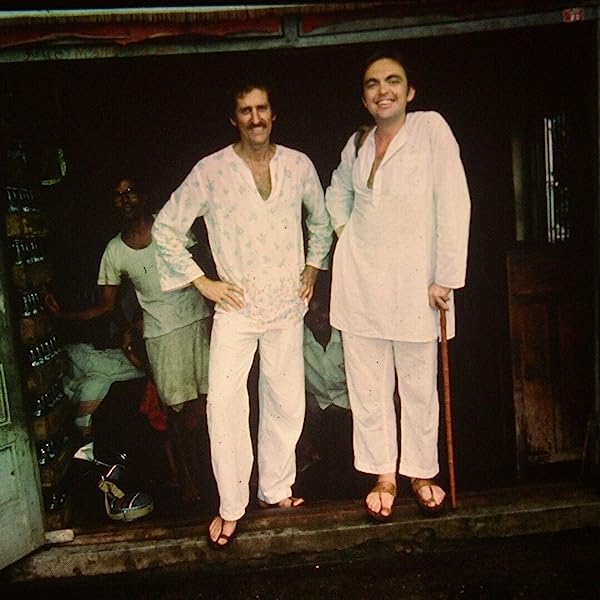
Australian surfer Peter Rae Whitefield 1973
Peter Rae from Australia was a world surfer, but one day while passing through India on a photography assignment, in search of newer and better surfing waves, he encountered Sathya Say Baba. From that moment forward, Peter’s life was changed forever and he never surfed again.
Peter stayed for 3 months on that first meeting.
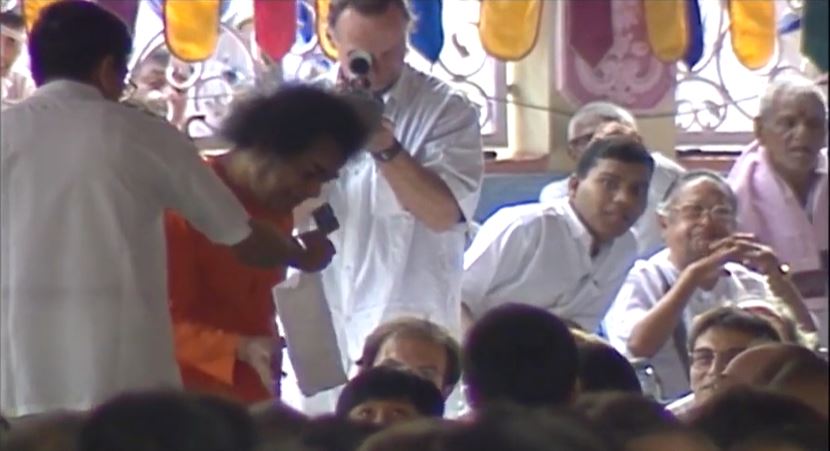
American Elda Hartley Nava Bharat Gurukulam, Rajahmundry December 1973/January 1974
While in India on a 3 month research trip with Dr Elma E. Green and some of his staff from the Menninger Foundation in Topeka to produce a film on biofeedback. They spent the time seeking out Yogis who control their internal states. During the trip Elda came across Howard Murphet’s book Sai Baba: Man of Miracle, which impressed her so much that she left the Menninger group for a few days and travelled to Nava Bharat Gurukulam in Rajahmundry, where Baba was holding the second All India Conference for Teachers. The material she gathered while there was used in a 1978 documentary Hinduism And The Song Of God.
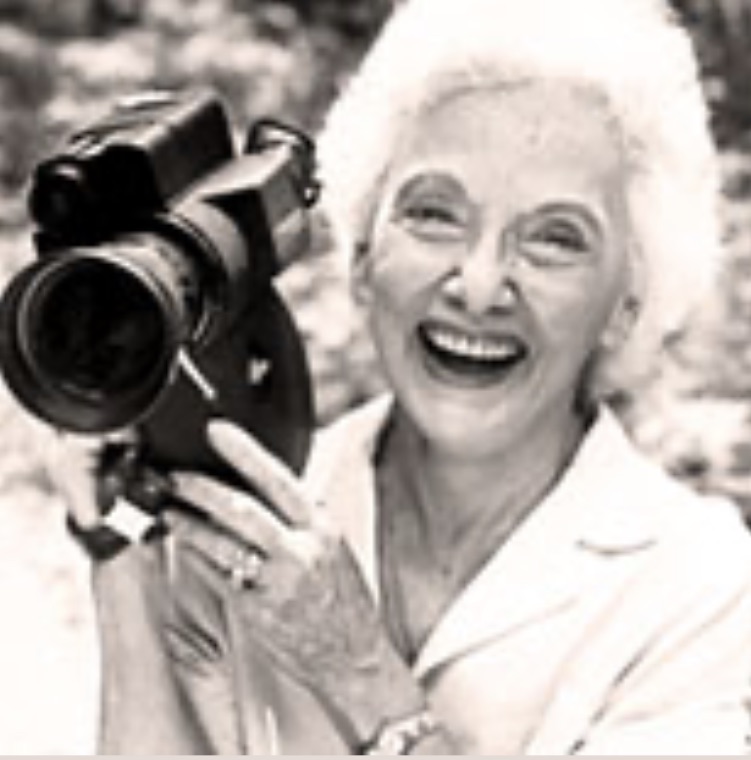
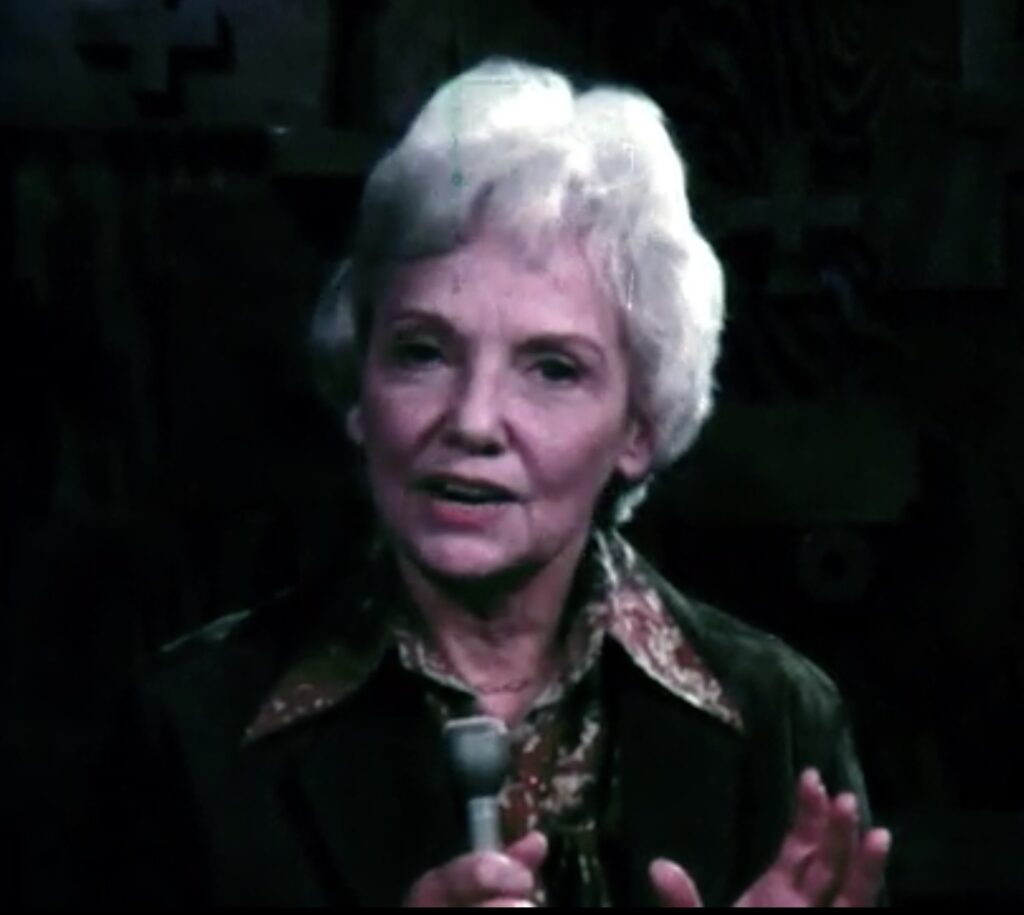
Dr Elma E. Green devoted his life to the idea that people can develop voluntary control over internal physiologic functions that are normally involuntary, and to research and teaching about states of consciousness and spiritual development. He was one of the scientists who invented biofeedback and began research of it, working alongside his wife and colleague, Alyce, and daughter Judy.
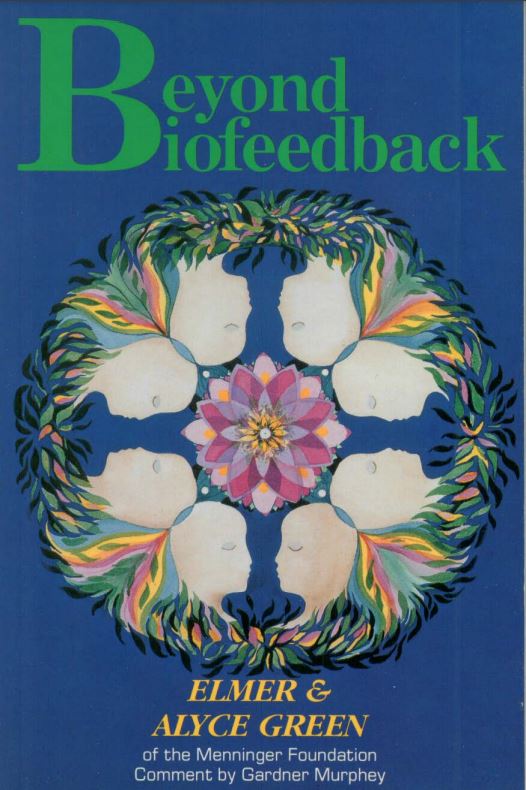
Download the book https://elmergreenfoundation.org/wp-content/uploads/2019/02/Beyond-Biofeedback-Green-Green-Searchable.pdf

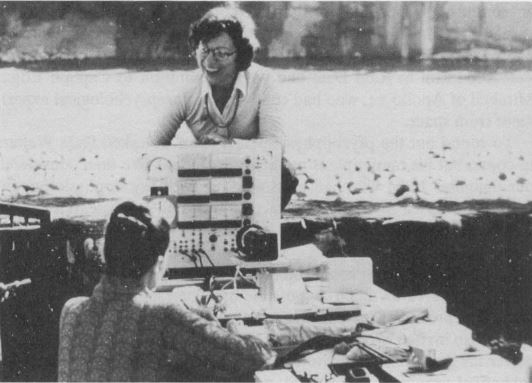

HARTLEY, EMILY ELDA VOELKEL ELDA VOELKEL. Emily Elda Voelkel Hartley, actress, documentary producer, and author, was born in Brownwood, Texas, on March 6, 1911, to Leonidas Carl and Emily (Lockwood) Voelkel. The family lived in McKinney, Texas, at the time of the 1920 federal census, and her father worked as a grain merchant. By the time Voelkel, who went by the name of Elda, attended high school, the family had moved to the neighbourhood of Oak Cliff in Dallas. In 1926 she won an Oak Cliff beauty contest. She attended Oak Cliff High School, where she worked on the yearbook staff, was a member of the Scholarship Club, and president of the Spanish Club, among other activities. She graduated in 1927. Elda began her acting career at the Dallas Little Theater. She later attended Southern Methodist University and participated in the college drama program.
Inspired by her experiences in local theatre programs, Elda Voelkel visited Hollywood’s Paramount Studio in the summer of 1929 and was cast, with one line of dialogue, in Ludwig Berger’s The Vagabond King, released in 1930. She then moved to New York City in 1930 to pursue a Broadway career. She received two stage roles between 1930 and 1931. Voelkel debuted as the comedienne in School Girl and later played a part in She Lived Next Door to the Firehouse. Following her Broadway success, she secured a contract with Fox Film Corporation.
Elda Voelkel’s film career lasted briefly between 1930 and 1932. Her film credits include The Vagabond King (1930), Only the Brave (1930), and The First Year (1932). In the midst of her budding film career, Voelkel married Hollywood director William Keighley on September 1, 1931. The marriage ended in divorce in 1936, and Voelkel married filmmaker Irving Hartley on October 18, 1940. They had one son.
Beginning in the 1960s Elda Voelkel Hartley embarked on a film production career. With her husband Irving Hartley, she produced numerous documentary films that focused on travel, education, and world religions. In 1976 Elda and Irving founded the Hartley Film Foundation which was dedicated to promoting a broader understanding of spirituality and religion. They traveled the world and profiled religious rituals and philosophical principles of major religions through their video productions. Her many film releases included Trip to Awareness: A Jain Pilgrimage to India (1976), Buddhism: Path to Enlightenment (1978), and The Therapeutic Touch: Healing in the New Age (1979). Her book, Perennial Wisdom: Unity in the World of Faith, was published in 1985. She continued film production throughout the 1990s.
Elda Voelkel Hartley died at the age of ninety in Greenwich, Connecticut, on March 6, 2001. Her husband preceded her in death in 1986.
Americans Bob and Barbara Bozzani February 1974
They travel with one of Indra Devi’s group tours to the ashram.
Barbara Bozzani (1931 – 2018) writes – I attended classes given by Indra Devi, who instructed us in the ancient, classic postures and later astounded us with stories of her spiritual preceptor, Sri Sathya Sai Baba. Her stories created a longing within me to to to exotic India and see this reputedly amazing being. The longing became an obsession. In the later part of 1973, I convinced my husband that we should travel with a group of Westerners to see Baba at his ashram near the small village of Puttaparthi in South India. Sai Baba had reportedly performed wonders such as Christ had done. My curiosity could not be assuaged; I had to see for myself.
My husband was going through a rather difficult period in his life and was less than enthusiastic about taking a trip to India. Nevertheless, in February of 1974, off we went, with about twenty other curious pilgrims, for an unforgettable journey.
The 1978 Christmas Day marriage of the Bozzani’s daughter conducted by Sathya Sai Baba was captured in this film;
American Esther Howarth February 1974 Prasanthi Nilayam
She travelled with one of Indra Devi’s group tours to the ashram.
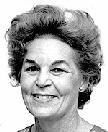
Tampa Bay Times, December 26th, 2013 – Esther Matilda Howarth of St. Petersburg, died Dec. 22, 2013. She was born in Royal Oak, Michigan, graduated from Royal Oak High School and moved here with her family in 1934 when they purchased the Marl-Jean Hotel. She graduated from St. Petersburg Junior College, attended Florida State College for Women and graduated from Michigan State University. She was a member of Matrix, the Journalism honorary society. For a brief time during World War II she was secretary to Tom Harris of the St. Petersburg Times and started a military column showing those people drafted or enlisted into military service. Later she went to New York City to study voice and worked as editor of the house organ for the W. T. Grant Company department stores. In 1947 she and her brother, the late artist and teacher Milton Howarth, sailed for France aboard a converted troop ship, the Marine Tiger, to study at the American Art Schools in the palace of Fontainebleau, France. This was the reopening of the school after the end of World War II. Later she worked as a radio reporter for Radio Diffusion Francaise, American division and as editor of the house organ for the U.S. Embassy in Paris while studying at L’Ecole des Hautes Edtudes Musicales. She received first prize and a diploma. Returning to the US in 1952 she concertised and was soprano soloist three times with the Air Force Symphony in Washington, D.C. at the Watergate, Rock Creek Park and Inter-Departmental Auditorium. She was also soloist with the Florida Philharmonic Orchestra in St. Petersburg and Clearwater under conductor Bernard Rosenthal. After the death of the father in 1964 the family sold the Mari-Jean Hotel and Esther went to work for the city of St. Petersburg. She retired in 1982 as an Administrative Assistant in the Real Estate Department. In 1969, she heard about the Indian holy man Sri Sathya Sai Baba and in 1974 joined a group led by Yoga teacher Indra Devi of Hollywood, CA to see the World Teacher. Thereafter she made many trips to India, living at the ashram known as Prashanti Nilayam in a small village in South India. Today it is a large city with people coming from all over the world to see this World Teacher. She and her brother in 1975 started weekly meetings in their home, which developed into the Sathya Sai Baba Centre of Tampa Bay. She was a member of the Association of Research and Development (A.R.E.) of Virginia Beach, VA (Edgar Cayce), the D.A.R. Princess Hirrihigua Chapter, and Alpha Chi Omega sorority.
American Wilma Bronkey February 1974 Prasanthi Nilayam
She travelled with one of Indra Devi’s group tours to the ashram.
American Larry Smith 1974?
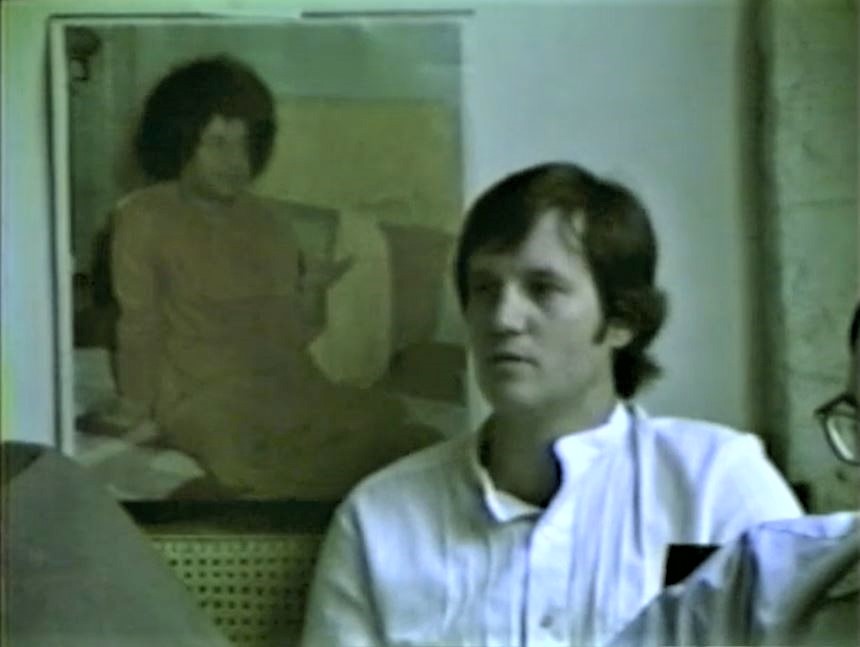
Bolivian Romero Sotello Murillo 1974
Author of Empire of the Soul Paul William Roberts September 1974 Prasanthi Nilayam
Paul William Roberts (1950 – 2019) was a Canadian writer who spent many years in Toronto before moving to the Laurentians in Quebec. Born in Wales and educated at Exeter College, Oxford, where he gained a second in English Language and Literature, Roberts moved permanently to Canada in 1980. He lived for several years prior to this in India, where he taught at Bangalore University and studied Sanskrit at the Banaras Hindu University in Varanasi.
“Empire Of The Soul was really written from the heart, a love letter to India,” Paul William Roberts (1950 – 2019) said of the book, drawn from extended visits in the early 1970s and early 1990s, that has been an essential item in the backpack of many a subcontinent traveller. “When you love a subject, it changes everything. Although I predicted India would soon amaze the world, I didn’t think it would be so soon. I often feel I should update some parts to reflect a country on its way back to where it was before the invaders and colonizers stole everything and crushed a great civilisation under their boots. The wounds of colonialism are now healing fast, though, and the book needs to show an India that made it, rather than one trying. It is the only country where I kiss the ground upon arrival and feel I’m home at last once more.”
Roberts was a writer of fiction (Palace of Fears, Homeland) and of several non-fiction books (Empire of the Soul, Journey of the Magi). He was also a literary journalist and a war correspondent, as well as a TV producer for BBC, Citytv and TVO. His coverage of the two Iraq wars for Harper’s magazine was expanded into his book A War Against Truth, which won the PEN Canada/Paul Kidd award (2005) for courage in journalism. Born in Wales in 1950, he studied at Oxford, and taught in India, before moving to Toronto, Canada, and working as a journalist and a television producer.
In 2015, Paul Roberts writes – Puttaparthi in the early seventies was a newish small ashram, housing possibly 100 or so, on the edge of a thatched-hut village, by a river that dried up every summer, and far from even a small town. During darshan once, Baba told the few devotees around him: “One day this will be a great city and millions will come to visit Swami.” Almost everyone laughed; the thought was ridiculous. Where I live now is actually smaller than Puttaparthi was, yet if I announced it would become a great city no one would even listen. Yet Puttaparthi is now a city, and there were an estimated two million devotees at the last festival I attended.
He ignored me completely for several months. It was not the guru-chela welcome I had read of and expected. He began to irritate me – though whenever he was close my heart opened and ached for him. I had presumed there would be teaching, yet all we had was the chanting of bhajans. I also expected peace and tranquility, such as I now have, but the ashram was frenetically far from peaceful. I also noticed I was forming close friendships that would suddenly evaporate, always leaving a sense of something learned. An ancient Indian woman, Sudha Mazumdar, adopted me like a son, and I still miss her, miss her instructive advice, and her stories of first meeting Swami – for, in youth, she had been a devotee of Shirdi Sai Baba, and was thus very dubious about this man claiming to be a reincarnation; she needed to be convinced, and she was. I will tell you her story later.
One day, sitting waiting for darshan, I noticed a young western man who had just arrived. I watched him walk to find a seat and had the vividly irrational feeling that I hated him. Just his strutting walk infuriated me; his smug class-nerd’s face needed punching; even his hair was annoying. How could one hate a complete stranger? For weeks thereafter I was always thrown into his company one way or another, until I grasped the fact that I had to learn to love him. I soon found qualities I liked, but during the process Swami always paid him special attention in my presence. He was a lawyer, for example, but Baba said, “Not lawyer…lover…” As soon as I began to see his soul was one with mine, our paths rarely crossed again. This process of drawing out personal faults until they were identified was intense, and the ashram was unlike any other place I have been. The energy seemed fiercely tangible, almost visible. It was still a while before I realized that this was in fact the potency of Swami’s teaching: a complete environment where souls were smelted, with the crap rising up to be scraped away. A 100 years of life’s lessons passed in months. I became painfully aware of the karmic flaws in my character that were so deeply embedded they were more like animal instincts: a cat does not choose to chase the rustling leaf or bird. There is no space between sense perception and action. Lust seemed like that to me. Certain western girls there evoked an instant response: I want, I want, I want… They seemed to know it as well, one always pulling her sari up until only her eyes were visible – and eyes don’t lie. I was always able to discern a woman’s sexual interest from her eyes, but in India the secret of concealing in order to reveal is still understood, and ought to be studied by western ladies who think a man is attracted by virtual nudity. After a while in India ankles would light my fire – and the women know this too, wearing jewelry and bells above the heel. It went without saying that Indian women were unattainable, virgins until the wedding bed; thus the westerners were more troublesome, a tempest rocking the frail raft of my inner work. I also found myself becoming friends with men even more lust-afflicted than myself. One, a tailor named Khan, even assured me that sex in the astral planes was even better than down here. “You get a hundred wirgins,” he said, “and no matter how much you do this-thing they are still remaining wirgin. You tire of these, you get one hundred more, all too much beautiful – for the God is too much good, isn’t it?”
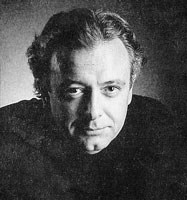

Paul William Roberts writes in the Canadian Vogue Magazine (December 1975) about his first-hand account of the 6-month experience with Sri Sathya Sai Baba at Puttaparthi in 1975 https://www.sathyasai.org/inspiring-stories/sathya-sai-baba-vogue-magazine
From Empire of the Soul Paul William Roberts writes – ‘I Am Always with You’ PUTTAPARTHI, 1974-75
Beyond Bangalore’s sputtering, inchoate suburbs you descend toward mountainous plains, a primeval landscape of stark, rocky outcrops, palm-cluttered desert, and outrageously fertile paddies that look as if some Titan had mischievously plugged them into the smouldering wasteland for the sheer hell of it. A ragged blue ribbon of road snaked through haphazard villages of thatch and palm that seemed to exist solely because of the trade this crumbling shred of asphalt brought their way. As predictable as small towns in the American Midwest, though with barely a fraction of the opulence, these outposts of humanity elicited first despair, then, finally, abject boredom. They were anonymous, miserably interchangeable.
I was travelling with a nineteen-year-old girl from Arizona who called herself Joy but had once been Betty. She had been in India for over two years, and had put me on to our driver, a shifty-looking character named Abdul. Joy wanted to ‘share’ the cost of paying him for driving us in his taxi to Puttaparthi. Her notion of ‘sharing’ meant I’d share her company in return for paying the taxi fare. She was a devotee of Sathya Sai Baba, and had followed the holy man around for two years now, dumping her passport in the Ganges at one point, and writing to inform her parents that she was no longer their daughter – she was the bride of God. Gopi was the term she used for herself – gopis however, in this case at least, being one of the horde of sixteen thousand nubile milkmaids who are often portrayed as the god Krishna’s harem. She believed Sathya Sai would one day marry her.
‘He provides for his own’ was all she would say about how she financed herself without parents.
With little conversation to interrupt the silence between us, I studied the passing landscape. Recently crippled two- and three-wheeled vehicles stood propped up by piles of rocks. Rusty engines leaned against huge roots, wild and naked men smashing stones against crowbars and levering up blasted carburettors, pulverised gearboxes. And in countless ditches between these desolations, mangled remains of entire burned-out vehicles were being cannibalised by hunter-gatherer mechanics for parts. Nothing is wasted in India, where recycling has long been essential common practice.
‘Detroit in the Stone Age?’ I commented to Joy at one point.
‘It’s all His will,’ she replied, her right leg bouncing through layers of sari cotton to some private inner beat.
‘What?’
‘Everything is His will.’
A handpainted sign read ‘Now enting Anda Pradess.’ The disastrous road seemed to have given up, exhausted. We bumped and lurched over entire miles of bare dust, suddenly rediscovering briefly a blistered and forlorn metalled track. The air buffeting my face now was as hot as that pouring from a bread-oven door. We had certainly quit Bangalore’s air-conditioned plateau. Andhra Pradesh knew no winter; besides the monsoon – if it came – there were only varying calibres of summer, usually with a heat that left you breathless and speechless. Maybe Joy had been here too long?
Twisting around one especially drastic corner, Abdul gnashed down through objecting gears to bring his car to an unsteady halt beneath a spinney of huge overarching trees. In the enormous shade below, there squatted one lonely, lurching thatch-roofed shack, with a tell-tale collection of handmade wooden benches and tables spewed out in the mottled dust from its dim and smoky maw. It was a commercial enterprise.
‘Chaichai?’ the pathologically untalkative driver inquired. He’d extracted the bald ignition key and opened his squeaking door.
Some relative or dear friend must have owned this excessively humble rustic joint, plunked down at the edge of burned mountains, stacked and verdant paddies, and flailing groves of tall palms.
‘What a landscape!’ I remarked to my companion, who slurped a stained glass of milky chai, absently pulling her choli down, putting it in its place. ‘God keeps the best for Himself,’ she announced.
A blind beggar with empty eye sockets that were as dry and black as a dead dog’s nose approached us, urgently wailing, ‘Sai Ram, Sai Ram, Sai Ram!’ He held a kind of theatre vendor’s tray, with a garlanded portrait of Sai Baba propped on it against his chest. Some coins were scattered on the otherwise empty surface, to give you a hint. He smiled and intoned, sensing where we’d sat and picking his way over. I placed a rupee under some coins.
‘Sai Ram! Woh, Sai Ram!’
It was a phrase I’d come to be very familiar with, connecting Sai Baba’s name with the god Rama, and used as a mantra, greeting, and all-purpose response to almost anything by those around him.
‘Baba says you shouldn’t give money to beggars. It teaches them that begging is a profession,’ Joy said loftily.
‘The guy’s blind, Joy. I think begging probably is one of his few career options.’
‘He’s a millionaire. He’s not even a devotee of Baba.’
Joy was putting me off the spiritual life of Sathya Sai Baba before I had even met the man. I had no idea what a ‘spiritual life’ was then, of course, or what it entailed.
Returned to the unyielding rear seat of Abdul’s car, I watched our vehicle oscillate through what increasingly seemed a paradise untouched by everything but searing heat since time began. This heat was a third passenger. It slapped my cheeks, eventually embracing my whole damp body with fierce, hot, and powerful arms. Joy fanned her face with a slim paperback of Hermann Hesse.
‘Sai Ram,’ she mumbled constantly, like the blind man. ‘Sai Ram.’
When the huddle of sparkling domes, stunted gopura, and scattered concrete and palm-thatched bungalows of Puttaparthi eventually came into view, ‘Sai Ram’ was all she had to say.
It was indeed one of the most exquisite stretches of land I’d ever seen: the majestic, parched, and barren mountains, the profound and stubborn boulders that seemed their offspring, the fertile groves and paddies, the broad, mercurial river. And, in the midst of it, a small, relatively prosperous South Indian village where life had changed little in seven hundred years.
In those days Puttaparthi started as yet another unplanned, cluttered community, but rapidly became something more as you drove in through the dust, something you hadn’t seen before. After eight hours of careering through rural eastern Karnataka and south-western Andhra Pradesh, I felt I’d seen all there was to see, which had not amounted to much. But Puttaparthi, where this road literally ended, more than fulfilled my expectations for the home of a great holy man.
Cupped in the muscular brown palm of black-capped mountains – mountains whose peaks were burned, as legend had it, by the monkey god Hanuman’s blazing tail as he flew down to Lanka to do battle with the demon king, Ravana – the village had an elegance about it that reminded me of some unspoilt spot in the Greek islands. Everywhere were whitewashed mud-brick houses, many boasting the novelty of terracotta-tiled roofs and neat, cool courtyards. The broad Chitravati River flowed past these dwellings, its waters swollen deep and heavy that September, a month or so after monsoon season, a tide of liquid turquoise beneath an enormous blue sky, a sky more exposing than sheltering.
In the centre of it all, the ashram: an enclosure surrounded by thick twenty-foot high walls that contained a domed temple made of sculptured concrete as ornate as a gigantic wedding cake. This extravaganza of Dravidian rococo was offset by banks of three-storey buildings that would not have looked out of place in Warsaw. Yet the temple’s riotous opulence somehow granted them respite from this blast of industrial ugliness, as did the magnesium flares of fierce sunshine that flashed red from their whitewashed walls and made them at times seem like monoliths carved from solid light. There was more than enough beauty to go around here. Immaculate combed ochre sand filled the spaces between these structures and their temple hub, holding tall, majestic palms that stood like wild sentries, flailing their arms, turning their heads to see who came, who went.
Immediately outside the ashram walls, lining the dust road we drove along, was a strip of ad hoc bamboo lean-tos of varying structural ingenuity. Brahmin Meels Hotele proclaimed a clumsily handpainted board outside one; next to it was the Military Meals Hotell. The former catered to India’s vegetarian priestly caste, while its neighbour sought business from the carnivorous Kshatriya, or warrior caste – not that Brahmins are necessarily priests, or Kshatriya soldiers these days. There were other, less specialised restaurants, as well. Virtually all the other precarious structures appeared to deal exclusively in the Sai Baba souvenir trade: cheaply framed and frequently garish photographs of the curious figure, with his orange robe and black halo of incongruous Afro hair, peered out from stacks of Sai Ram Incense; coils of sandalwood or rudraksha bead rosaries held enamel lockets emblazoned with his image; heaps of shoddily bound tomes typeset by dyslexics dispensed his wisdom. There were Sai Baba calendars, Sai Baba pens, Sai Baba dashboard magnets, and thousands of Sai Baba bumper stickers – the kind that required glue to stick. Almost any object that could be retailed for less than ten rupees seemed to be available with the holy man’s likeness stuck, stamped, or painted on it. Near the main gates of the ashram, however, this explosion of spiritual materialism was tempered by the more pragmatic appearance of a laundry that specialised in white garments, and a tailor who appeared to manufacture such white garments exclusively. These were, I soon found, the all-but-mandatory uniform of the male Baba devotee.
‘No rooms available,’ snapped Mr Nithyagiri Rao, supervisor of accommodation. Short, muscular, nervous, this supervisor was swathed in pristine white homespun, or khadi. Somehow just being near him made me tense.
‘But I’ve come all the way from England,’ I told him, unable to believe there was no room at the inn.
He avoided my eyes, pretending to deal with papers piled on his desk. ‘No accommodations available,’ he muttered.
The ashram was named Prasanthi Nilayam – Abode of the Highest Peace. As was often and eagerly pointed out, ‘Jerusalem’ has an almost identical meaning.
Joy had vanished the moment Abdul heaved on his handbrake. I tracked her down in a dingy café full of Westerners hunched over chai. Everyone wore hybrid Indian outfits: saris with straw hats and tennis shoes; dhotis with denim vests. Most looked as if they also had American Express cards tucked away somewhere, too: Don’t renounce the world without it.
‘Sai Ram,’ she said, hearing my plight.
A kindly old woman from New York with white hair and a necklace made of large nuts offered to show me where I could rent a room. Beyond the ashram walls, at the foot of a steep hill, I found Nagamma’s Hotel: six ten-by-six-foot concrete rooms off a bare corridor, sharing a toilet without running water and without any fixtures or fittings except for a hole in the floor. The rent was five hundred rupees a year. I handed over the full amount. I planned to stay a year.
Sathya Sai Baba was born Sathya Narayana Raju on November 23, 1926, to a family of pious Hindu farmers. By our standards, they were comfortably middle-class. His brother and sister still, in 1974, lived in the same little house off a dusty lane in Puttaparthi village. They were their brother’s devotees now, but apparently enjoyed no more privileges than anyone else in the ashram that had sprung up on the outskirts of the village. They occupied their days more with teaching, agriculture and animal husbandry than with devotions.
As a small child, Baba had exhibited magical powers, his school friends reporting that he materialised sweets and other objects for them out of thin air. In a land soaked with superstition and supernatural yarns, these antics were a cause more for concern than for celebration. The family called in exorcists and pundits, often subjecting the strange little boy to painful ordeals in an attempt to make him normal. For days on end, according to a village elder who had witnessed it, Baba would sit in trance, chanting verses in Sanskrit – a language he had never studied, which was by then the sole preserve of Brahmin scholars.
On March 8, 1940, at around seven in the evening, so the story goes, Sathya Narayana was stung by a big black scorpion. No one else ever saw a scorpion or snake. In any case, the boy then fell stiff and unconscious. A day or two later he revived and began to act in an even more bizarre manner.
His parents were completely exasperated by now. On May 23 that same year, his father demanded to know who or what he was. ‘I am Sai Baba,’ the boy calmly replied. ‘I shall not remain in your house any longer. I am no longer your Sathya. I am Sai. I don’t belong to you. My devotees are calling me.’ With that, he left home, sitting in a nearby garden and ecstatically chanting spontaneous hymns to the small group of locals who revered him even back then.
Having named his son Sathya Narayana, his father was understandably perplexed to find the boy calling himself a name that then meant nothing to him. It turned out that Sai Baba had been the name of a holy man in Shirdi, a town weeks away from Puttaparthi and some days’ journey north of Bombay. This Sai Baba had died at the beginning of the century, and had been a low-key, enigmatic figure to whom miraculous powers were attributed by a small circle of devotees. No one even seemed too sure if he was a Muslim or a Hindu. His starkly unadorned message had been one of love and the unity of all faiths, his dress ambiguous, his home a ruined mosque. To his followers he had announced that he would be reincarnated in the South eight years after his death. He had died in 1918.
Someone once told me a story that appeared to confirm this. M. K. Raman was ninety-seven when I met him. He’d been an ardent devotee of Shirdi Sai Baba, one of those who’d personally heard the holy man announce his next incarnation. Nearly half a century elapsed before he learned of a South Indian guru who claimed to be the reincarnation of Sai Baba and thus felt ‘mildly obliged’ to set out for Puttaparthi. He did not really believe he’d find any truth to the outlandish claim.
When they first met and before either had spoken a word, Sathya Sai Baba waved his hand and materialised two coins for M. K. Raman – four annas in the old and long-obsolete Raj-era currency. ‘I knew then that it was true,’ Raman recalled, his creaky old voice quavering with emotion. A lifetime earlier, he told me, just before his death, Shirdi Sai Baba had mysteriously demanded of Raman four annas. As this old Sai Baba, like the new model, never asked for anything, and rarely even accepted personal gifts, the incident had stuck in Raman’s mind for fifty years. Such stories are common to the point of cliché around Sathya Sai Baba.
From 1940 on, Baba devoted himself exclusively to spreading a simple message of love and selfless work to a burgeoning horde of followers from all walks of life, from numerous religions, and from the four corners of the earth, as well as the humble villages of India. He also continued to display apparently miraculous powers: usually materialising sacred vibhuti ash, sweets and small objects, but occasionally performing far more extravagant acts. Incidents, some well documented, a few even on film, have him creating fairly large objects, substantial amounts of food, raising the dead, healing the sick, appearing in two places thousands of kilometres apart at the same time, and altering at will the laws of time, space and basic physics.
Having announced that he was the reincarnation of a holy man almost no one in South India had even heard of, Baba gradually elaborated on the issue of his identity, claiming at various times to be an incarnation of the god Vishnu or the god Siva – the two poles of the Hindu trinity, which is completed by Brahma, the Creator, the Formless One.
Vishnu is the Sustainer of Life; Siva is the Destroyer of Worlds, the one who paves the way for new creation. According to Hindu lore, Vishnu has appeared on earth throughout history in various forms, including Rama, Krishna and, some say, the Buddha. There is no account of Siva ever having assumed human form – although he has appeared as himself occasionally – yet it is an avatar of Siva that Baba has most frequently hinted himself to be.
At times, the claim has included more complicated details: Shirdi Sai Baba, says Sathya Sai, was a manifestation of the pure Siva force; he, however, is an incarnation of the Siva-Shakti force, a combination of the Destroyer of Worlds and his terrifying consort, also called Kali and frequently depicted wearing a necklace of human skulls while feasting on someone’s head. There will be one more manifestation in this series of avatars, Baba has often declared, and that will be the incarnation of Shakti alone. After he dies, this to be at the age of ninety-six in the year 2022, Prema Sai Baba will be born four years later also somewhere in South India.
A Californian called Jack Hislop showed me an enamelled ring that Baba had materialised for him, bearing the image of a shaggy, vastly bearded man. This, he’d been informed, was Prema Sai Baba. The image was rather terrifying. Prema means love. Sathya Sai’s version of the Hindu theory of avatars, which itself became very confused after the Buddha’s appearance, would be heretical in any other religion. But since the incarnations of Vishnu range from a large fish through a turtle, a boar, a humanoid lion, and a dwarf – easily suggesting a parable of evolution – Baba’s additional confusion is hardly noticed. All agree, however, that there is one avatar left to come: Kalki, who will orchestrate the end of all creation.
Sathya Sai’s message, though, is devoid of apocalyptic overtones. Indeed, his is a vision of the coming golden age, a heaven on earth brought about by man’s return to the cardinal rules of Truth, Selfless Work, Peace and Love. This is what he has emblazoned on his logo – a lotus with the sign of Om, the primal word, surrounded by the symbols of all the major world religions.
At least that’s how the logo was explained to me. Jews who came to Baba were openly hurt or offended by the absence of any Magen David on this logo, which included the cross, the star and crescent moon of Islam, the Buddhist wheel of dharma, and the Om. There was also another symbol few Westerners recognised: a burning Olympic-style torch. This turned out to be the Zoroastrian fire. It was not, of course, all the major world religions that Baba had on his emblem, but rather all the major Indian religions. While India has never persecuted Jews, and it surprises many to learn there are still a few exceptionally beautiful synagogues functioning, the Jewish population, never large, has now dwindled to fewer than a hundred. Most Jews have left for Israel, which came into existence at the same time India achieved independence.
Besides preaching universal brotherhood and religious unity, Sathya Sai Baba and the huge organisation that gradually evolved around him embarked on a programme of building schools, colleges, and hospitals that spans the subcontinent today. His legion of critics, however, maintain that his real intention is to found a new religion with himself as God. I personally could never see this. In a self-published book called Lord of the Air, an American ex-devotee claimed Baba was Satan incarnate and fed on the love of those he trapped with his lies. The Bible warns us of this, of course, of the devil disguised as the Messiah. With so many messiahs around these days, one is more inclined to wonder which is or was the devil. The tradition of saints and holy men in the East, however – and the lack of any devil – seems to make this a non-issue to Hindus.
I once heard someone ask Baba if he was Christ. ‘No,’ he replied. ‘I’m the One who sent him.’
Inmates of the ashram sat daily in the sand around the central temple, where Baba lived in a tiny room, waiting for darshan, the blessing they believed emanated from his presence – even the mere sight of him. As in all strict Hindu arrangements, the sexes were separated in the temple compound; something Westerners always had trouble with. It reminded me of primary school.
The birds, the palm fronds, the high blue air: it was a tranquil, idyllic scene, yet the atmosphere always seemed to border on the hysterical, the anxious, the expectant, and even the desperate. It seems that peace and quiet and inner calm are the last things you find in an ashram with a living guru in residence. These are places where hard work is done, inner work. You don’t go there for a holiday; you go there to confront yourself and change. Transformation is the one true goal of spiritual work. I came to liken the process to smelting metals: when it’s hot enough, the crap rises to the surface and can be scraped off. Squatting on the warm, smooth sand, constantly shifting to ease aching bones and numb flesh, I recognised my own excitement, expectation, even awe. For the first time it dawned on me that everything said about Sathya Sai Baba might actually be true – and if it was, what would it mean to me? When he finally appeared, without warning, a tiny figure with a huge, frizzy bonnet of hair and an unadorned orange robe that covered his feet, I experienced an extraordinary sensation. It was love, certainly, but more being loved than being in love. So unexpected and so strong was this feeling that tears streamed down my cheeks as I watched Baba’s slow, graceful movements. Later I put this down to all the hype I had heard beforehand. Later still I found it increasingly less easy to explain away.
Baba stood swaying slightly, gazing dreamily out over the semicircle of devotees, whose palms were now pressed together as if in prayer, all eyes on him. He raised one hand as if testing for rain and appeared to stir the air with his middle finger. Then, with his other hand, he made a gesture that looked as if he were writing on something invisible with his forefinger. Someone told me later that this was how he rewrote destiny. His presence seemed suddenly vast and remote, not connected at all to anything around it. There was an aura of stillness combined with majesty that I have never since encountered in any other person, no matter how famous or powerful. He looked like someone in absolute control of all.
After some minutes, he moved slowly along the rows of adoring faces, pausing to take a note, bless a child or some religious object held up for his attention. Then, fifteen feet away from me, he stopped by an old man in a wheelchair, made a curious polishing motion with his right hand, palm down, from which suddenly poured a quantity of greyish powder into the waiting cupped hands of the man, who sobbed in gratitude. Baba pressed his thumb on the man’s forehead, leaving a chalky mark there, and moved on.
As he drew still nearer, I trembled with almost painful emotions. My heart beat faster and faster. His dark, remote gaze swept over the people on all sides. Then he passed and was gone, without so much as a glance my way. I felt oddly humiliated, spurned, jilted.
Remote as Puttaparthi was, there were times during those months I spent there when it felt like the centre of the world. Life in the ashram never varied in its routine, while the people who came and went could not have varied more. One day John Lennon and Yoko Ono were sitting in the sand with the rest of us, next day it was the president of India, a producer of the James Bond films, the photographer David Bailey, or some high-ranking Italian politician. Yet there was only one star in that small world, and he seemed unimpressed by those who walked tall in the world beyond, often paying more attention to some ragged group of peasants who had walked miles for his blessing than to those who had arrived in air-conditioned limousines. Ignored, John and Yoko left in a huff. Indira Gandhi apparently cried when Baba refused to meet her privately.
Sathya Sai continued to ignore me, so I settled into the ashram’s routine, increasingly enjoying the tranquil, pastoral life of the village around it and my walks in that elegant countryside. I also enjoyed observing the devotees more than emulating them. Fast friendships were formed. Some have continued half a lifetime, some turned inexplicably into bitter enmities.
I returned to my rented cell from a typically fruitless meditation session one morning as the Klieg light sun rose above the hills yet again and shadows slid like deadly serpents from rocks and scrub. Pacing down the winding path toward me strode a fearful sight. A young blond man, close to seven feet tall, with a vast, flowing beard and two yards of hair coiled into a turret above his head. Powerfully muscular and certainly not fat, he possessed a belly like a witches’ cauldron, bulging over a faded orange loincloth that barely contained a set of male equipment a stallion would have envied. In one hand he grasped a massive trident, like Neptune’s but swathed in dangling coloured ribbons that held little stones and carved talismans; in the other was a kamandalam, a sadhu’s begging bowl carved from wood. Despite these features, what I first noticed was the necklace of nine human skulls hanging from his neck. It was fairly noticeable. The clacking noise he made as he strode forcefully through pebbles and dust was caused not by crania knocking together, however, but by wooden sandals, the kind held on only by a mushroom-shaped peg clasped between the toes. They are often made of sandalwood – hence the name.
‘Bum-bum bolo!’ he roared at me.
‘Sai Ram!’ seemed a better response than ‘Top o’ the mornin’ to you, squire.’ Bum-bum bolo, or something like it, was, I found out later, a phrase popular with hard-core devotees of Siva. That morning I was perfectly prepared to believe this apparition could well be Siva himself, come to personally bring creation to an end. But he swung on past, pale blue eyes flashing in the sun’s first rays, bearing down on an unsuspecting bazaar.
Kali Das was his name, although you could apparently call him Klaus without getting a trident plunged through your heart. Never allowed through the ashram gates – not just because he looked the way he looked, but because he looked the way he looked and he was a Westerner – he seemed not to mind this affront at all, hanging around for many weeks and reportedly living in a cave up in the hills, when he wasn’t living in Joy’s little gopi’s cell, that is.
Klaus, unsurprisingly, turned out to be German. He’d been in India since 1964, studying tantric yoga, apparently with a guru up in the Himalayas. He’d then married a Bengali girl, made himself a dugout canoe, and sailed down the Ganges. Somewhere along the way he’d managed to lose both the canoe and the Bengali girl, proceeding on by foot. He must have walked over two thousand miles already, I estimated, but since he was in no hurry and not going anywhere in particular, this meant nothing to him. Tantric yoga has a lot to do with arcane sexual practices – which probably explained why Joy was seen following Klaus Kali Das around the village from the moment he appeared. She was also soon announcing to anyone who’d listen that he was some kind of stand-in for Baba.
I knew that Klaus, whatever else he was about, was definitely into some fairly arcane practices when I stumbled across him up in the hills one afternoon. He was standing on one leg with a large rock tied to his penis, which hung well below his knee and was a bright, mottled purple. His other foot was wedged into his groin, his palms were pressed together above his head, and he was repeating ‘Om Siva,’ over and over in a voice that rumbled up from the kettledrum of his belly like a military tattoo. I thought better of interrupting him.
There is a pervasive belief in Indian mystical schools that male semen and the life force itself are one and the same thing. Thus, ‘squandering sperm’ is a concept that, in the Indian male, often develops into an obsession and even goes on to blossom into a full blown mental illness. Throughout history, ascetics who ‘raise the seed upward’ through celibacy and meditation have been deeply revered. But, as the distinguished psychoanalyst and scholar Sudhir Kakar points out in his fascinating study of Indian sexuality, Intimate Relations, there is an area where celibacy, in its ‘ultimate if ironic refinement,’ becomes tantric sex, ‘where the aspirant is trained and enjoined to perform the sexual act itself without desire and the ‘spilling of the seed,’ thus divorcing the sexual impulse from human physiology and any conscious or unconscious representation of it.’
Dr Kakar terms such a ritual of sex ‘unbelievably passionless,’ explaining that it is thought to stir up the semen and evoke ‘energetic forces that can be rechannelled upwards.’ He also points out that Mahatma Gandhi, who was rumoured to test his celibacy in old age by sleeping with one or even two young naked women, was just the tail-end of a tradition that goes back many centuries. On one hand, Gandhi could resemble Chaitanya, the fifteenth-century founder of the Vaishnavite (Vishnu-worshipping) sect to which Gandhi belonged, and who once banished a devotee distracted by a woman, saying, ‘I can never again look upon the face of an ascetic who associates with women. The senses are hard to control, and seek to fix themselves on worldly things. Even the wooden image of a woman has the power to steal the mind of a sage.’ On the other hand, however, Gandhi could also resemble Ramananda, Chaitanya’s devotee and constant companion, who ‘used to take two beautiful young temple prostitutes into a lonely garden where he would oil their bodies, bathe, and dress them while himself remaining ‘unaffected.’
Not only is this sex-within-celibacy deeply embedded in the Indian psyche, but the concept of celibacy itself is, curiously, both lauded and derided. Even the Kama Sutra, that often graphically illustrated hard-core manual of seduction and copulation, portrays the truly skilful lover as anything but a hot-blooded ladies’ man. Instead, his talents come from being above passion, his sensuousness from having mastered the senses through austerities and meditation. As in Eden, the woman and her devious ways challenge the man to overcome desire. No culture on earth ascribes such power to female sexuality as the Indian. Countless myths and fables revolve around men fighting over a woman; and that greatest of all Indian epics, the Ramayana itself, unfolds from and around this theme.
In many tales the gods find themselves threatened by a mortal who has seemingly mastered his desires and now progresses up toward their immortal realm by a kind of point system of selfless achievements. Usually, the solution to this cosmic social climber is beaming down a heavenly nymph he cannot resist. Like Olympic judges, the gods gleefully look on as some poor ascetic who’s spent his life in a lonely cave eating weeds and meditating suddenly has the equivalent of Uma Thurman in a gossamer sari draping herself over his bony old body. Even the emission of a single drop of semen is deemed a catastrophic failure, banishing him back into the communal cesspit of carnal humanity.
More popular as subject matter than accounts of successful ascetics, these tales of the noble male finally succumbing to lust include even the Creator himself. In the Brahmavaivarta Purana, we read:
The heavenly nymph Mohini fell in love with the Lord of creation, Brahma. After gaining the assistance of Kama, the god of love, she went to Brahma and danced before him, revealing her body to him in order to entice him, but Brahma remained without passion. Then Kama struck Brahma with an arrow. Brahma wavered and felt desire, but after a moment he gained control. Brahma said to Mohini, ‘Go away, Mother, your efforts are wasted here. I know your intention, and I am not suitable for your work. The scripture says, ‘Ascetics must avoid all women, especially prostitutes.’ I am incapable of doing anything that the Vedas consider despicable.’ Mohini laughed and said to him, ‘A man who refuses to make love to a woman who is tortured by desire – he is a eunuch … Come now and make love to me in some private place,’ and as she said this she pulled at Brahma’s garment. Then the sages bowed to Brahma, ‘How is it that Mohini, the best of all celestial prostitutes, is in your presence?’ Brahma said, to conceal his scheme, ‘She danced and sang for a long time and then when she was tired she came here like a young girl to her father.’ But the sages laughed for they knew the whole secret, and Brahma laughed too.
Rumours of lengthy tantric rituals involving Klaus Kali Das and Joy abounded among the gossip-prone Westerners of Puttaparthi. It was said he wore a jade ring at the base of his penis to prevent any possible loss of that vital fluid, and had trained himself to perform intercourse uninterrupted for twelve hours at a stretch. By the look of Joy during those weeks, such rumours seemed entirely believable. There was, however, something about the gigantic German that made it difficult to believe he derived a purely spiritual satisfaction from this tantric jamboree. He swaggered around Puttaparthi like a stud horse, terrifying the struggling celibates among the women, and tantalising those men who had often wondered if the tantric path might well be a more pleasurable shortcut to the nirvana they were seeking.
Clearly Joy was not the only eager disciple Klaus acquired during his stay. When a vicious cat fight broke out in the village bazaar between her and a New Yorker renamed Bliss, Klaus must have decided it was time to move on. He’d often talked wistfully of hacking himself out another canoe and sailing off down the Chitravati; but the river had dwindled to a stream about a foot wide and an inch deep by now, and whatever else he did, wherever it was he went for days on end, boat-building was not a part of it. He finally left on the dawn bus for Anantapur, still wearing his skulls, the begging bowl and trident his only luggage. A month later Bliss left for New York, carrying inside her what she firmly believed was the son of Siva. Two years later I heard she’d miscarried a girl in the fourth month and committed suicide two weeks later.
Joy herself, perhaps feeling her reputation as Baba’s bride-to-be and chief gopi was a little tarnished by the whole Klaus episode, left for an extended holiday in Bombay. To those who would listen she explained that Klaus had been Baba in another form, come to elevate her consciousness in a way the guru could not, for obvious reasons, manage to achieve in his usual form. She never returned to Puttaparthi.
‘Many come for miracles, petty cures, worldly things,’ Baba once said. ‘But few of you come for the gift I am here to give you: bliss.’ This seemed true, and he wasn’t referring to Klaus’s unfortunate girlfriend. We Westerners were full of intellectual theories, eager for answers to issues of predetermination versus free will, and so on; the Indians sought blessings for businesses, marriages, babies. I once looked at the childlike quotations from Baba painted on tombstone-like slabs of granite planted all over the ashram grounds and felt very sad that so few of us paid attention to his simple message. Start the day with love; spend the day with love; end the day with love. This is the way to God, read one. And another: Love is selflessness; self is lovelessness. It was the very simplicity of Baba’s teaching that was sodisconcerting.
Yet as the days and weeks and months passed, it was all too easy to sink into petty concerns, all too easy to accept Baba’s presence as yet another mundane reality. Seeing him materialise vibhuti, rings, lockets, rosaries, with a wave of the hand – and often so close I could actually watch the moment when an object glittered out of thin air – I still found myself forgetting what it was I really saw: the mastery over laws of nature that made nonsense of contemporary physics. I’d come to think of Baba as the tiny form in an orange robe. It was all too easy to do, and it was a trap.
As the eminent Indian literary scholar, Vinayak Krishna Gokak, wrote in his book Sri Sathya Sai Baba: The Man and the Avatar: An avatar is always at work and always at rest. His vision is worldwide and it embraces all the dimensions of Time. He has an effortless command over metempsychosis, parathahkarana pravesh or entry into the innermost hearts of others, the power toopen up new channels of thinking, the power to exercise the will for the benefaction of individuals or the race, and the power to restore life to the dead. An Avatar is an integral manifestation of the Divine.
Without Dr Gokak’s patient encouragement and example, I doubt I would have had the fortitude to persevere with the enigma of Sathya Sai Baba. To see this venerable grey-haired figure, this man of immense erudition, author of some sixteen books, chancellor of a university, sit like a child at Baba’s feet or openly weep with emotion when talking about him – this gave me pause whenever I was irritably about to write the whole thing off to experience. Gokak’s encyclopaedic knowledge of Indian philosophy also helped me free myself of the narrow Christian dogma that prevented my acceptance even of things I’d actually experienced myself.
The Sivarathri Festival, the Night of Siva, is held on a full moon sometime in late February or March. This had always been the most important holy day of the year for Baba’s devotees, one connected exclusively to the Siva avatar, and one where what most considered Baba’s most significant miracle was regularly performed before hundreds of people. As it turned out, I was among those who saw this public miracle for the last time. Baba had often said that the phase of miracles would pass. He also told the early devotees that Puttaparthi would one day be a great city. That seemed absurd for a place barely a village, not even on any map. He also said that there would come a time when the crowds around him would be so large that people would be happy to see a glimpse of him from miles away. On days when there were often no more than thirty or forty people in the ashram and he regularly talked and even sang to us like a friend, this too seemed far-fetched.
A huge crowd gathered in the Poornachandra (literally Full Moon) Hall as darkness fell. People had been arriving from all over India and beyond during the previous days. The atmosphere crackled with expectation. Brahmin pundits chanted the Vedas as drums thudded and discordant reed horns wailed. The drums and pipes reached a deafening pitch when Baba himself finally entered the packed hall, accompanied by a procession of priests. He looked different, somehow swollen and pained, the way an expectant mother can. Taking his seat behind a little desk on the stage, he seemed uncharacteristically withdrawn, preoccupied, as various students from his colleges and sundry devotees delivered very boring speeches. Finally, he rose and spoke in Telegu, pausing while Dr Bhagavantham, a dry and pompous old man who had been an eminent nuclear physicist before retiring to the ashram, translated what he was saying into what was just about English. The translation was so tedious that Baba frequently interjected straightforward little phrases to hurry along Bhagavantham’s rambling and ponderous paraphrases.
As usual, the speech summed up the significance of the holy day, pointing out that the act of creation was the merging of the material with the divine and that we should all try to do the same, blending our lower natures into our higher ones. Be good, do good, see good – the message was so ridiculously simple I wondered how Baba found the patience to keep repeating it. Just as his speeches always seemed to begin at no particular point, so did this one actually stop in the middle of a sentence, as Baba suddenly began singing a bhajan. The entire hall echoed his lead, repeating each phrase, the tempo growing toward restrained frenzy until the bhajan abruptly stopped. The chants had quite a rigid form when sung by devotees, but Baba, who had composed them all, prolonged or curtailed them at will. There was a plaintive and honeyed sweetness to his voice.
That night the mood was more subdued than it usually was, as if all of us were less preoccupied with our egos and trying to out-sing one another. After a mere three or four bhajans, Baba began one that consisted entirely of the phrase Om Sivaiah, Om Sivaiah, Shambo Shankara Om Sivaiah – a great booming hymn to Siva, Destroyer ofWorlds, Cosmic Dancer. Unlike the previous bhajans, this one appeared to have no ending, and Baba sank into his chair and fell silent, letting the chorus continue without his lead.
A sense that something immensely important was happening descended. The crowd continued to repeat the one phrase in low restrained voices. Baba conducted with his finger, his body occasionally contracting as if in pain. Om Sivaiah, Om Sivaiah – the throbbing chant continued with solemn power, every eye in the room fixed on the tiny figure. After some fifteen minutes he suddenly clasped his throat and convulsed, rocking back and forth in his chair. Only fifteen feet away, I thought I saw a kind of dreamy agony in his eyes. There was something truly awesome, rather than frightening, about this spectacle. The bhajan was gradually increasing tempo now, the entire hall thumping with it like the great heart of some vast machine. Then Baba lurched forward, opening his mouth. Inside it I glimpsed an odd green glow. He heaved violently, his eyes closing as if he were in pain. Then, with one hand, he began to pull from his mouth what looked like a large, crystalline egg. Indeed, so large was it that blood appeared at the corners of his lips as the object came through. Like a new baby, it was suddenly out. He caught it in a handkerchief, wiped it clean, then transferred it to his other hand as he dabbed at the blood around his mouth and smiled, every bit the proud new mother.
The crowd roared. It was such an extraordinary sight that I felt no one seemed quite sure how to respond. Baba stood, holding up this egg of greenish crystal, inside which a light pulsed like a heartbeat, like something alive. Then something burst inside my heart and I started sobbing uncontrollably. At that moment it was exceedingly hard to doubt that Baba was indeed who he said he was. Here was the symbolic re-enactment of Creation itself: the Siva-Shakti force, the yin and yang, the mighty opposites, the bisecting circles giving birth between them to the lingam that represents life itself, life plucked from nothingness. Because of what I felt and saw, I have never for a moment thought that he had swallowed the object earlier and then regurgitated it.
Long after Baba left, leaving the glowing, pulsing lingam in a little stand on his table, everyone sat, as if held like spokes on a wheel to the hub of creation symbolised before us, chanting bhajans until dawn broke. It seemed the only conceivable response to what had happened.
Seeing the rose, separating it from the thorn and the shrub, is Concentration. Plucking the rose, separating the heart from the mind and all else, is Contemplation. Offering the rose at the Lord’s feet is Meditation. – Sathya Sai Baba
One day, several months after arriving in Puttaparthi, I suddenly felt it was time for me to leave, that I’d learned all I could in Sathya Sai Baba’s ashram, and that the path of devotion was not to be my path. From all I now understood, God lay within, and that was where one ought to start looking for any truth. The holy man’s presence seemed to stand in the way of this. Here he was God. I’d decided to travel around the country, to study, to listen, to learn whatever there was to learn from whoever was willing to teach me. But I was also feeling the seductive pull of the material world, I must confess. My idyll was over. On the day I made up my mind to leave, Baba told me he would talk to me. I was shocked.
Finally I found myself walking over the compound to the door of Baba’s living quarters. I had wondered for months what was behind it. I stood looking into a tiny and virtually bare concrete room. It smelled nice, at least, smelled of the incense that burned in the temple. I’ve never encountered that fragrance anywhere else.
Several people sat beside me; no one spoke. Baba appeared from the compound outside, at the end of the darshan, as he must have done every day I’d been there. He stood looking at us. He said something about seeing God in everyone, and then, rolling up a sleeve, waved his hand and slowly produced a huge rosary of pink stones. It seemed to emerge from a hole in space just below his palm, swinging in a circle until it was all there, all present in its new dimension. I was no more than a yard from his hand. He presented this sparkling japamala to an old Chinese woman, beckoning her and her husband to follow him through a door covered by a cloth flap.
Soon – or maybe not soon – the couple emerged in a daze, followed by Baba, who beckoned someone else inside that other room, the room that was always referred to as his living quarters. Muffled grunts could be heard, and then this person would emerge as if stunned. What was he going to say to me? I didn’t want to leave anymore.
Finally I was inside that room. I recall being amazed by how small and bare it was. My room at Nagamma’s was bigger and more comfortable, and I had regarded it as a penance. This was also the first time I had ever really stood beside Baba. Like the room, he was unbelievably small. As I looked down into his eyes, trying to think of something to say, I began to shake, gasping with emotion. Quite involuntarily, I said, ‘I love you, Baba,’ over and over and over again.
He hugged me, his hair soft as lambswool in my face. This surprised me. I’d imagined it would be wiry. Ba-ba, I thought absurdly, the Lamb of God. Looking down at him, though, I had the odd impression that I was really looking up at him.
‘Baba love you, too,’ he said.
He meant it – I could feel it. To be loved: That was not the same as to love. I had never let myself be loved before, I realised.
And I was so grateful that I merely wept more. It was all I could do. Baba then proceeded to basically deliver a summary of my life and a breakdown of my personality in machine-gun bursts that had me reeling, nodding humbly, speechless. With all my faults, there I was, ‘the thing itself.’ It seemed to be his way of reassuring me that there was nothing he did not know about me, and that none of it bothered him. The sum total was, as he usefully confided, ‘much confusion.’ I had to agree. He reassured me that he would sort things out. It was a workmanlike statement. ‘Thanks,’ I managed.
He’d moved back by now, and was circling his hand in the space between us. Expecting some trinket, I was surprised to see a white, oily substance appear in his palm. Somehow, I knew what he wanted to do, so I lifted my shirt and let him rub this substance into my chest.
I kept thanking him profusely. Then he said, ‘Don’t worry. I am always with you. Baba loves you.’
Next thing I knew, I was back in the antechamber.
The subsequent few days are a blur. I recall walking around in a daze, so happy that I couldn’t speak. It once crossed my mind to start walking out across the great subcontinent and never stop, never question again what was undeniably true.
Perhaps I should have done that, but I didn’t. When I eventually tried to tell people what had happened, I found I was not even sure what had happened. Words failed, simply did not adapt to the feelings I wished to express. A week later, I could no longer return my consciousness to wherever it had been at all. It was like waking from a beautiful dream and realising that you could never ever explain why the dream was beautiful. I was only certain of one thing again: I should leave Puttaparthi. As soon as possible.
As my bus finally turned onto the Bangalore road, I felt an enormous sense of relief. As if I’d survived some dreadful test, as if I’d passed through the fire. I hardly knew that person who had arrived there the previous September. Something of him had been burned away, some part I didn’t miss. Even the searing air now seemed kinder and cooler. As many have attested, before and since, Puttaparthi is a crucible. It would be twenty years before I physically saw the place again, although in dreams I returned often.
The works of Paul William Roberts – River in the Desert: Modern Travels in Ancient Egypt (1992), The Palace of Fears: a novel (1994), Journey of the Magi: In Search of the Birth of Jesus (1995), Empire of the Soul: Some Journeys in India (1996), The Demonic Comedy: Some Detours in the Baghdad of Saddam Hussein (1997), Smokescreen: One Man Against the Underworld (2001), A War Against Truth: An Intimate Account of the Invasion of Iraq (2004), Homeland: a novel (2006).
American brothers Michael and Brian Steely arrive for Dasara 1974 Prasanthi Nilayam and stayed for 4 months
American brothers Michael and Brian Steely arrive for Dasara 1974 in Prasanthi Nilayam. They stayed for 4 months, they return two years later for another 4 months, and Brian has done many other trips since.
Brothers Michael and Brian Steely travelled from Oregon to India to meet Sai Baba after feeling inspired by George Harrison and the Beatles. “I was curious enough to accompany Michael on the trip, but I had plans to take the train to Kashmir soon after because I had a healthy dose of skepticism about it all,” says Brian. “When I first saw Swami materialise something during darshan, I thought he must have a tube up his sleeve. Then he came over, rolled up his sleeve and materialised vibhuti for the person sitting right next to me – all the while looking at me, as if to say, “Believe me now?” Of course, I stayed after that and got to know his teachings. He’s been my teacher ever since.”
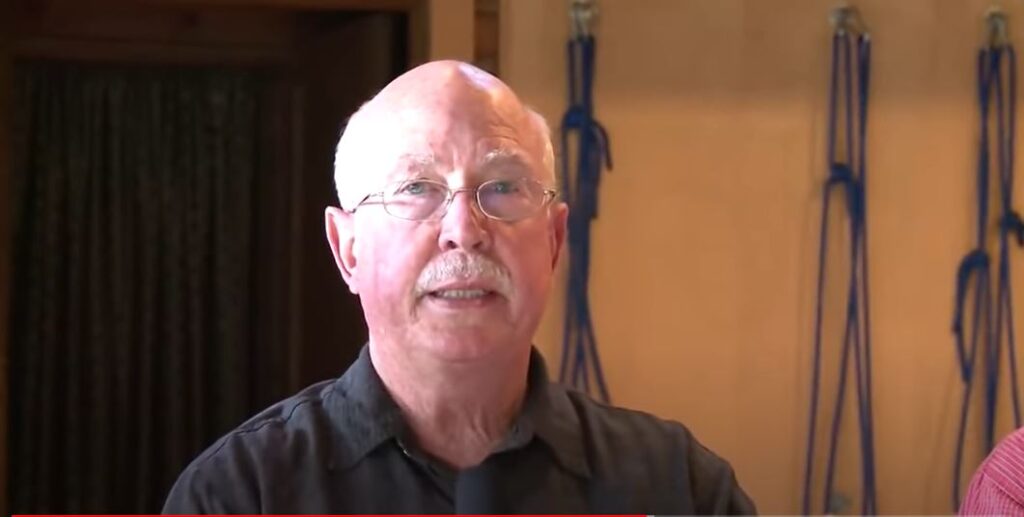
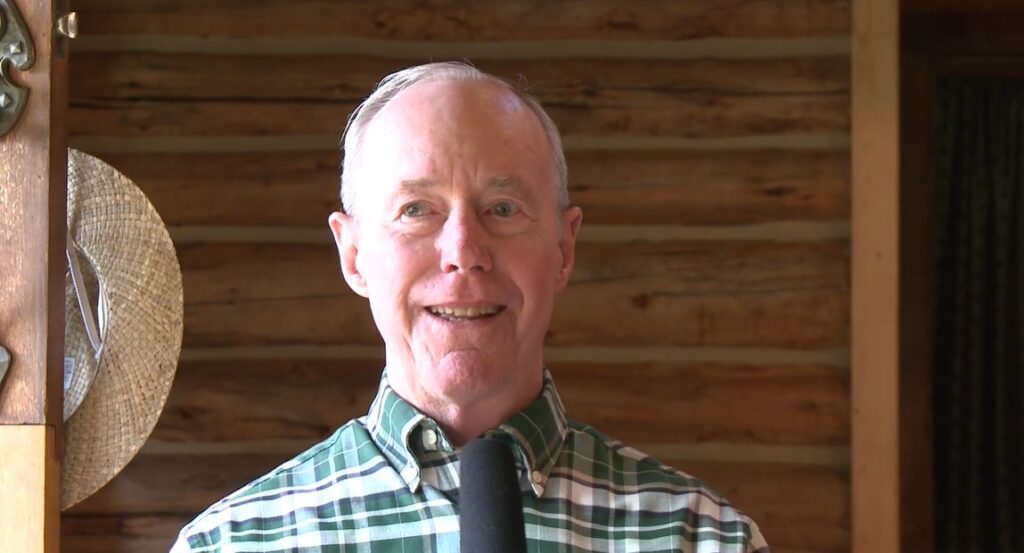
American Rita Daniele 1974
Rita Daniele has been a devotee of Sathya Sai Baba from 1968. She began working in Sri Sathya Sai Baba International Book Centre of America when she was 16 years old. Her first trip to India was with Elsie Cowan in 1974. That was the time during her first trip when Baba told her about her future husband Robert Daniele. They both have been working in Sri Sathya Sai Baba International Book Centre of America since Elsie Cowan established it in Baba’s name.
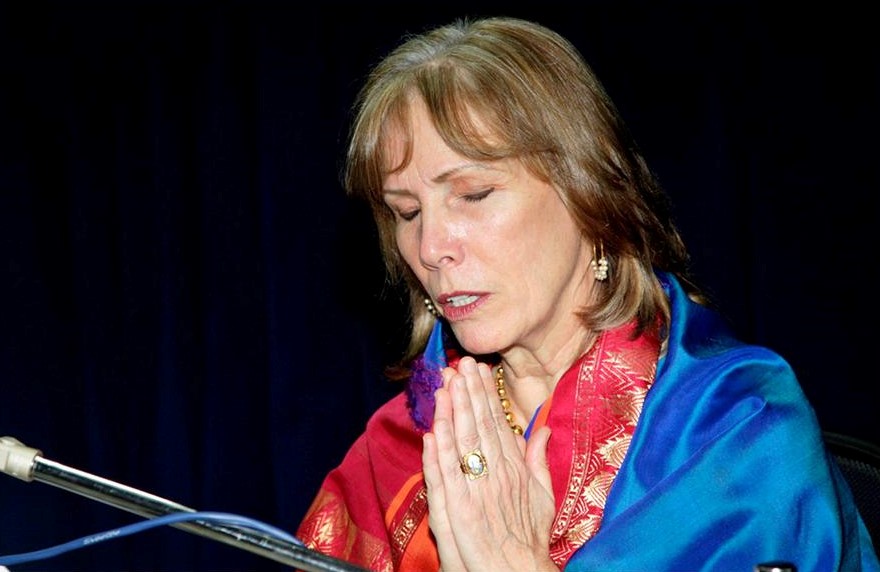
Raja Yoga teacher Helene Vreeland was among the first Westerners to travel to India to meet Sathya Sai Baba in the 1970s. She was also disciple and colleague of Indra Devi.
American Creta Schiermann 1970s


American Lee Hewlett 1975
Lee Hewlett arrived in in 1975 and stayed for five years.
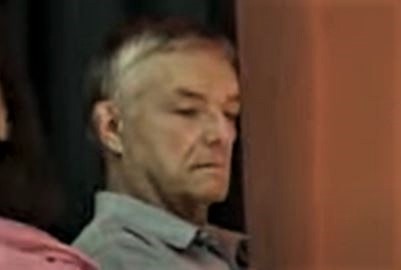
Lee is married to Indira Hewlett, who was just 6 years old when she heard of Baba for the first time in 1960, and made the first trip to Prasanthi Nilayam in early 1961 with her family.
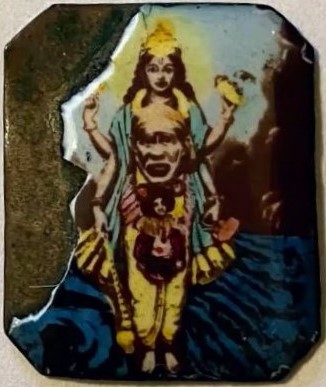
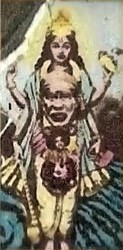
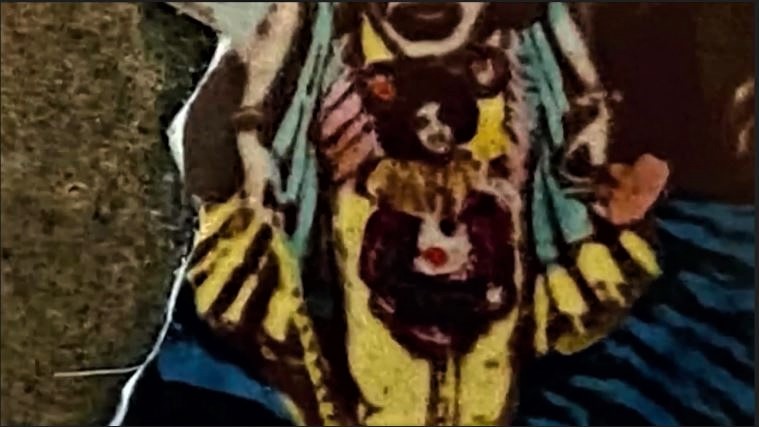
Listen to a talk by Mrs Indira and Mr Lee Hewlett given at the Flushing Sai Centre, New York on 26 June 2011.
https://www.radiosai.org/program/PlayNow.php
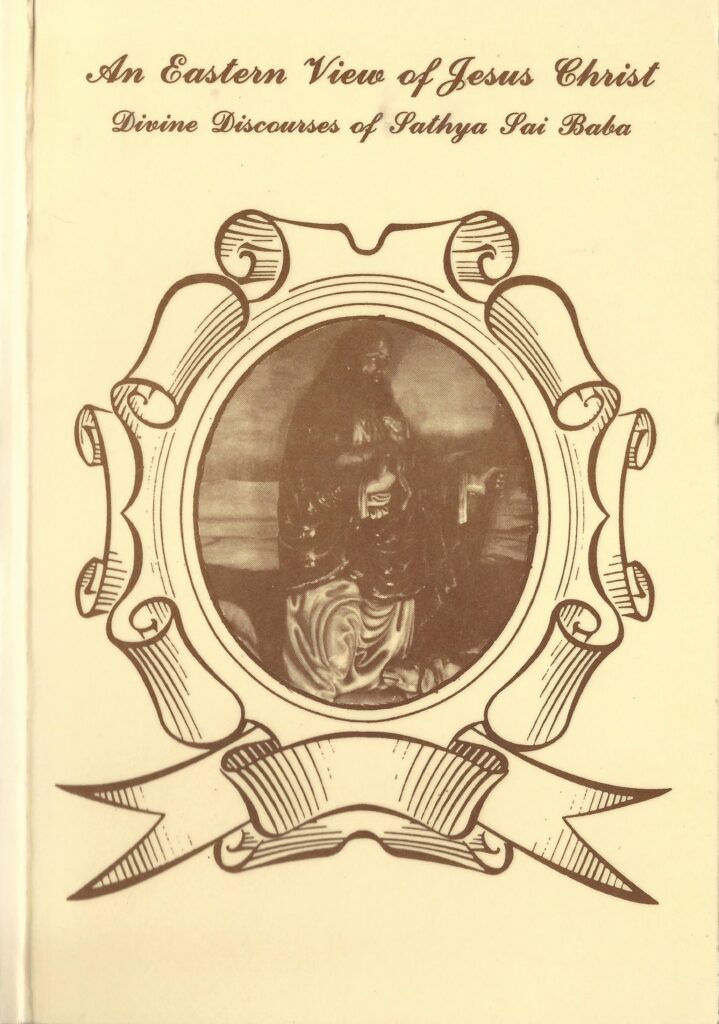
Americans Dr Michael and Gloria Goldstein 1975





American John Moore January 1975
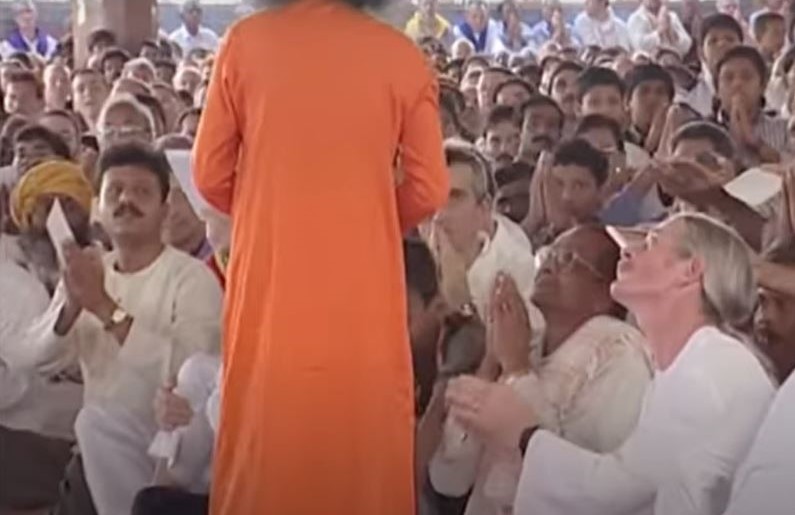
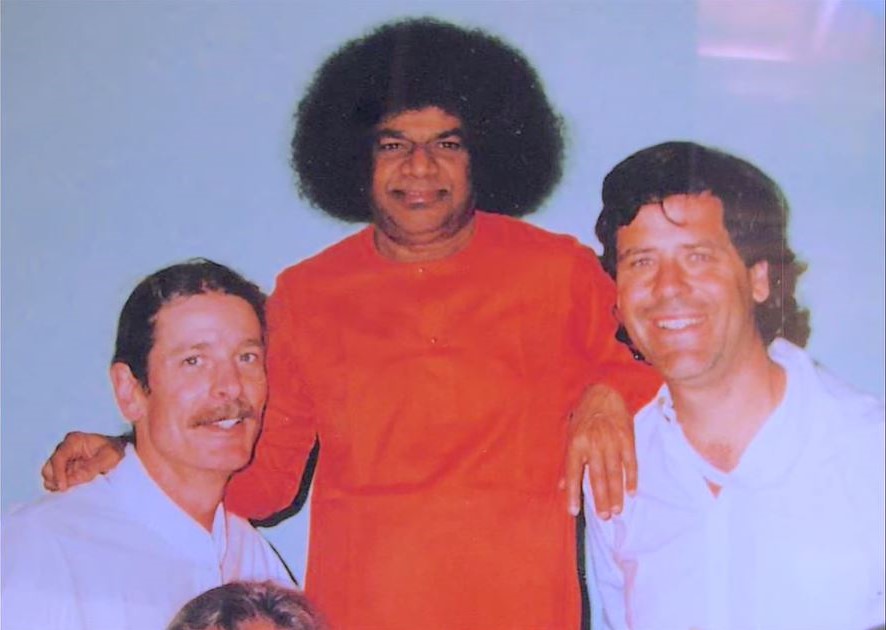
American Kitty February 1975
Americans Artesia August 1975
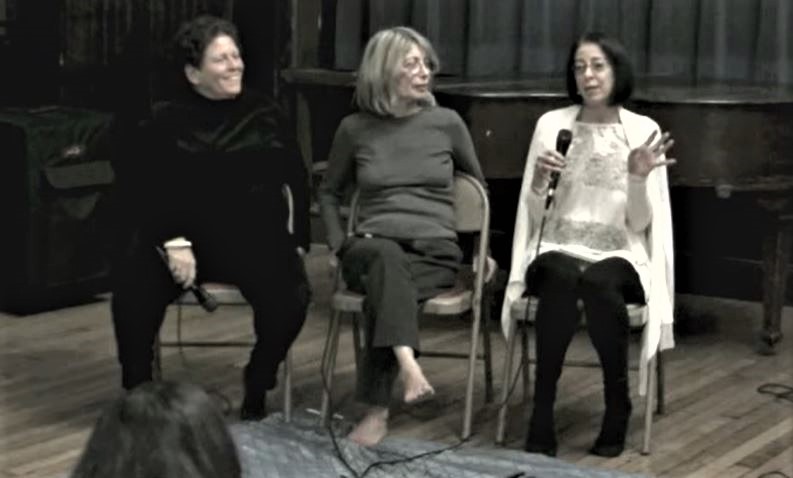
New Zealanders May, Dick and Verity 16th October, 1975 Prasanthi Nilayam
German Adi von Harder 6th November 1975 Prasanthi Nilayam
In autumn 1974, I spent several months in the Sri Aurobindo Ashram, Pondicherry. German friends who had been living in the ashram for ten years invited me. Though Mother had passed away in 1973, I felt very very near to her. For many years, She and Sri Aurobindo had been an inner Guru to me. Home again in Hamburg, in February 1975, I made up my mind to return to Pondicherry at the end of the year.
Meanwhile, a friend gave me the book Sai Baba, Man of Miracles by Murphet of Australia. She said, “Perhaps, you may see him in India.” I was strongly impressed by the book and I decided to see Sai Baba.
While at Pondicherry, I prayed to Sai Baba for help. An American lady who visited the ashram met me by accident. She told me that I could try to reach him from Bangalore. Very soon, a member of the ‘Servas’ organisation to which I belonged came to my room; we had not met for ten long years. She wrote to another member, Mr Sharma, in Bangalore, to receive me there and help me.
He was at Vallabh Niketan, Bangalore, and to my surprise I was told that Sai Baba devotees had their gatherings in that very place. So, I could join a party of devotees proceeding in a private bus, on November 6, to take part in the World Conference of Sai Baba Organisations as delegates, at Sai Baba’s own place.
Arriving at Puttaparthi, I was cordially received by a young man. He asked me, “Are you a delegate?” I replied, “Oh, No. I only got here by accident!” “Then, you must indeed be blessed,” he said.
In the afternoon, I was sitting in the darshan line. Sai Baba came out of the temple in a dark orange robe. Slowly he came nearer. “Oh! I should paint Him.” This wish came into me spontaneously. When He passed by, he gave me a deep look, smiled and inclined his head slightly towards me. Happiness flowed through me. I had found the living Guru for myself.
Since the place was filling up quite fast, I felt that I should not stay, since all available accommodation was reserved for delegates. But, the young man who had met me on arrival advised, “Not so quick. You have to seek and secure Baba’s permission to leave!” Half an hour later, he told me that Sai Baba wished me to stay for the Conference, and for his Birthday! My heart was full of joy and gratitude.
Happy at the turn of events, I sat on the darshan line. Swami came out, turned toward me and gave me vibhuti, created by a circular movement of his palm.
Someone told me of a lady devotee who was expected to arrive for the Conference as a delegate. I had read about her in the book by Murphet, and admired her as the first German lady who had experienced the Baba miracles on the sands of the river Chitravati. My room could well take another occupant and I prayed within myself to Sai Baba to give the place to her. Her name, I remembered, was Gabriella Steyer.
At 1600 hours that day, a lady came in, looked around and departed quickly. At breakfast the next morning, we sat next to each other. She told me, “I was asked to share your room; but, it seemed too damp for me. I found a place in the second floor. But, it was a terrible night for me. Some one was snoring and sneezing. I could not get a wink of sleep.”
We found that we both were talking German! I asked her, “Do you, perhaps, know Gabriella Steyer?” She replied, with a laugh, “Oh, yes. That’s me!” “Then,” I said, “Sai Baba sent you to my room, as I prayed to Him to do. Since you did not follow his response to my prayer, he gave you that terrible night.” Needless to say, she came into my room and we became good friends.
The World Conference! What a flood of happiness and spiritual inspiration! The Poornachandra Auditorium was filled up to the very last row! Many interesting and informative speeches! Unforgettable were the Bhajans sung by Baba. Also, his materialisations, such as a Japamala for an old Vedic scholar.
On his Birthday, Swami came round on a helicopter, circling the Stupa of all Religions, waving his white handkerchief at us – a new kind of Darshan!
After his Birthday, I decided to leave; so, I sat on the darshan line, and prayed to Swami within myself, “You have brought me to your presence in a quite unforeseen way. Please send me back now.” At once, I heard his voice, “Adi! Come in.”
I woke, as if from a dream. “Yes! Adi! Come in,” he repeated. So I did. He was giving interviews to many. He materialised a beautiful golden chain for a young Indian lady and gave it to her saying, “No depressions any more. This will guard you.” Then, Baba turned to me. At the end of a short talk, He told me that he had arranged a bus to take me and others to Bangalore!
On December 24, when I went to Whitefield to have darshan, Swami was leaving for Puttaparthi! He told me to follow Him. At 9 pm the taxi arrived and, through the clear star lit night with a shining white half-moon lying on his back, off we went to Puttaparthi.
I joined the morning Omkar for the first time; I was so taken by its strong vibration that I felt myself dropping in the ocean of God’s Love. In the afternoon, Baba spoke of Christ and on the true significance of his words which the world has missed.
Far far away from home, that day gave me all the happiness and bliss of Christmas. The warm hearted greetings from devotees made me feel at home.
On the last day of the year, Swami called me for an interview. “What do you want?” He asked. “Oh, quite a lot!” I replied. “But, my main wish is that you look at the watercolour landscapes I painted for your Birthday… Chitravati with the hills beyond, and the expanse of sand where you thrilled your devotees with miracles.” He looked at them and said, “Oh, I am very happy,” He went through the pages of my sketch book and all the little drawings. At this, I mustered enough courage to ask, “Would you allow me to paint you?” “Yes! I would be very happy. Do it when I am back at Whitefield.”
Then, he looked into my eyes and said, “But, first let me set right your physical condition. Your health is not quite what it ought to be.” Then, he materialised a little OM locket for me. For me it was the happiest day of the year; I felt overwhelmed with joy.
I am leaving for Germany, thinking of all the months spent in the presence and omnipresence of our beloved Swami. He has taught me many lessons, easy and hard. I know that I have changed a lot and I plan to change and develop further. I am taking with me the picture of Swami, in my sketch book as well as in my heart. I hope to accomplish my wish painting a fine picture for Him and becoming a fine picture for him, of purity, humility and love, which he will bless.
American Rosie 1976 Whitefield
Rosie arrives with her friend Kitty.
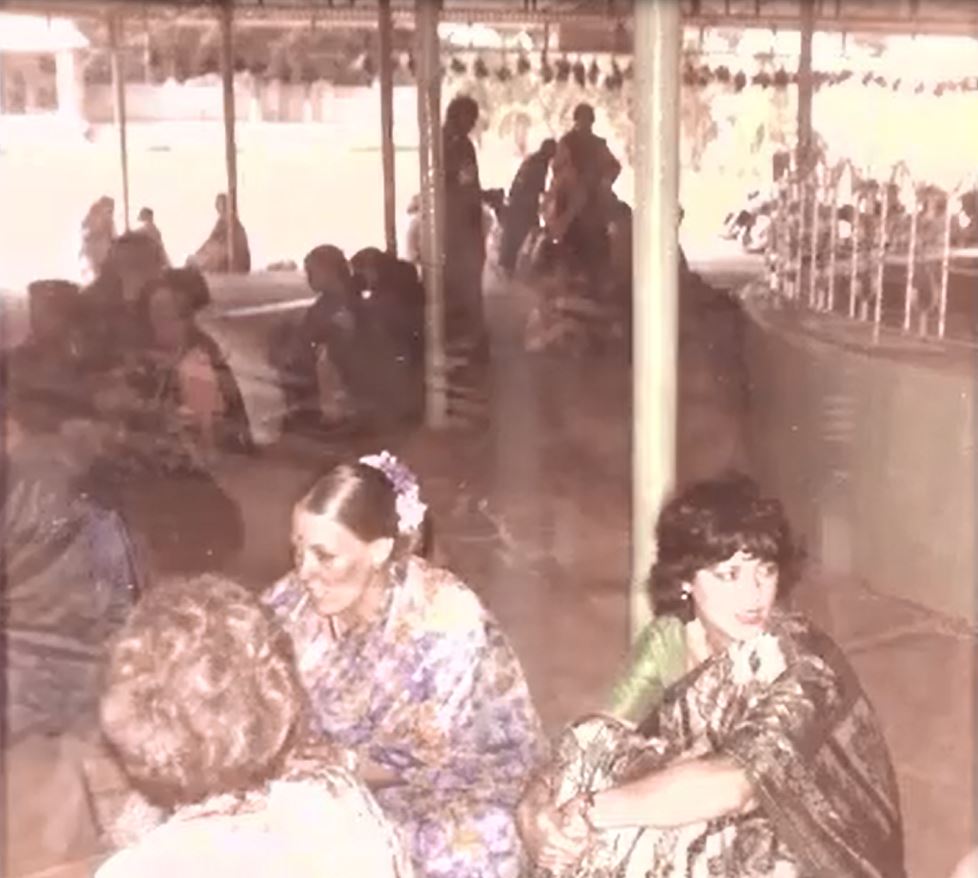
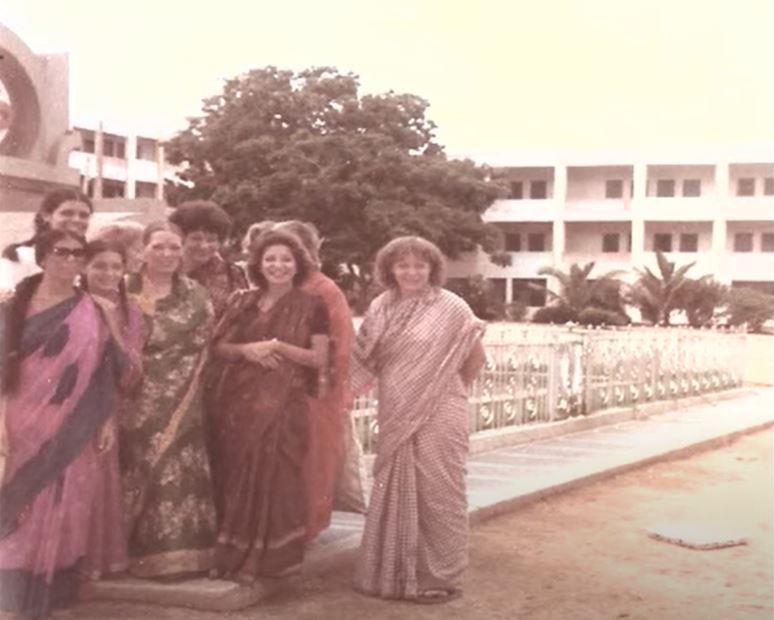

American Leni Matlin January 1976 Whitefield
Leni Matlin’s account of his time with Sathya Sai Baba is chronicled in his 2000 book One Soul’s Journey.
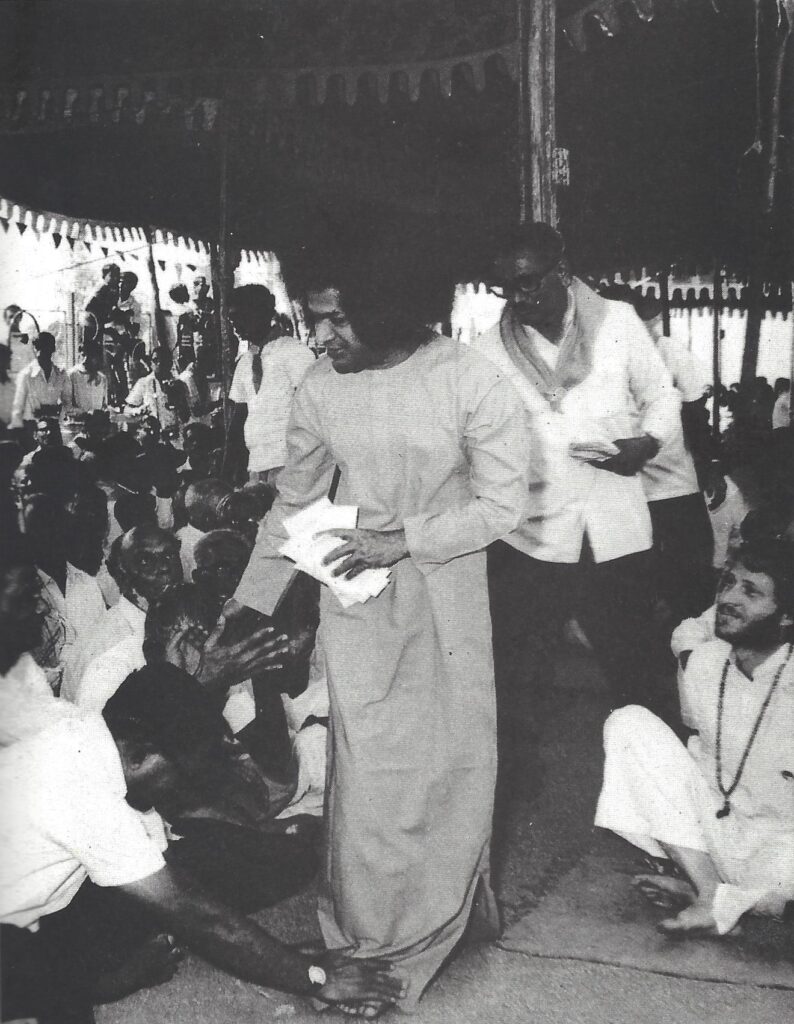
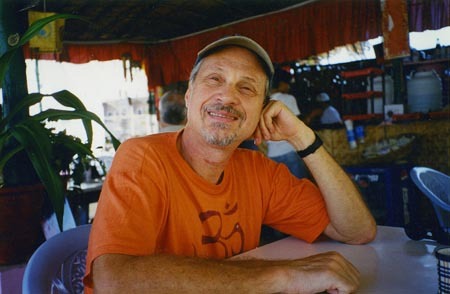
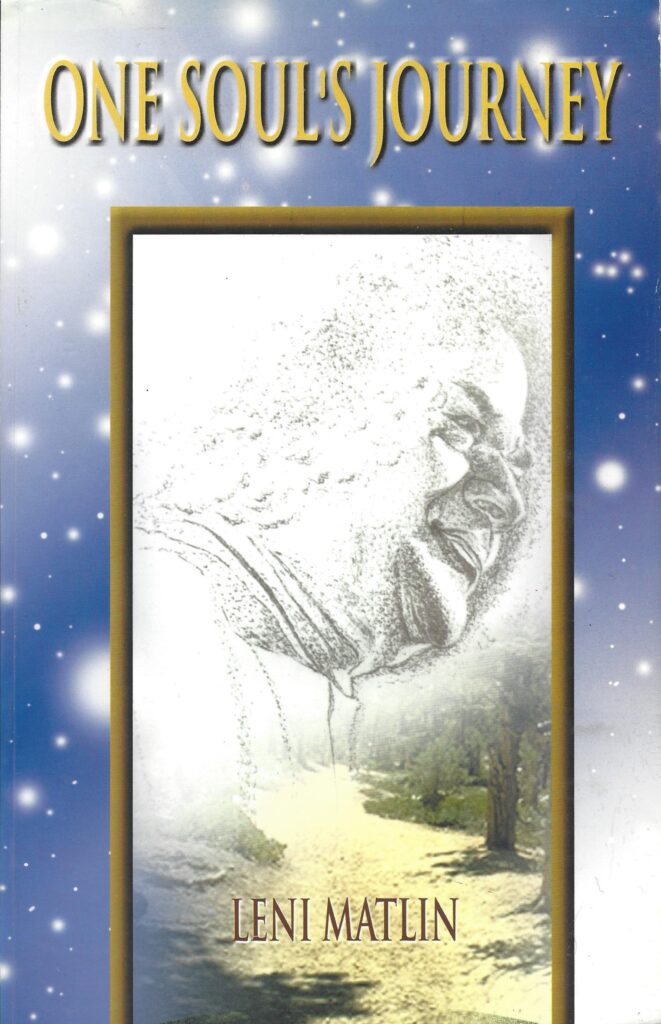
American Jack Lenchiner April 1976 Whitefield
Jack Lenchiner filmed this interview on the 24th of December 1978. Not good quality, however, it is believed to be the complete tape.
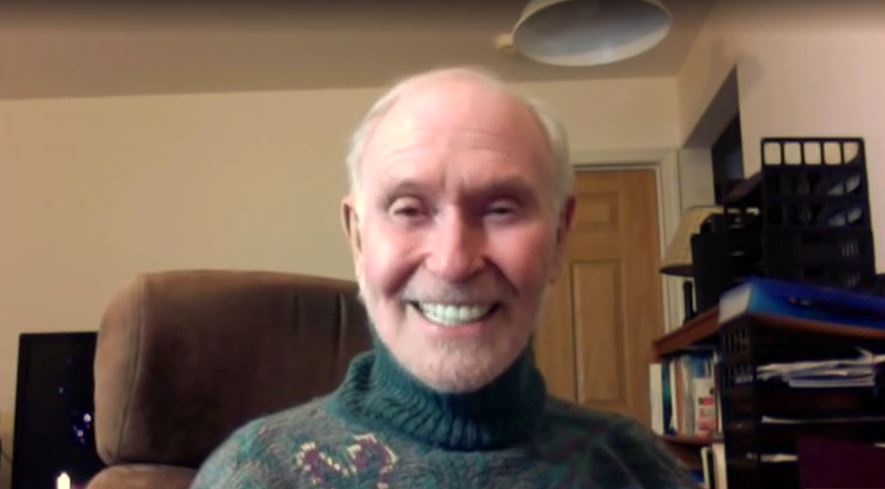
The next day Lenchiner films two weddings performed by Sathya Sai Baba.
American Gary Yoder May 1976 Dharmakshetra for a week and then on to Ootacamund
Gary made his first of six trips to India, in May of 1976, first spending a week near Sai Baba at the Dharmakshetra in Bombay, and then attended Sai Baba’s first Summer School at Ootacamund. Gary studied
Hatha Yoga with Indra Devi, taking her last teacher’s course in the summer of 1978.
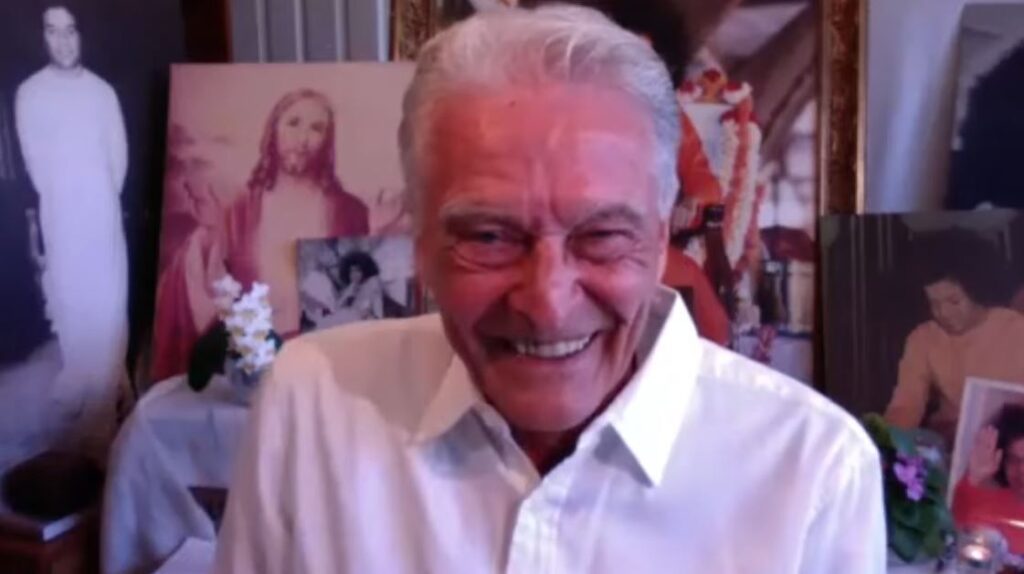
Hungarian born Suzie Parvati Reeves 1st September 1976 Prasanthi Nilayam
In this video interview by David Kashtan, Ms Suzie Parvati Reeves describes her spiritual journey to Sathya Sai Baba. Reading an article by Paul William Roberts (who is featured in this article Early Western devotees of Sathya Sai Baba from the 1970s to the 1980s) about him in the December 1975 issue of Vogue Magazine and she then decided to travel to India for a six month stay. She remained for 24 years. In the interview she also relates her traumatic memories as a child survivor of the Holocaust in her native Hungary. She presently lives in Israel.
Vogue Magazine – Canadian Edition, December 1975, a Canadian writer Paul William Roberts’ first-hand account of the 6-month experience with Sri Sathya Sai Baba at Puttaparthi in 1975 which was published in the world’s leading fashion magazine.
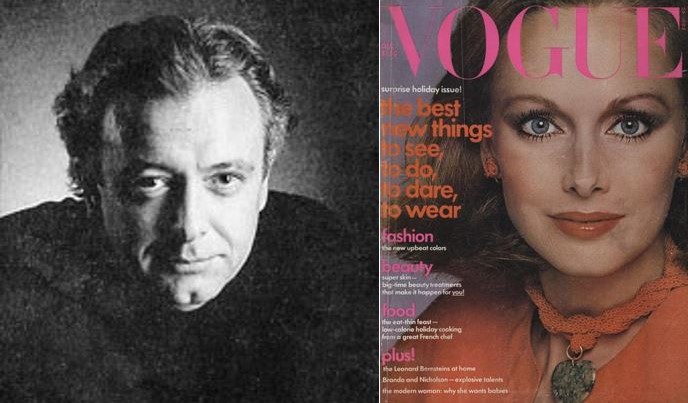

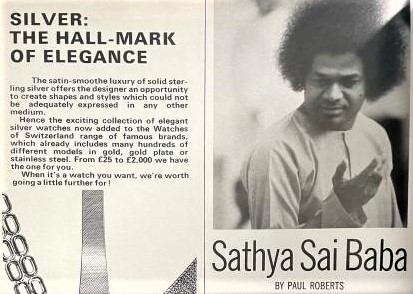
In the eyes of most Indians, it seems, there is only one reason for a westerner to go to Bangalore, despite it being by far the most pleasant city in India – Sathya Sai Baba, the most famous spiritual leader in India. As thirty airport taxi drivers battled for control of my luggage they all seemed to shriek with one accord, “Baba is in Puttaparthi, I take you now?”
After much heated contention a mean-looking, crapulous tough decided I would be hiring his cab and we went. Baba can generally be found either in Whitefield, more properly the Sri Sathya Sai Arts and Sciences College, ten miles from Bangalore, or in Puttaparthi, the village where he was born and where he has built an ashram (spiritual retreat), a hundred miles away in Andhra Pradesh. To this latter place we were now heading, a long bone-shaking, hair-raising ride on a crumbling ribbon of road through the parched, bleak plains of Karnataka and into the desolately beautiful hills of Andhra.
Four shattering hours (and a quantity of dead dogs) later, the driver declared that we had arrived. And where had we arrived? At a tiny stone and thatch village nestling in the brown cupped palm of enormous black-capped hills. Like any other little village in this remote part of the world, except that, as we screamed round a bend of trees, there was a vast walled enclosure within which could be seen tall concrete buildings and, unusual for such a dry place, a considerable number of healthy-looking trees. As a mark of respect, perhaps, the driver slowed down as we entered the ashram, which is known as “Prasanthi,” of the highest peace (coincidently the meaning of “Jerusalem”). At a tiny office, located behind a monstrous hangar-like building which bore the sign “Poornachandra” (full moon), I was welcomed by a chubby, genial little Indian and given the keys to a room.
“How much will that be?” I asked.
The little man looked offended. “Baba takes no money,” he said.
“Not even a donation?”
“Nothing.”
I wanted to point out that I was a sceptic and would that make any difference, but I resisted. My room was utterly bare with a tap-and-bucket bathroom and bucket-flushing loo, which was more than expected. After settling in and rigging up, by ingenious means, my mosquito net, I walked around the ashram. The large concrete buildings, which all contained rooms like mine, circled an inner enclosure, marked by a small stone wall, which was dominated by a white-domed temple with an upper and lower veranda. The upper veranda had an extraordinary pair of huge silver doors, emblazoned with the insignia of the world’s major religions, and the entire building was covered with moulded images which ranged from elephants to what looked like flying armadillos. Seated on the sandy ground in front of this building, women to the right, men to the left, were about fifty people, mostly Indians, waiting for darshan (when Baba comes out).
At the entrance to this area a sign claimed “You are in the Light, then the Light is in You”; another told me to remove my shoes. I went in and sat down next to a Western-looking youth.
“Sai Ram,” he said. It was the common greeting here, linking Baba’s name to that of Ram (God). I was told that Baba would soon appear and that I should wait. Half a shifting, scratching, sweating hour passed and suddenly a strange hush fell over the already silent crowd. Everyone began looking towards the low pillared veranda of the temple where a small figure in a long orange kaftan-like robe, with a shock of frizzy hair, was now standing. Baba stepped out into the sunlight, the crowd raised their pressed palms in salute, a gesture meaning “You and I are one”. He stood gazing intently at the women’s side, occasionally shaking his head slowly and (apparently) writing in the air
An odd thing happened to me: I felt at once absurdly happy, unable to suppress a lunatic grin, whilst at the same time sure that, unaccountably, was about to burst into tears. Baba began to walk towards the women, his robe so long it hid his feet, yet he moved with extraordinary grace and elegance, stooping to talk, taking notes from some, and for one, suddenly revolving his right hand in a curious polishing motion and producing, seemingly from nowhere, a small quantity of whitish powder which he placed in her outstretched palms. She looked thrilled.
This was the materialisation of vibhuti I’d heard so much about. (Vibhuti is a sacred ash, “the purest substance that has been through the fire.”) Dark suspicion clouded my mind: it must be a trick, he must hide it up his sleeve, it must be explicable. But no, here he was, a few yards from me, doing it again and, no matter how hard I looked, or was to look in the future, there was no explanation-the polishing motion and the spurt of vibhuti. Yet I had my doubts.
When he reached me he stood for a few moments, gazing at me with a strange half-smiling puzzled expression and kind bottomless eyes. I felt a great mental peace and a rushing sense of release in my heart and, for some reason, tears rolled down my cheeks. When it was all over I think I probably put it down to hypnosis and vigorously resumed being a sceptic and remained one for a long time. But, in the words of Dr. S. Bhagavantam, nuclear physicist and once adviser to the Indian Government, “After three or four years of doubt and questioning I have come to accept Baba’s actions as those that transcend the known laws of science. Though they have also added to our awareness of what we do not know.”
The Indian definition of a spiritual master falls into two categories: that of the consciousness of man rising to godhood, and that of the divine consciousness descending into manhood. Baba is believed to be in this latter category. He is now fifty and, since his early childhood, has performed every miracle ever attributed to Christ and many more. I witnessed many such “miracles” over the course of a six month stay and am no longer in a position to doubt their authenticity. But, as he continually says himself, miracles are not important. “The real miracle,” as everyone kept telling me when I first arrived, “is the love he sows in your heart.”
In the Hindu system of things, we are now in the Kali Yuga, the last and darkest of the four great cyclical ages, when spirit has reached the nadir of its immersion in matter and is due to rise again. Baba’s teachings primarily emphasise the need for fostering the four vedic virtues – Sathya (Truth), Dharma (Right Conduct), Shanti (Peace), Prema (Love) that man may purify his karmas (burden of actions good and bad from this and previous lives) and free himself from ignorance and, ultimately, the wheel of birth and rebirth. He claims that the miracles or leelas (divine play) are performed in order to attract people to him so that they may come to understand his real teaching – “I give you what you want in the hope that you will eventually want what I want to give you.” And it was true that, after a while, I realised that I was not there because I was impressed with miracles; I was there because, in Baba’s teachings and within the strict routine of ashram life, I had come to understand something fundamental about myself, that I believed in God, indeed had to believe for anything to make sense. But, like many others, Baba often points out that you do not have to believe, you can experience directly through meditation.
What is meditation? More outright rubbish has been written about the subject than about any other in the past few years. The simple theory is that man wants to be happy yet seeks this happiness in transient things which by their very nature make him unhappy. Meditation is a gradual pulling away of the mental energies from the exterior, sensual world and a focussing of them on God, in some form, or on the mind itself, so that that which sees, observes itself. The mind is pictured as a lake which is constantly rippled by desires; when the desires are quelled the surface becomes smooth and reflects, uninterruptedly, the heavens. The technique itself falls, broadly speaking, into two attitudes – that of bhakti, the devotional aspect, where the object of meditation is not the self but the guru, God or Christ, and the aim is to merge, as lover and beloved, into one; and that of jnana or advaita where the idea of self is expanded to encompass everything, and God, self and universe are one. The results are identical, so they say. Like any other worthwhile activity it requires years of diligent practice before any degree of mastery can be attained. That, I suspect, Is why Baba seems more intent on people being good-combating lust, anger, greed, hatred, envy before they meditate seriously, for without morality there is no real meditation.
I was at Prasanthi Nilayam for four months before I managed to get a private interview with Baba. People have waited much longer without success. What is it that keeps them there? Whether one accepts him as a divine incarnation or not, it cannot be denied that there is something about his presence which makes one willing to believe he might be. There is something beyond the miracles and his bizarre appearance (though seemingly trendsetting to us, he has looked and dressed the same way for thirty-five years), a gentleness, a charisma and a grace that is, simply, unearthly. Even two hard-headed para-psychologists I met, Drs Osis and Haraldsson from the American Society for Psychical Research, who were solely interested in proof of miracles (and found it to their satisfaction), had to admit there was something else here that could not be measured and analysed-the overwhelming devotion Baba seemed to inspire in all who came, statesman and peasant alike. The politicians who fly from Delhi and the poor farmers who walk from Rajasthan, even the hippies and ageing eccentrics from California, know that in Baba’s eyes they are worth only the extent of their devotion to God. It has a humbling effect.
As I sat with a small group of pious Indians in Baba’s interview room, lurid scenes of past depravities wafted, in Cinemascope, through my head. He came in smiling like everybody’s mother and father and, immediately, about a foot from my nose, began waving his right hand, from which, or rather from a hole in space, came spinning and sparkling a large rosary of coloured stones. When it had fully appeared (suspend your disbelief) he held it up for all to see and began explaining that each stone had some significance which I now forget, then he placed it over the head of an old lady who was so overcome with delight that she had to be wheeled into a corner to calm down. Several more things were “made” for other people, then Baba began taking us separately into another room.
It was a very tiny room and when I finally stood there alone, all the doubts and questions in my mind had vanished and, somehow, I knew (and still know) that he was everything people believed him to be. I was overwhelmed with an intense feeling of joy and peace that was to last four or five days. Ananda the Indians call it – bliss. Baba, the remote and powerful figure I had watched in awe for months, hugged me like a long lost friend and, in a surpassingly loving way, began to tell me, I suppose, my worst faults, indeed he told me things no one could have possibly known, answered every question I would have leaned forward asked, and gave advice which I still treasure. Then, in front of my goggling eyes, he materialised a white oil on the palm of his hand and proceeded to rub it into my chest, repeating the process when he had used up the first batch of oil, offering no explanation for the action. I hardly said a word throughout the whole interview yet I emerged knowing I had been given what most needed-love and reassurance. I felt, and still feel, inexplicably closer to him than to anyone in the world.
I stayed on at Prasanthi Nilayam for two more months until the Shivarathri festival. Shivarathri, as Baba explained, means that man must transform by sadhana (spiritual work) the rathri into sivam, the night of darkness and fear, doubt and delusion, Into the day of wisdom, courage, the certainty of faith and realisation. It is one of the two major Hindu festivals and over a hundred thousand people came to the ashram, primarily to see the Lingodbhava – literally “the pouring forth of the lingam.” Lingam is the ellipsoid symbol ubiquitous in India, it signifies “that in which all things merge and out of which all things emerge.”
Each year at this festival Baba produces through his mouth a lingam which is said to grow in his stomach over a period of weeks. The act itself symbolises nothing less than the very process of creation – the universe emerging from eternity into time – and as such is seen to be a confirmation of Baba’s divinity. All day long bhajans (chanted hymns) were sung in the enormous Poornachandra hall by the twenty thousand or so folk who managed to squeeze in; the rest sat outside. In the evening Baba gave a discourse on the need to control the mind. After about forty minutes he broke off mid sentence and sat back in his chair as if in pain. I was sitting a few yards away and was somewhat disturbed by this. Immediately the bhajans were resumed and Baba leaned back and forth, gasping yet smiling. It struck me as an intensely private act, like watching a woman in labour. After several minutes of this he leaned forward sharply and opened his mouth. I saw what can only be described as a brilliant shaft of light followed by a large glittering object shooting out. He caught the object and sat back holding it up, smiling like a proud mother. Later he walked through the crowd holding the lingam and I saw it clearly – it was about twice the size of a large hen’s egg and of translucent green crystal, yet inside it there appeared to be something glowing brightly, as if alive it pulsed and sparkled. I have never seen anything like it. I could feel my hair standing on end and kept thinking that I had just witnessed something so extraordinary I could not even begin to grasp its significance. The lingam was finally placed on a stand so that all could see it, then Baba disappeared and everyone sat singing bhajans through the night.
I would not have believed any of this last year either. Baba is essentially a personal experience, not something that can be written or even talked about. Most of the devotees I spoke to regard him as an embodiment of love, and you cannot define that. In spite of the hullabaloo around him his essence is simplicity and unpretentiousness; he shuns all publicity and is, in a curious way, totally alone, without any real organisation. When I was told that he accepted no gifts or donations it was true – during the six rent-free months I spent in the ashram no one ever approached the topic. The only money that changed hands was for food and his books, at cost price; he has been known to give people money to help them stay there. He vociferously disapproves of the gurus who come west and make fortunes. He has travelled out of India once himself, to Uganda, where he told the Asians to leave before Amin did. I met a number who took his advice and saved everything. Although he now has thousands of followers in America there are no plans for travelling to the west. But, since he has said he will live to be ninety four, it must remain a possibility.
More than anything, for me, he is someone who can say, with Christ, “I am the Way, I am the Truth, I am the Life;” he is not a book of law, he is a living example, his life is his message; and if asked now what my religion was I would probably reply “Sal Baba.” And what would that mean? The answer is perhaps to be found in the simplicity of his own words to me:
“The sun is up here in the sky; it is the passing cloud that hides him from your vision. The sensory world is the cloud that hides the Atma (Spirit), ever shining in the firmament of your heart. The same mind that gathers the clouds can also disperse them in an instant: for it is as the wind which collects them from all quarters and renders the sky dark; and the next moment, changing direction, sends them in a scurry to wherever they came from. Train the mind to disperse the clouds, not to gather them.”
“The individual has come to birth in order to reveal the splendour of the spark of Godhead which it is. The body is the wick of the lamp, yearning for God is the oil which feeds the flame. But like the rat which, attracted by the strong smelling cheap stuff inside the trap, neglects all other articles of food in the granary and falls prey to its foolishness, man too neglects his real sustenance and wastes his life in pursuit of mortal riches.”
https://www.sathyasai.org/inspiring-stories/sathya-sai-baba-vogue-magazine
American Robert Daniele 1976
In 1976, Robert made his first trip to India for three months and mostly stayed in Whitefield, Bangalore during that time. In 1977, Baba arranged his marriage to Rita, and then later performed the marriage ceremony in 1978. He has been a active member of Sri Sathya Sai Baba International Book Centre of America since 1977.
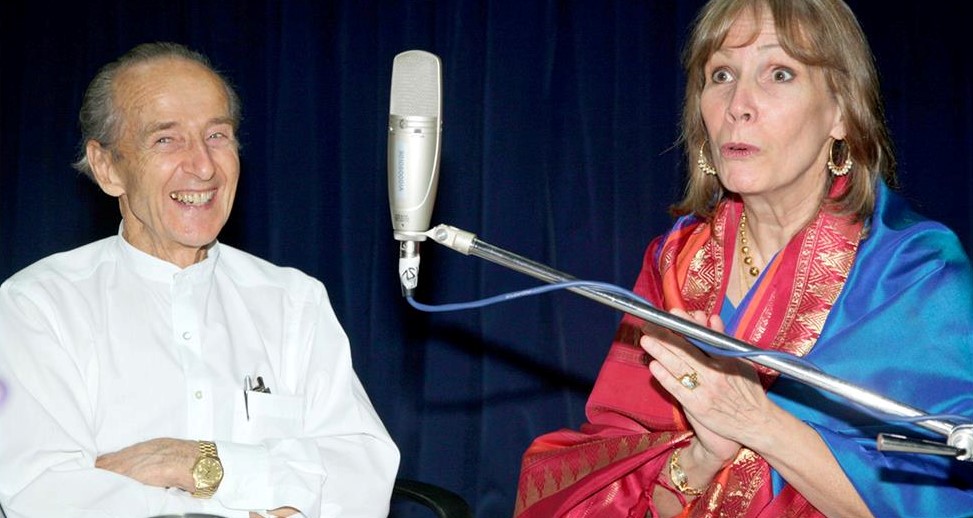
Italians Antonio and Sylvie Craxi 1976 Whitefield
Economist Antonio Craxi (1936 – 2017) was the younger brother of former Prime Minister Bettino Craxi (1934 – 2000). Craxi, with his second wife, the former French model Sylvie, lived in Prasanthi Nilayam from 1978, six months after their daughter Ananda was born, until 1986 before returning to Italy to his estate in Pontevecchio di Magenta.
A Bocconi University graduate, Antonio Craxi caused a sensation when with his second wife Sylvie he became a follower of Sathya Sai Baba by moving from Pontevecchio di Magenta to India, definitively after the death of their eldest son Andrea. The children born after Andrea were Bettina, Sandra, Ananda and Victory, who joined the two children from their first marriage. The Craxi children speak Sanskrit like Italian.
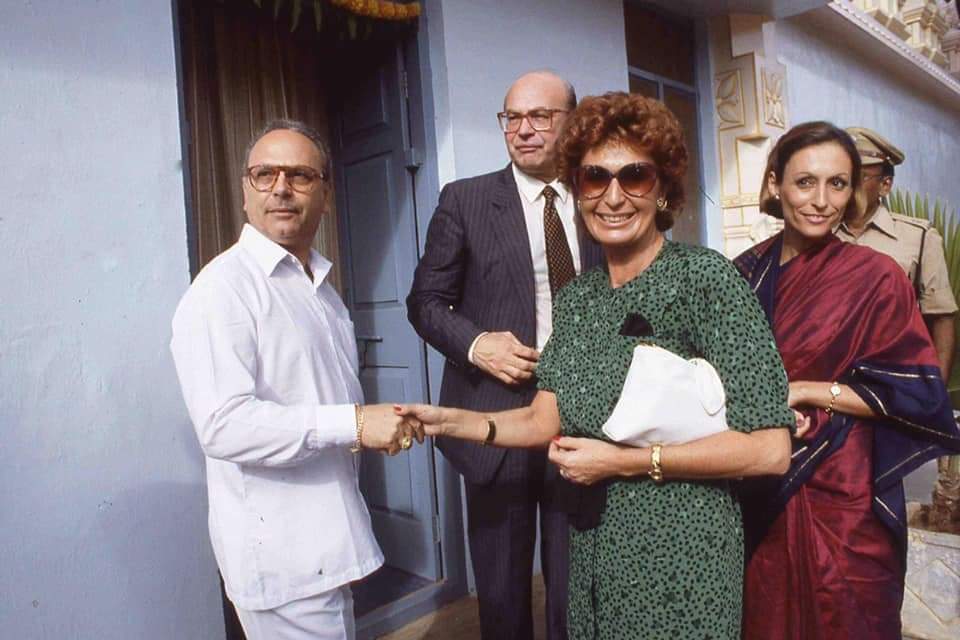
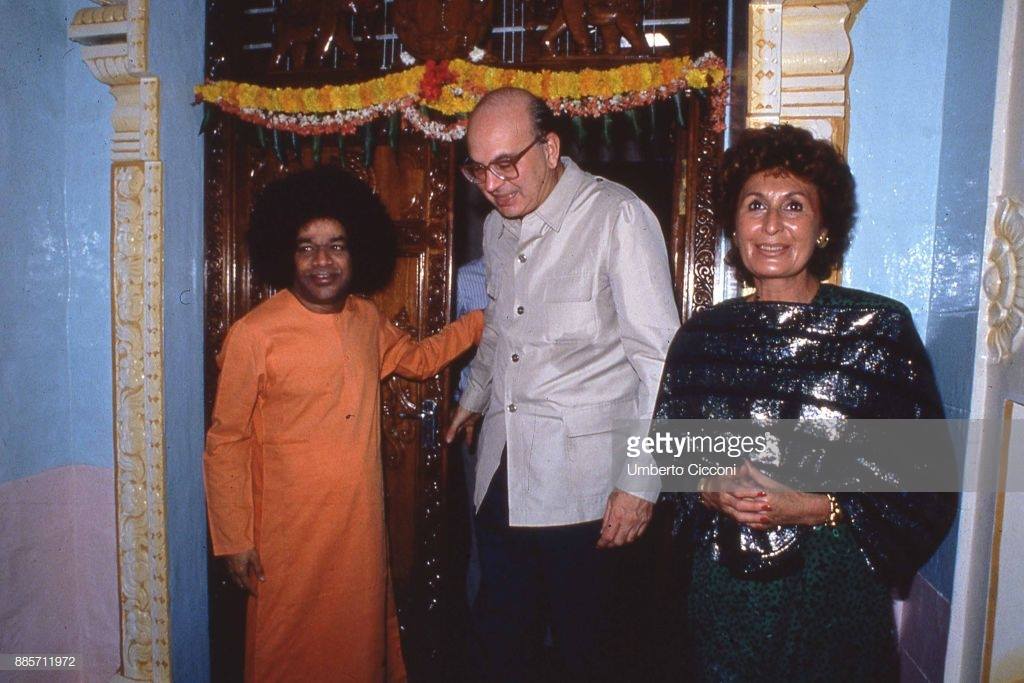
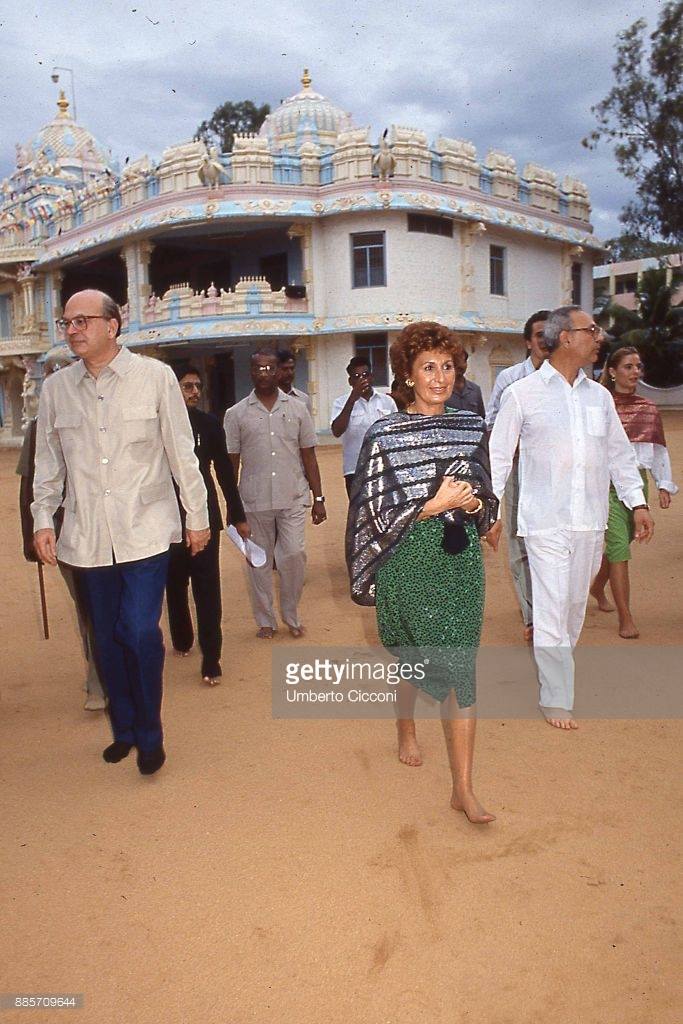
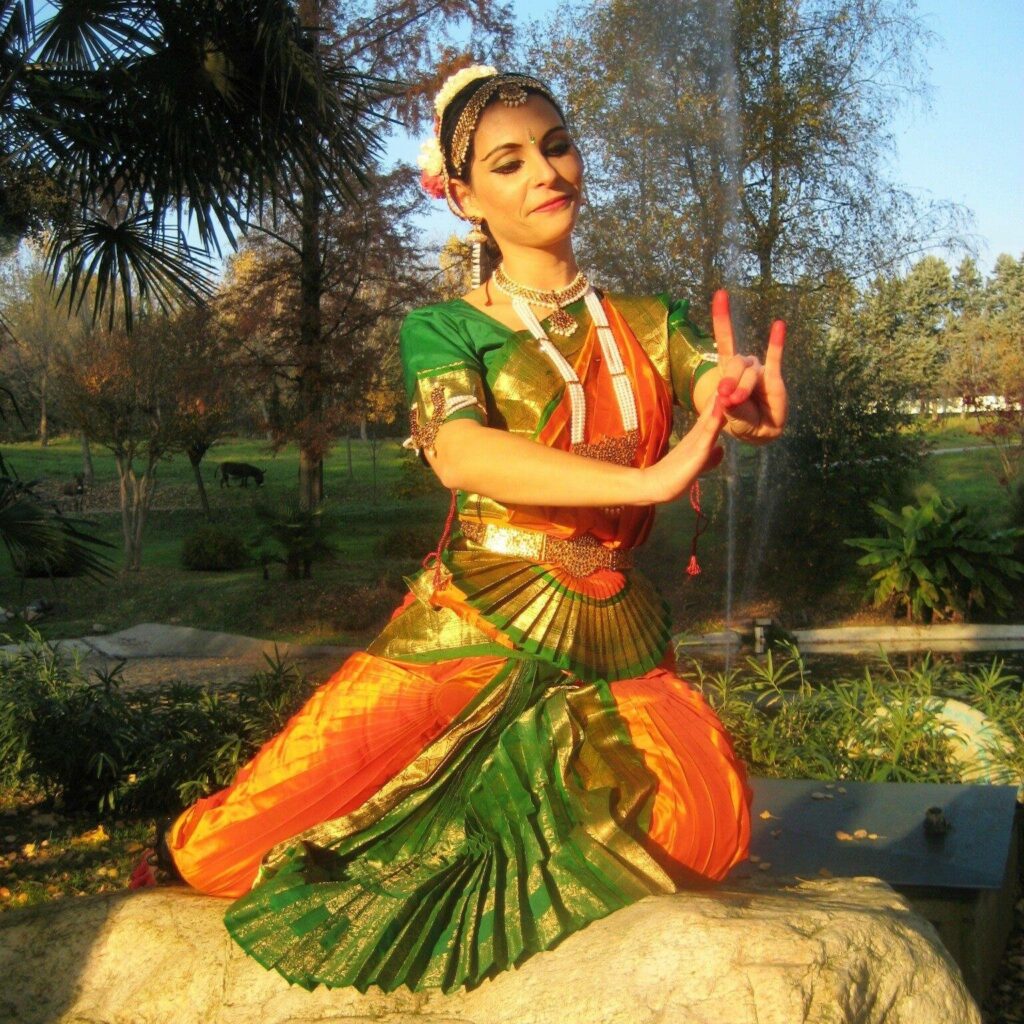

American Patricia Kelly 1976
Patricia Kelly (1933 – 2013) from Santa Barbara was a concert violinist as a teenager, and played until she was 35 years old. She was a seeker of truth. When her boys were very young, 4, 3 and 2, she began to take yoga classes and learned to meditate with Helen Vreeland. It was then that she learned about Sri Sathya Sai Baba, and took him as her spiritual guru. She took her first trip to India at the age of 43 with her son, Sean, who was age 10 at the time. She returned to India several more times, including two trips with her son Rob. Patty always considered India to be a magnificent and beautiful place, a place where yogis and other holy ones had divined the path to enlightenment.
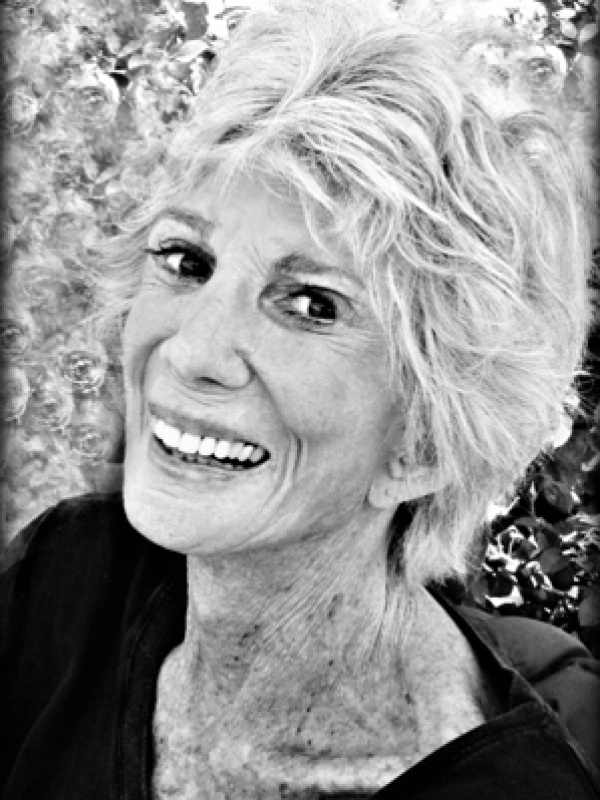
Ravi Shankar and George Harrison December 1976 at the Dharmakshetra Ashram in Bombay
Ravi Shankar and George Harrison receive the darshan of Sathya Sai Baba in December 1976 at the Dharmakshetra Ashram in Bombay. With the first leg of his “33 1/3” promo tour completed, George now headed off to the Seychelles islands for a couple of days and then onto Bombay, India to spend a month with Ravi Shankar and his family. Whilst there he attended the wedding of Ravi Shankar’s niece and also the spiritual festival of the Kumbh Mela in Benares that is held once every twenty years. This is an excerpt from the film ‘In The Light Of Prophecy’ by Richard and Janet Bock (who had earlier in 1972, introduced Ravi Shankar to Sathya Sai Baba).
A few days later George and Olivia went to see Baba at the Whitefield ashram, Brindavan, near Bangalore for a few days. George was seen on the ashram for a couple of days by devotees. They were staying at the Hotel Ashoka in Bangalore and commuting to the ashram each day for darshan.
“My Sweet Lord” from the triple album All Things Must Pass by George Harrison, was released on the 23rd of November 1970, Sathya Sai Baba’s birthday.
In 1970 John Lennon and Yoko Ono visited the ashram, Indra Devi was given the job of chaperoning them while there. Devi says “I remember introducing John Lennon to Sathya Sai Baba and called him ‘Lemmon’ by mistake. I confused him with a movie star. That shows you how much I know about these things.”
Yoko Ono said Lennon and she had visited the ashram during their visit to India.
“We had been in Bombay for a couple of nights and gone on all the way to the mountains to the camp of Sai Baba. it was an incredible experience….We felt it was important to sit in his lecture and John insisted that we sit together despite women and men not being permitted to sit together.”
Her first trip to India in the late Sixties, ended early. “The four boys (The Beatles) had so much fun during an earlier trip that John thought it would be a good idea to come back. We went up to the (Sathya) Sai Baba camp near Mumbai, but they wouldn’t let the men and women sit together. I like to be honest about everything. Perhaps, it was rude, but John and I insisted on being together, and he couldn’t keep his hands off me. In the end, they asked us to leave and we went back.”
Author Paul Robert Williams recounts in his book Empire of the Soul that during his stay in Prasanthi Nilayam in 1974 – “One day John Lennon and Yoko Ono were sitting in the sand with the rest of us, next day it was the president of India, a producer of the James Bond films, the photographer David Bailey, or some high-ranking Italian politician. Yet there was only one star in that small world, and he seemed unimpressed by those who walked tall in the world beyond, often paying more attention to some ragged group of peasants who had walked miles for his blessing than to those who had arrived in air-conditioned limousines. Ignored, John and Yoko left in a huff.”
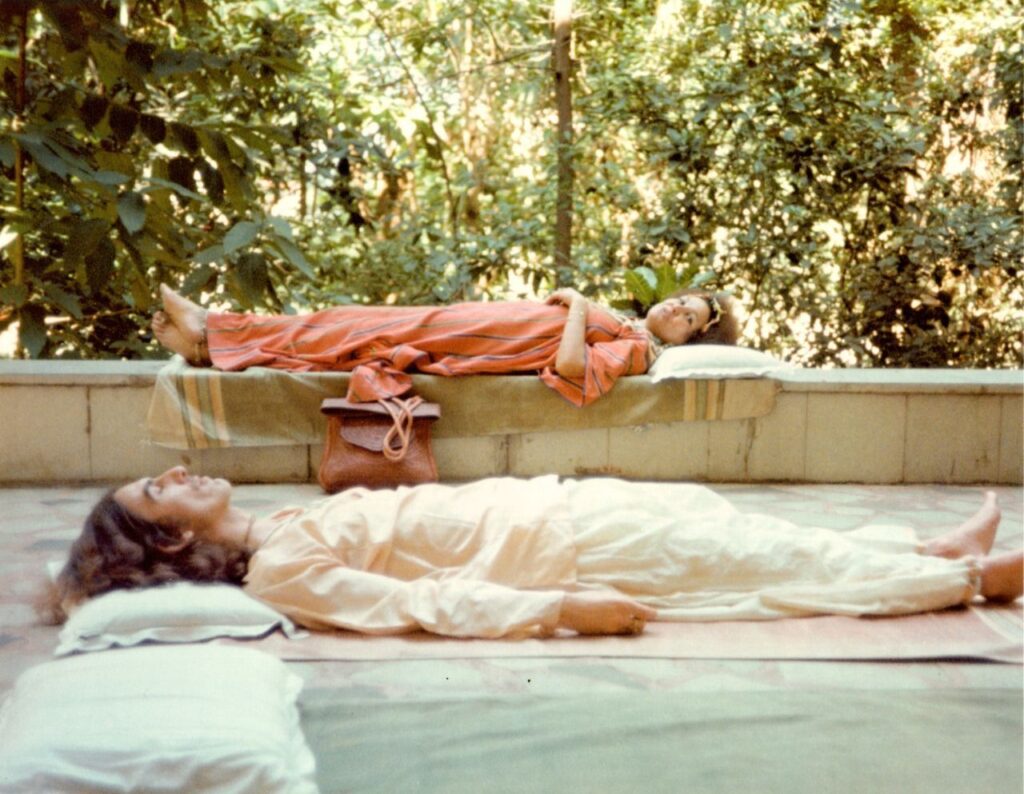
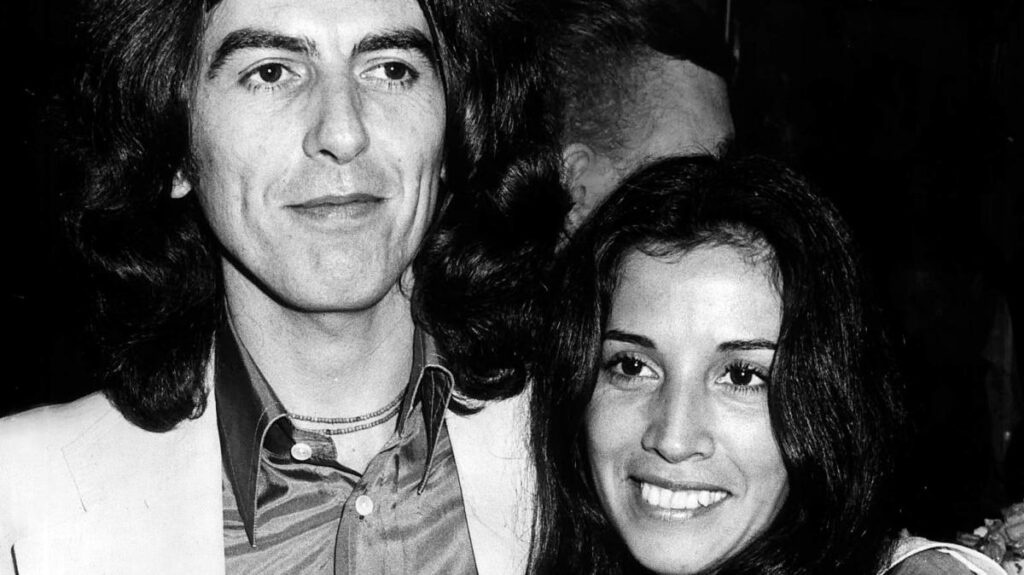
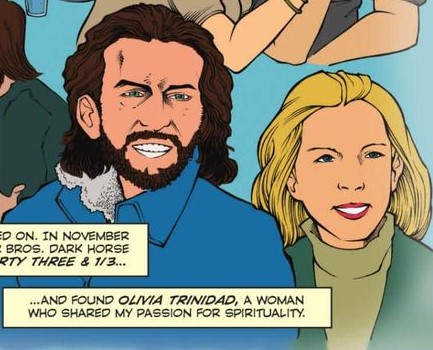
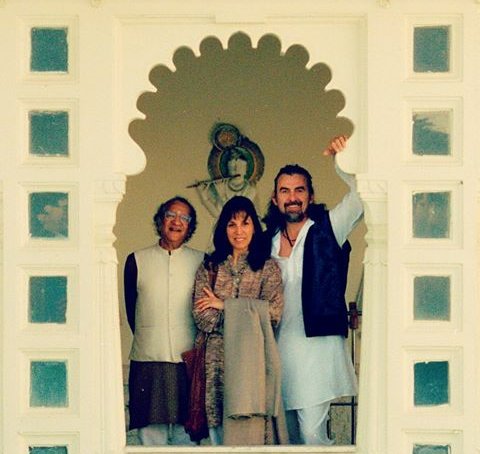
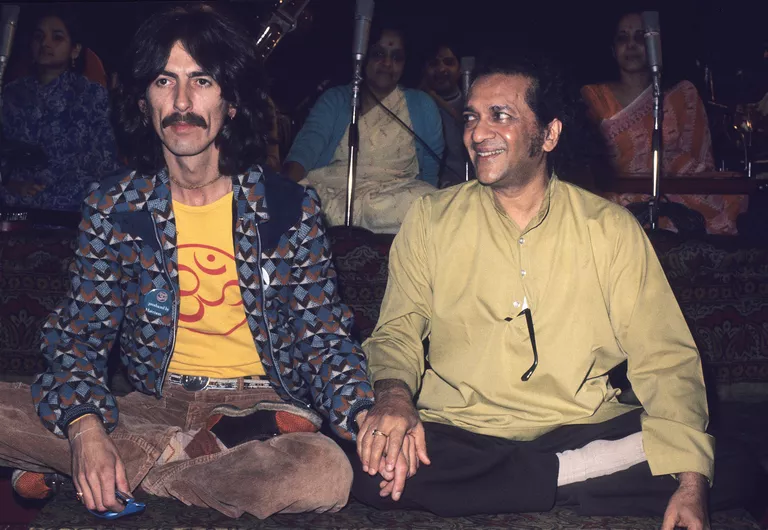
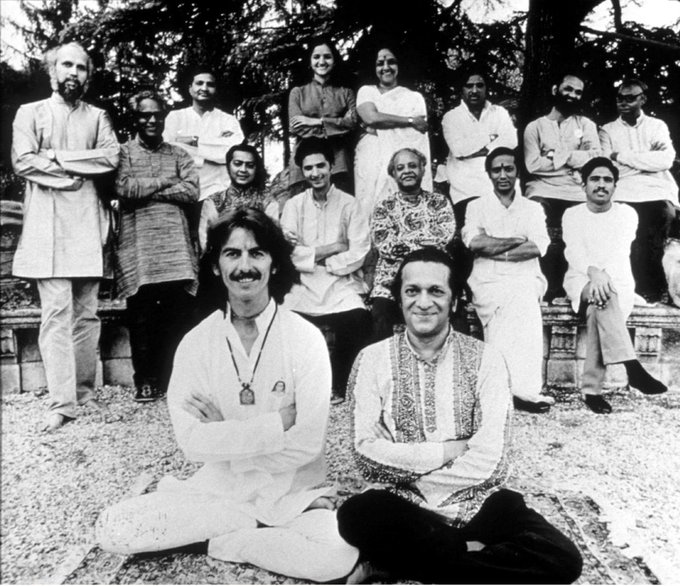
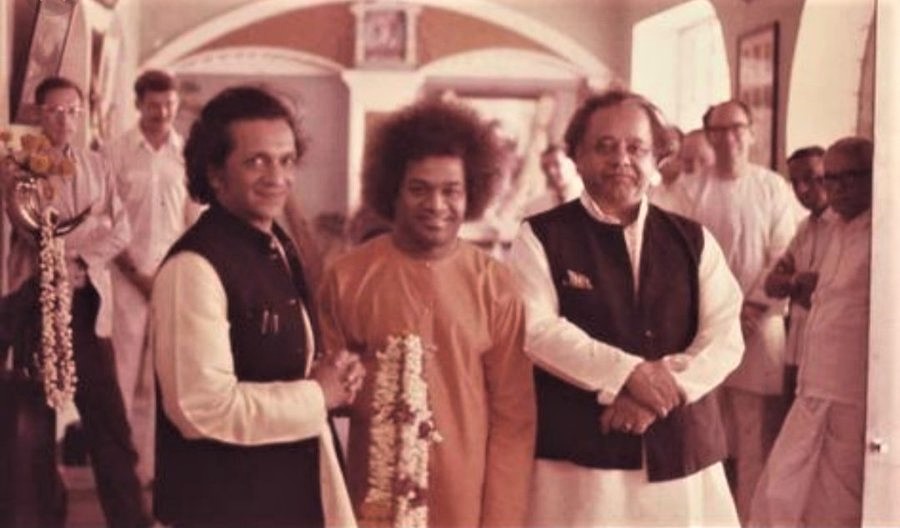
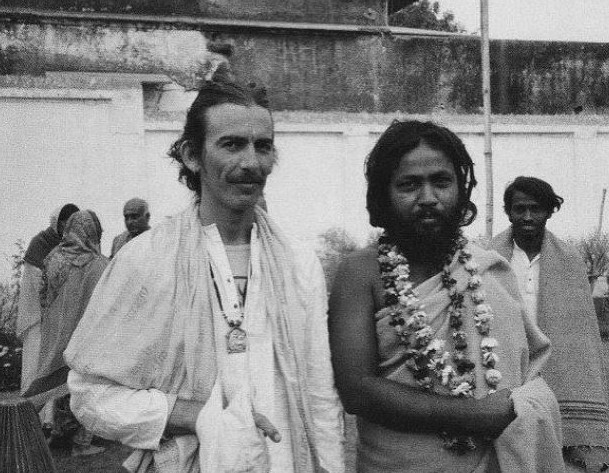
Ida Marion St. John from California and Gita Orescan from Germany
From Sathyam Sivam Sundaram – Part IV by N. Kasturi
Dasara 1977. The seven-day Vedic rite of Jnana Yajna, (see Esoteric Significance of the Veda Purusha Jnana Yajna) which forms an important part of the Dasara festival, was inaugurated by Sri Govinda Narain, the Governor of Karnataka. An indication of the surge of devotion to the Avatar, which binds human hearts ‘though they come from the ends of the earth’ was the joint recital of songs on Baba, both in English and Sanskrit, by Ida Marion St. John from California and Gita Orescan from Germany.
American Donald Schnell Indian Summer 1978
Donald Schnell writes in his book Initiation – Swamy Nagananda was my first Guru. He began to enter my dreams and my meditations when I was seven years old. When I saw him as a child, he would wave his hand and materialize pink and blue candy out of thin air. I didn’t know then what this miracle was called, but I understood it was a blessing. When I accepted the candy in my dreams, I would be overcome with bliss, and I would anticipate my next meditation with great longing. Swamy’s presence in my life made it difficult for me to be away from meditation for very long. I always yearned to be meditating. My outer world was dwarfed by the inner world.
At night, when my family slept, I would sit cross-legged in my bunk, meditating for hours. I was only a little kid, and I already had a strong relationship with my Guru. But I didn’t know his name.
I began searching in the outer world for Swamy Nagananda in 1978, when I was twenty-three. I made numerous trips to India, but it wasn’t until 1984 that I finally found him. I had spent that summer at the huge ashram of Sathya Sai Baba in Puttaparthi, sitting eight or more hours a day in blazing tropical sun on the hard-baked earth, meditating and waiting for a five-minute glimpse of the Indian avatar. There were twenty or thirty thousand people always there, clamouring for some small favour from the master. His acknowledgments came with the rarity of a winning lottery ticket seemingly random and impossible to find.
One day, I couldn’t contain my yearning any longer. I wrote a letter to Sai Baba, and spent an extra two hours in the scorching sun to be sure I’d sit in the front row when he walked that afternoon through the temple courtyard. The crowds around me that day seemed larger and more oppressive than ever. As the avatar approached, I held out my letter, praying with all my might that he might stoop to take it from my hand. It contained my heartfelt request that Sai Baba send me to a more personal teacher. At that moment in my life that was all I wanted.
As Sai Baba approached, I could feel his intense vibrations. “Please take my letter,” was the prayer I kept repeating. My eyes were closed. I couldn’t bear to watch him pass me. Then I felt the gentle tug on my letter, and I opened my eyes just in time to see him turn away.
The next day, I took a taxi to a temple I’d heard about from a Catholic Indian driver by the name of Francis. It was a small temple, humble, nestled in the bug-infested jungle, and by comparison to Puttaparthi, one could hardly feel anything of significance could go on there. As I removed my shoes at the temple door, I saw a young Swamy my age with a handsome face sitting on a lone chair in the semidarkness. He beckoned for me to come near, and as I sat at his feet, he offered to read my palm.
“How disappointing,” I thought, “and how mundane.” Palm readers in India are as common as hot dog vendors in New York. I acquiesced to avoid hurting the Swamy’s feelings, and he proceeded to tell me about my future. I listened half-heartedly, yearning to be on a plane back to the United States. In my mind I savoured the image of an ice-cold Coca-Cola waiting for me at the airport in Los Angeles. I was burned-out on India; my search, the endless rice and curry, and the hot soda pop I was always drinking because the water was unsafe.
When the Swamy finished, I made my polite excuses and left the temple through a side door to look for my taxi. The moment I stepped out into that shaded courtyard, my skin felt the shivers of the soul’s recognition. I knew that place. I’d been there hundreds of times in my dreams and meditations. I was standing on the exact spot I would always visit when the Guru of my childhood and I were together. At that moment, my palm-reading Swamy appeared from the temple door. I spun around to face him.
“I know who you are!” I exclaimed. “When I was a boy, you used to come to me in my dreams and meditations. I would be sitting on this spot and you would make pink and blue candy come from out of the air. And you’d give it to me and then I would have the best meditations.”
“Yes, yes,” the Swamy said, bobbing his head in the characteristic Indian waggle, waving his hand in a circular motion and materialising a large purple candy that he popped directly into my mouth.
I tasted the familiar sweetness of my childhood dreams. Sathya Sai Baba had answered my prayer. I found my Guru.
English musician Dana Gillespie 1978
Dana Gillespie is a singer, actress, and song writer and blues diva. Her first performance in Prasanthi Nilayam was at the time of Sathya Sai Baba’s 70th birthday. Although her life has become synonymous with her music, in the 1970s, she became well known for her appearances in London’s West End theatres. She played the original Mary Magdalene in the first London production of Andrew Lloyd Webber and Tim Rice’s Jesus Christ Superstar.
In a 2011 interview with Radio Sai, she said – When I first read a book on Sai Baba, which was Man of Miracles, it was about 31 years ago, then I did something I never do. I instantly went to get a ticket. Actually, my father bought it for me. He said, “I have a feeling you’re meant to do this.” So three weeks later, I leap on a plane and head to India.
I had this feeling that Sai Baba was going to say when I got here, “Hello! I’ve been waiting for you. You are the chosen one.” But of course, not a bit of it. He ignored me for 12 years. I slept in the sheds, got eaten alive by mosquitoes, had extraordinary experiences, coincidences, things that a non-believer will go, “Well, that’s just a coincidence!” But you know, when you have Baba in your heart and you have faith, then you realise that nothing is a coincidence. I had quite a few unusual experiences.
And they were enough to keep me coming back sometimes twice a year to sit and be crushed at the back. My leg was bad. So, the first time I came here, I actually walked into the place and left in a wheelchair instead of being the other way around, because I was determined to sit cross-legged.
American Patricia Wing 1978
Patty (1942 – 2020) worked as a school nurse for the majority of her career in Ojai, California where she lived from 1983 onwards. She was very interested in Eastern philosophy and religion, mainly the teachings of Sathya Sai Baba who she would come to see as her spiritual guru for the rest of her life. From 1978 she would travel to India to see Sathya Sai Baba over 10 times, sometimes staying for months. His teachings and the community of loving people she met through this organisation were a central part of her life up until she passed.
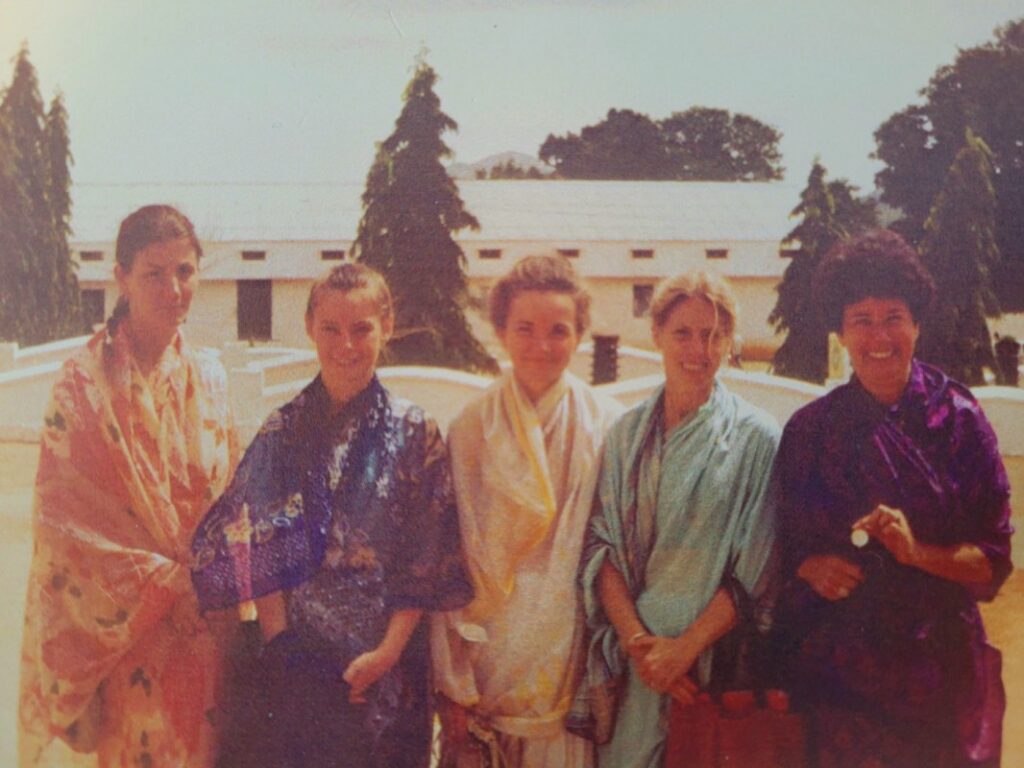
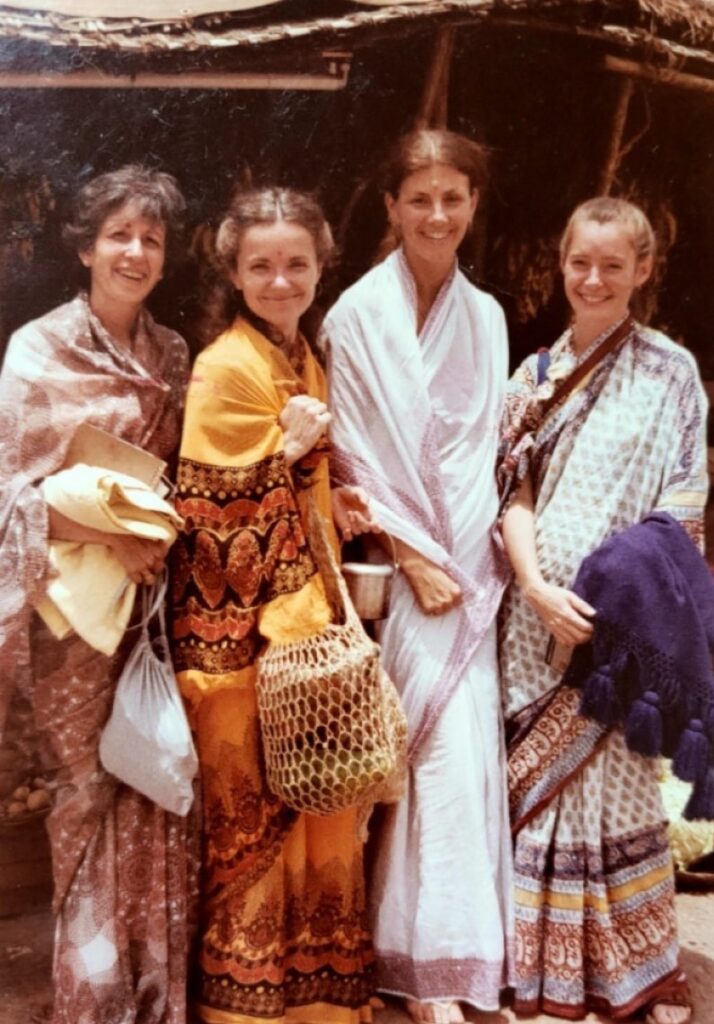
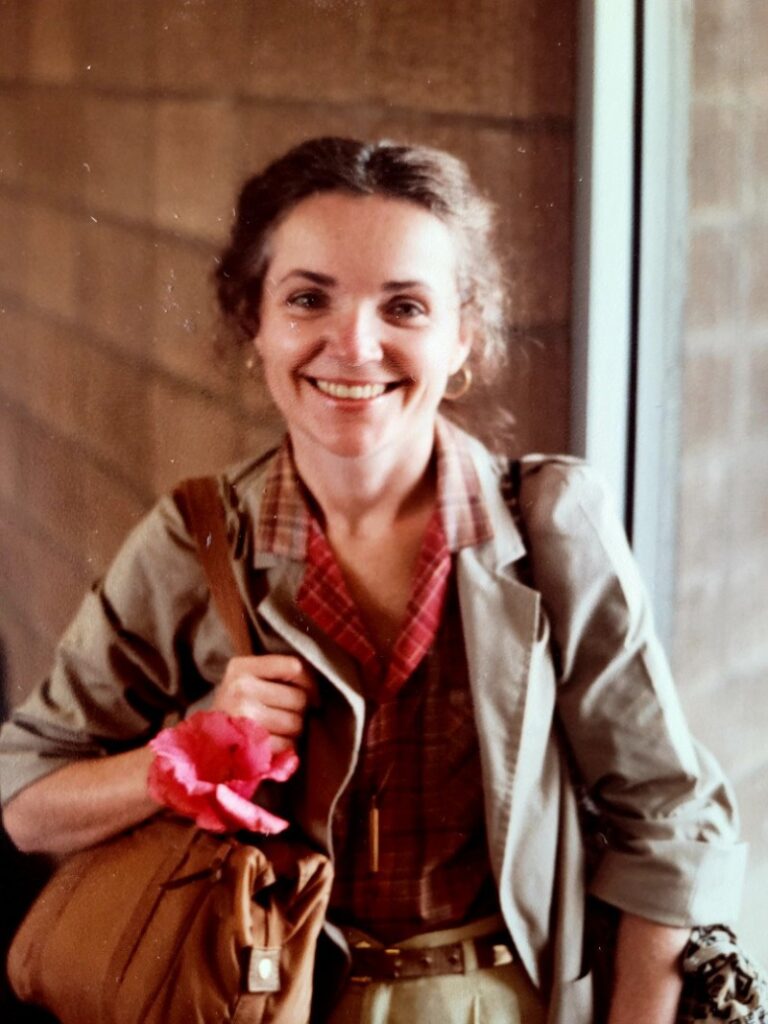
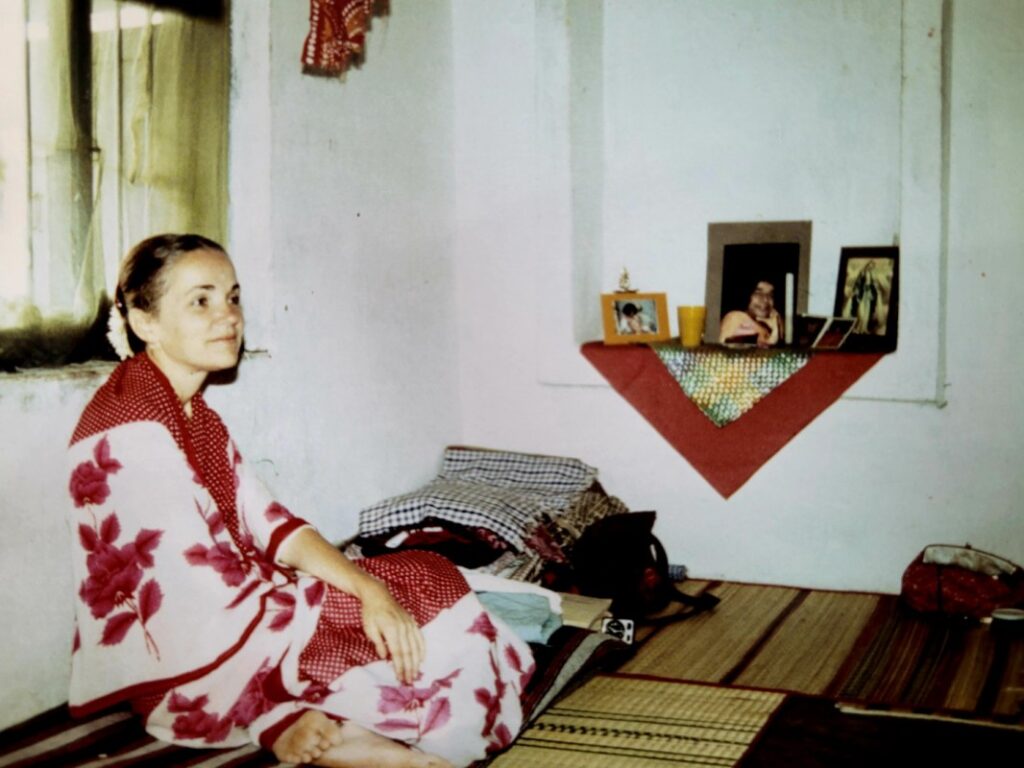
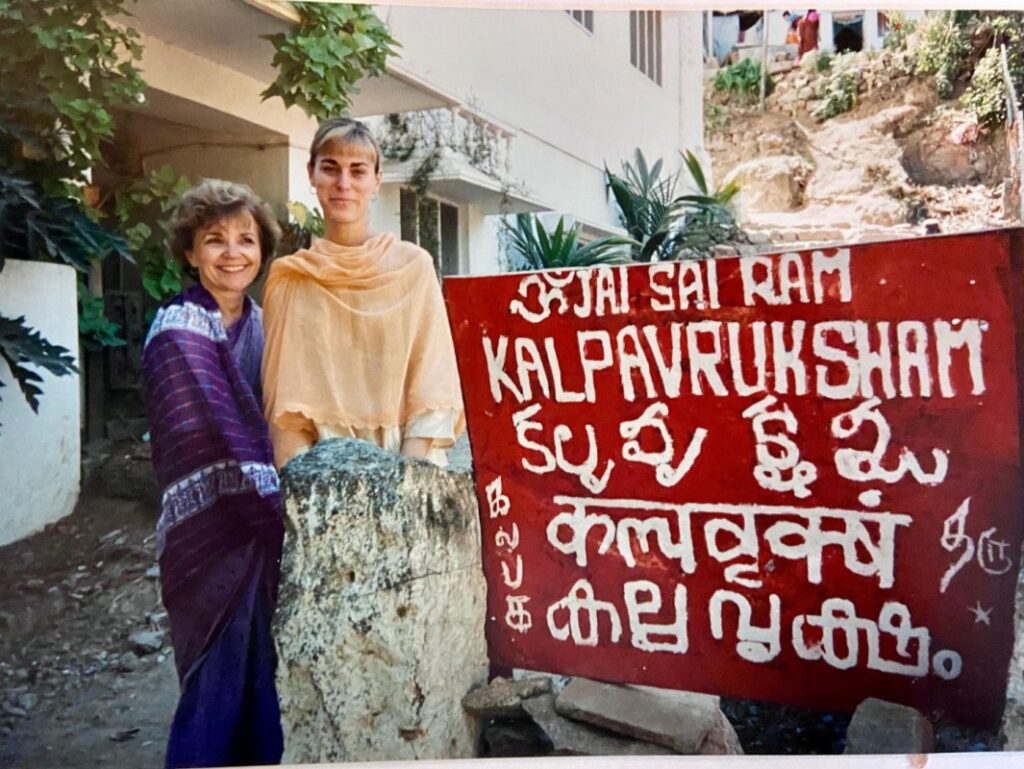
American Dr Dennis Gersten 1978
Dr Dennis (also known as David) Gersten, writes “I am a person who was dazzled by the miracles, and the sole intent on my first trip to India in 1978 to see Sathya Sai Baba was to see if the miracles were real. By the fourth day, Sai Baba had shown me so many miracles I could not take any more and I left on the fifth day. One morning as I was awaiting Darshan, Sai Baba came out of the Mandir, and as he walked toward me, he grew so bright that my eyes watered as if I were looking right into the sun.
Dr Gersten practices integrative psychiatry and nutritional medicine out of his office in Encinitas, California. He writes from his personal experience, his work with patients, and the wisdom of the ages. He is the author of – Are You Getting Enlightened Or Losing Your Mind? A Psychiatrist’s Guide for Mastering Paranormal and Spiritual Experience, Cure Alcoholism Naturally, Leo The Mystic Cat, The POW Survival Guide (dedicated to the Allied Troops of Operation Desert Storm), Mental imagery consultant to Rodale Press on 18 books, columnist on Alternative Medicine for “The Life Connection,” publisher “Atlantis the Imagery Newsletter,” and author of more than 300 published articles. He has consulted to the White House on alternative medicine. Dr Gersten is also an accomplished musician and composer of 2200 songs and 7 symphonic works. Being half doctor/healer and half artist/musician allows him to bring a wide breadth of experience to his work with patients. While psychiatry tends to focus on what’s wrong, Dr Gersten strives to place as much emphasis on “what’s right,” helping through his clinical work, personal experience, and writings, to help people deepen their spiritual connection, find their purpose or mission and remove the obstacles to their dreams.
He has worked in most aspects of psychiatry, from suicidal, homicidal, and psychotic hospitalized patients… to out-patient strategic psychotherapy… to state psychiatric hospitals… to peak performance, training LPGA and high level amateur golfers in the mental game. His expertise in mental imagery has created the possibility to help people beyond the scope of traditional psychiatry.
Are You Getting Enlightened or Losing Your Mind?: A Spiritual Program for Mental Fitness (1998) by Dennis Gersten, Larry Dossey. An expert on mental imagery, a psychiatrist uses his patients’ and his own extraordinary spiritual experiences to tender reassuring, useful guidance to readers dealing with the stress and anxiety that often follow such events.
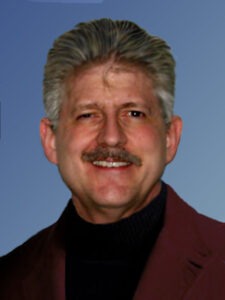
Holy Madness in Healing A psychiatrist’s experiences with a guru and his miracles: How does spirituality interact with modern psychology? by Dennis Gersten published March 1, 1998.
Dennis Gersten, M.D., is a psychiatrist in private practice in San Diego, and author of Are You Getting Enlightened Or Losing Your Mind? (Harmony Books). Here follows a letter he wrote me about his transformative experience with a guru named Sai Baba. On reading this letter, I thought to myself, “Yes, he’s probably lost his mind, but maybe he’s a little enlightened, too.” too. “ Whether or not what Dr Gersten describes is objectively true, his twenty-year history with a guru has been deeply beneficial to him personally and as a psychiatrist, Here is all the passion of the devotee and true believer, but one gets the feeling that even if he discovered that Sai Baba were a fake, Dr Gersten would go on believing in divine grace – Jill Neimark
I’ve thought about your questions and decided to go all out, 100% truth. Many people will think I am crazy for what I am about to say. It’s so controversial that my publisher deleted this material from the book.
I began my psychiatry residency at the La Jolla Veterans Administration Hospital at the University of California at San Diego. Within the first month, a nurse named Madeleine approached me and gave me a photograph of an Indian holy man with a big Afro and an orange robe. “You’re a spiritual person, and I think you should: have this picture. His name is Sai Baba.” That was all she said. I kept the photo, but had no interest at all in Sai Baba.
In my second year, I was supervised by a San Diego psychiatrist, Dr Samuel Sandweiss, who is a devotee of Sai Baba. For two years we met and he told me stories of this man of miracles. The miracle stones shook my very foundation of reality. Sometimes I thought that Dr Sandweiss was himself out of his mind, except he was friendly! Intelligent, and sociable, with a loving wife and four daughters.
When I finished my residency, I travelled with Sam to India to see Sai Baba. Baba deluged me with so many miracles that after four days I couldn’t take any more and left on the fifth day. During that brief visit I observed and experienced Sai Baba manifesting material objects out of thin air, He manifests sacred ash, called “vibhuti,” rings, medallions, even candy, with a wave of his hand. If you think this was sleight of hand, let me say that Sai Baba even materialized a three-foot-high gold brooch for his pet elephant. During the closing moments of that first trip, I was called in for a personal interview. Sai Baba knew everything about me. Now, I’m obviously interested in things that most doctors and psychiatrists shy away from, But it was as if he’d lived inside my head every moment of my life.
But we’ve just scratched the surface. There is no miracle known to humankind that Sai Baba has not performed. I personally know two people who had a loved one resurrected from the dead. The most astounding was a woman whose husband died while at the ashram. She refused to let anyone take the body for cremation. She told people, “Babe said he would come help him.” Five days after the man’s death, Sai Baba came to the room, which reeked with the odour of the decaying body. Half an hour later Sai Baba walked out of the room with the resurrected man. . .arm in arm, cheerfully greeting the wife.
Isaac Tigrett, founder of The Hard Rock Cafe, is a devotee of Sai Baba. In Isaac’s younger days, he says, he was sailing around the curves of the Malibu hills in his sports car when it flew over the cliff. Sai Baba appeared in the car, held his arms around Isaac and protected him completely. The car lay demolished at the bottom of the cliff with the waves pouring over it. Isaac was unharmed.
These stories are jarring to the average American, but more so to the average psychiatrist. “Magical thinking” they call this stuff. Yet, if one dares to explore what I have said, then we are faced with more than a challenge for the theories of modern psychiatry. Psychiatry is a speck of dust compared to the infinite mystery of God. Sai Baba says, “I am God and you are God. The only difference is that I know it and you don’t.” And so, yes, this psychiatrist is saying that, after his puny, medical ego had been sufficiently deflated, that he, that 1, know that God is on earth, walking, talking. Is Sai Baba my guru? We, in the West, have a very hard time with the idea of a real guru. We’re tough-minded individualists, and surrendering to Sai Baba has been a tough lesson. What is a guru, anyway? The word means “he or she who removes the darkness.” These people are like human magnets, their power of attraction is so great. Although gurus throughout the ages have developed immense powers, these are not what attract. It is the boundless love one feels in such a presence, a love so great that one can be permanently changed.
How has this transformed my practice? Because I have witnessed miracles, I now expect miracles. It’s my job to create the atmosphere in which a miracle can occur. The mere belief in miracles is like a fertilized garden. I now know that deep change need not take eight to fifteen years of psychoanalysis, four times a week. Deep change can be instantaneous, and that is a miracle. But there are “real” miracles that I have been part of in my clinical work, and I stand in awe before them. Take Carmen, an acquaintance who came to me for help after being diagnosed with lung cancer.
I gave Carmen the works: meditation, mental imagery techniques, nutritional supplements, and some lingam water. A lingam is an egg-shaped stone. Sai Baba materialized one for a friend of mine and said, “This is for healing purposes. I will send you patients.” She returned to America and made bottles of water prepared with the lingam.
Carmen’s entire right lung was filled with cancer. Then came the call. “Dennis, you just won’t believe this. Then again, you probably will. I had the surgery. They opened my chest and discovered that the cancer had spread into the left lung and was wrapped around the big blood vessels. They closed me up and sent me home to die. Well, I was meditating one morning, and suddenly Sai Baba appeared in front of me. He was reaching inside my body, pulling cancer out. They gave me one radiation treatment. And you know what. The cancer has shrunk by 75%.” Six months later Carmen walked into my office and said, “Dennis, I am 100% cancer-free.”
The question arises, when going beyond traditional medical and psychiatric boundaries, what to do with spiritual experience, how to “treat” it. Before each session with a patient, I now say a silent prayer for guidance in working with the next person. I imagine my guru, Sathya Sai Baba, in the office with me. When I am stuck, I will silently ask Baba for advice. Part of my spiritual practice is to look for the spark of God in every person, including the craziest of my patients. Sometimes this can be quite a challenge, but I’ve learned to find wisdom in the midst of insanity, divinity amidst the darkest depressions or psychotic episodes. A few months ago, I was working with a woman named Sarah, who suffered from a full-blown manic psychosis. Mania is interesting. These people have an ability to zero in on your personal weaknesses in an instant. When this woman and I met, she was loud, angry, and threatening. I managed to simply listen, remaining centred. Toward the end of that first meeting, she asked about my family. I told her I have a 22-year-old daughter. “Do you tell her you love her?” she asked. `Yes,” I said, “I do.” “But do you tell her every day?” she insisted. “Yes,” I said, “every single day.” And then the kicker: “But do you really tell her from deep in your heart? I want you to tell her tonight from the bottom of your heart how much you love her.” I agreed. I knew that the divine part of Sarah had spoken, and that I had better pay attention. I went home that night and told my daughter how much I love her, from the bottom of my heart. Spiritual psychiatry is about bringing my patients to a point of serenity they may never have experienced, but it is also about finding the divine in another person and connecting with that, soul-to-soul.
This is the psychiatry of the future, a psychiatry of love, hope, faith, and miracles; a psychiatry that heals and uplifts, that sees the pain as part of the spiritual journey, that knows that spiritual ecstasy is real, and that God exists. A psychiatry that dares to bring God into the office, that dares to offer miracles, and that considers Prozac the last choice and not the first.
American Dr Allen (Al) Levy 1978
Al Levy says in an interview – “When I first came to India in 1978, I had an interview with Swami. On that occasion he said, “Do you want marriage?” I said, “No Swami, I don’t want marriage.” Note that by then I had been taking care of Hilda Charlton. I was like her confidant and student, and she was telling me so much about Swami. Actually I had come to Swami with Hilda and twenty of her other students. So when Swami asked me this question again, I said, “No Swami, I want only You; I don’t want marriage.” But he said, “No, I will give you a wife.” I said, “Swami! No, no!” I should not have said that to Swami because you never say ‘no’ to him. Swami is God and you just have to surrender to him. But at that time I didn’t have that awareness. So I pleaded, “Swami, only You. Please allow me to pursue brahmacharya (celibacy).” He said, “Okay.” Then I asked him about the dream and he said it was true and that he did put the ring on my finger. I told him that I was his and will do whatever he says.
https://archive.sssmediacentre.org/journals/vol_09/01JUL11/03-Allen.htm
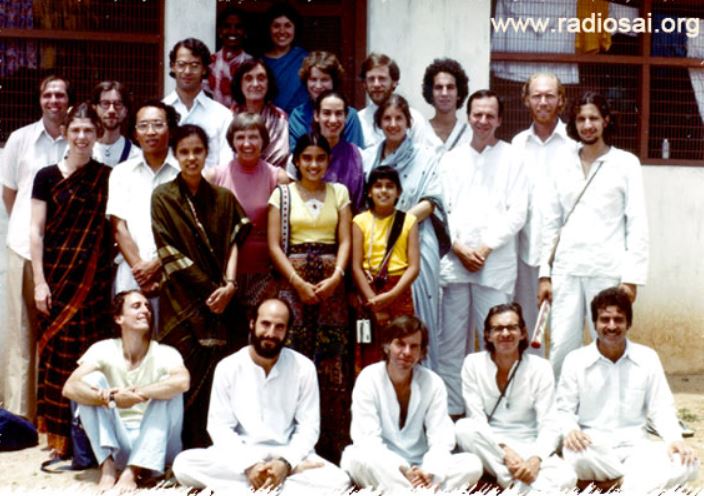
American attorney Robert Baskin mid February 1978 and stayed until the end of 1979
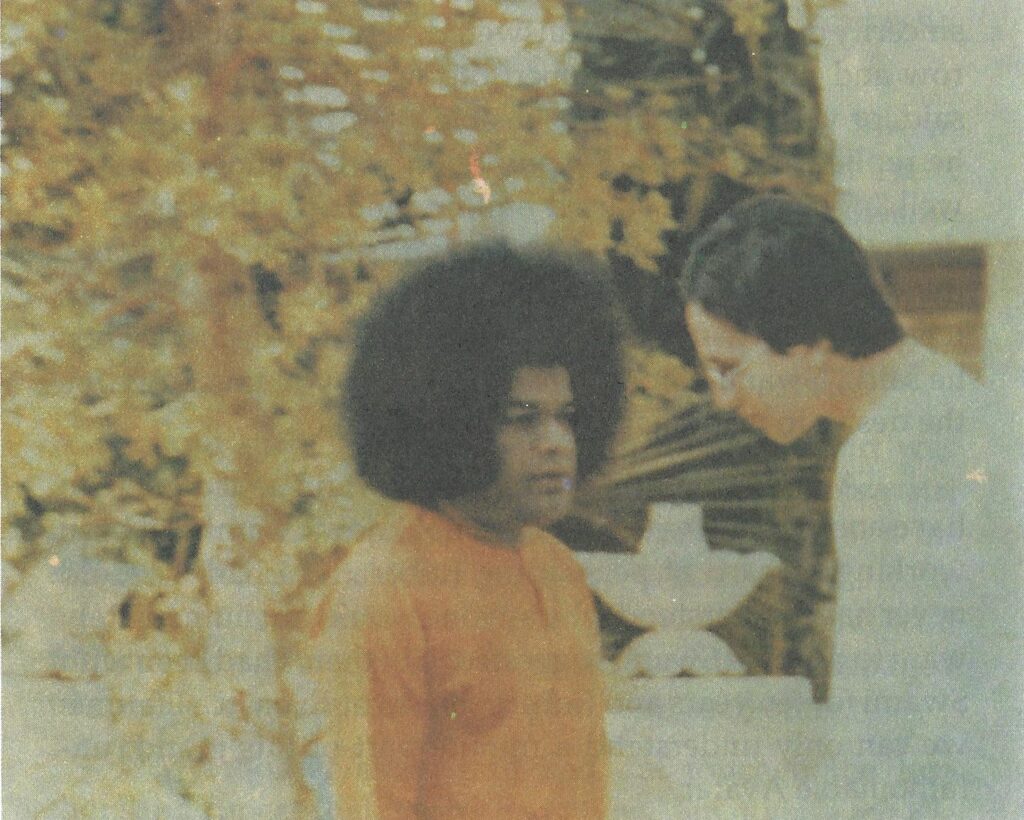
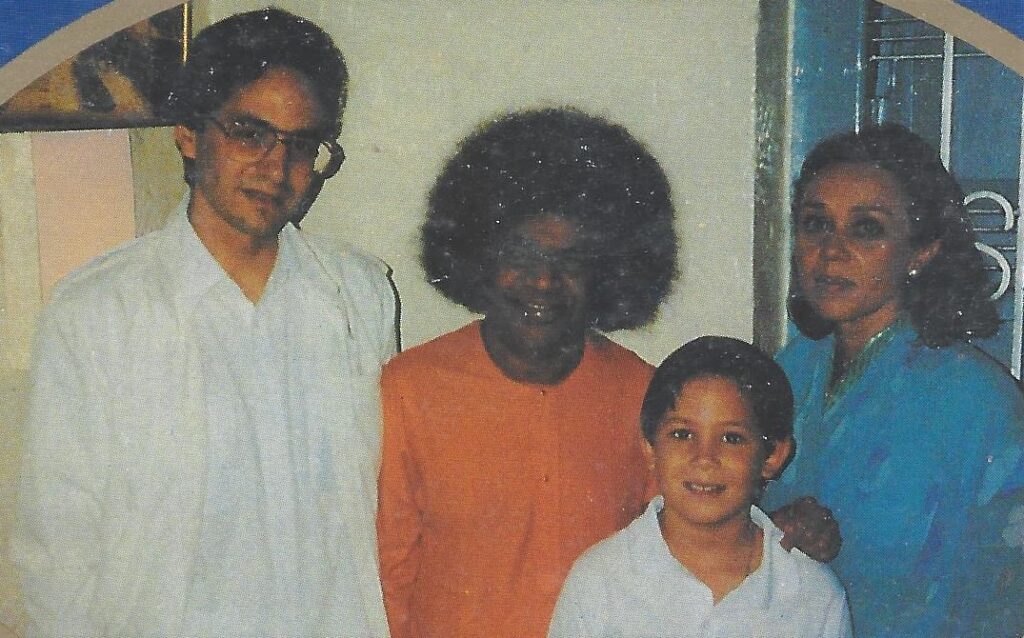
Canadian musician Walter Maynard Ferguson and his American wife Floralu (Flo) Ferguson (Farmer) April/May 1978 Whitefield
Walter Maynard Ferguson (1928 – 2006) was a Canadian jazz trumpeter and bandleader. His marriage to American Floralu (Flo) Ferguson (Farmer) (1929 – 2005) in 1956 lasted until her passing.
Maynard writes “At the Summer Course in 1978 at Brindavan my wife and I first came to Bhagawan Sri Sathya Sai Baba. Baba allowed me to perform a concert with Vemu Mukunda and his Indian musicians at one Summer Course session. At the climax of my main solo, Baba sitting in the centre of the stage, rose to his Feet and holding out his arm with palm down, while the audience cheered, materialized a beautiful jewelled necklace, paused, then made it larger to accommodate my neck size, which swells when I play. With the crowd still applauding, Swami garlanded me with this necklace. As he did so he smiled, close into my eyes, and said, whilst holding before me the gold medallion hanging on the necklace, “On this I give you Krishna because he played a wind instrument.”
“We both laughed. The audience was thrilled. I was ecstatic. Someone in white asked, “Discourse, Swami?” I heard Swami’s voice say, “Already had discourse.” And taking my hand, He led me to the front of the stage, and following his direction I bowed to the audience. Then Baba, being the perfect master of ceremonies, held out His other hand for Vemu Mukunda to join us for a final bow. This was my first experience with Swami. It was fun, joy, mystery, excitement and sweetness too. That is what Baba meant to me that first day – and still does, plus much more.”
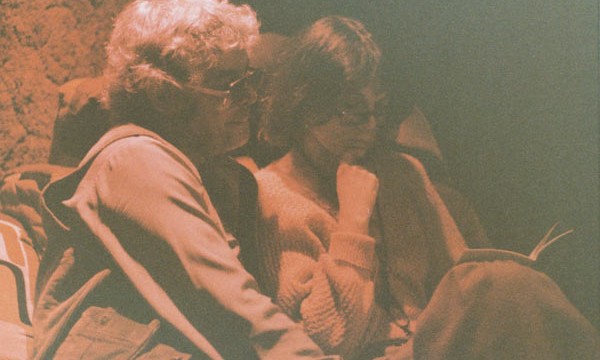
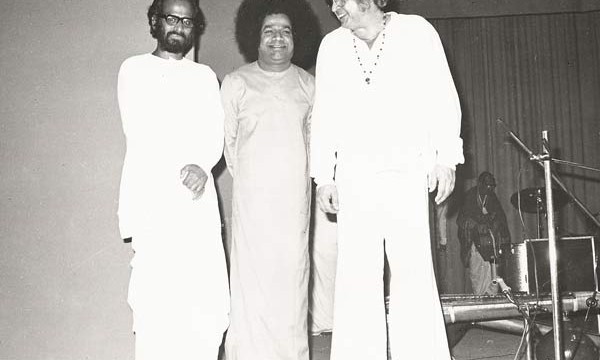
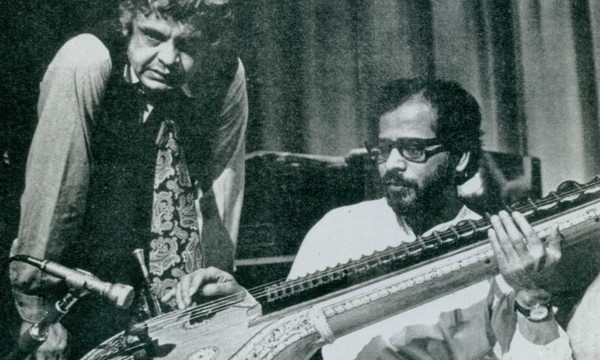
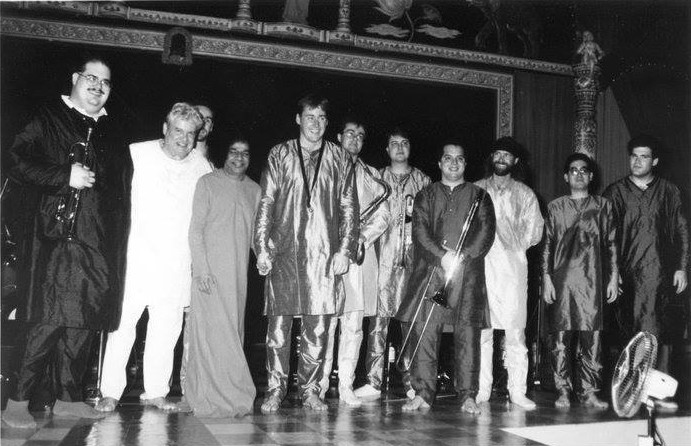
Maynard Ferguson’s life and music were greatly influenced by the teachings of Sathya Sai Baba. Maynard had lived in India for a short time and returned for two months each year to teach music to the Indian students at Baba’s ashram. Influenced by the music of India with all its expanded time signatures and unique instruments as well as a new spiritual path of oneness.
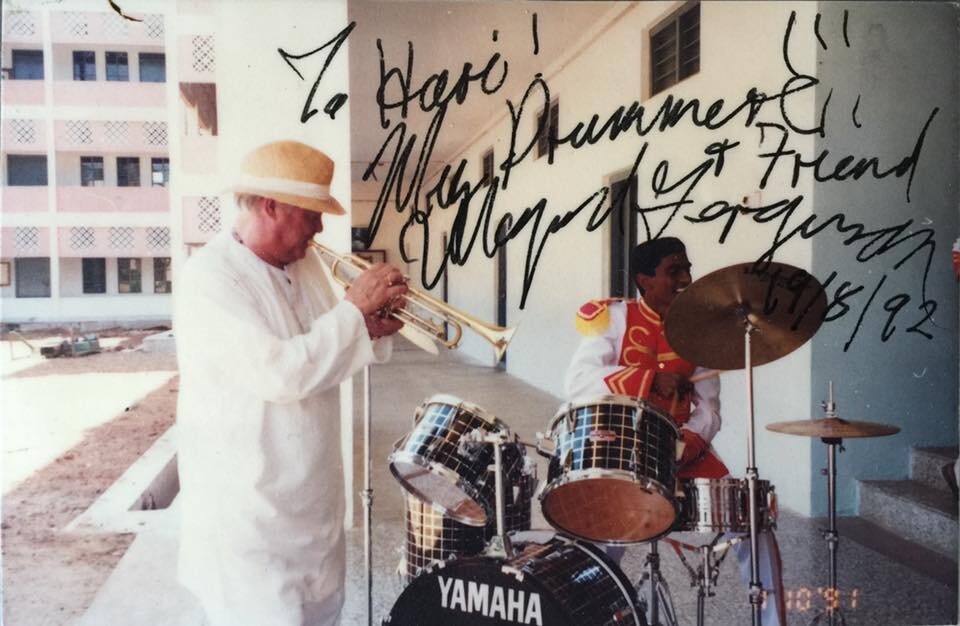
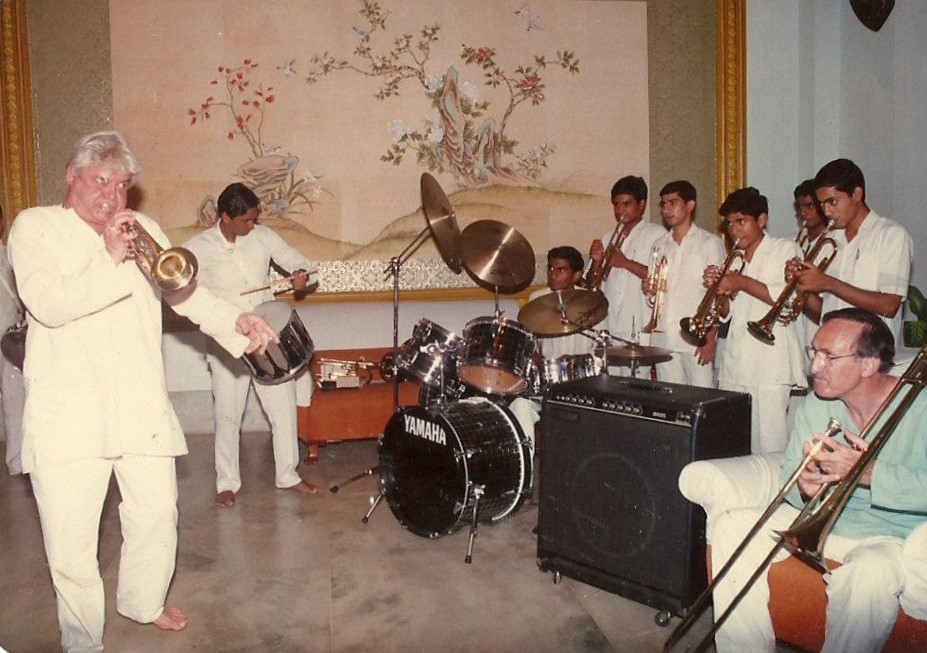
American Professor Frank Baranowski July 1978 Whitefield
Professor Frank Baranowski (d. 2002), a psychologist and regression therapist, specialised in research on auras, the energy patterns that surround all living beings, and worked at the University of Arizona. He was an expert in bio-magnetic field radiation photography. He photographed and interpreted the auras for numerous men and women using the ultra-sensitive Kirlian camera.
Professor Baranowski had read several books about Sri Sathya Sai Baba, including Dr Samuel Sandweiss’ Sai Baba, the Holy man and the Psychiatrist. He wondered whether such a person could really exist and whether all that was written about him was factual. As he was, at that time, writing a book on reincarnation based on case studies and other findings, he was interested in Sathya Sai Baba’s claim of being a reincarnation of Shirdi Sai Baba.
During Christmas 1977, Professor Baranowski was a guest at a home where a Bhajan (devotional songs) session was in progress. A stranger to this form of worship, he withdrew to a room upstairs. He was resting there quietly in the dark room when, to his astonishment, a candle on the table suddenly burst into flames. The bright flame illuminated a nearby picture of Sathya Sai Baba. He could not understand who could have lighted the candle. He was alone in the room. There had not been any sound and no one had come in. How could a flame appear all of a sudden on the wick of the candle? He stared at the picture and it did many things to him. It seemed to penetrate into him and to beckon to him. To a man of science, this occurrence was totally inexplicable.
The thought of Sathya Sai Baba lingered in him long after the candle experience. He decided to go to India and visit Sai Baba. Here is the account of his encounter with Baba for the first time, in his own words:
“Sathya Sai Baba? Yes, I had heard of Him but with a lot of mixed emotions. The stories that were attributed to this man bordered on the incredible. As a man of science, I am aware of psychosomatic healings, and I have seen miraculous healings done by such notable personalities as Olga Worrell, and at such famous places as Lourdes. Yet, here were rumours of a man from India who could heal people by His mere touch. The story hinged on the unbelievable.
In July of 1978, I found myself at the first World Peace Conference at Bangalore. I had heard that Sathya Sai Baba resided in a place called Whitefield. This small community boasts of a college founded by Sathya Sai Baba and dedicated to science and commerce. As I arrived by taxicab, the first thing I noticed was the refreshing cleanliness of the area.
Though hot and stiflingly humid, hundreds of Indians and foreigners crowded the grounds surrounding Sathya Sai Baba’s ‘Ashram’ or residence. I joined the patient assemblage, sitting squat-legged among the Eastern visages. I didn’t have to wait long until Sathya Sai Baba appeared. I must confess, this first time I saw him I was not impressed.
He was of small stature and walked among the people as if he were distracted. He would hardly take the time to look at a person or to talk with them – then he would suddenly turn his head as if looking for someone else. It wasn’t until the next morning that I realised I was seeing an individual who possessed gifts beyond description.
It was about five o’clock in the morning, and the followers had been singing their devotional songs and chanting during a parade around the compound at Whitefield, when Sathya Sai Baba came out of his residence.
Now, I have always been able to see the human aura. The auras around average people extend as much as three to five feet. Auras are composed of every imaginable colour and these colours change as a person’s emotional, physical and mental states change. In general, whenever the colour blue is evident in a person’s aura, it is an indication of deep spirituality; green is a healing color; yellow indicates high intelligence; and red means anger or frustration.
The colour pink, which is rarely seen, typifies a person capable of selfless love, and this was the colour that Sathya Sai Baba had around Him. The aura around Sathya Sai Baba went beyond the building reaching thirty or forty feet in all directions. Never having seen any aura like this before, my first reaction was to look for fluorescent lights, which may have been shining on him. But as I watched, the beautiful pink energy pattern moved as he moved; there was no doubt that this was His aura.
Entranced by this remarkable sight, I barely heard the devotional songs that were being sung, and before I knew it, Sathya Sai Baba had gone. The crowd settled in the now-familiar cross-legged positions and prepared themselves to wait until Sathya Sai Baba’s next appearance, four hours later.
I have had the pleasure of meeting such personalities as ex-president Gerald Ford, Queen Juliana of the Netherlands, and Pope John Paul II, and I have studied their auras as well as tens of thousands of others, I say this not as a testimonial but as a fact; not one person I have ever seen has an aura to compare to the size and colour of Sathya Sai Baba’s aura.
The heat was remarkable; the humidity hung like a wet cloth over the gathering. Amid chanting, a few anxious eyes watched the threatening skies, Dark clouds gave foreboding signs of torrential storms, but all around me devotees were assuring each other “Sathya Sai Baba won’t allow it to rain.”
Then, there he was again, I felt my heartbeat quicken as he turned in my direction. Soon he stepped beside me, looked at me, and then made a quick motion to the man seated beside me. Suddenly crushed lilies began to appear in the palms of His hands, and as they poured forth, the petals filled the cupped hands of the seated man. But the flower petals didn’t stop coming; they went on to fill the waiting hands of a second, a third and then a fourth person!
As this great man turned away, he glanced in my direction as if to say, “Have you noticed what I have just done?” I couldn’t have helped witnessing what had happened. To answer possible arguments, Sathya Sai Baba’s sleeves reached his elbows. So it was not by magic tricks that these petals appeared. And I was not hypnotised into believing I was seeing them, for I am a licensed hypnotist myself and am very difficult to hypnotize. Within my limited understanding, it was difficult to believe I had just witnessed this miraculous demonstration. I sat there, in that same position, for a very long time, dumbfounded by what I had seen.
The very next morning I felt myself drawn back to the very same compound, sitting in the lotus position and waiting for Sathya Sai Baba to appear once again. As I sat quietly, I heard a voice in my mind tell me that I must cross the field, walk through the area where the women were standing and talk to a man who was standing against a building there. I did not feel comfortable approaching a stranger, especially in a strange country where there is a language barrier, but I could no longer ignore the voice in my mind. I went across the field and found a man standing against the building. I spoke to him.
“I hope you speak English. I have a voice in my mind that says I must speak to you”. He introduced himself as Professor Narender, and he said, “You must be the lecturer Sathya Sai Baba said would speak to me today.” I am a lecturer; I have given approximately 9,000 lectures all over the world. But how did this man know that?
In the next four days I watched Sathya Sai Baba with his people. He calmed them; He gave them hope. As he walked among them, the beautiful pink colour in His aura permeated the violent red colours in the crowd. His selfless love transcended their fears and worries. Perhaps you have to meet this man to understand his gifts. He gives of himself to thousands of people from all around the world who await his blessings.
Professor Narender’s message to me proved to be that I was to speak to Sathya Sai Baba’s College on Friday afternoon. 800 students and later 100 teachers listened to my lecture. As I stood next to Sathya Sai Baba, I could see his aura reach beyond the platform. It surrounded all the people in the room. Soon his love – and that’s the only word I can use for the warm, buoyant, totally immersing emotion we experienced that evening – reached each and every person in that room and they began to sing and chant devotions to this man.
The word ‘Avatar’ is often used when referring to Sathya Sai Baba, meaning one who has Christ-like powers, or God-like power and one who may even be God Himself. Now, I am a devout Catholic. Yet I would be a fool if I did not recognise the powers this man has. Amidst the singing and chanting, the Avatar turned to me and said, ‘Because you are a man of such great love….’ and he showed me the empty palm of His hand. He circled his hand in the air three times and produced a ring with the nine precious gems of the world embedded in gold. He said, “It will only fit the first finger of the right hand.” And indeed, that is the only finger it fits. It’s magnificent! It’s a beautiful ring! But it holds special meaning to me because this great man, this Avatar, graced me with His words: “Because you are a man of such great love…. “
The next day I was once again honoured by Sathya Sai Baba as I was granted a private audience with Him. I was anxious to discuss not only reincarnation with him, but also my grandson. The boy was born with a heart defect. At the age of one year he weighed slightly less than seven pounds. Numerous operations left him with little hope for a normal life, even if he survived at all. But before I could mention this to Sathya Sai Baba, he told me that there would be an operation on the day I arrived home (in Arizona) and that the baby would be well. I said, “You must be wrong. The baby is not old enough to have this operation. The physicians said the minimum age for the operation would be at age two, even two and a half.” Sathya Sai Baba just smiled, and said, “No, it will be on the day you arrive home.”
He was right. On the day I arrived in Arizona, the baby was operated on. The doctor who performed the surgery gave my grandson little hope of survival. When my daughter introduced the doctor to me, I discovered he was from India. I told him I had just returned from there, and mentioned some of the places I’d been to. When I mentioned Whitefield he interrupted me and asked, “That’s Sathya Sai Baba’s country, isn’t it?”
I said yes, and showed him the ring I had been blessed with. The doctor looked at me with the eyes glowing, and said, “The child will live,” as if all that was needed was the mention of Sathya Sai Baba’s name.
The child did survive. Perhaps of all the miracles I witnessed in my ten days in India, no miracle is as great as the miracle of one man giving so much love to so many people. In my estimation and experimentation, Sri Sathya Sai Baba is, aura-wise, exactly what he says he is and what he asks everyone to be. He is love, pure and simple. He is love walking on two legs. Such unselfish love is nothing other than Divinity.
His own words say it best: “Love. Continue to love and all will be well.”

American Jack Hawley 1978 Whitefield and stayed for a month
Jack Hawley, PhD, has emerged as one of the preeminent teachers of the Bhagavad Gita in the world today. Each year, he and his wife Louise spent six months in India studying and lecturing at a spiritual community, and six months in the U.S., living and teaching the wisdom of the Gita, one of the greatest spiritual works ever written.
Jack Hawley is also a business consultant, currently the president of Jack A. Hawley Associates and founder of Team Climate Associates (a consortium of consultants in effective work environment); prior to this, Hawley spent ten years as an executive in the high-technology and service industries. In 1978 his search for new approaches to individual and organisational transformation took him to India to study with Sathya Sai Baba. The one-month trip grew into a deep, lasting relationship with Eastern wisdom and a new career as writer, lecturer, and teacher. His graduate work was done at Cornell University in Industrial and Labor Relations, and at Columbia Pacific University. He holds a doctoral in organisation behavior and has taught part time at several universities including Cornell, University of California, Pepperdine, and the Sri Sathya Sai Institute of Higher Learning in Puttaparthi, India. When not traveling, Hawley and his wife Louise live in Southern California.
Jack Hawley PhD is the author of several widely read books: Reawakening The Spirit In Work – The Power Of Dharmic Management, Roadmaps to Self-Realization, Essential Wisdom of the Bhagavad Gita: Ancient Truths for Our Modern World, The Bhagavad Gita: A Walkthrough for Westerners.
Jack Hawley’s website is GitaWalkThrough.com https://gitawalkthrough.com/
Paradigm Shifters Presents a Tribute to Sai Baba by a Jack Hawley;
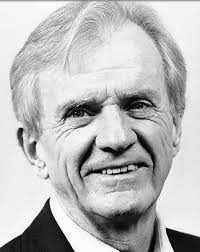
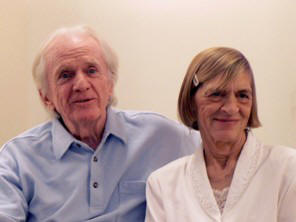
American Susan Salguero 1978
Susan Salguero wrote When God Came Walking: 1978-1980 with Sathya Sai Baba (2014) after a life-altering three-year stay in Baba’s ashram in India. The book is a firsthand account of the majesty and wonder of this miraculous being as seen through the eyes of an ordinary American woman who lived in his ashram for three years. This is a journal for anyone on the path of devotion towards enlightenment, known in India as the path of Bhakti.
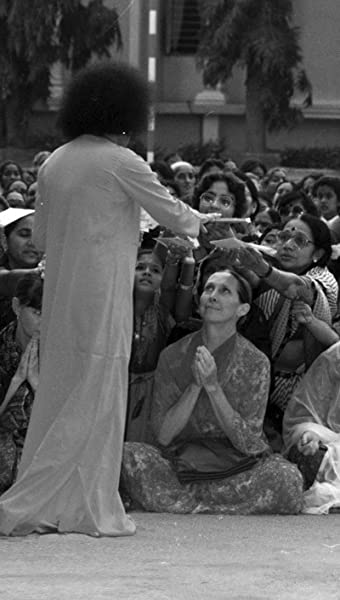
American Homer Youngs 1978
Homer compiled Translations by Baba (1975), an early useful reference book of translation definitions taken from the edited English translations of Sathya Sai Baba’s Discourses. This ‘dictionary’ contains over 2,000 terms, with definitions from Sai Baba’s own writings.
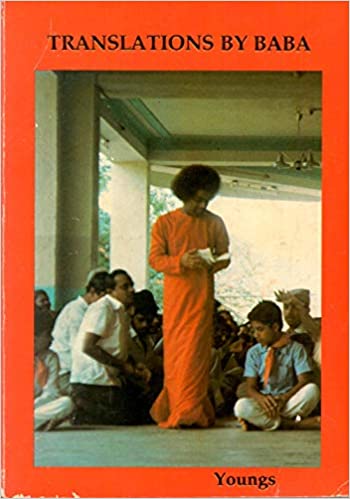
American Lila Taylor 1978 Prasanthi Nilayam
Danes Hagen and Tata Hasselbalch (1920 – 2012), Preben Plum December 1978 Prasanthi Nilayam
Samuel Sandweiss writes; Professor Preben Thorvald Paul Bretteville Plum (1906 – 2002) is the head of the Danish Paediatric Clinic of the University Hospital in Copenhagen. As a well-known and respected personality in the medical community, he has devoted his entire professional career to treating and rehabilitating crippled children. He was chairman of the Danish Medical Research Council and influenced the direction of research in his country. Now at the age of 72, in the face of impending retirement, when he read my first book Sai Baba: The Holyman And The Psychiatrist, He directed his interests to spiritual matters . He contacted me. He said, “I would like to see Sai Baba, and I wonder if I could make an appointment with you on any day.”
We met at the ashram one rainy day in December 1978. Plum was in the company of his friend Hagen Hasselbalch (1915 – 1997), who had been making documentaries for forty years. Plum apologized for the inconvenience and hoped it wouldn’t take too much for a place in our modest room with a concrete floor. He had unfolded an air mattress and sat down on the floor.
Two psychiatrists accompanied me on the journey. However, Baba did not pay attention to us until Plum appeared. Then he invited Plum, me and Hagen for an interview.
Baba sat on the footstool in front of us, I sat on the floor to His left, the professor in front of Baba, and the filmmaker to the back to the left of the professor. There were about ten more people in the room sitting against the wall. Dr S. Bhagavantam, a well-known Indian physicist, former chief adviser to the Indian government and now Baba’s best translator, approached the door. Baba said, “We don’t need you. Sandweiss will translate.
This was surprising for me. Though dazed, I chuckled because I find it difficult to translate English into Telugu or Danish. Luckily Baba chose to speak English and he allowed me to develop some topics – he would take breaks when he knew I could add something. In a sweet and gentle way, he gave me a chance to feel really needed.
Baba looked gently at Professor Plum. What a sight it was – this older professor, now at the end of his career, sitting humbly before the Master. Everyone was silent with due respect when Baba began to say to Plum “What is science? Who is a scientist? Professor Plum hesitated so Baba continued, “Science is a way of looking at the world around us through the mind. The nature of the mind is duality; he divides reality into various names and forms – he thoroughly analyses, compares, contrasts, separates, categorizes – tries to define and define reality using words and concepts.
“The entire cosmos – the whole material universe, this vast space – looks like a foam bubble in the ocean of reality. The mind that is watching he asks for it through the senses, I try to comprehend and understand everything – this mind is even bigger than the cosmos; he could even contain it and understand it. But even this enormous mind is like a tiny wave in the ocean of reality. You are the ocean. You are not a sea foam bubble, nor are you a wave – you are beyond separation. You are everything – you are the ocean.
“The mind perceives separation, duality; but it is possible to demonstrate reality in a different way – as one . It is possible through heart and love. Love seeks to connect with others; two become one. Love sees one thing. In order for a limited little wave to understand that it is an ocean, it must reconnect with the ocean through love.
Scholars ask, “What is this something that is found in the outside world and is perceived through the senses?” The spiritual aspirant says, “What is that something above the material world and senses, beyond duality and beyond mind?” That “something” is the ocean from which it all comes.
Baba paused for a moment and then cheered up more. “My name is Sathya, the Truth. I represent what is beyond the mind. I have come to show you who you are – the reality that is beyond the mind. How can a scientist understand Me? I am in every place, at all times – I am all that has been and I am thanks. I can transform earth into heaven and heaven into earth. He paused and, looking at us with amused eyes, said, “I don’t do this very often because it causes some people a problem.”
Everyone was laughing , and Baba was very happy that we were feeling happy. He continued: “How can a scientist know My reality? How can you explain it? Baba became even more animated and in the air began to circle his hand in a large circle. In one surprising moment a beautiful, silver ring appeared in his hand. It appeared as if in a flash of light and at such a moving point in spiritual discourse that we took our breath away and were bewildered. The mind simply becomes humble and confused in the face of a wonderful miracle. This is because he comes face to face with the creative the power that created all matter.
At that moment, Baba beamed with happiness. He showed everyone a beautiful ring and then looking at the professor said, “How can you explain it?” When he took the professor’s hand, Plum became like a little child. It is amazing to see a human being transformed instantly, even transformed the strongest and most reluctant unbeliever, into an innocent, giggling child.
Baba slipped the ring on the ring finger of Plum’s right hand. The ring fit perfectly.
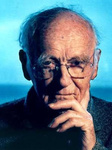

American Sylvia Alden 19th December 1978 Prasanthi Nilayam
Art and Gloria Clokey January 1979 Whitefield
Art Clokey’s clay-animated Gumby had for a long time been a staple on television since the character’s debut in 1956 on the Howdy Doody Show. Clokey maintained a deep interest in the world’s religions, and was particularly involved with the teachings of Sri Sathya Sai Baba. He attributed much of the regenerated interest in Gumby to the 1979 darshan where Sri Sathya Sai Baba blessed the Gumby doll they had brought to India with them.
In a 1986 interview with The Miami Hurricane, Gloria attributed Gumby’s new found success to otherworldly forces.
“One thing that was significant,” she said “in 1979 we faced foreclosure and a $40,000 debt, we were on the verge of being broke. We went to India to see a holy man “Sai Baba was giving Darshan and he materialised the sacred ash Vibhuti and put some on Gumby. We came back to a revival. Gumby rescued us from this horrible thing that was happening.”
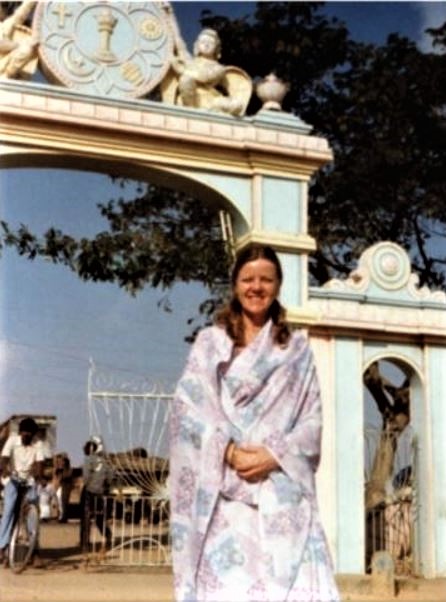

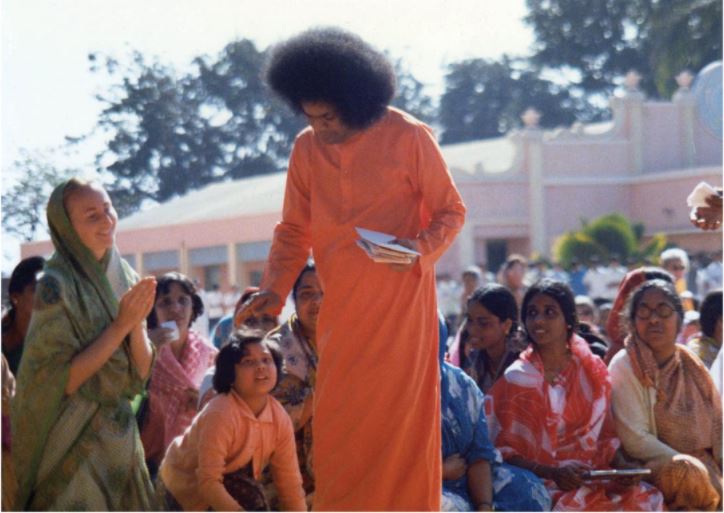
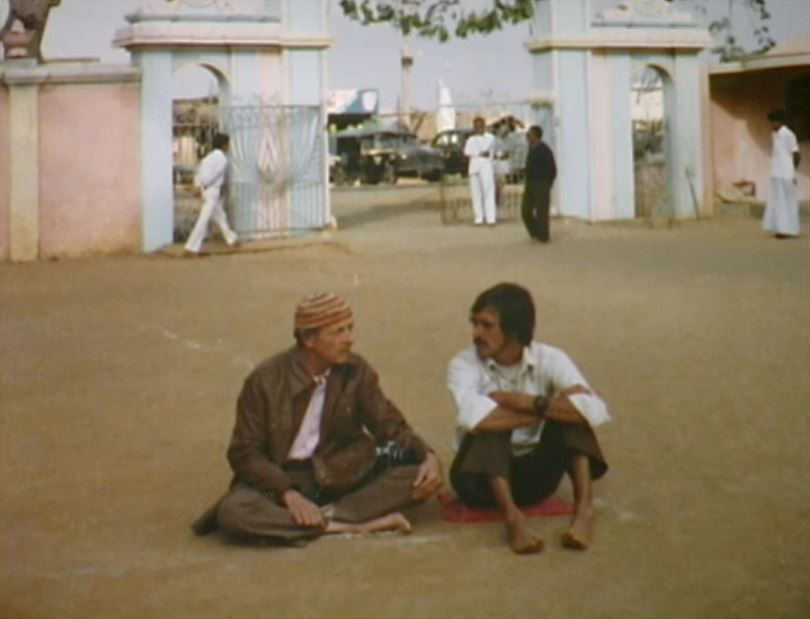
Americans Johnathan and Rose Roof January 1979
Jonathan Roof is currently retired and living in Tucson, Arizona. Jonathan first visited Sathya Sai Baba in India in 1979. As a result of his interactions with Sai Baba, he wrote the three volumes of Pathways to God. The first volume came was released in 1991 and the third volume in 2004.
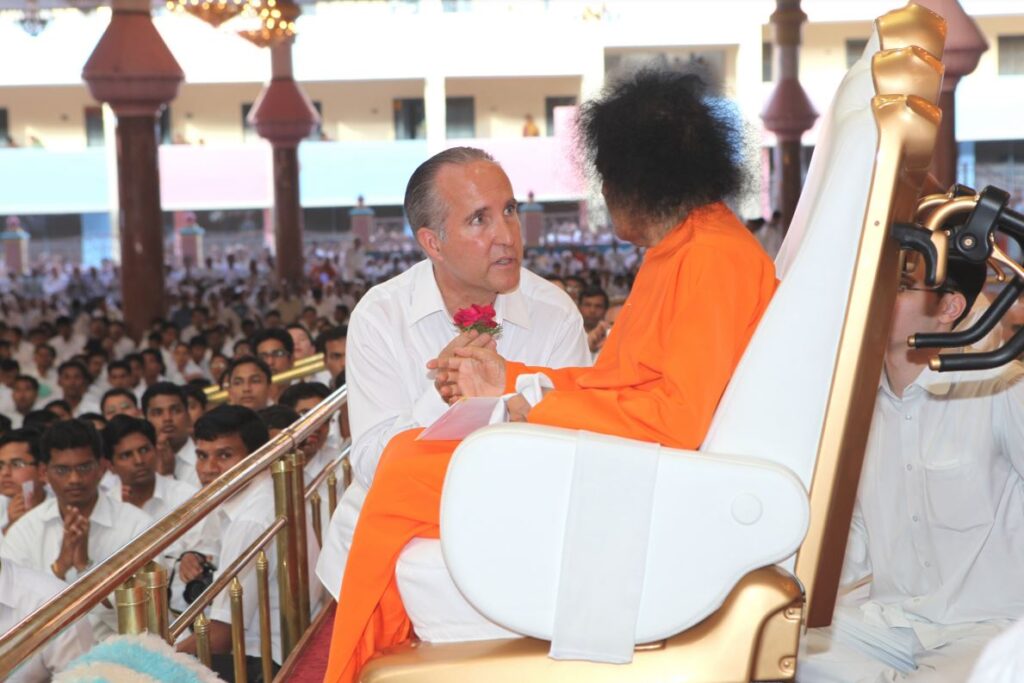
Americans Robert and Rita Bruce Easter 1979 Prasanthi Nilayam
Rita is the author of five books that Sathya Sai Baba has personally named: Vision of Sai I (1993), Vision of Sai II (1995), Sathya Sai Parenting I, Sathya Sai Parenting II, and Love of Conscience (2003).
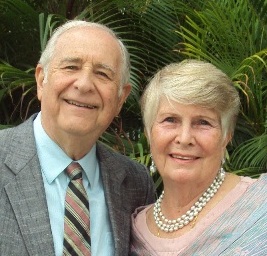
American Dixie Cooper August 1979 Whitefield
Dixie (1937 – 2020) felt inner peace on her first trip to India to see Sathya Sai Baba in 1979. She wrote a book of her life and spiritual journey called From Darkness to Light published in 2009.

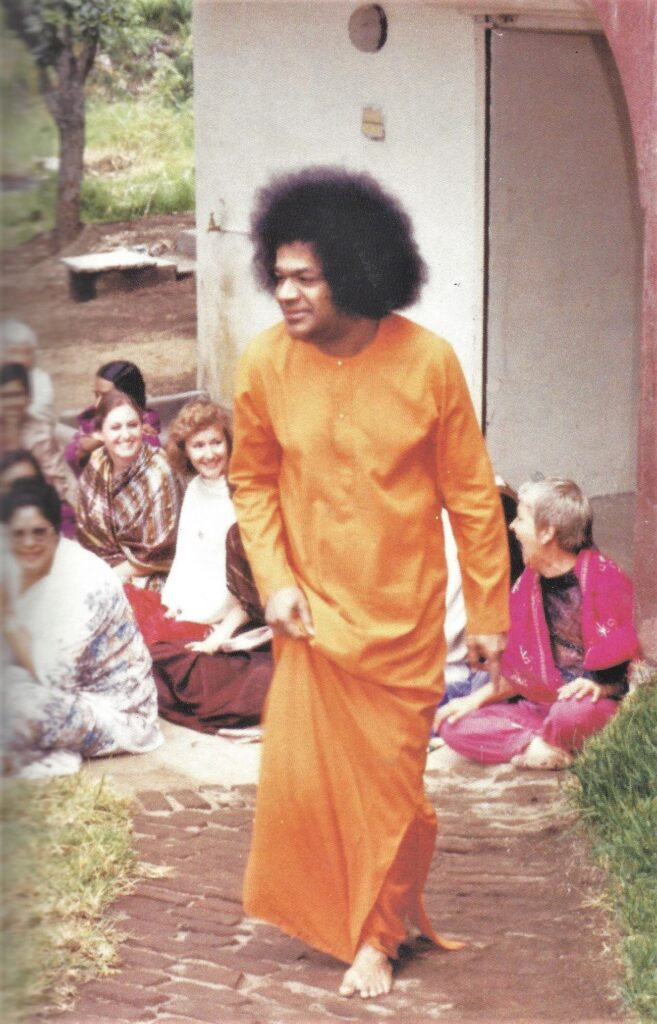
American Bruce Bouche 1979 Prasanthi Nilayam and stayed for 6 months on this first trip
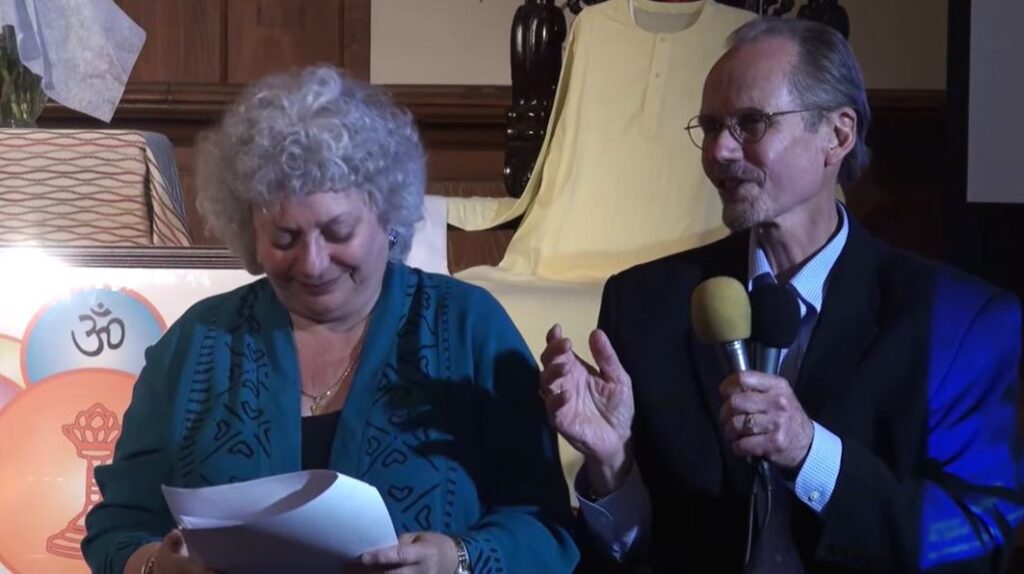
Argentines Ananda Giri, Monica Zocolosky, Marta Basan, and group 1979 Prasanthi Nilayam
Ananda Giri first heard about Sathya Sai Baba in 1969 from Indra Devi, when he lived in the Los Angeles ashram of Paramahansa Yogananda. It was there, in 1978, that Richard Bock gave him a copy of Aura of Divinity, one of the first films about Baba, shortly before he returned to Argentina.
Ananda Giri, a yoga teacher, settled in Villa Carlos Paz, in the lovely Mediterranean-like region of Córdoba. Inspired by his friend Kriyananda and the personality of Paramahansa Yogananda, he decided to organize a spiritual tour of India in 1979, with one stop at Prasanthi Nilayam. He screened Aura of Divinity in Buenos Aires and Córdoba. Two seekers on this pilgrimage were Monica Zocolosky and Marta Basan. Eventually, it would be Monica who started the first Sai Center in Argentina, while Marta remained in India and lived in Prasanthi Nilayam for fifteen years.
Prior to the organised the trip to India, Monica Zocolosky had experiences of Sai Baba. One day, she came across a pamphlet about Baba in Buenos Aires, but there was no photograph. She began having dreams of a man in orange, who she thought was her guardian angel. Later, Monica heard of a divine incarnation in India named Sathya Sai Baba. Shortly after, she was in a bookstore when a book fell on her head. It was Sai Baba: The Holy Man and the Psychiatrist, and it opened to a page with Sai Baba’s photograph. She instantly recognised Baba as the one who had been appearing in her dreams.
Monica joined the group in the hope of securing an interview with Sai Baba. After reaching Prasanthi, days passed with no interview, but she had a dream in which Baba told her she was to help him in Latin America and that he was going to give her instructions and promised her an interview the next day. As promised, she was called in. Baba indicated she should return to Argentina and open a Sai Centre in Buenos Aires.
American Richard A. Nelson 1979
Always a seeker, Richard (1922 – 2021) went on pilgrimage to India in 1979 and met his kindred spirit, Terry, where they were married by their spiritual teacher, Sathya Sai Baba at his Whitefield ashram, Brindavan, near Bangalore. They lived in Santa Barbara, California.
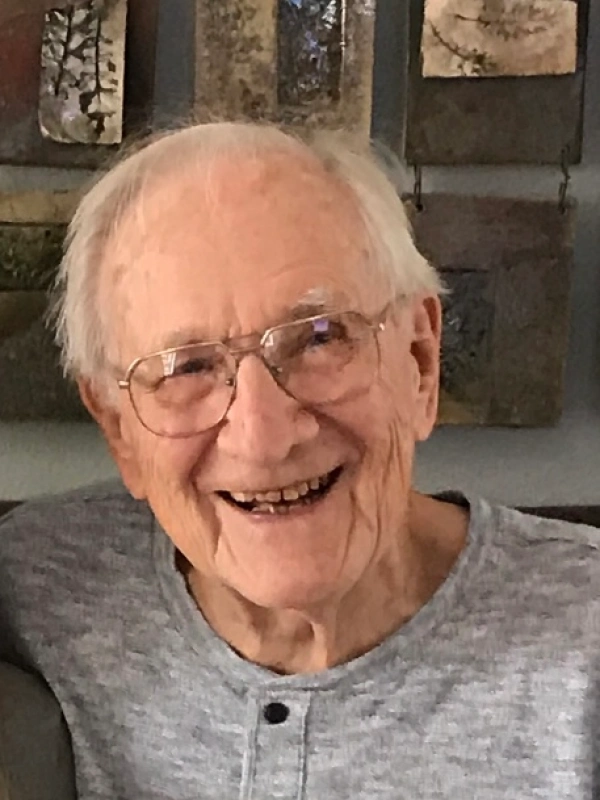
American yoga teacher Larry Payne 1979/1980
While on a year long sabbatical in India from December 1979 to 1980, Larry Payne met with BKS Iyengar, Yogi Bhajan, Sathya Sai Baba, Bhagwan Shree Rajneesh (Osho), Swami Vishnu Devananda, and TKV Desikachar, and his father, the father of modern Yoga – Sri T Krishnamacharya.
https://www.samata.com/meetings-with-indian-yoga-masters
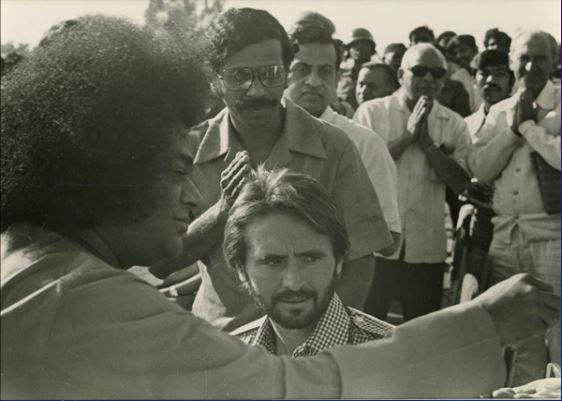
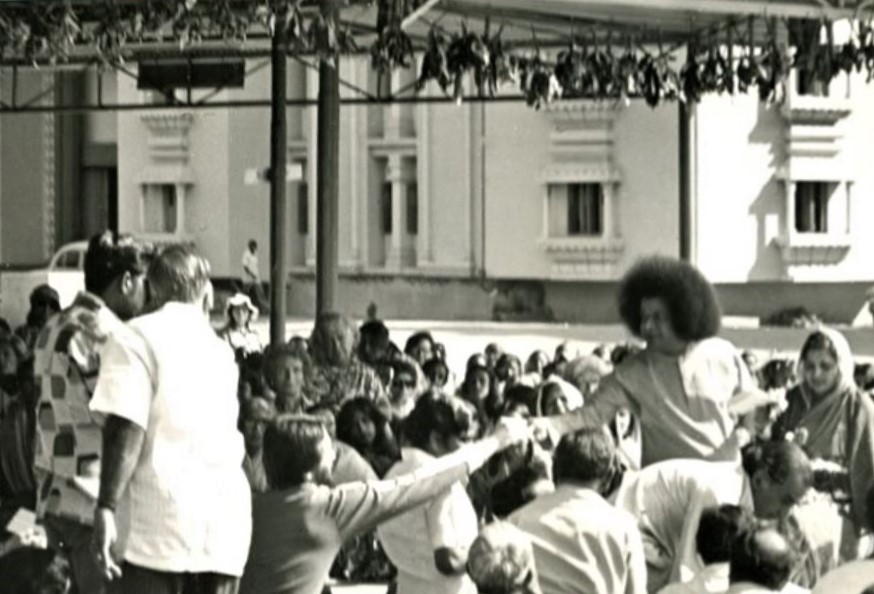
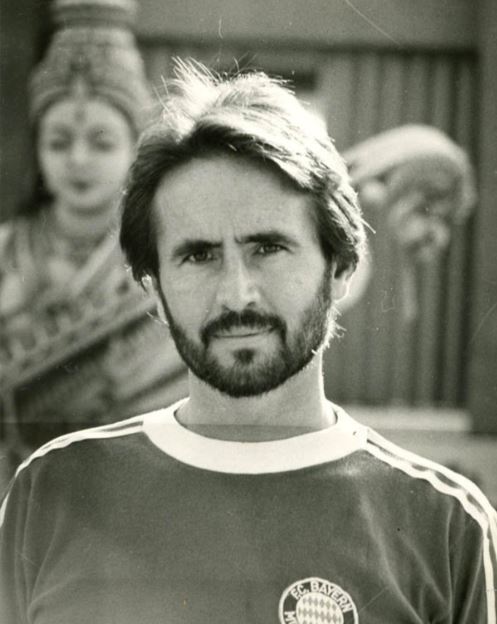
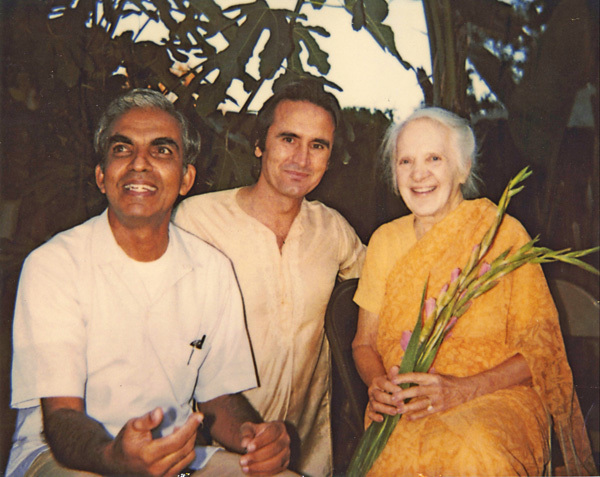
British Peggy Mason and Ron Laing 1980
Peggy Mason was an actress in her young days, and a writer later on. During the second half of her life, she had been writing on spiritual and metaphysical themes, for renowned journals like Two Worlds. She and her husband Ron came to India to see Sathya Sai Baba in 1980. At the first private interview the Masons had, Baba materialised a rosary of 108 crystal beads and put it around Peggy’s neck. He also produced a Baba ring and put it to Ron’s finger. He let the aged couple to embrace Him, and spent almost a full hour with them, speaking kindly and enlightening them on many spiritual points. Man and wife were overwhelmed. They were satisfied that their journey to India, so difficult at their age, had been more than fully rewarded. After that, they had many more private interviews with Baba.
Sathya Sai Baba. Embodiment of Love (1982) by Peggy Mason and Ron Laing.

American Artist Joan Brown and Michael Hebel June 1980 Whitefield
Joan Brown and Michael Hebel visit the Brindavan while travelling through India during May and June 1980, on their honeymoon. They then make regular trips to the ashram from the US.
They had been reading the Sai Baba: The Holy Man and the Psychiatrist written by the psychiatrist Samuel Sandweiss. In this volume the author writes of his personal experiences with Sai Baba, his transformation from an initial skeptic to a confirmed devotee, and his reflections on the importance of spiritualism to his professional held of psychiatry. The book so intrigued them that they added to the end of their itinerary a stop at Sai Baba’s ashram, just outside of Bangalore.
Joan Brown was an internationally known San Francisco Bay-area artist who used mysticism as inspiration for her work. She died in 1990, aged 52, while was installing a mosaic obelisk at the new Heritage Museum in Prasanthi Nilayam, when a concrete turret from the floor above collapsed on her and her assistants Bonnie Lynn Mainric, 43, of San Francisco, and Michael Oliver, 25, also of San Francisco. Bonnie also died in the accident, and Michael initially survived but died later while being transferred to Bangalore. Joan was survived by her husband, San Francisco Police Captain Michael Hebel, and a son from a previous marriage.
After graduating from the University of San Francisco in 1966, Michael Hebel joined the San Francisco Police Department. Where, from his assignment at Park Station in the Haight-Ashbury, he witnessed the 1967 summer of love, Timothy Leary, the Haight free medical clinic, the Diggers and Mime Troupe, Janis Joplin and the Jefferson Airplane – and the dark side including Charles Mason.
In 1968, Mike was a criminology student at Cal-Berkeley where he experienced People’s Park, barb-wire and tear gas with the National Guard on campus. He was frequently on campus twelve hours a day – as a student and then as a mutual aid police officer. After retiring from the SFPD in 1994 as a captain, Mike continued his law and financial planning practices.
He and his wife, Gityjoon, open a retail store on SF’s Union Street dedicated to honoring the world’s great spiritual traditions. This store had arts, artifacts, handicrafts and collectibles from 50 countries with a serenity garden and meditation/prayer room. Mike has journeyed to India more than 20 times. First on a pilgrimage to the sacred sites of Paramahansa Yogananda, then later to visit his guru Sathya Sai Baba, and more recently to visit the ashrams of Ramana Maharshi and Sri Aurobindo.
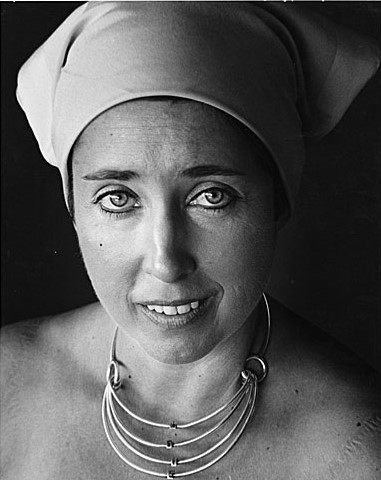
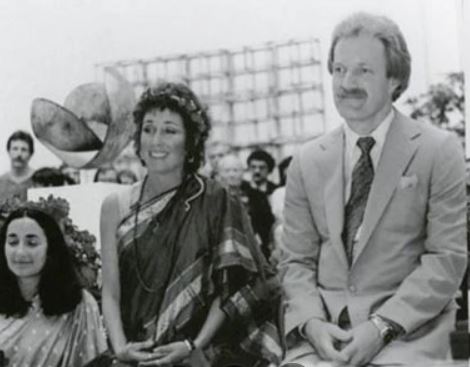
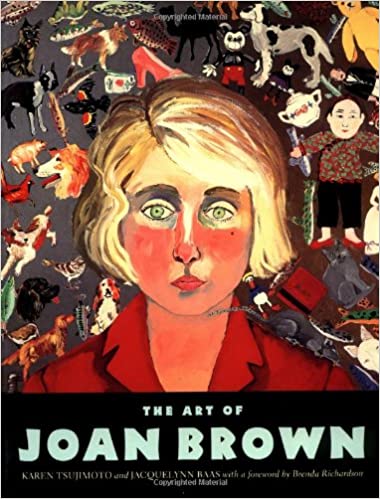
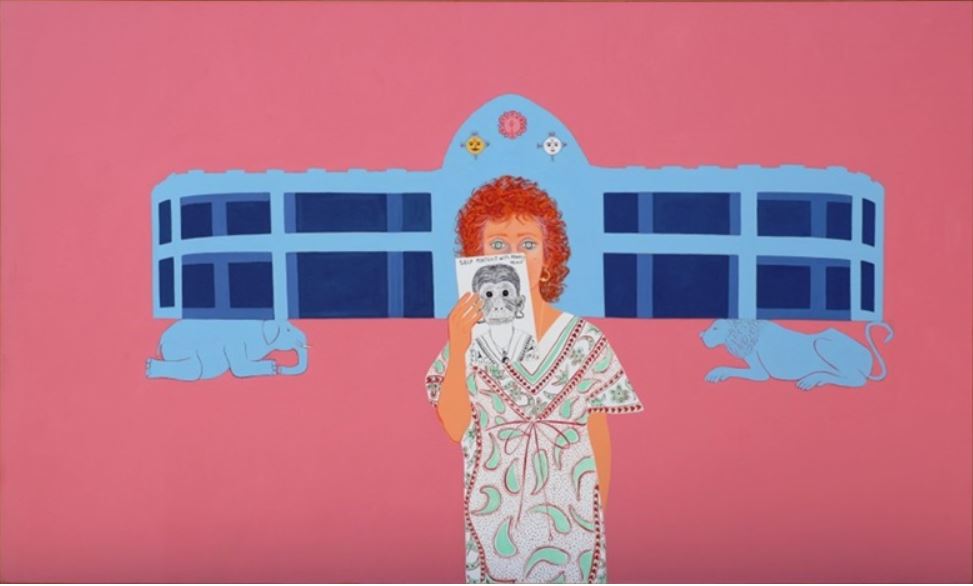
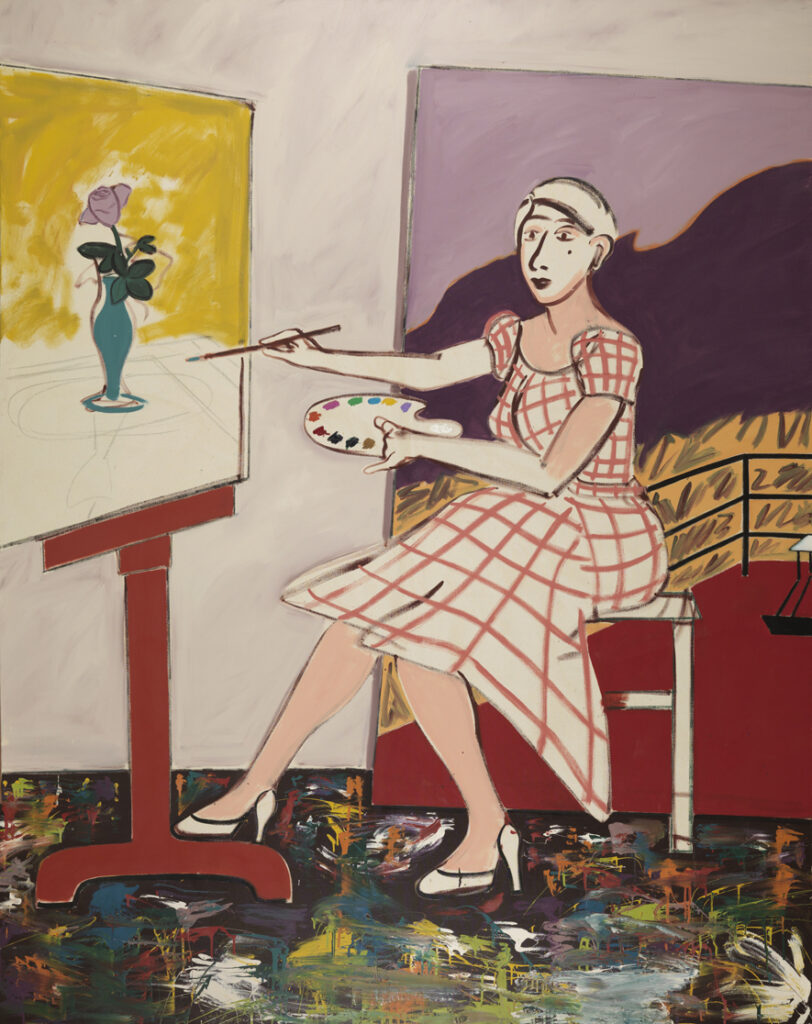
Joan Brown : Self-Portrait, 1977 is one of the most monumental self-portraits that Joan Brown painted in the 1970s in terms of scale and importance to her career. Brown was one a prolific painter in the San Francisco Bay area of the second generation of Bay Area Figurative Movement artists. Her works, such as Self-Portrait show the influences of her training with Elmer Bischoff, in the lineage of avant-garde painters, such as Mark Rothko, Clyfford Still, and Richard Diebenkorn. Their abstract expressionist handling of color, with immediacy and vibrancy, would later influence Brown through her instructor Bischoff. Throughout the 1960s Brown honed her figurative style in thick impasto that incorporated cartoonish figures. This would gradually shift in the 1970s, as she experimented with autobiographical subject matter and the incorporation of spiritual beliefs that she renders in a more restrained layering of paint, often in flat planes of color, as seen in Self-Portrait, 1977. Her brushwork in the work varies, however, as seen in the floor splatters and yellow surrounding the vase, evincing her earlier innovations with thick impasto paint and an abstract-expressionist mode. In many ways, this work is a pivot between her early work and middle period. The background, behind the figure of Brown emphasizes this shift, as Joan’s 1976 work, The Kiss, provides a type of illusionary landscape. The Kiss, 1976 is one of Brown’s most forthcoming perspectives into her personal life, as numerous scholars speculate that it is a self-portrait of Brown wrapped in the arms of her lover among the mountains. In Self-Portrait, only the mountain terrain is visible behind the figure, providing further abstraction to the scene from which Brown, the artist, carefully articulates a still life work. This juxtaposition between abstraction and figuration embodies Brown as a painter and is displayed in Self-Portrait to full effect. https://www.pafa.org/museum/collection/item/self-portrait-73
From Identity Unknown: Rediscovering Seven American Women Artists By Donna Seaman
What better way for the artist to express her gratitude to her guru in celebration of his sixty-fifth birthday than to create an obelisk? At the time, Sai Baba was building the Eternal Heritage Museum near his ashram, Prasanthi Nilayam (Temple of Peace), outside Puttaparthi, his birthplace. The museum is but one of many grandiose structures in the sprawling complex, which ultimately included a music college fronted by a colossal drum, horns, sitars, and guitars; a hospital; a boldly designed planetarium; a sports facility; and a museum devoted entire to Sai Baba’s life. The array of gaudily decorated edifices and garish sculptures resembles a religious Disneyland or a spiritual Las Vegas. The Eternal Heritage Museum, also known as the Sanathana Samskruti Museum and the Museum of the Religions of the World, was built in the style of a Hindu temple with three high, elongated domes. It celebrates a central teaching of Sai Baba’s, the unity of all religions, by illuminating each tradition’s teachings and the lives of spiritual masters and saints. Brown and Hebel were on the steering committee responsible for planning the museum’s US exhibition.
Brown planned to erect her elaborately detailed thirteen-foot-tall, five-sided obelisk in the museum’s three-story-high, open central hall, then under construction. She poured all her artistic and spiritual passion into its design, working on it in San Francisco with several assistants. On the bottom tier, against gleaming turquoise tiles, Brown set out fresh variations on one of her favorite themes-animal adversaries coexisting in peace and harmony-creating encircled, paired portraits of an eagle and a mouse, a peacock and a snake, a lion and a lamb. Above these vibrant, gracefully rendered images are plaques, each in the form of a temple and bearing one word in both beautifully formed Sanskrit and English: “truth,” “righteousness,” “nonviolence,” “peace,” and “love.” Beneath these tablets are rectangles containing a text explicating each word according to Sai Baba’s teachings. One reads, “To lose peace is to lose one’s mainstay in life. Peace within you is the very nature of yourself and it is attained by abstaining from egoism, attachment and desire.” Above word and scripture is another section of encircled peaceful-animal images, topped by bright flying birds and butterflies. Instead of coming to a pyramidal peak, the top of the obelisk is crowned with “a golden globe etched with a map of the world, symbolic of the universality of Sai Baba’s teachings.”
The obelisk was carefully packed up and shipped in enormous crates, according to one account, to Mumbai on the west coast of India. The crates were then trucked nearly six hundred miles south and east to Puttaparthi. Brown, Noel, and two assistants, Lynn Mainrec and Michael Oliver, traveled to Bangalore in September 1990. The plan to change, her relationship with her husband was going to change. I felt she couldn’t end her life in a better time. So many people are sad and bitter when they die. I think she had a very glorious end.”
American Tom and Kay Scoville and family 1981
The Scoville family would stay until 1982 and then return on their second visit in 1998.

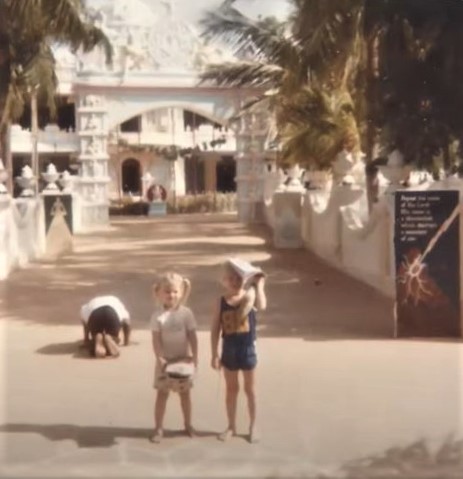
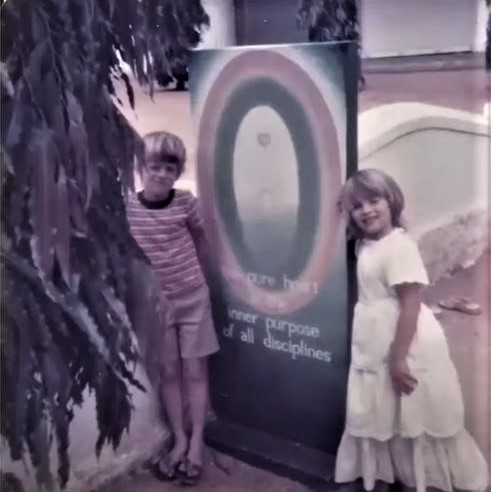

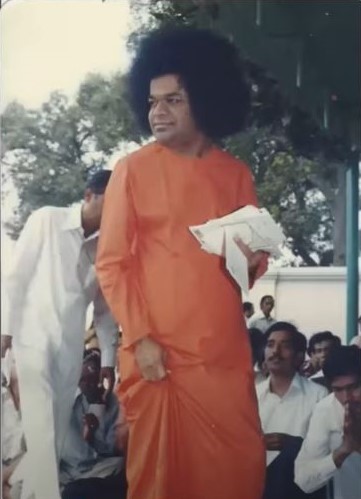
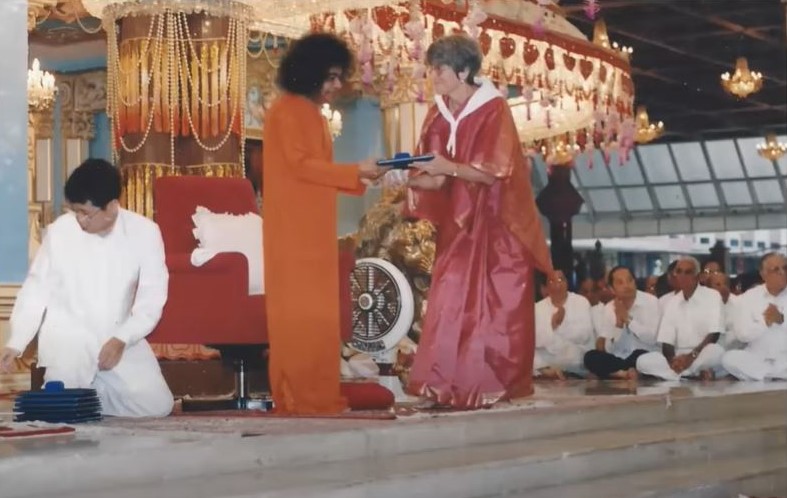
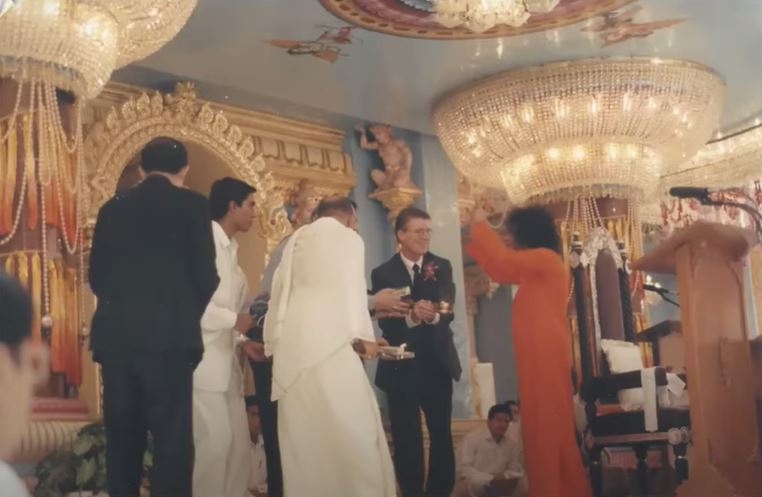
Lucas and Jean Ralli January 1981 Whitefield
It was not until January 1981 that I made my first pilgrimage to find Bhagavan, although by this time I was in daily contact with him in meditation and through the messages. We spent two and a half weeks in Bangalore as Bhagavan was at Brindavan, and we attended darshan there twice a day. I was longing for an interview, but although Bhagavan looked at me and right through me on several occasions, there was no interview. Then Bhagavan left for Madras and was due to go on to Bombay. In a message, He told me to go and wait for him in Bombay which is what we did. Then He arrived and we had the most wonderful darshans at the Dharmakshetra. Again Bhagavan looked at me and right through me. And on the last morning, just before he left Bombay, he called our little group of four people for an interview. Once inside the interview room, time became timeless and it seemed as though Bhagavan enjoyed playing with us, his children, and would give us anything we wanted. The whole atmosphere was utterly divine.
We returned to London but knew that we would be back in India before the end of the year. And in October 1981, we arrived at Puttaparthi just in time for the Dasara festival.
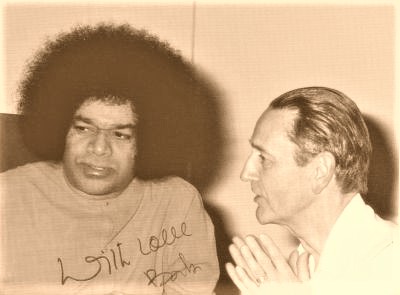
Dane Dr Thorbjørn Meyer February 1981 Prasanthi Nilayam and then with wife Marianne Meyer and 14 other Danes in December 1981
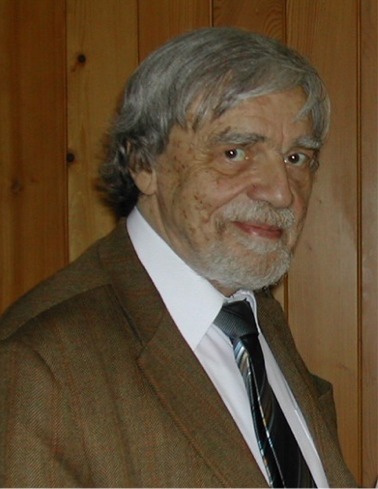
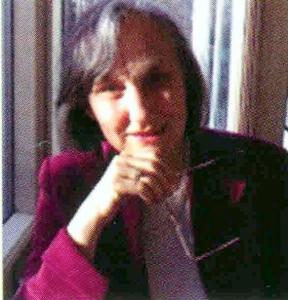
Argentinian Leonardo Gutter 1981 in the Madras ashram, Sundaram
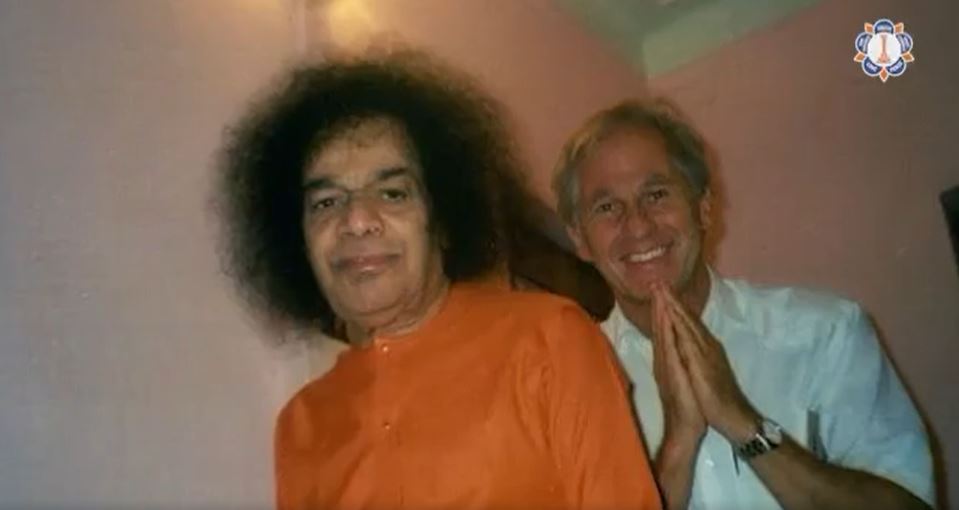
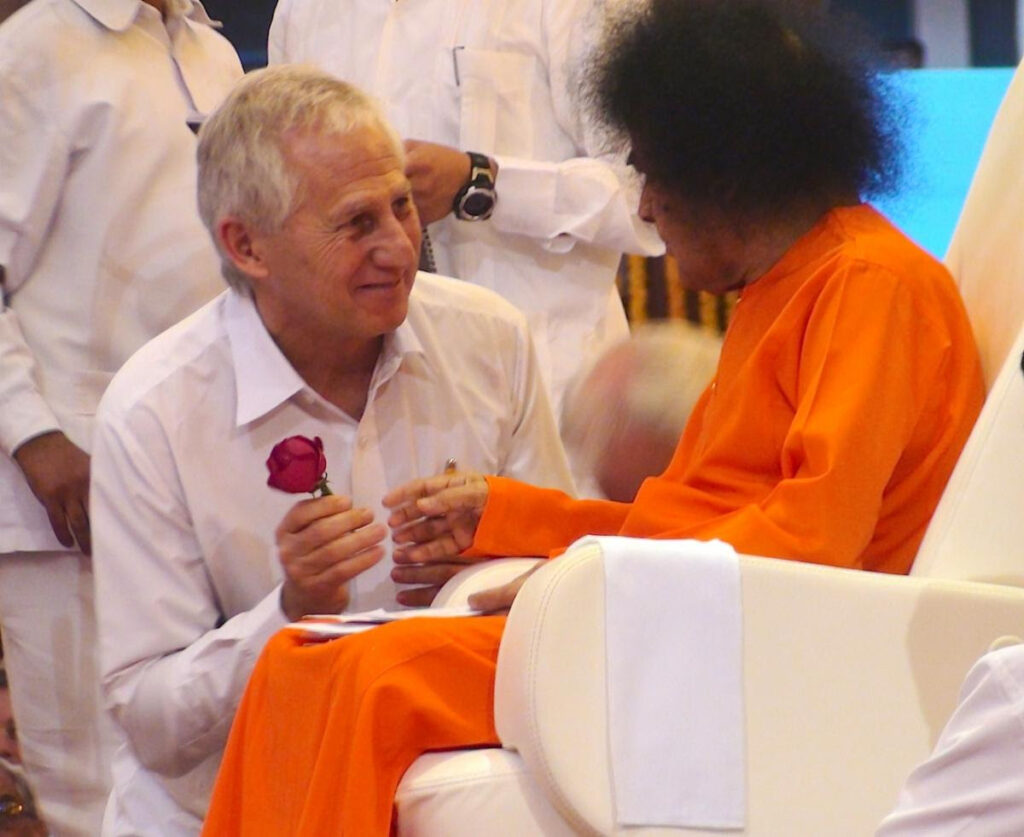
Italian Catholic Priest Don Mario Mazzoleni August 1981 Prasanthi Nilayam
Mario Mazzoleni is the author of three books about Sai Baba A Catholic Priest Meets Sai Baba (1991), The Interview (1998), The Wish-Fulfilling Tree (2002).
This interview by Ted Henry of former Catholic Priest, Don Mario Mazzoleni (left) was recorded in September 2000, just before he died in September 2001. Because of Don Mario’s feelings towards Indian Holy man Sai Baba, he was excommunicated by the Vatican. Don Mario is the author of the book, A Catholic Priest Meets Sai Baba, must reading for those interested in spiritual growth. Don Mario’s translator for this interview (and for his book) is Dr Christian Moevs (right), Professor of Italian Literature at the University of Notre Dame, he is a leading world expert on Dante. His own interview can be seen here at https://www.youtube.com/watch?v=fJgIdbzY-1k
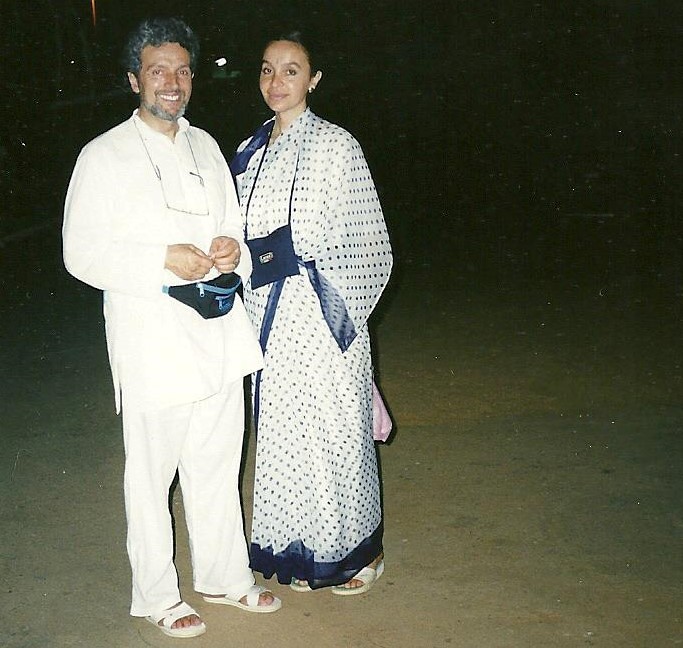
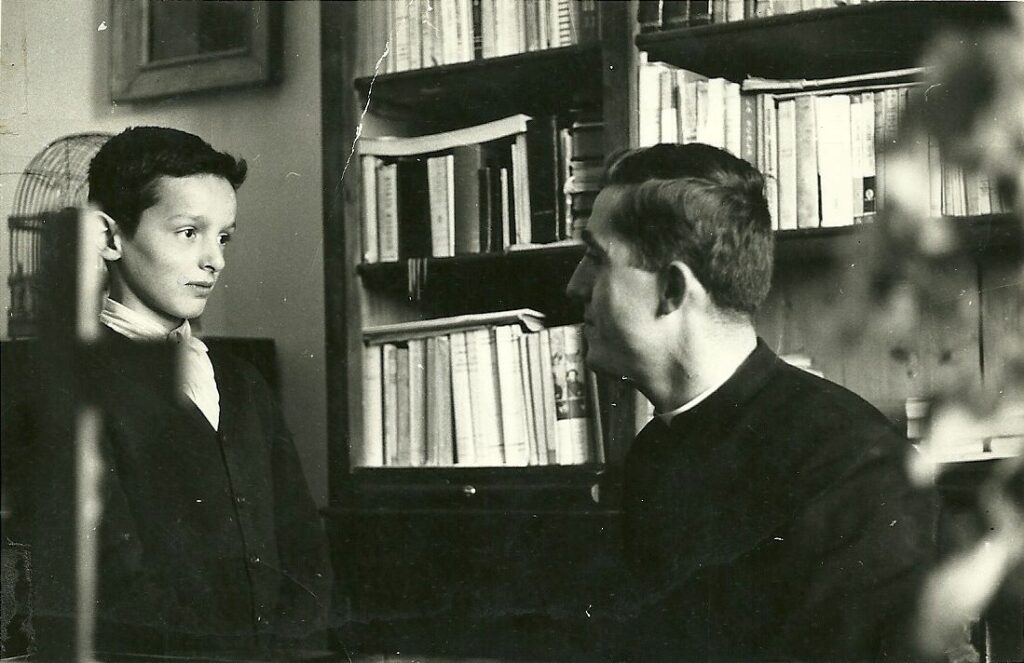
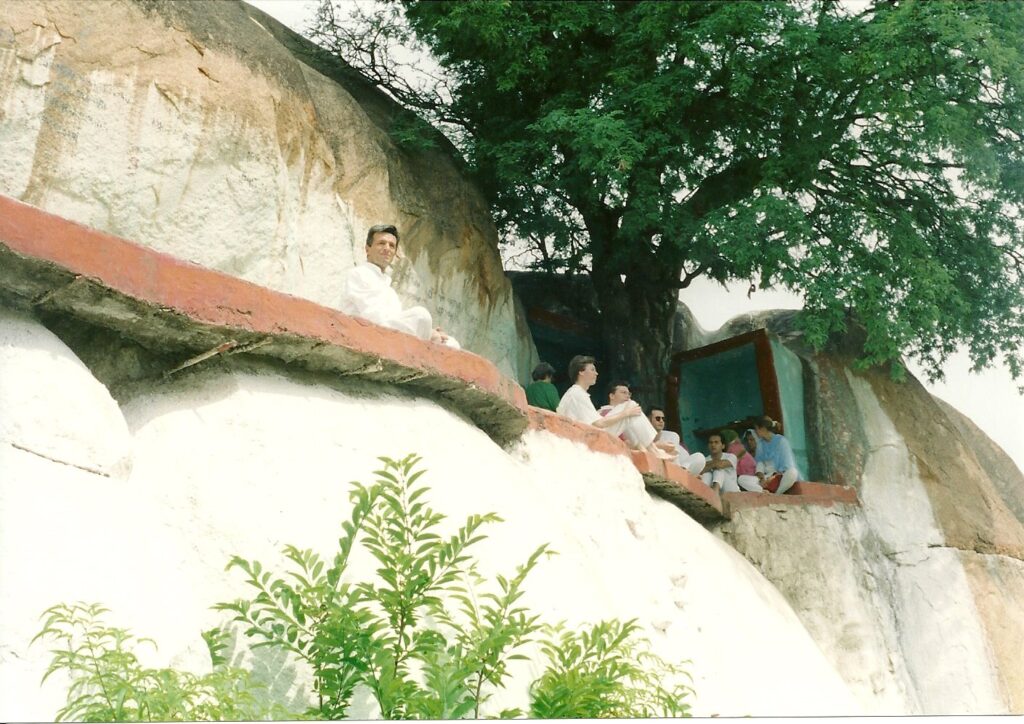
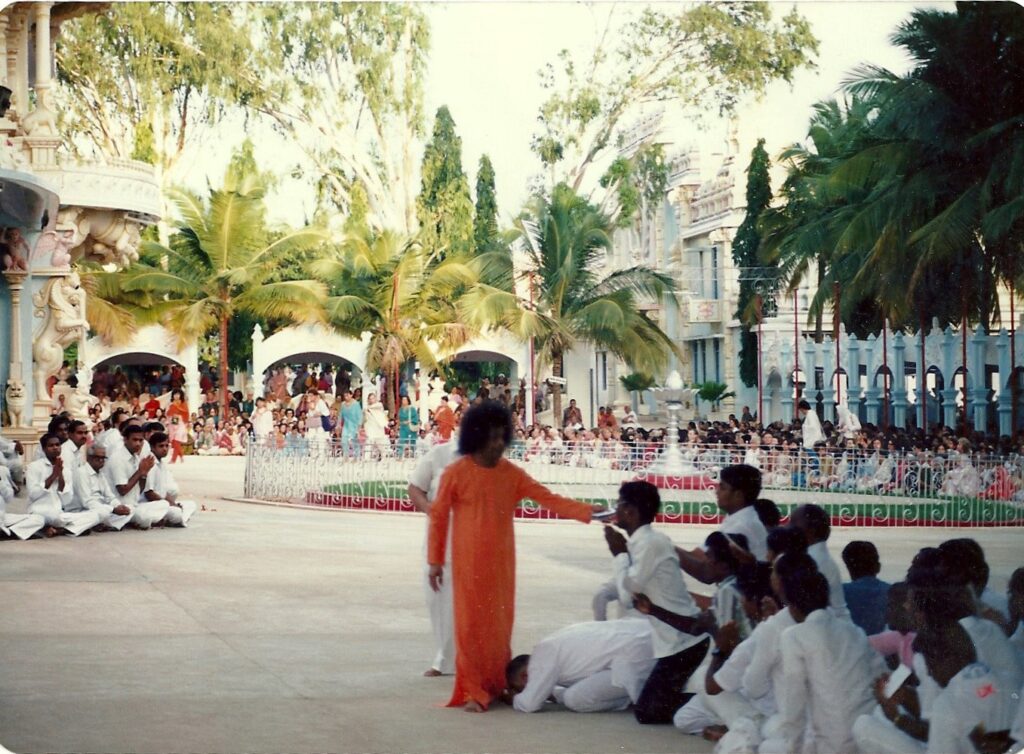
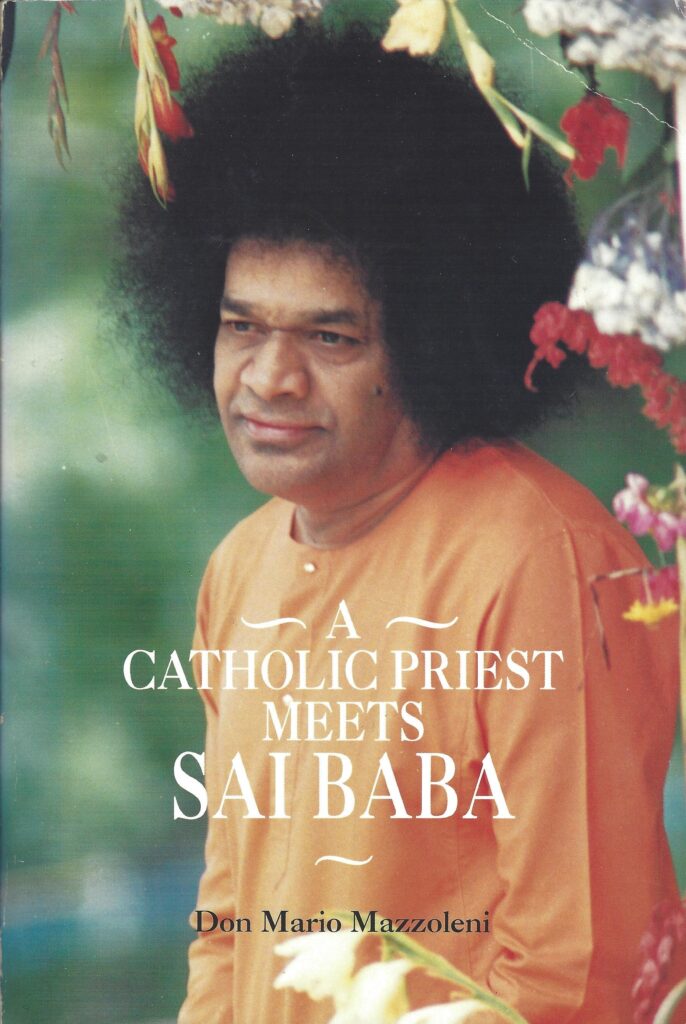
Dane Birgitte Rodriguez 1981 Prasanthi Nilayam.
Birgitte Rodriguez lived on the Sri Aurobindo Ashram for nine years before meeting Baba.
Birgitte first went to India as a young woman in 1968, visiting Rishikesh, Pondicherry and Madras (Adyar). She would later return to Pondicherry in 1972, to live on the Aurobindo Ashram for the following nine years.
She wrote Glimpses of the Divine published in 1993. It is an account of one devotee’s spiritual odyssey through Catholicism, Zen Buddhism, and Sri Aurobindo to the feet of Sathya Sai Baba. There are many personal recollections written in an easy to read, yet reflective narrative.
From Glimpses of the Divine – The dictates of my inner voice now told me to turn to the East, and I decided to follow. Accompanied only by a suit- case packed with light summer clothes, I boarded a flight for Bombay. My first encounter with India came that evening as I sat down to a sumptuous meal in an expensive hotel. So shaken was I by the abject poverty in the streets outside that my tears made it impossible to continue eating. On retiring for the night, however, I felt a strange sacredness in the atmosphere of the country, an utter contrast to the West, and it felt as if my whole being was enveloped in that sacred atmosphere.
The next morning I left for Rishikesh, reputedly one of the holiest places in India. My destination was the Sivananda Ashram, situated on the Ganges River a few kilometres outside Rishikesh, where I was fortunate to be allocated a room in a new guest house. At one point I took the opportunity to visit the Mahesh Yogi’s Ashram, on the opposite bank of the Ganges, and was astonished to find the place surrounded by barbed wire.
A friend and I were ushered into a large hall, but found the presence of the Mahesh, seated on a tiger skin on a raised platform, unattractive. We were told we could be given a mantra – after paying a sum of money. Unimpressed by the experience we returned hurriedly to the Sivananda Ashram. During my stay I took a daily morning bath in the Ganges River, for the waters are regarded as holy. High up the river, just as it came down from the Himalayan foothills, a curve in the embankment formed a pool of crystal clear, cool water. A swim in its waters always proved immensely refreshing and recuperative. It was at this ashram that I first heard about Sri Aurobindo and the Mother. Back in Delhi, and intending to return to London, I bought a book by Sri Aurobindo that created such an impression I altered my travel plans and went to Pondicherry in South India, where the Sri Aurobindo Ashram was situated.
I arrived on August 15th – Sri Aurobindo’s birthday – for a three-day stay. The ashram looked like an exotic garden, with beautiful flower arrangements everywhere, and the entire setting seemed permeated by light and charged with the highest vibration.
Sri Aurobindo had died in 1950, and his marble tomb was covered with a thick carpet of fresh flowers in two shades of purple, by coincidence the same two shades that were featured in a sari I had just purchased. But five years were to elapse before I was to return to the ashram, meet the Mother, and stay for many years.
My next spiritual inquiry led me to J. Krishnamurti whom I followed for four years. On returning to Madras from Pondicherry, I discovered that Krishnamurti was to give some lectures and checked into the Adyar, The Theosophical Society, where a number of his devotees were staying. That evening the venue for the talk was a big private garden, bathed in crimson light from the sun slowly setting on the horizon. There was a condensed atmosphere of something very oriental that warm evening under the stars. Suddenly Krishnamurti came out of the house, a man in his 60s with snow-white hair and a distinguished, elegant appearance. He sat down on a platform, with microphones in front of him, and focused his attention on the audience. Then he began to speak:
“…There is only one factor, and that is this sense of great compassion. And that compassion IS when we under- stand the full width and depth of suffering, the suffering not only of a human being, but the collective suffering of mankind.
“Don’t understand it verbally or intellectually but somewhere else, in your heart, feel the thing. And as you are the world the world is you, if there is this birth of compassion you will inevitably bring about unity, you can’t help it.”
Krishnamurti was a great saint who lived what he preached, and at that time, I was fascinated by his personality and teachings. I arranged for my son to continue his schooling at Krishnamurti’s Rishi Valley School in India, which Niels said was the best he had ever attended. At the time he did not understand much of Krishnamurti’s teachings, but when he left the school he seemed to be able to appreciate the teachings more than I. After India, Niels’ education continued in England, where a devotee had bought a large estate south of London that was converted into a school impressed by the way the school was run.
During the four years I followed Krishnamurti, I met and married an American artist. It was a short, very painful marriage during which I was often reminded of the words of the Mother of Sri Aurobindo’s Ashram, “these artists… much of it is barren; when one sees the artist at work he lives in an atmosphere of great beauty, but when one sees the same gentleman at home there is only a very minor resemblance…” We divorced in a quiet and peaceful way, in circumstances that allowed it to be settled in no time, as if everything had been prearranged. The famous Swiss astrologer, Kundig, once told me during a horoscope reading, “You will always be protected,” and I certainly felt that on this occasion.
Now a new chapter in my life was to begin. I felt alien in the West and the longing for something else, something more, was always with me like a cry from an imprisoned heart. But where to turn? To whom should I pray, because I did not believe in God. My innermost soul felt Indian, and the appeal of Sri Aurobindo’s teachings was immense – so I returned to his ashram. At the entrance were two jasmine trees and I felt they received me with open arms.
It was 1972, and the ashram, at Pondicherry on the Bay of Bengal, was still being run by the Mother. I knew very little about her, except that she had been born in France, but the day after my arrival I scribbled a rather casual note; “Mother, may I see you?” Although at that time she had withdrawn from the world, I received an immediate reply; “i.i. the next day at 10:30.” An inquiry soon revealed that “i.i.” meant an individual interview, rather than filing past the Mother in a long line with other devotees. The Mother’s apartment was in the main ashram building, which was surrounded by a high, white wall with pearl grey borders. Next day I somewhat nervously walked up a long flight of red carpeted stairs to find many devotees waiting in an ante-room. On entering her apartment I encountered intensely elevating vibrations, and I instinctively knew that here lived a great divinity. The Mother was sitting in a chair on a pedestal looking infinitely superior to all that surrounded her, yet radiating such gentleness. In her hand she held a white rose – a symbol of purity according to her naming of flowers – which she gave to me. I was asked to kneel and place my head on a cushion on the Mother’s lap. She began gently stroking my hair. No words were exchanged. According to the Mother, “Words reduce, limit, harden, take away the supple- ness and true strength-the life.”
For the first time in my life I had met someone whom I intuitively and instantly knew and felt was truly and genuinely Divine. The Mother filled me with her Divine light. I could literally feel it descend into me. But the feeling of light was not all that happened that day. It seemed as though the Mother must surely have performed some kind of “operation” on me. She said, “I go straight in and what has to be done I do. And the moment when I know exactly, you see, I do this (she gestured) quite slowly from above. I see very well, very well, exactly the condition in which each one is.” I felt this was exactly what had happened. The Mother had “gone straight in and done what had to be done.”
As I left the Mother I was too overcome, for the moment, to go out among the other devotees, although all of them were kind and disciplined and living the Mother’s teachings. Instead, I went out onto the Mother’s verandah to be alone and sat down in the shade of the huge banyan tree growing at Sri Aurobindo’s tomb. Its branches reached up over the Mother’s verandah on the second floor. Sitting there I felt completely turned upside down, as if my inner being had done a somersault. It was probably what the Mother called a “psychic opening,” when the soul opens to the Mother’s touch. Such an avalanche of whatever it was poured down over me-so intensely it translated itself into a sense of unity with everyone and everything, even a blade of grass.
The Mother taught that the individual self and the universal self are one; in every world, in every being, in each thing, in every atom is the Divine Presence, and our mission is to manifest it. Intuitively, without really being aware of it, I felt the truth of this statement. As I sat, I leaned my head against one of the branches of the banyan tree and placed my hand on it. To my utter amazement, I felt in the branch small beats, like a human pulse, but infinitely stronger. I took hold of the branch repeatedly, but there was no mistake, each time I felt the steady pulse of the tree. My whole being was filled with a sense of such gratitude that the Divine really existed, that there was something in the universe which was Divine, that tears ran freely down my face. I was simply unable to stop them.
After this first interview, I was granted another three interviews by the Mother during what was to be the last year of her sojourn on Earth. On one occasion I felt the Mother’s light, or force, come down into me even more clearly. For some probably subconscious reason, it could only get down to my knees, where it met some resistance. Afterward, as I walked up a flight of stairs, I had to lift each leg, one after the other, using both hands under each knee. I was rather alarmed for a time, but by evening everything had returned to normal.
Sri Aurobindo once wrote about the fact that when we are in the process of spiritualisation, we begin to move away from the brilliant poverty of the intellect. Perhaps something like that was happening to me. I found myself more and more in tune with those words, although it was not always easy to follow the teachings, given the intellectual heights in which Sri Aurobindo moved. But for many years, as others read the Bible, I would read Sri Aurobindo, and I made sure that whenever I travelled I always had one of his books with me.
In 1981, I left the ashram for good. I had been there since 1972. For some reason, I woke one morning and received a clear command to leave – there was not the least doubt in my mind as to what to do. I wondered later whether this could have been the influence of Sri Sathya Sai Baba. Before evening on that day, everything had been donated to friends, and I left early next morning in an Ashram car for Madras airport. From there I flew to Copenhagen with no plans for the future and not knowing what it would bring. I was content to leave everything in the hands of providence. As a parting gift, a spacious apartment designed by my son, who at age 29 worked as a successful architect in New York, was donated to the Ashram.
I had met Baba earlier in 1981 during a brief visit to his ashram, and although I had by no means surrendered to him, I somehow felt a peculiar inner relationship with him. In fact I had not been able to see a picture of Sai Baba in the township of Pondicherry without struggling to hold back tears.
It is to repay, in however small a degree, the debt I owe to Sri Aurobindo and the Mother that material about these two great Divinities has been incorporated in this book. It is also in the hope that others may get a glimpse of the truth of their delightful teachings and share my experience of their blessings.
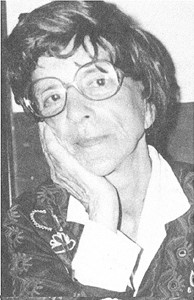
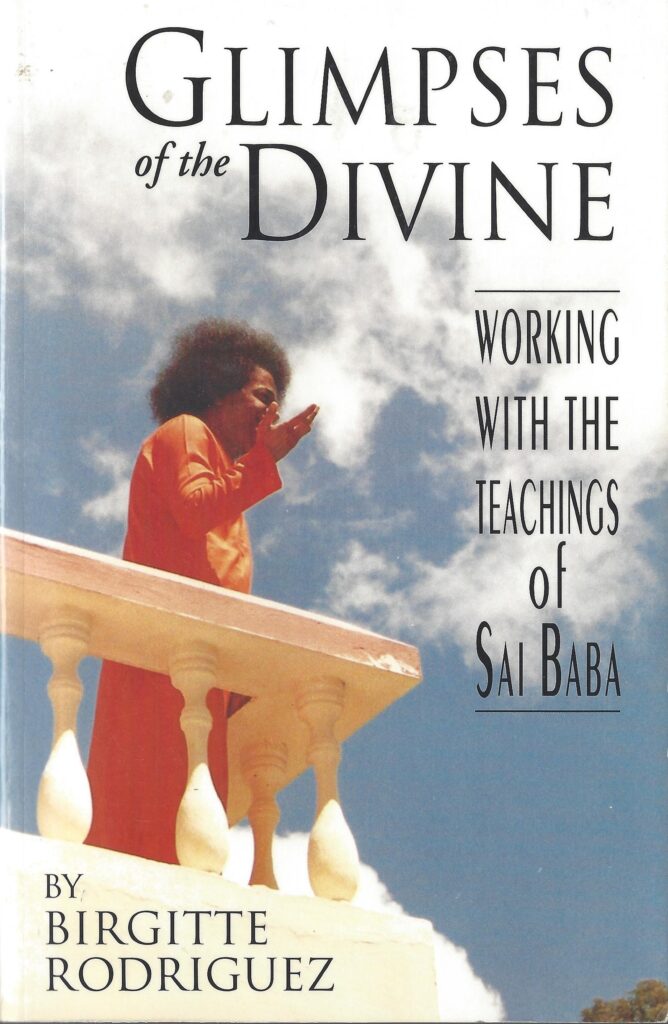
Americans Raye and Joy Thomas December 1981 Prasanthi Nilayam
Joy Thomas wrote five books about Sathya Sai Baba – Life is a Game. Play It (1989), Life is a Challenge. Meet It (1991), Life is a Dream. Realize It (1992), Life is Love. Enjoy It (1994), Life is Awareness (1995).
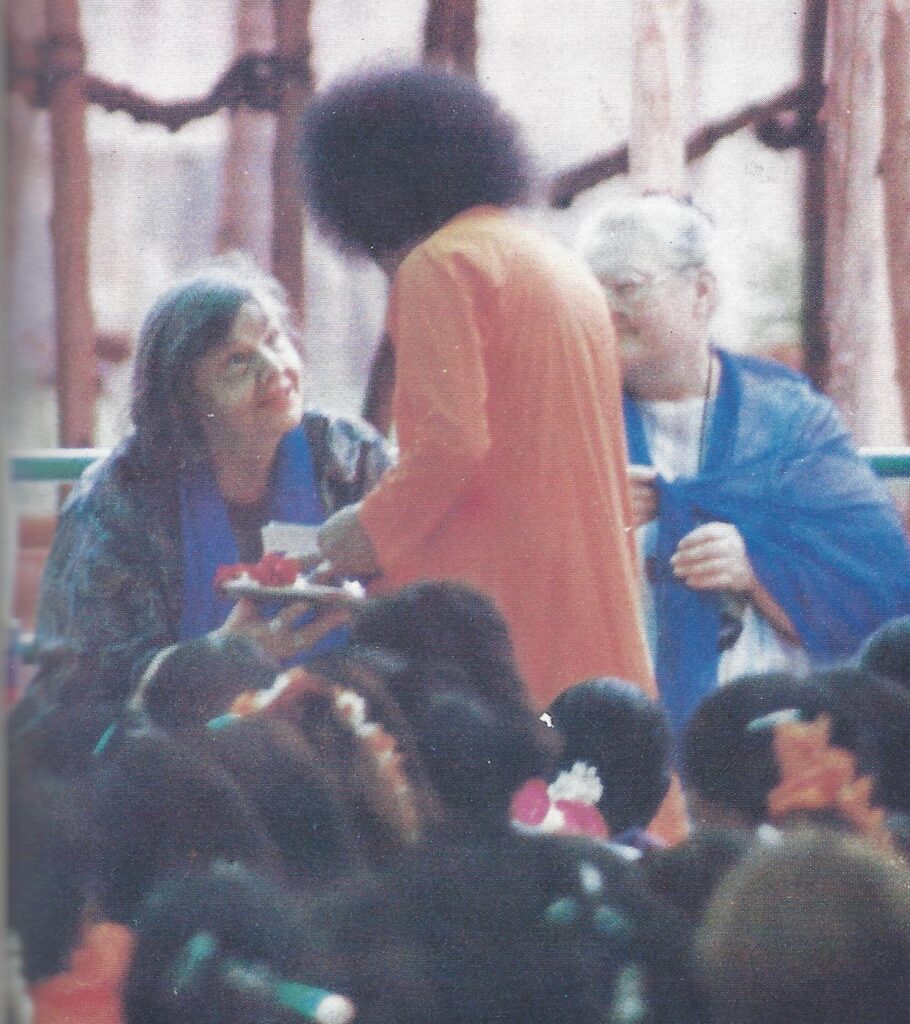
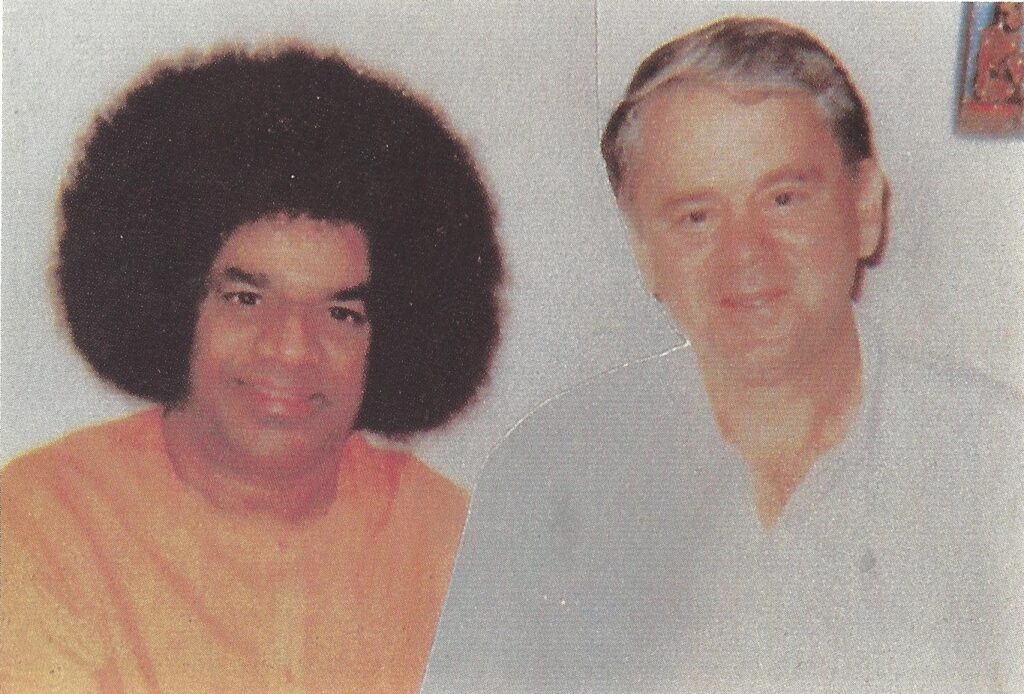
Argentine Mr Hugo Baldi and family 1981
After Hugo Baldi and his family returned to Argentina in 1981, together with other new devotees, he began undertaking extensive social service. Hugo relates, “When the devotees decided to buy an abandoned mechanic’s shop on Uriarte Street and move the Paraguay Street Centre there, I was initially opposed to the idea, until I had a dream in which Swami and I entered the workshop and he began to dance. This confirmed to me that the Uriarte Street building was the appropriate location.” The workshop required a great deal of remodelling, but it has since become the largest Sai Centre in Latin America, often with 400 devotees in attendance.
American Yaani Drucker 1982
Yaani Drucker says that Sathya Sai Baba has led her through an inner journey, which she says has synthesized his teachings with “A Course In Miracles” and the Bible. All her experiences and interviews with Sai Baba support her conviction that he is the world teacher who has come to lead all humanity back to its divine source. Her book Not Guilty – Undoing the Illusion of Separate Existence was published in 2008.
Americans Connie Shaw and fiancé Jim Wright 18 March 1982 Prasanthi Nilayam
Connie Shaw is the author of Wake Up Laughing: My Miraculous Life With Sai Baba (2000).
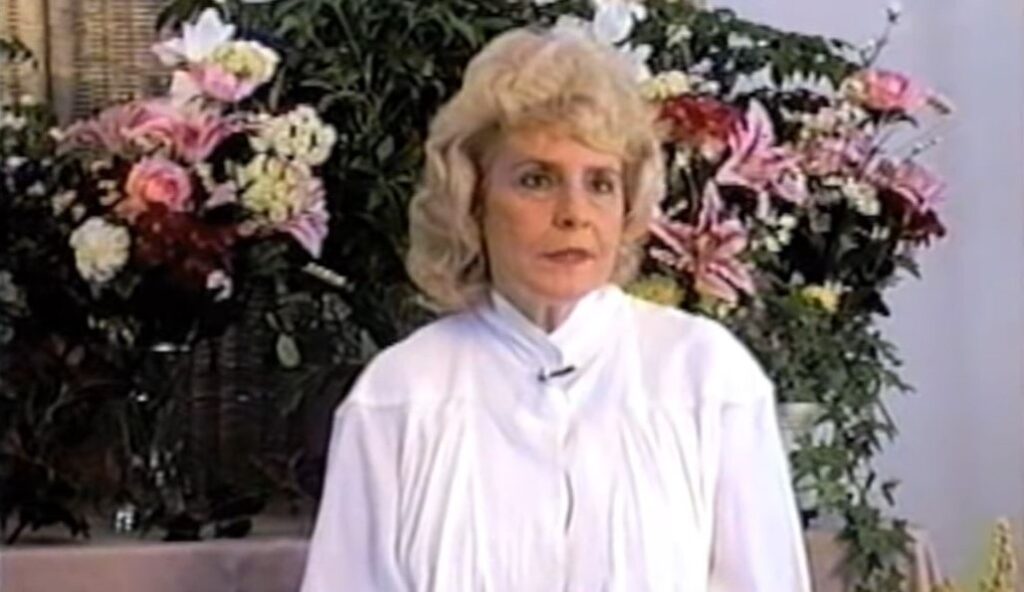
German healer Kai Kroeger Christmas 1982 Prasanthi Nilayam
Sathya Sai Baba visited Kai Kroeger and spoke with him in his house in Germany in 1982. Kai’s first journey to Baba was later in the same year, arriving for Christmas celebrations.
Swiss Victor Tognola 1983
Victor Tognola is an internationally known creative, who expresses his talents in many fields, radio, journalism, television, cinema and commercials. More recently he has directed numerous documentaries based on anthropological research and on the collective memory. The video of two interviews with Sathya Sai Baba in Brindavan (the Whitefield ashram) and Prasanthi Nilayam is from Tognola’s 1990 documentary Who is Sai Baba?
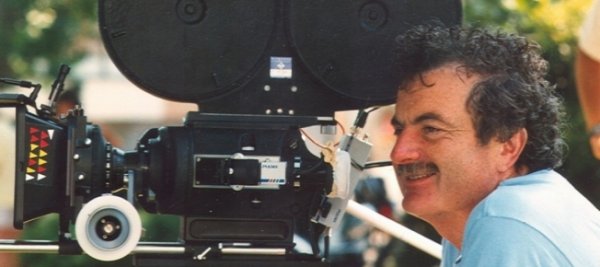
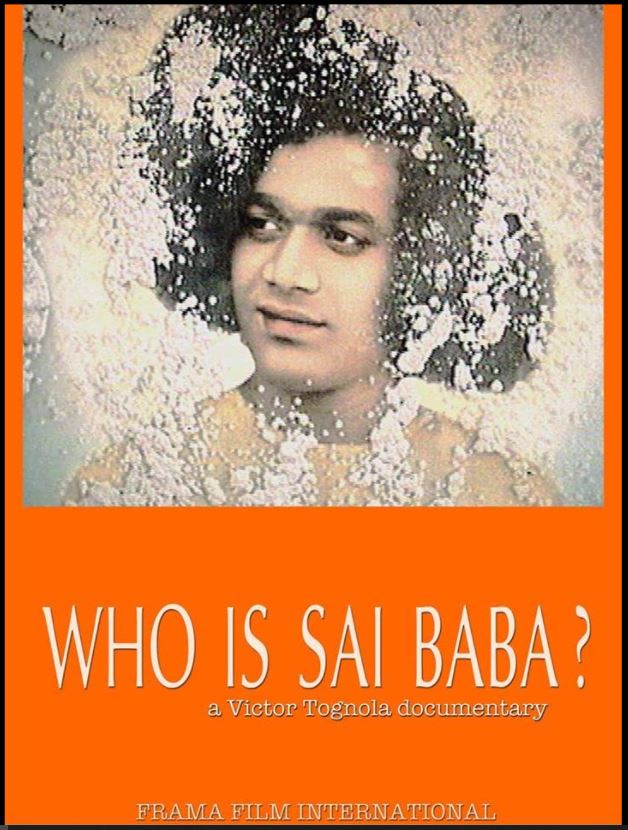
Israeli Barbara Hill 1983
Since I was raised in an atheistic family, I came to know about Sathya Sai Baba the hard way-through a long process of intellectual searching. But during my first visit to Puttaparthi in 1983, something happened that spoke directly to my heart. As a participant in the chorus, I had been practicing Christmas carols to be sung at the Christmas pageant, when one day, shortly before the performance, I overheard two ladies in conversation. One said, “We have been given permission to sing a traditional Hebrew prayer at the beginning of the Christmas pageant, and if you know any Jewish devotees who wish to participate, please let them know.” I gasped at the coincidence of hearing this information, and immediately asked if I could be included. Even though my connection with my religious roots were tenuous, I still considered myself to be Jewish by birth and culture.
You cannot imagine the poignant feeling that swept over me while sitting on the stage of the Poornachandra Auditorium with about 10 other Jewish devotees, singing “Sh’ma Yisrael, Adonai Elohenu, Adonai E’chod. Barouch Shem K’vod Malchuso L’olam Voyed. Amen” (“Hear O Israel, the Lord our God, the Lord is One. Blessed be His Name, whose glorious kingdom is forever, and ever. Amen”). We sang it like a bhajan with the chorus repeating the words, and as I looked directly into Swami’s smiling face, I felt as though I were speaking directly to all of the children of Israel, my kith and kin, wherever they were. How ironic and beautiful, I thought, to have wandered in the desert of my soul for so many years and to have come to India in order to finally feel such a strong connection with my own cultural traditions. My heart filled to overflowing with gratitude to Baba for granting me such an incredible experience.
It was not surprising, therefore, that shortly after a second visit to Baba in 1986, I found myself in a volunteer program, going to Israel to work in a hospital. From the start, my experiences were so extraordinary and illuminating that I stayed on; and, thus, I was in Tel Aviv when the Gulf War began and the SCUD missiles started falling. Even though my family and friends in the States urged me to leave, I felt that I could not. I wanted to be with the people in their trial by fire.
I cannot adequately describe the fear that possessed me when I heard the wailing of the air raid siren. My stomach was clutched by fear, and my fingers trembled, so that I could hardly put on my gas mask. Gone were the feelings of self confidence. Gone were the feelings of Baba’s protection that I had enjoyed for so many years. Gone also, was the treasured connection I felt with Him. Being totally engulfed in fear as I was, made it impossible for me to go into a deep enough meditation which would bring me to a state of serenity where I could feel His love as I had in the past. As the terror-filled days became weeks. I was struck as never before by the courage and bravery of all those who were victims of the Second World War and certainly those who had experienced the horrors of concentration camps. My mind was unable to comprehend how they were able to withstand the unimaginable savagery of a war that dragged on for years. I was ready to fall apart after only six weeks!
Sitting in dejection one day towards the end of the Gulf War, I prayed fervently to Sathya Sai Baba, telling Him how disconnected I felt from Him and asking for some sign that He had heard me. Suddenly, I heard an almost musical “ting” and there, on an otherwise barren formica-topped footstool, standing perfectly upright, appeared the tiny earring that I had lost several days previously and that I had given up ever finding. My eyes filled with tears, my heart filled with hope and love. He was there. He had always been there, watching so closely that He was even aware I had lost the earring. It was I who had somehow become unplugged. Hasn’t He said that He would never abandon those who called Him?
As soon as the war was over, a dear friend, Miriam, who had received information and books about Swami, felt compelled to visit Him in India. Traveling over 12 hours by car after her arrival from Israel, without food or sleep, she finally reached Kodaikanal just in time for darshan. As Swami passed by, she called to Him, “Swami.” He turned and came back to her. She held out her hand on which a medallion with a Star of David had been placed. “Israel, Swami,” she said. (Miriam was raised in a religious family that can trace its matrilineal roots back to King David. She is a survivor of the Holocaust.) Swami placed His own hand over hers and said, “God Bless Israel.”
During a private interview, He encouraged her to start a Centre in Israel It’s tiny, but it’s a start. Now we would like to extend love and friendship to other Sai Centres in the Arab world.
With His grace, let there be peace on earth, and please, God, let it begin with us.
-Barbara Hill Tel Aviv, Israel
American Judy Warner January 1985 Prasanthi Nilayam
Judith Warner Scher (1939 – 2021) graduated from Columbia University and started her work life as an actress and model for TV commercials. She lived in London during the 1970s where Judy sang in clubs and acted in lunch-time theatre. As a composer and lyricist, she wrote three musicals, one produced as a showcase off Broadway. Jazz saxophone player, Illinois Jacquet, recorded one of her songs. Judy sang with Illinois at Ronnie Scott’s music Club in London.
She then left the theatre and became a book editor and occasional writer. She compiled and edited Transformation of the Heart (1990), The Dharmic Challenge: Putting Sathya Sai Baba’s Teachings into Practice (1994), Inspired Medicine (2000) and Let the Clock Run Wild (2014) as well as edited other people’s books and stories.
Judy moved to Santa Barbara and travelled extensively with her second husband, Jack Scher. After 16 visits to India and Sathya Sai Baba, Judy shifted her life’s focus to service and spirituality.
Husband Jack died in 2003. After he sold his medical publishing business, he became a spiritual book publisher of Sathya Sai Baba books.
Transformation of the Heart (1990) is a collection of stories by people whose lives have been transformed by Sathya Sai Baba. These stories provide a unique and personal glimpse of Sai Baba, the Avatar of this Age and are a few examples of what happens when Sai Baba touches our lives.
Inspired Medicine: Sathya Sai Baba’s Influence in Medical Practice (2000) narrates the experiences of physicians inspired by Sri Sathya Sai Baba, the reader sees how both the patient and the doctor are transformed.
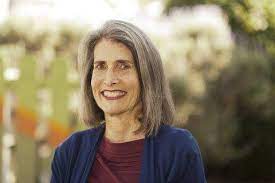
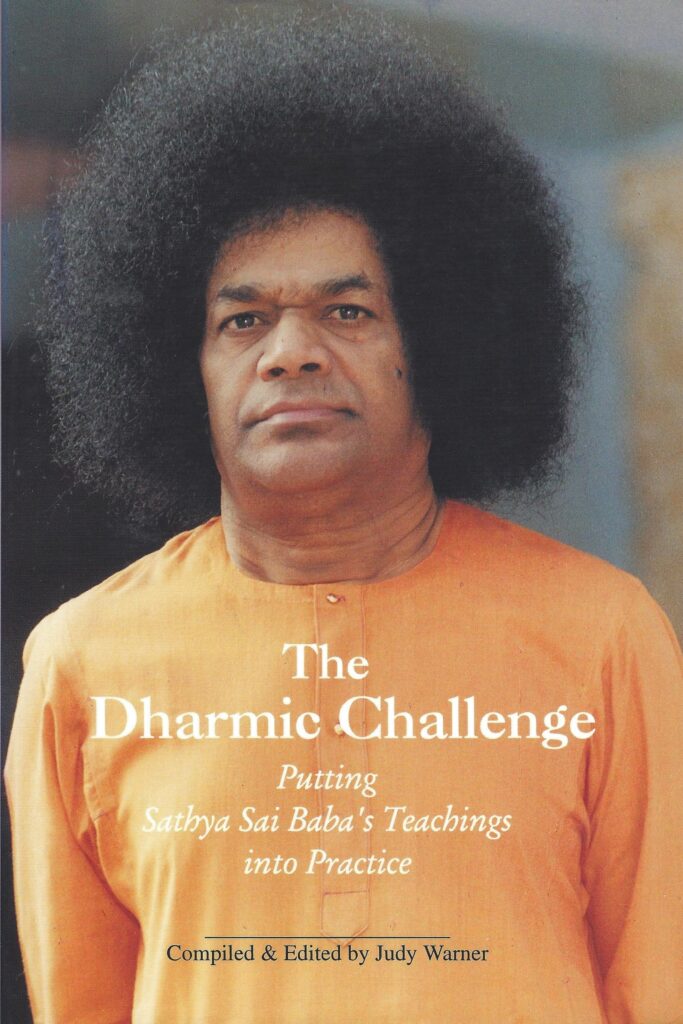
Italian author Antonio Rigopoulos November 1985
Antonio Rigopoulos lives in Venice Italy. He is a Professor by profession in the Ca’ Foscari University of Venice teaching Sanskrit and Indian Religions and Philosophies. He did his MA and PhD in at the University of California, Santa Barbara.
In 1985, young Italian researcher Antonio Rigopoulos conducted field research to Maharashtra and Andhra Pradesh during October and November for the preparation of his BA thesis on the life and teachings of the Indian saint Sai Baba of Shirdi (d. 1918). In Shirdi and surrounding areas, he was accompanied by a local interpreter who led me from house to house and who translated the words of the respondents from Marāṭhī into English. Published as The Life And Teachings Of Sai Baba Of Shirdi by Sri Satguru Publications in 1993. It contains oral testimonies on Sai Baba. The interviews of each day are preceded by excerpts taken from his personal diary.
While at the ashram I carried with me in a small cellophane package the eight mini-cassettes with all the interviews I had collected in Shirdi, Sakuri, Bombay, and Prasanthi Nilayam – including this one with Professor Kasturi – hoping that Bhagawan Shri Sathya Sai Baba might bless them during darshan. On Thursday afternoon of November 14, during bhajans, I was sitting in first line in front of the Mandir and it so happened that the guru came out of his room for one more darshan. He walked straight toward me and graciously blessed me and my precious envelope. On this occasion he played a līlā, i.e. a trick. He repeatedly asked me: “What is this?,” and when I replied: “Interviews with old devotees of Shirdi,” he remained silent for a few moments and slapped me on my left shoulder. Unexpectedly, he then took the package from my hand and asked: “For me?,” and while saying so he turned and started moving away. I had not anticipated that he could do this and for a second – a very long second! – my heart sank and I thought I had lost my invaluable ‘treasure.’ Terrified at the idea of losing the tapes, I loudly replied: “No, no Swami, for a blessing!” He then stepped back and, with a benign smile, returned the package to me with perfect nonchalance. It was a real lesson in detachment and a most powerful exchange which I will never forget.
https://edizionicafoscari.unive.it/media/pdf/books/978-88-6969-447-9/978-88-6969-447-9_9R4GWgW.pdf
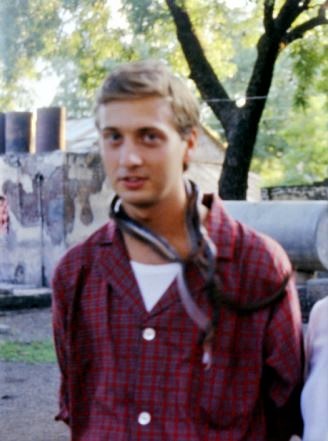

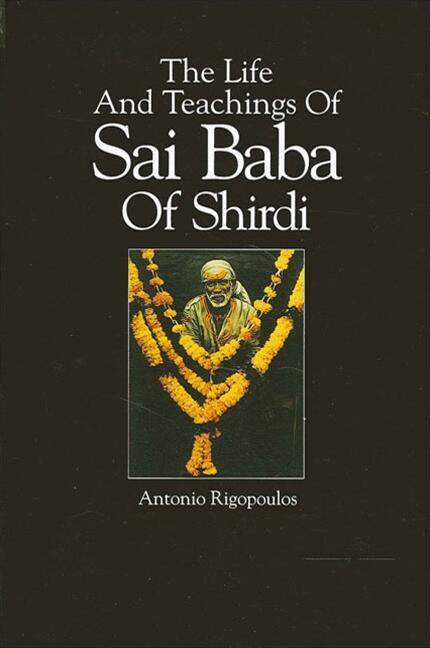
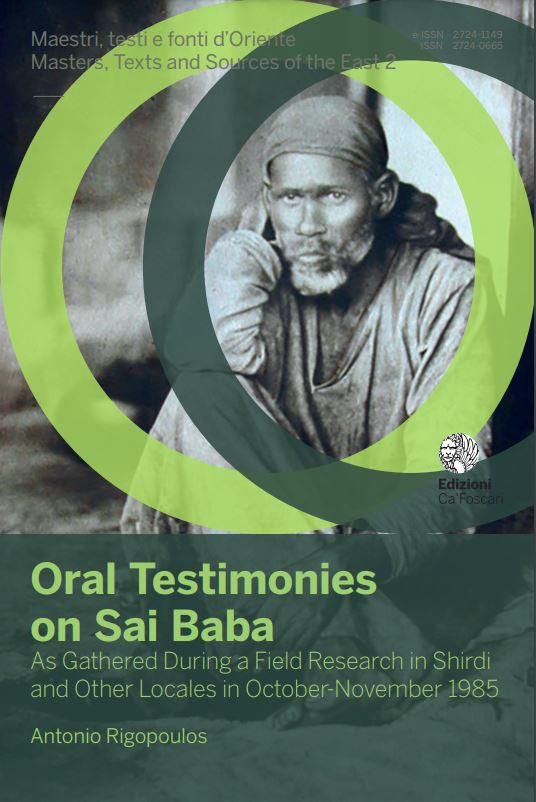
The interviews and audio recordings comprised in this volume are the outcome of a field research to Maharashtra and Andhra Pradesh which took place in October – November 1985 for the preparation of the author’s BA thesis on the life and teachings of the Indian saint Sai Baba of Shirdi (d. 1918), discussed at the Ca’ Foscari University of Venice in June 1987 (Un maestro dell’India moderna: il Sāī Bābā di Śirḍī. L’uomo, l’ambiente, gli insegnamenti). The conversations of each day are preceded by excerpts from the authorʼs diary. These testimonies record the words of various people in the village of Shirdi and other locales, among whom are the last old men who knew Sai Baba: Balaji Pilaji Gurav, Bappaji Lakshman Ratna Parke, Martanda Mhalsapati, Pandharinath Bhagavant Gonkar, Tukaram Raghujiv Borawke, and Uddhavrao Madhavrao Deshpande. While in Shirdi the author was also able to interview Uttamrao Patil, son of Tatya Kote Patil, and in Mumbai he had the privilege of meeting Swami Ram Baba, who first met the saint in 1914. Taken altogether, these conversations are primary sources for the study of Sai Baba and may help to contextualize Shirdi as a pilgrimage place in the mid-1980s.
Download: https://edizionicafoscari.unive.it/media/pdf/books/978-88-6969-447-9/978-88-6969-447-9_9R4GWgW.pdf
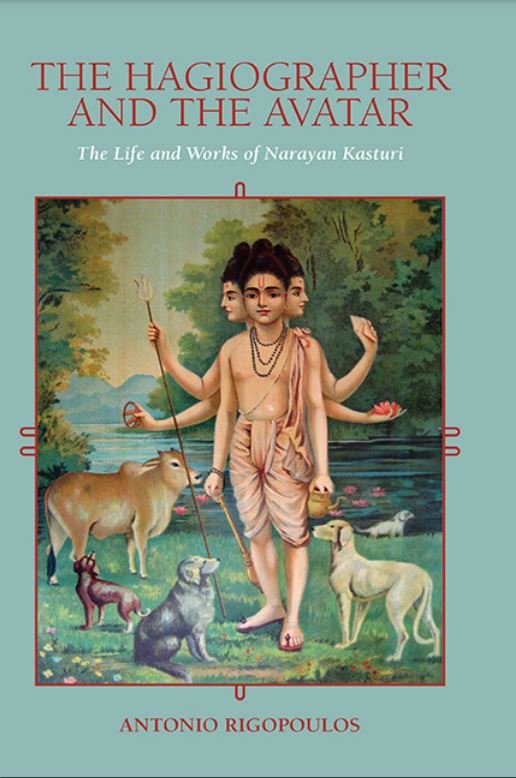
This book explores the seminal roles played by a hagiographer in the making of a charismatic religious movement: the post-sectarian, cosmopolitan community of the Indian guru Sathya Sai Baba (1926–2011), the centre of which is the ashram of Prasanthi Nilayam in Puttaparthi, in the Anantapur district of the southern state of Andhra Pradesh. The case study’s protagonist is Narayan Kasturi (1897–1987), a distinguished litterateur and the holy man’s official biographer, who first met Sathya Sai Baba in 1948 and who lived at his hermitage more or less continuously from 1954 up until his death.
My contention is that in order to deepen our understanding of this pan-Indian hero and his movement, attention must especially be focused upon Kasturi’s background, worldview, deeds, and overall aims and expectations. This is all the more necessary given the almost complete lack of research on this figure. Despite the influence exercised by the four volumes of his hagiography titled Sathyam Sivam Sundaram – venerated as a sacred text by all devotees and covering Sathya Sai Baba’s life from his birth in 1926, up to 1979 – little scholarly notice has been paid to this truly remarkable intellectual. My study is therefore intended as a biography of Narayan Kasturi, sharing heretofore unknown or little-known information. There being no English-language academic studies on Kasturi and his significance in the construction of the Sathya Sai Baba organisation, I hope that the wealth of data on him will be appreciated by both scholars and general readers.
German author Jack Shemesh December 1987
Jack Shemesh writes; In 1987, while I was meditating on the form of Jesus, a very old monk dressed in saffron politely intruded and asked me to come to a specific place in India. He vanished and I awoke from the meditative deep-sleep trance. I arranged a flight to India for Christmas Day 1987.
After the longest flight of my life, I reached the designated ashram of a renowned Spiritual Master by taxi and was fortunate to get an accommodation floor-space in a shed. Christmas was in the air. I went to the Temple grounds and saw a few other men leaning against the compound wall. Suddenly an Indian man in a white uniform with a blue scarf told us all to sit down in the lines. I just plunked down where I was standing, the front person in my line. The uniformed Indian spoke English and passed by me smiling, holding a bag up to my face. I put my hand in the bag and pulled out a token. It said, “number one.”
When number one was called, I proceeded towards the Temple Gates and my line followed in step. On entering the Temple Gates, I was able to have a front-row seat, so I sat on my cushion and crossed my legs to peacefully watch the event unfold. As thousands of people rushed in to grab their seats, the commotion grew, until everyone was seated. The noise of chatter faded as disciplinary silence played into everyone’s thoughts.
And then I spotted him. I saw the monk who appeared in my meditation and asked me to come to India. He was over six feet tall, 97 years wise at that time and was the chief pundit to the Spiritual Master. He walked in steady pace behind The Master along the Temple veranda and took a sneak-peek at me.
Suddenly, The Master turned to face me. He stepped onto the hot compound sand and walked straight to me, smiling with a gleam in both eyes. He stopped and stood right in front of me with both feet touching my toes. I looked down at those feet and suddenly felt my heart being pulled into them. The Master swerved His hand and out poured sacred ash over my head. I fell at His lotus feet, touching them with due reverence and then I kissed them and placed my forehead on them knowing in my heart that The Lord of Lords and The Father Jesus said he would bring me to, were One and The Same.
Ever since that day, my life took on a new meaning and though I saw miracles being performed right in front of my eyes, I learned from my Spiritual Master lessons which only a Guru will demonstrate to teach and discipline a devotee. I knew Him as a fun and even playful Master, but shrewd to the core when the rules that govern the universe and codes of conduct over humanity come into play.
Jack wrote When God Walks The Earth (1992). This devotee’s learned treatise has analysed thoroughly the divinity of Sri Sathya Sai Baba. Sai Baba’s mandir in Prasanthi Nilayam is a replica of creation and reveals all Vedic truth.
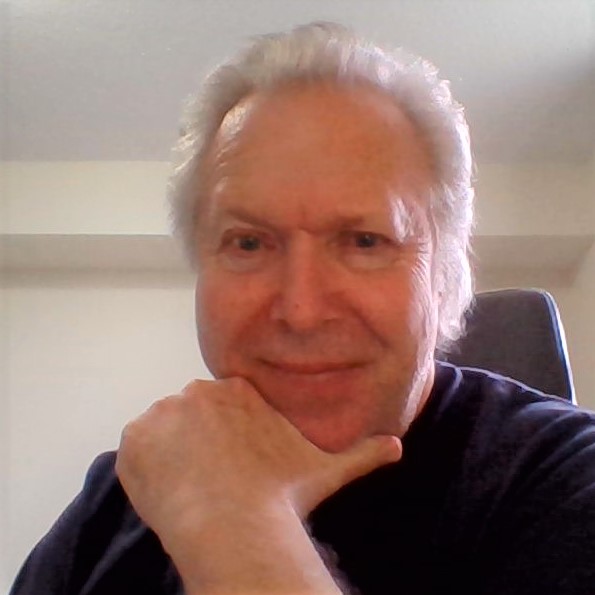
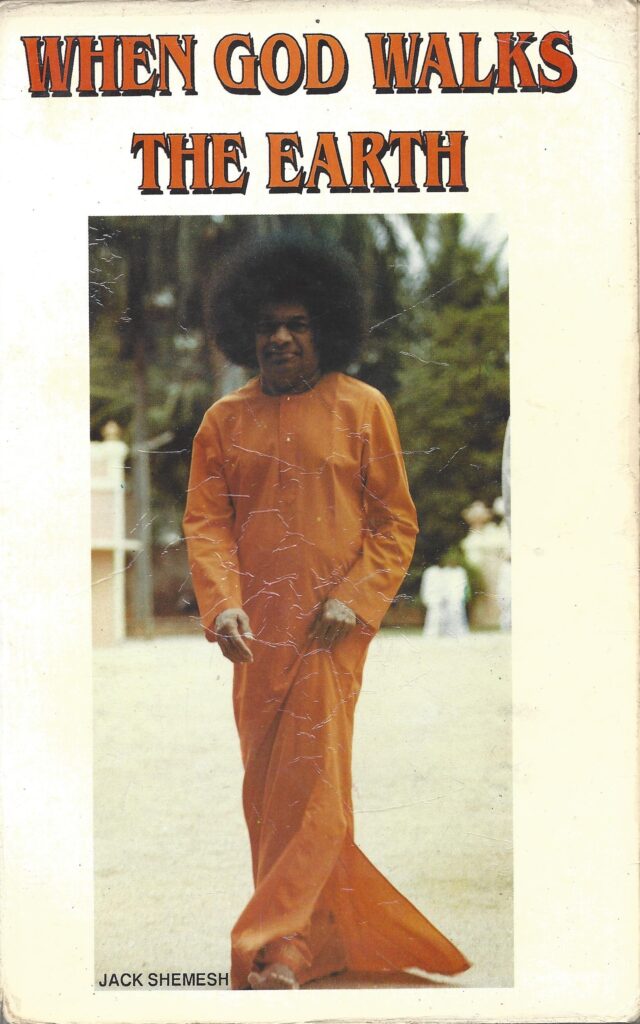
Americans Charlene Leslie-Chaden and Syd Chaden December 1987
Charlene compiled A Compendium of the Teachings of Sathya Sai Baba (1996) and wrote Your Life Is Your Message: Life Before and After Sathya Sai Baba (1999).
Italian Silvia Spinozzi January 1989
Silvia Spinozzi Mazzoleni was born in Argenta, a small town near Ferrara, Italy. After being in business and working in the fashion and entertainment industry, in January 1989 she travelled to Prasanthi Nilayam. In 1994 she marries Mario Mazzoleni, former Catholic Priest and author of three books about Sai Baba.
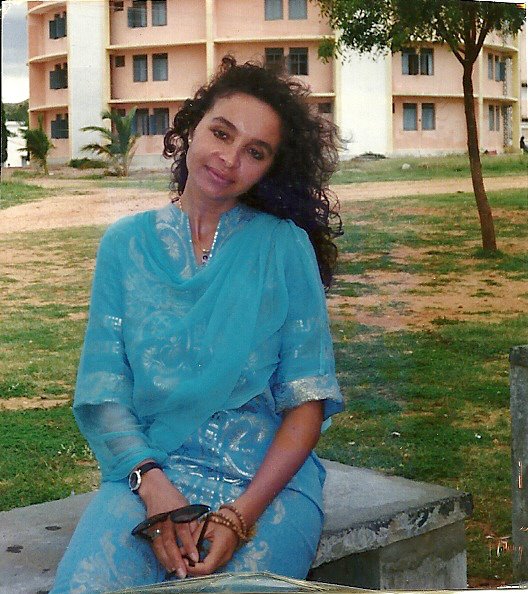
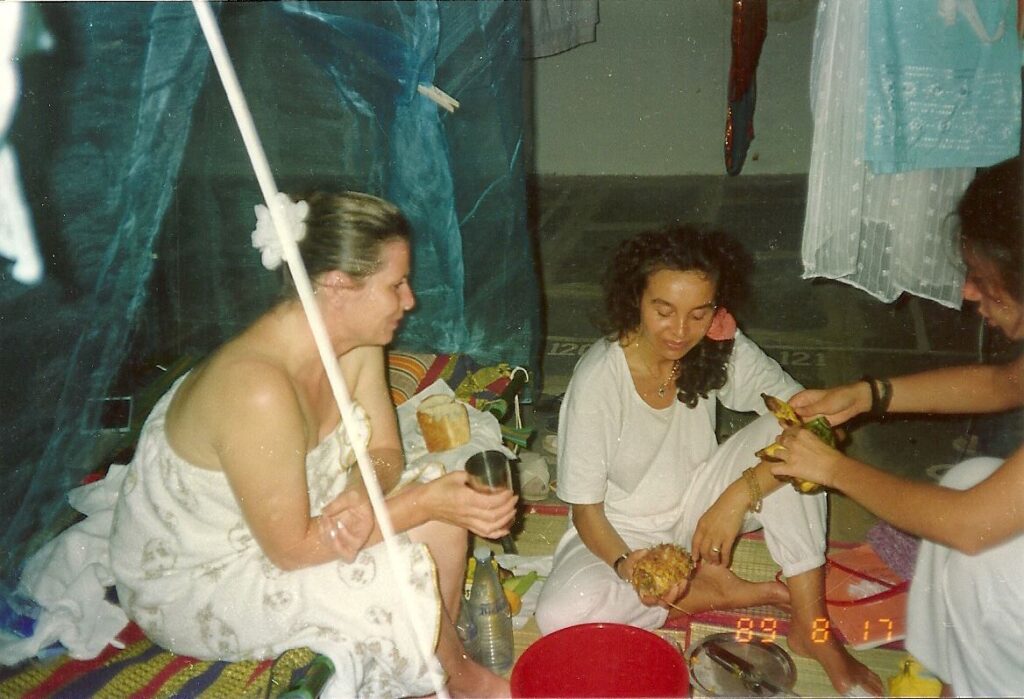
American Dr Steven Angel October 1989
Dr Steve Angel writes in Mystic Souls: Nineteen Remarkable People Tell Their Stories by Lyn Halper PhD – Sai Baba appeared to me in a dream before the visit and told me that I had a connection to him and it was prior to this lifetime. It was the clarity of the dream that gave me the feeling that I was being summoned. Meeting Sai Baba; This trip was in October of 1989 and I had two interviews with Sai Baba. One interview was at the beginning of the trip when we had just finished the conference and the other just before I left India.
Dr. Steven Angel (d. 2017) was a Chiropractor & Sound Healer from New York. He was a child prodigy on the drums. He performed with the great Buddy Rich when he was aged 6. At the age of 12, he was on tour playing in front of crowds up to 25,000 people and at 16 he recorded with Jimi Hendrix. His relationship with rhythm led him to the work using rhythm to connect education, mental health, physics, eastern philosophy, neuroscience and music.
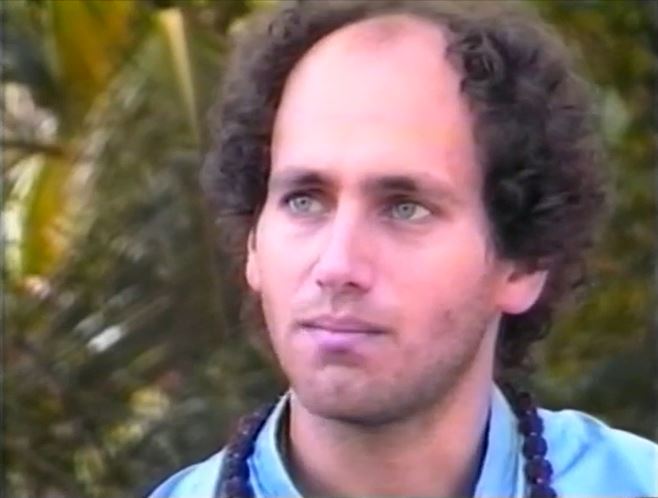
Americans Dr Vernon Martin Sylvest and Anne Crawford Sylvest 1989
The Sylvest’s arrive in 1989, stay a few weeks, and make a subsequent trip in 1993. This is recounted in The End of Fear; The Path to Freedom with The Fomula by Vernon Sylvest and published in 2012. In the book, Dr Sylvest offers a simple, fresh perspective for understanding the cause of emotional distress and illness and the dynamics of healing. He has bridged the gaps separating medicine, psychology and mysticism for the reader, making it possible to bring all problems to solution.
Vernon and Anne ran the Healing Waters Lodge, a holistic retreat centre, in Richmond, Virginia.
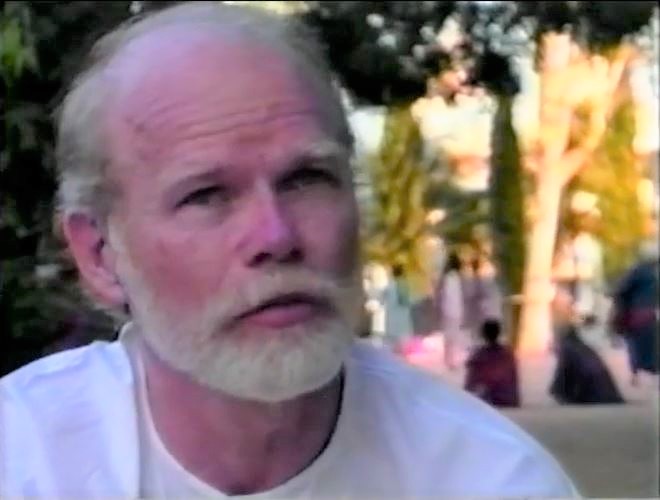
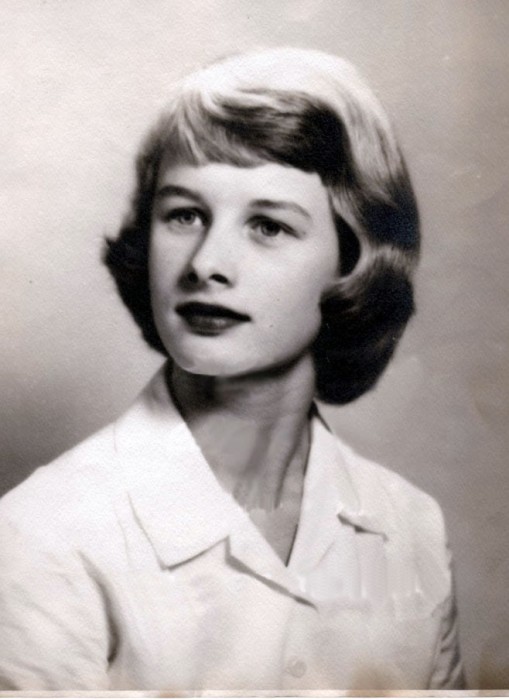
American John Prendergast
John J. Prendergast Ph.D is the author of The Deep Heart (2019) and In Touch (2015). He is a retired adjunct professor of psychology and a soon-to-retire psychotherapist in private practice in the Bay Area. Inspired by a leading Indian guru of non-dualism, he has studied extensively with spiritual masters including Jean Klein, a master of Advaita Vendanta and Tantric Shaivism, and Adyashanti, a trained Zen Buddhist teacher.
From Sathyam Sivam Sundaram – Part IV by N. Kasturi
John Prendergast of the California Institute of Asian Studies has written an article Swami Dreams, focussing more on their instructional value and less on the paranormal processes. He says,
“The overall aspect of these dream-experiences with Sai Baba is difficult to gauge, but my own relationship with Baba has deepened immeasurably. I would characterise the primary influence as being the opening of my spiritual heart, of beginning to balance the intellect with the values of love and compassion. Between the spring of 1977 and 1979, Sai Baba has appeared to me during the dream-state nearly forty times. These have profoundly affected my spiritual awakening and the quality of my relationship with Him. Sai Baba has said that it is impossible to see Him in dreams without His willing it. My own experience of active guidance, chastisement, healing and ecstatic states conferred by Him during the dream-state tends to confirm this. My relationship with Sai Baba is, in fact, more intimate in the dream than in the waking state… As the dream-state relationship grows and deepens, my own inner strength and confidence grows and manifests itself in the waking state. In addition to this effect of the dream-reality nurturing and supporting the waking reality, the distinction between the two realities has softened. Increasingly the two blend, so that dream-images rise in the waking mind like distant clouds.”
John had a dream involving Nisargadatta Maharaj, which was “remarkable because I didn’t know who he was.” Although he has a somewhat “skeptical doubting quality to my mind,” he was open because the dream “had such a numinous sand powerful quality to it” and the sage knew details of his life. In the past, when having big openings, “my mind would come in and say, are you fooling yourself? You know, are you just wanting to think well of yourself or you think you’re further along than you are? And so, that skeptical attitude continued for some years.” But “in this case, it didn’t. For some reason the channel was open to receive that particular experience.”
Preeta Bansal writes in 2021 – In the dream, he found himself in a poor area in Mumbai standing outside of a simple apartment. He looked inside and there was a sage with luminous eyes. “And as soon as I looked into his eyes, I became lucid in the dream. I was aware of this was dream state, but the dream continued and there was a communication that happened.” Nisargadatta telepathically asked “can you be my translator? And I thought, ‘but I don’t know your language.’ … But he came out of his apartment, took my arm. And at the time I was studying with Sai Baba and he said, ‘I know you’re a student of Sai Baba, but you can spend some time with me.’”
After John woke up, he asked his housemate who had been to India about the sage that his housemate had visited in Bombay. And he said Nisargadatta and pulled out a picture, and John realised it was the same person. His housemate gave him the sage’s “very famous book of inner dialogue, mostly with Westerners. And it really had a profound effect. I was in a more devotional kind of practice and orientation at the time. And I remember reading one particular sentence, which was ‘the seeker is the sought.’ The one who is looking is what is being looked for. And something in me said, ‘yes, I know this is true.’ And there was a huge internal shift. That’s when self-inquiry began.” For two years, Nisargadatta’s writings became his “Bible” for two years.
And it turned out that Nisargadatta died a month after the dream.
Podcast interview – 73. Spiritually Oriented Psychotherapy: Interview with John Prendergast, PhD Part 1
https://www.owltail.com/people/hfnmh-john-prendergast/appearances
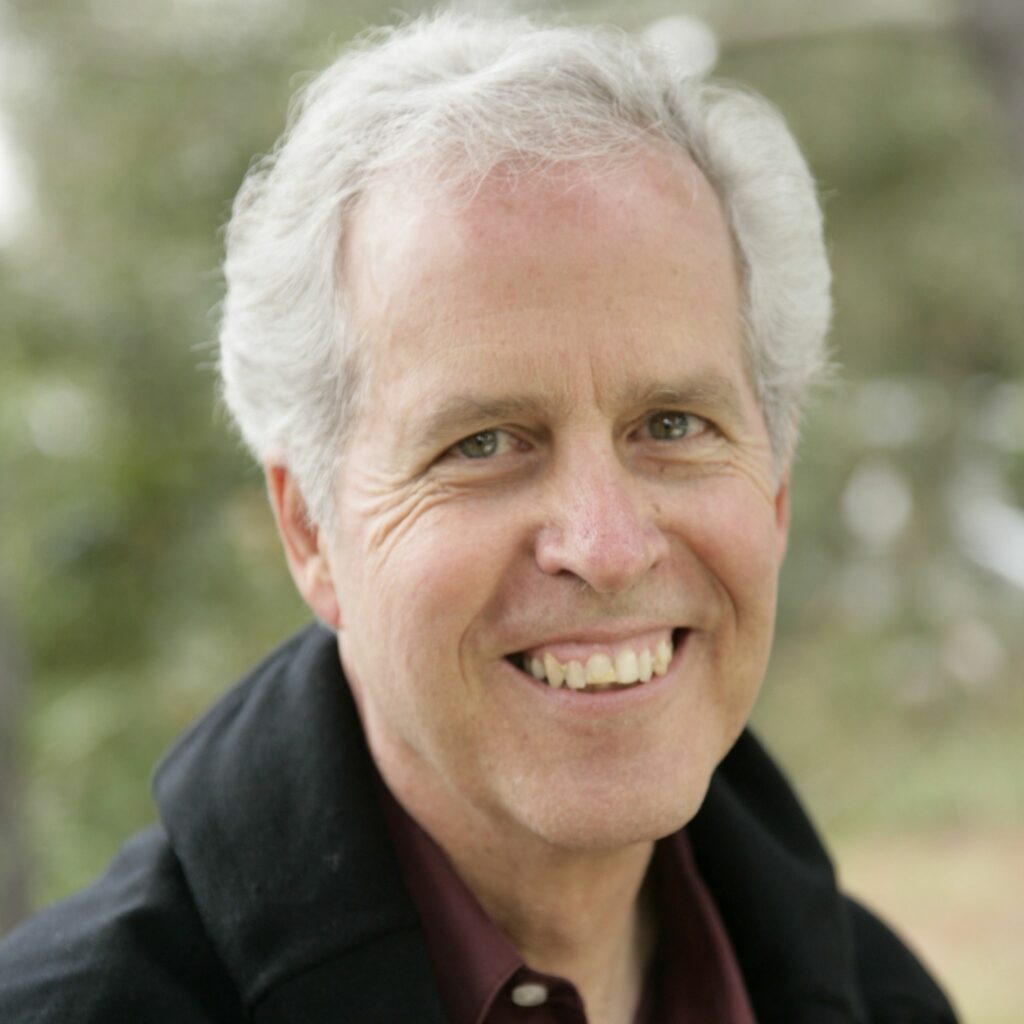
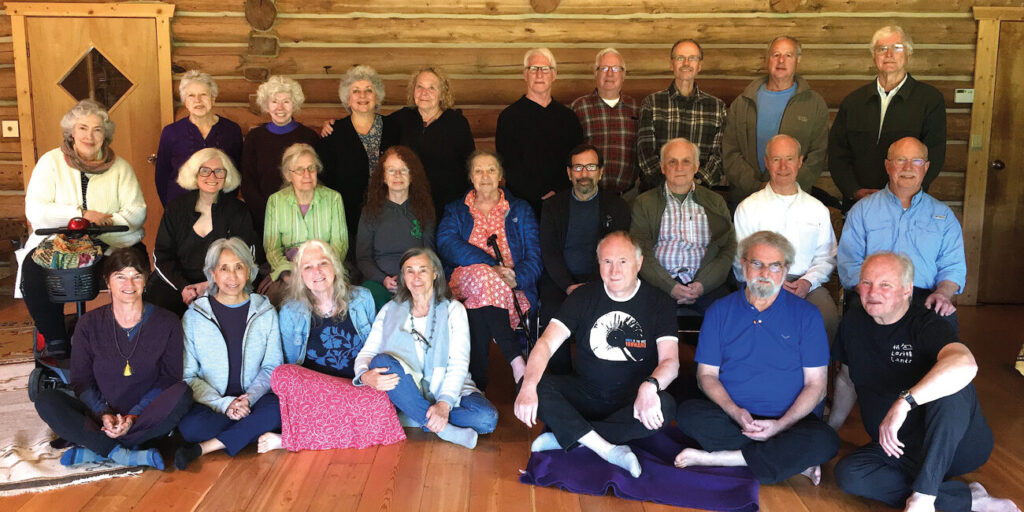
https://featheredpipe.com/wp-content/uploads/2020/03/Om-Magazine-Sai-Baba-Reunion-Feathered-Pipe.pdf
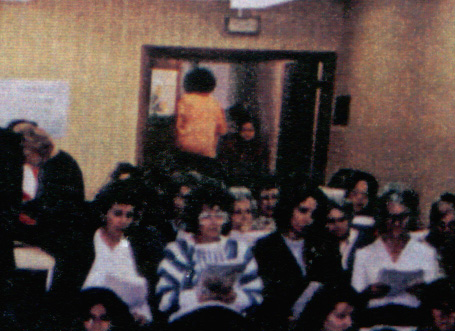
The Bombay Ananda Bhavan Hotel on Grant Road in Bangalore was used for many years by devotees of Sathya Sai Baba.